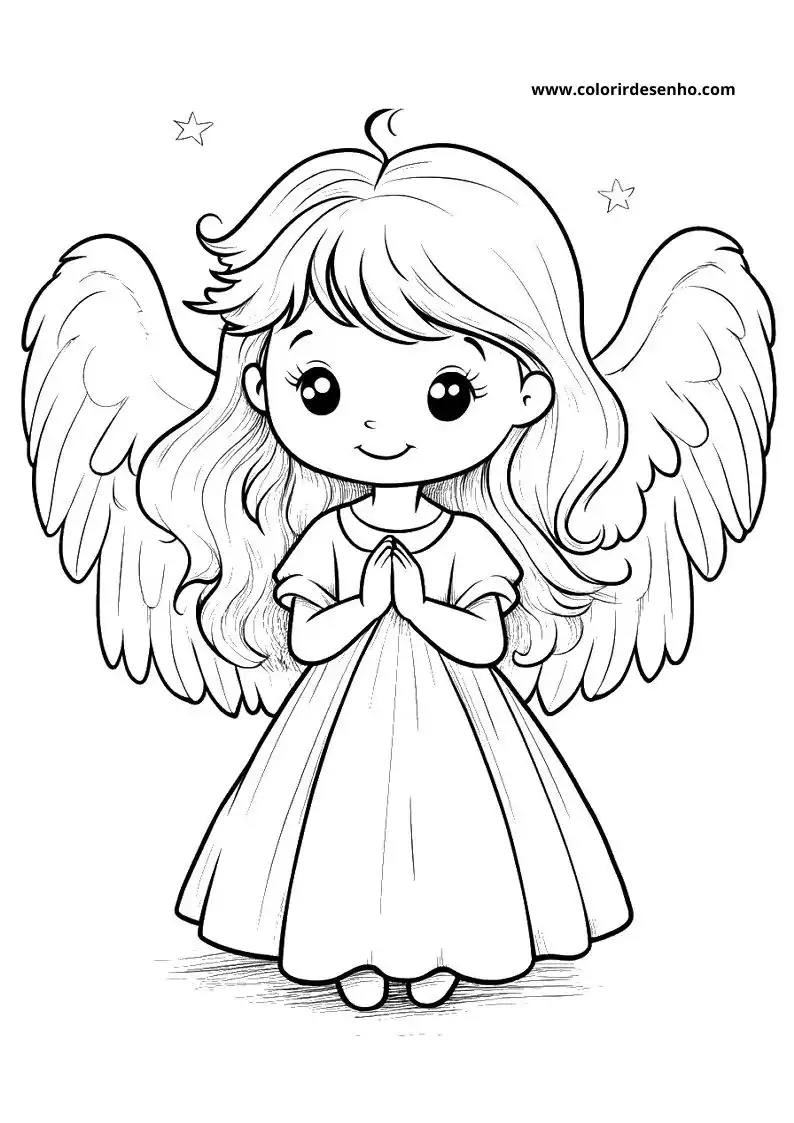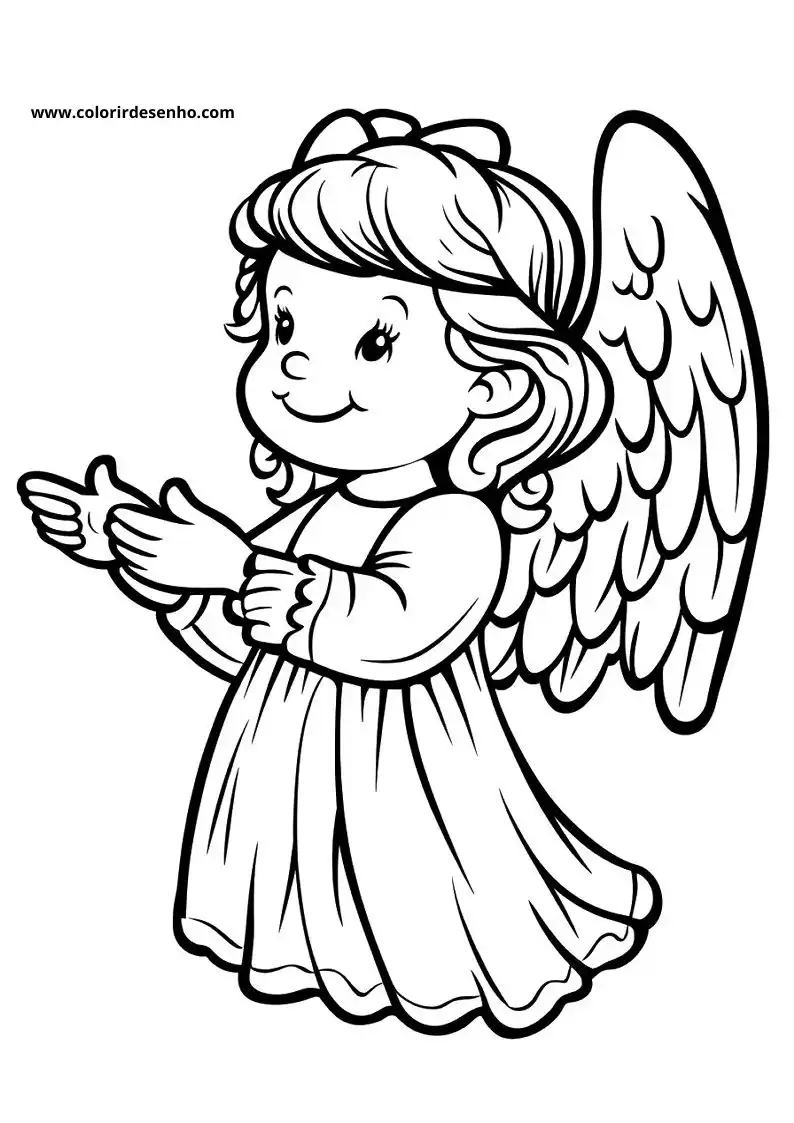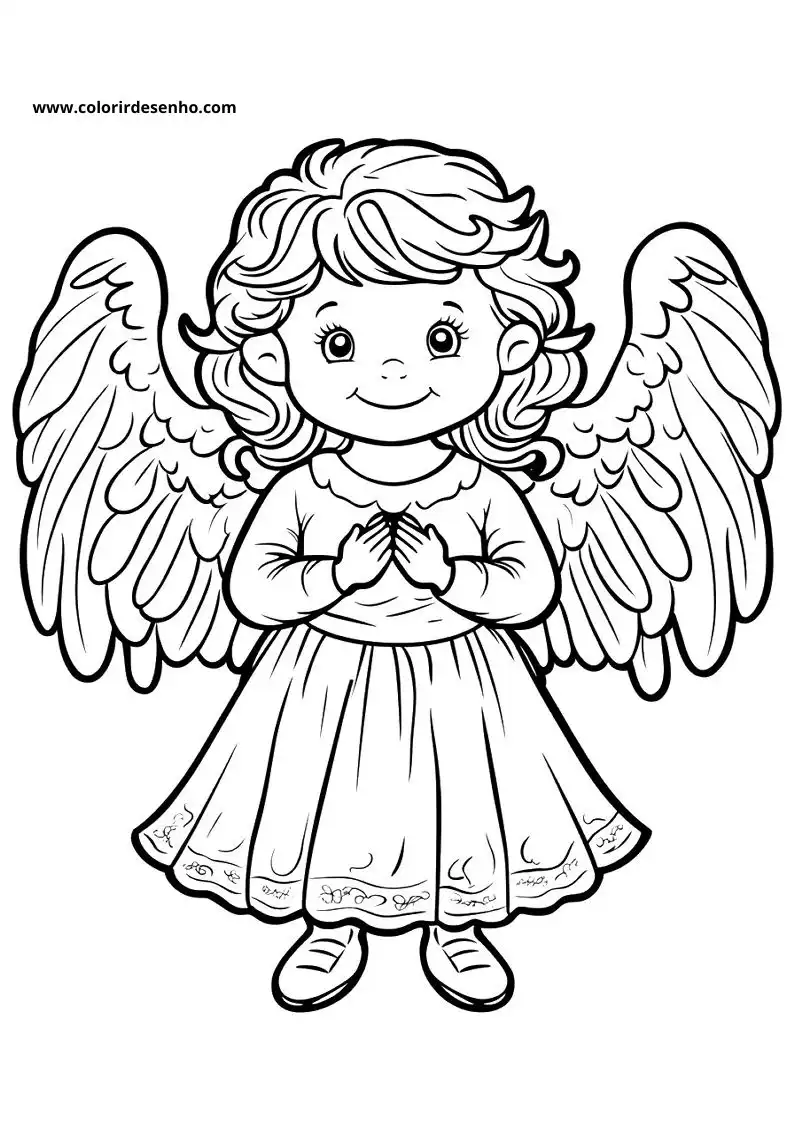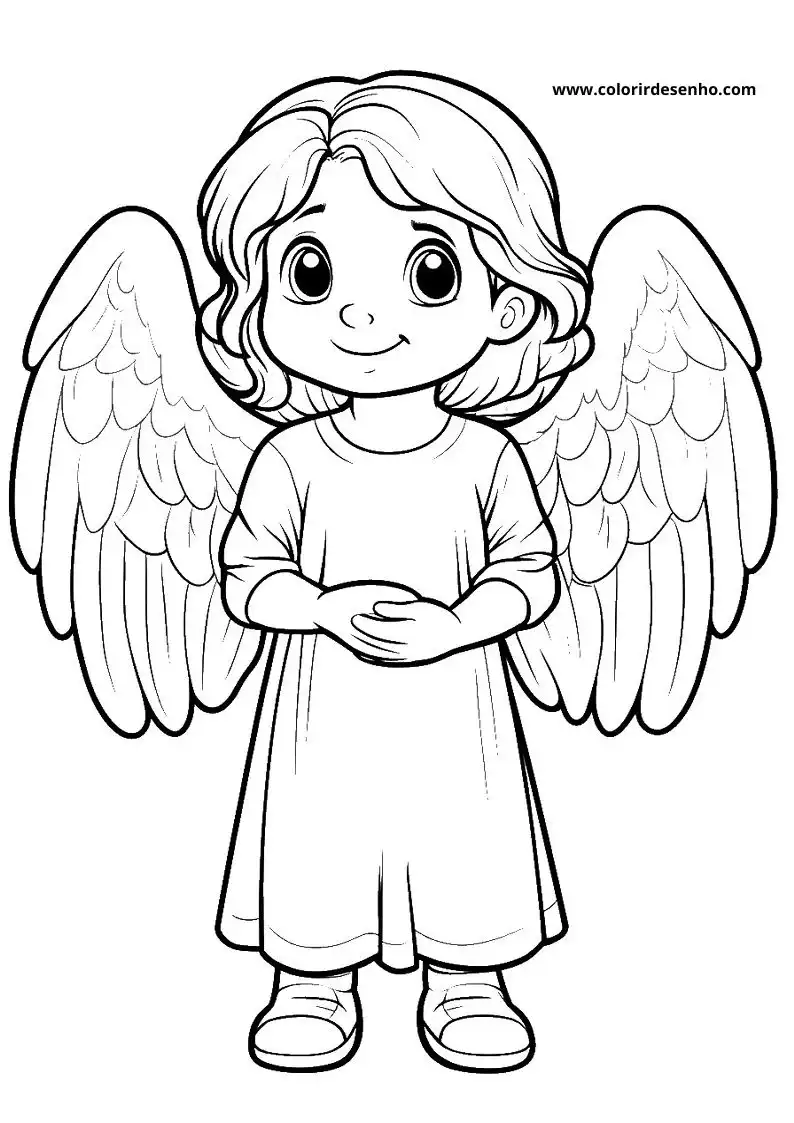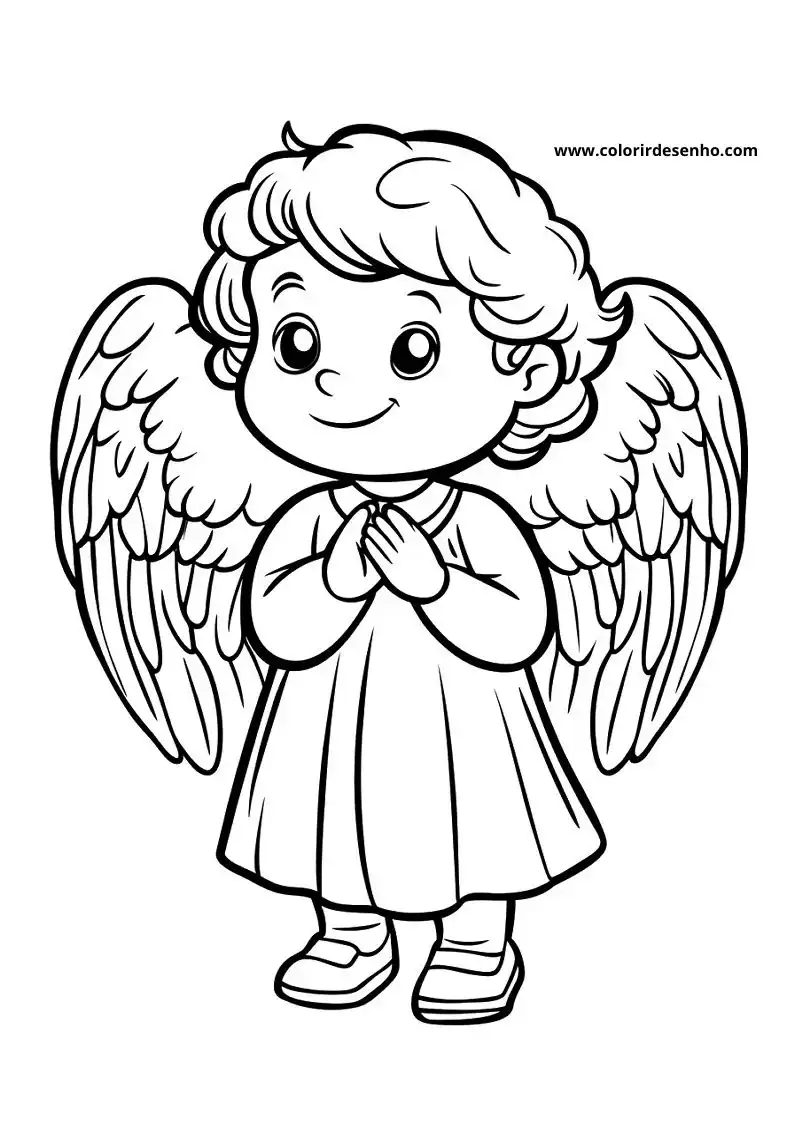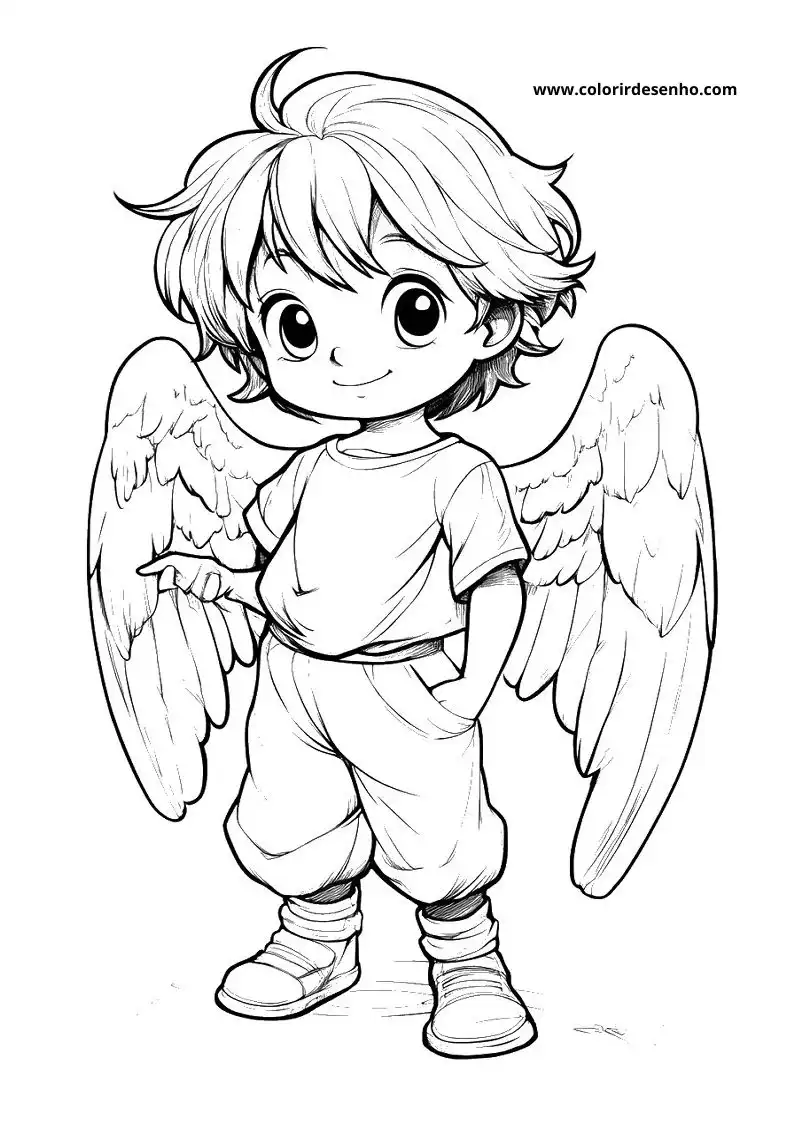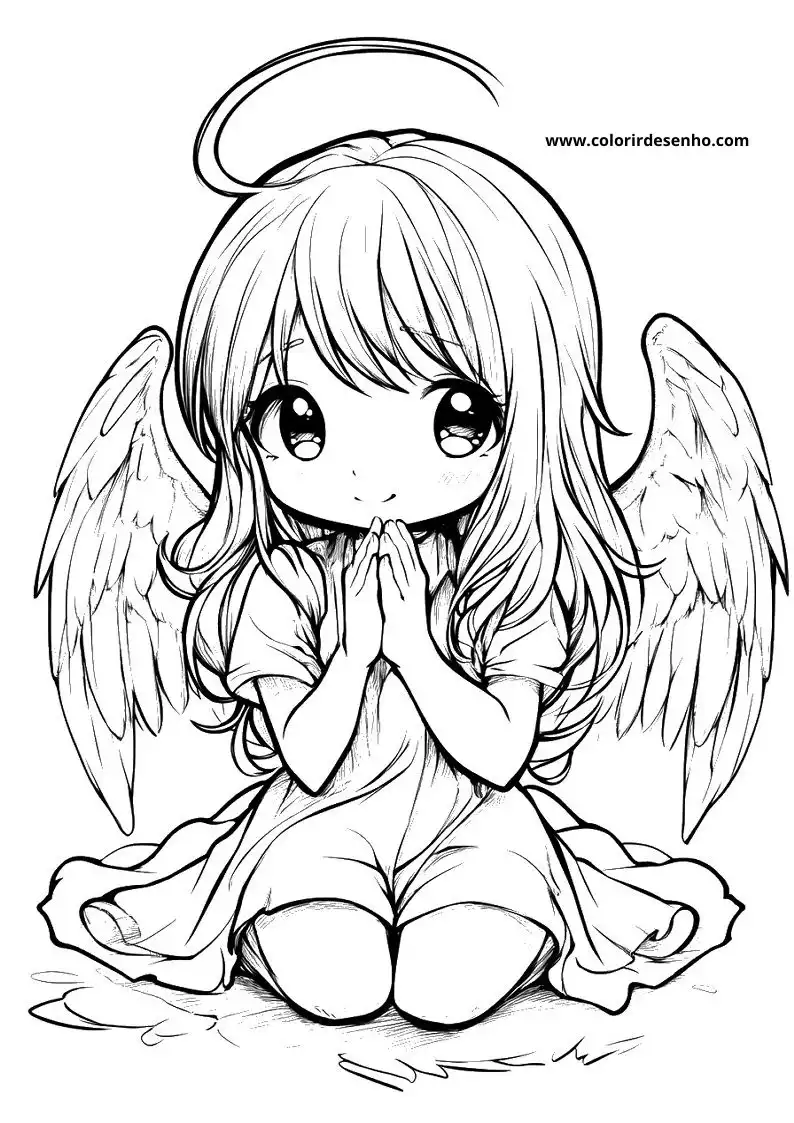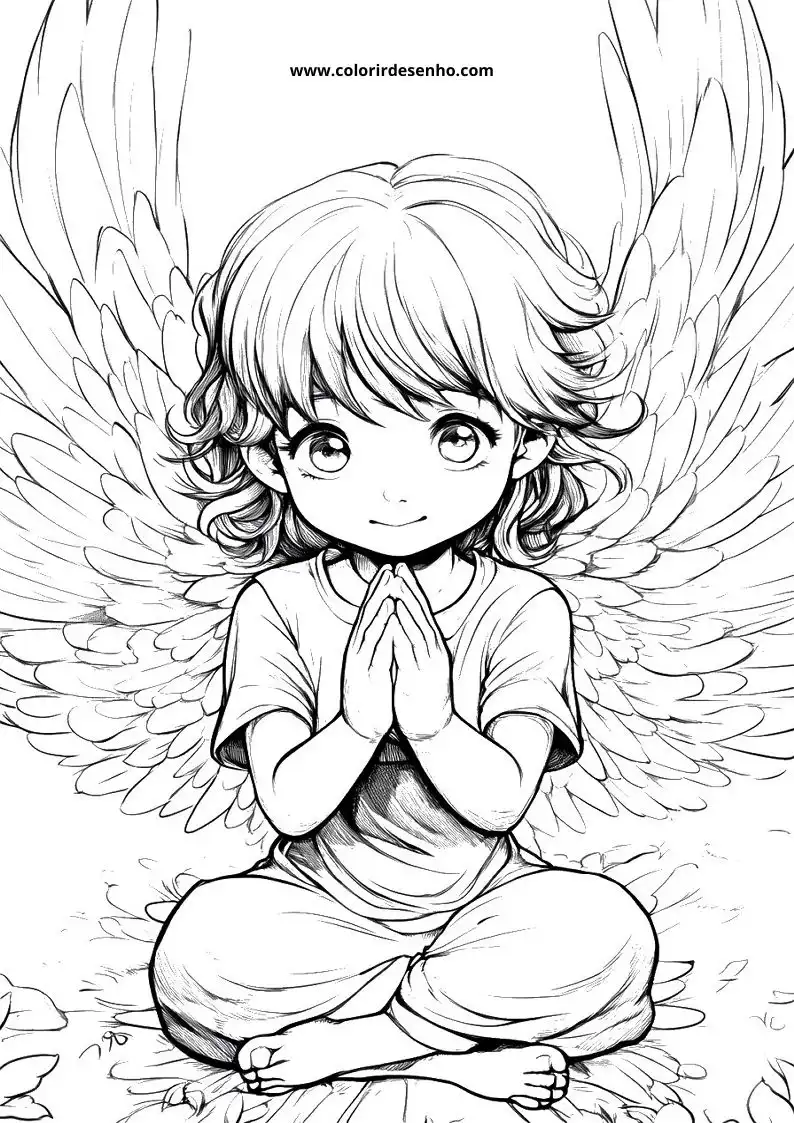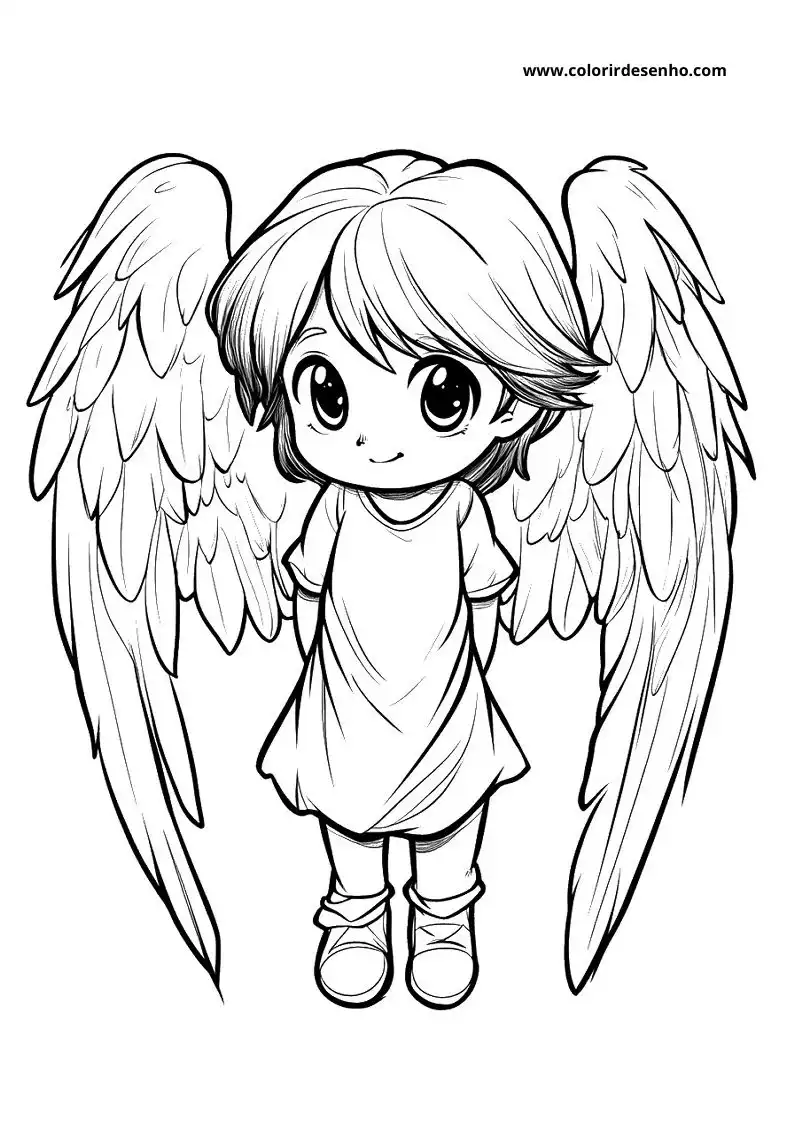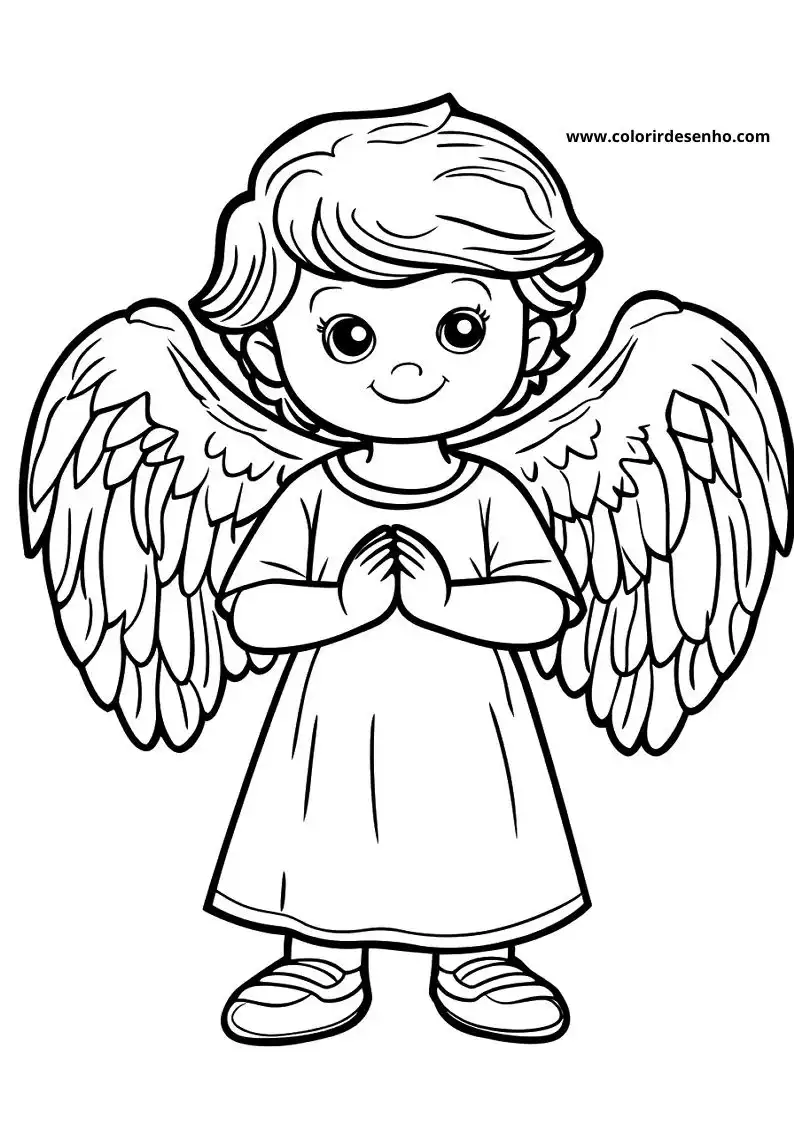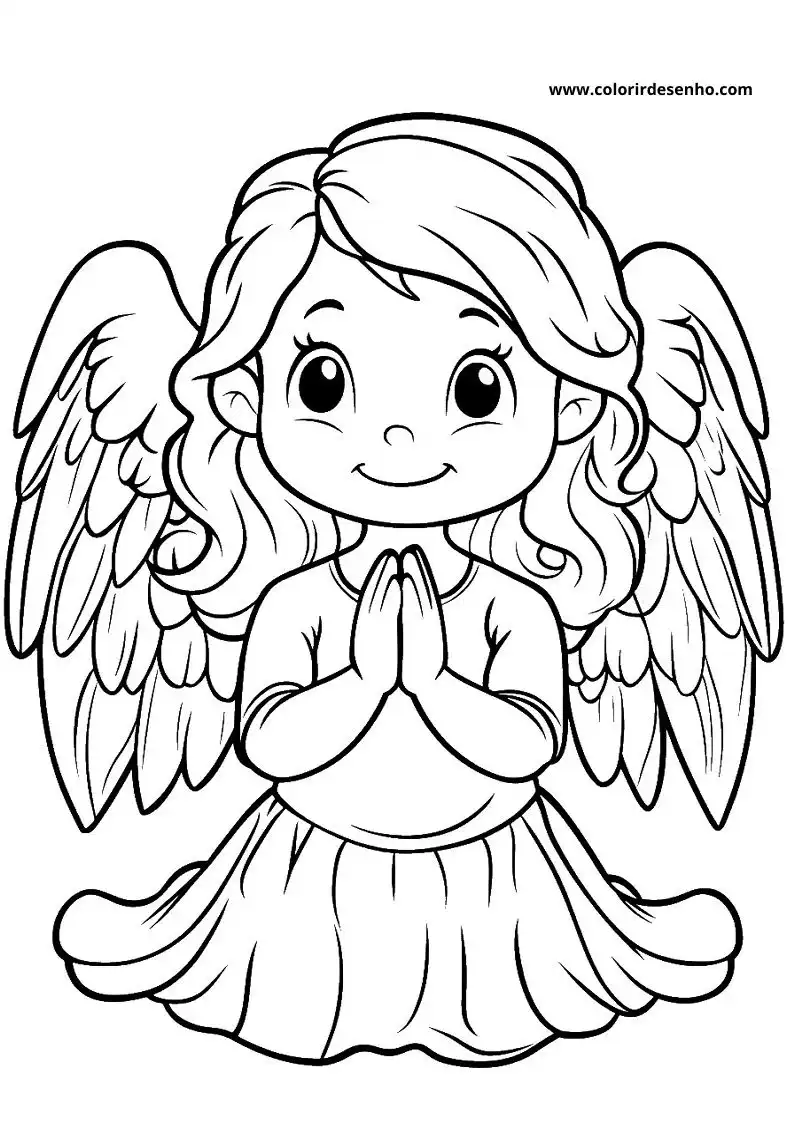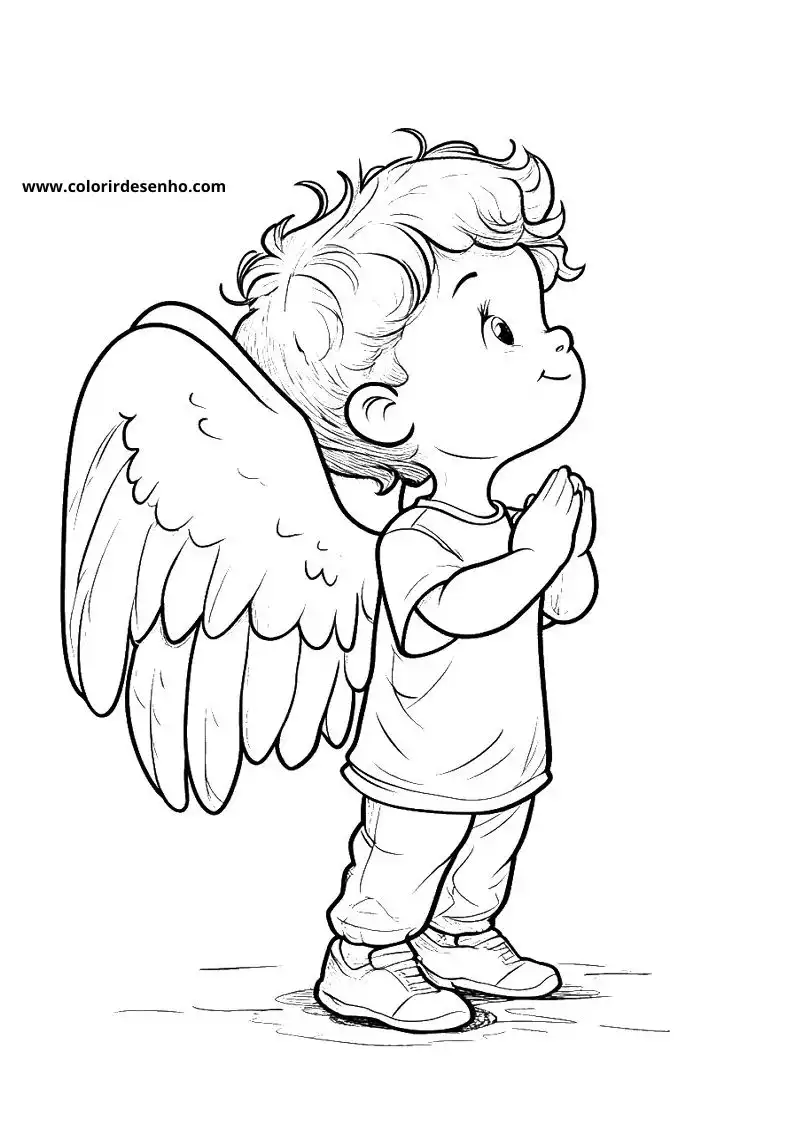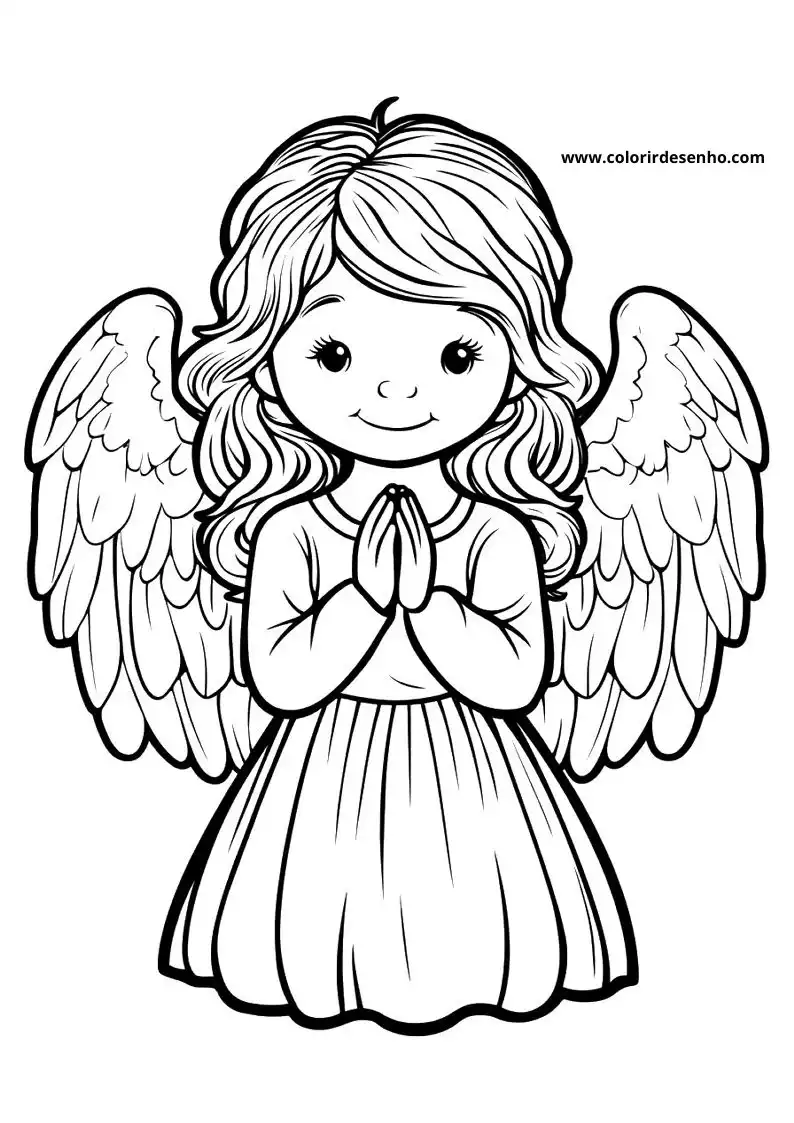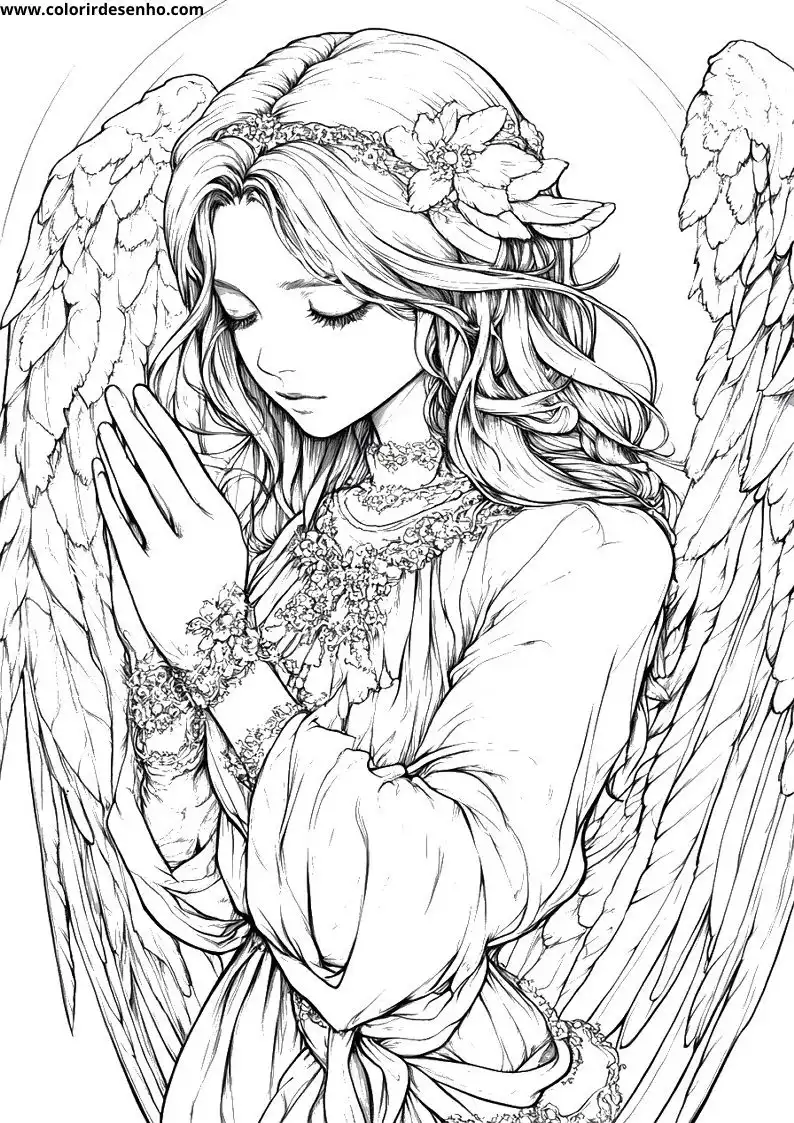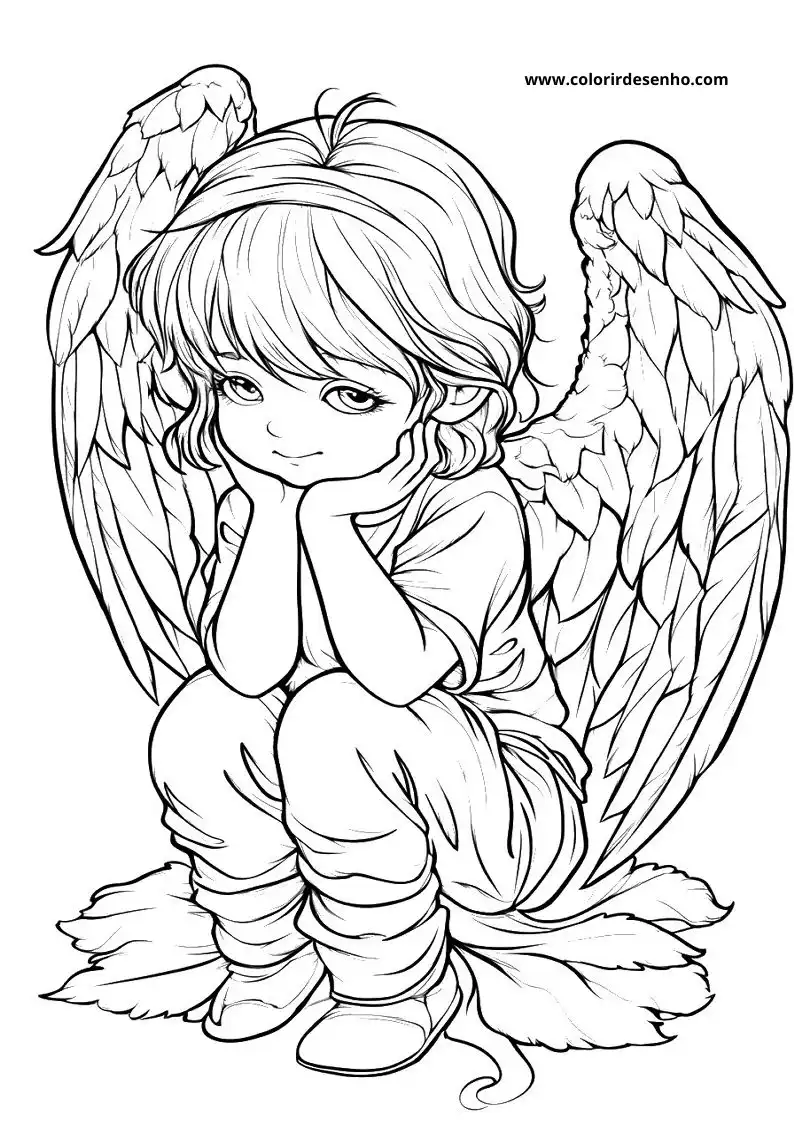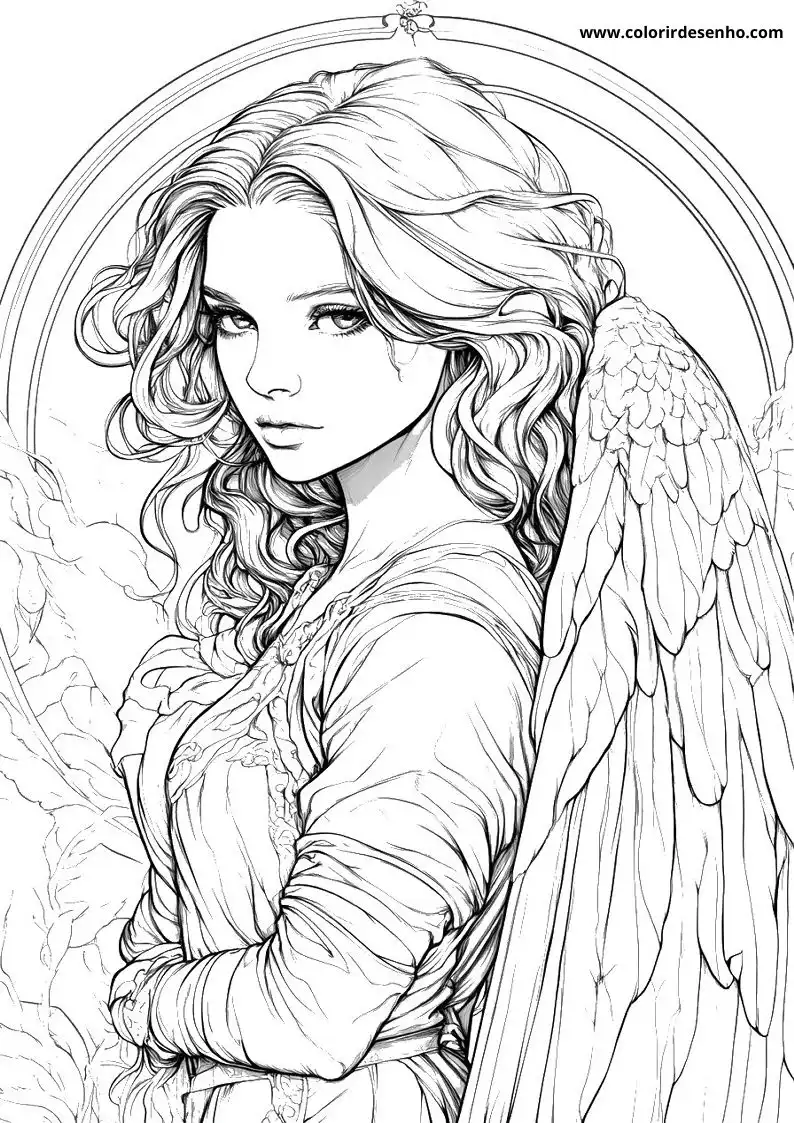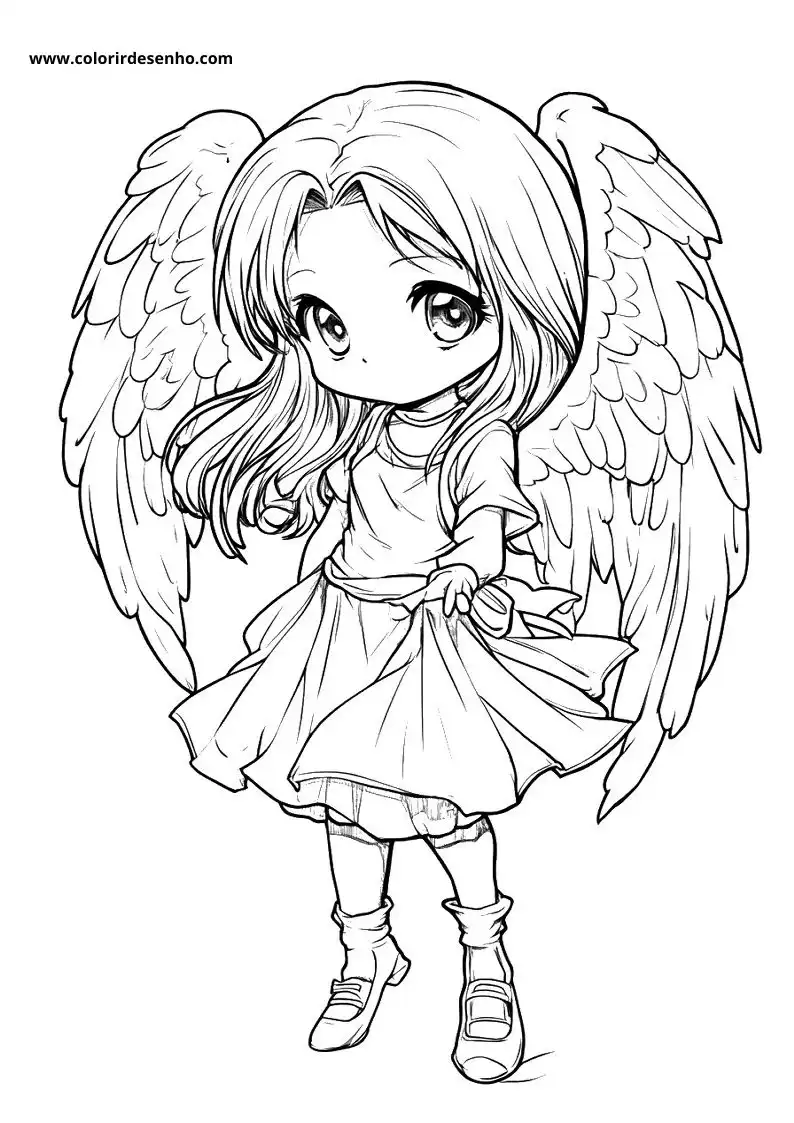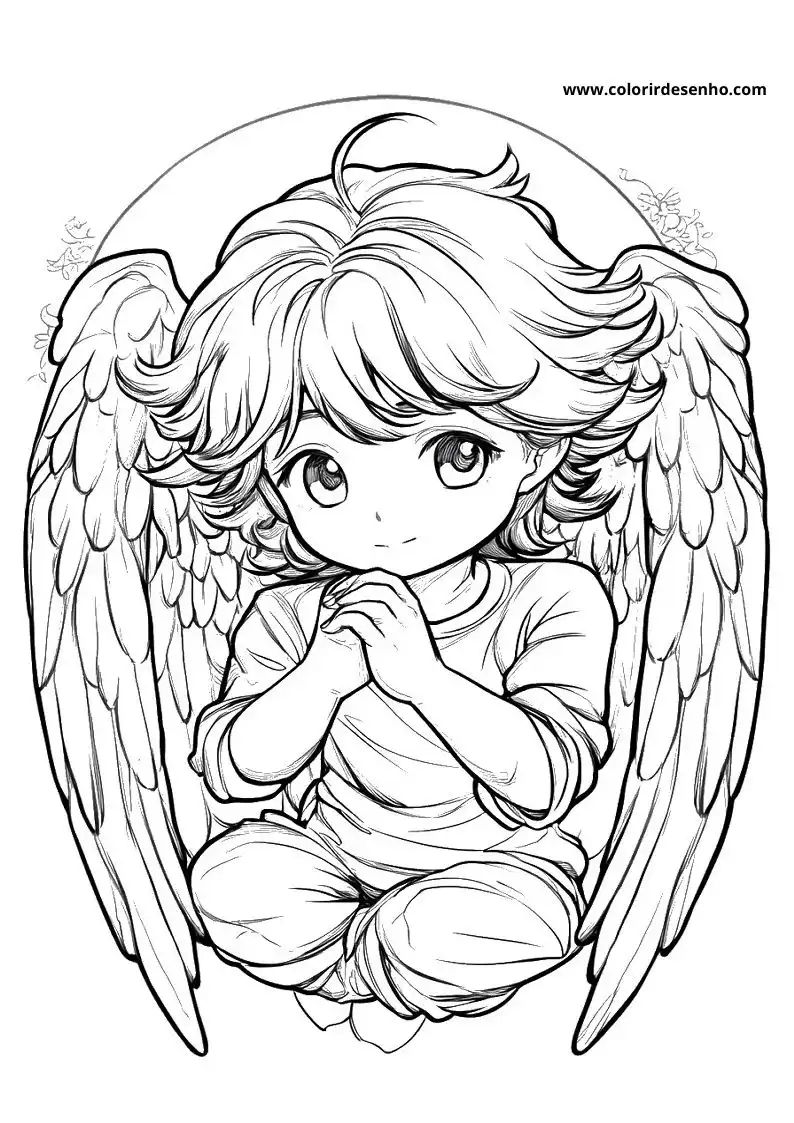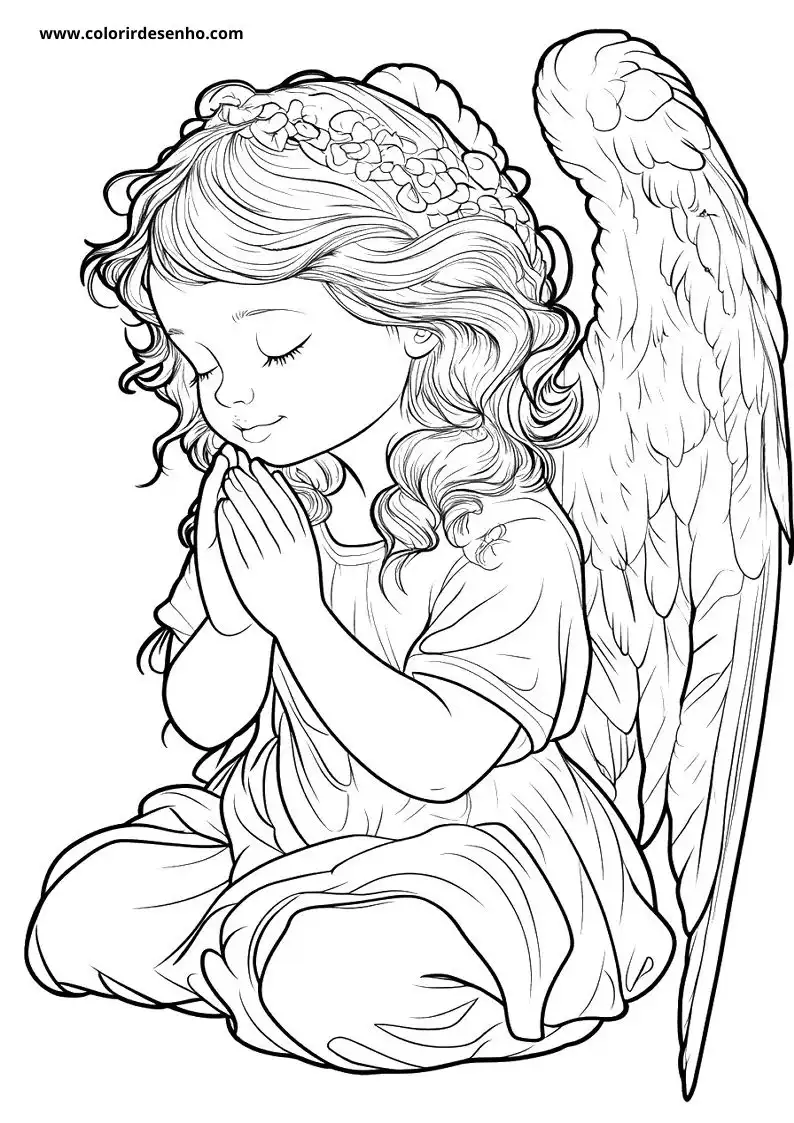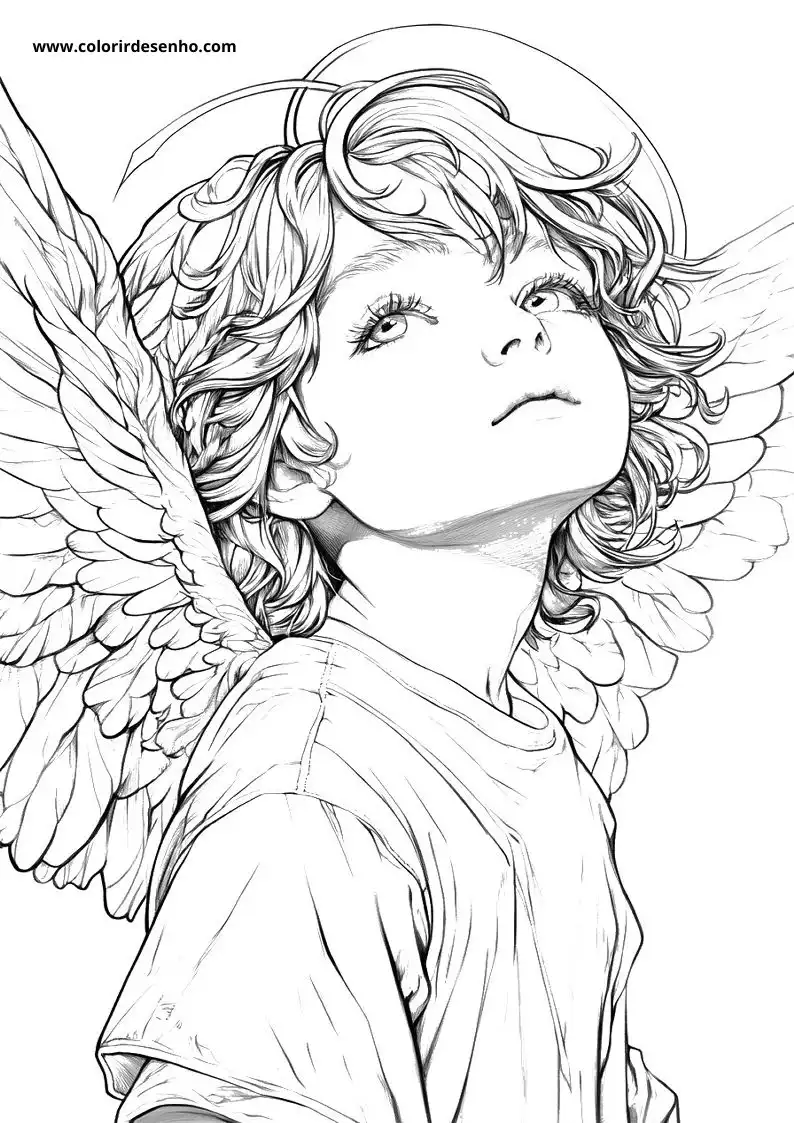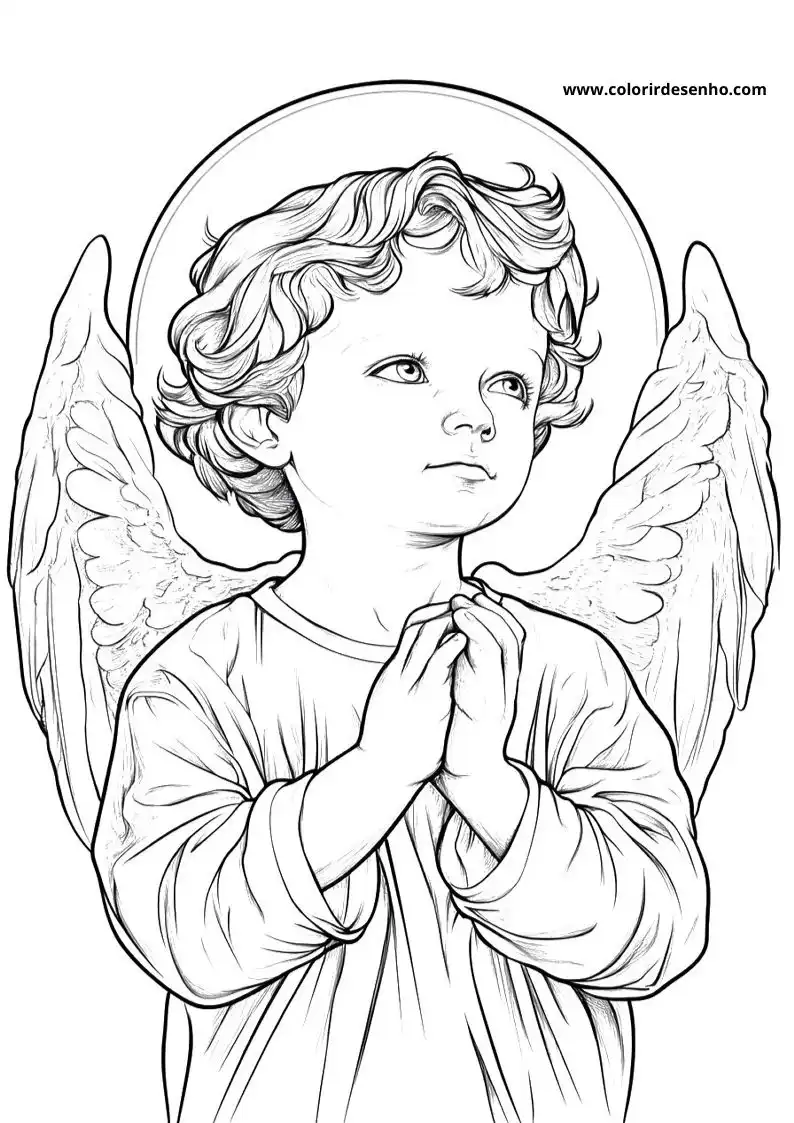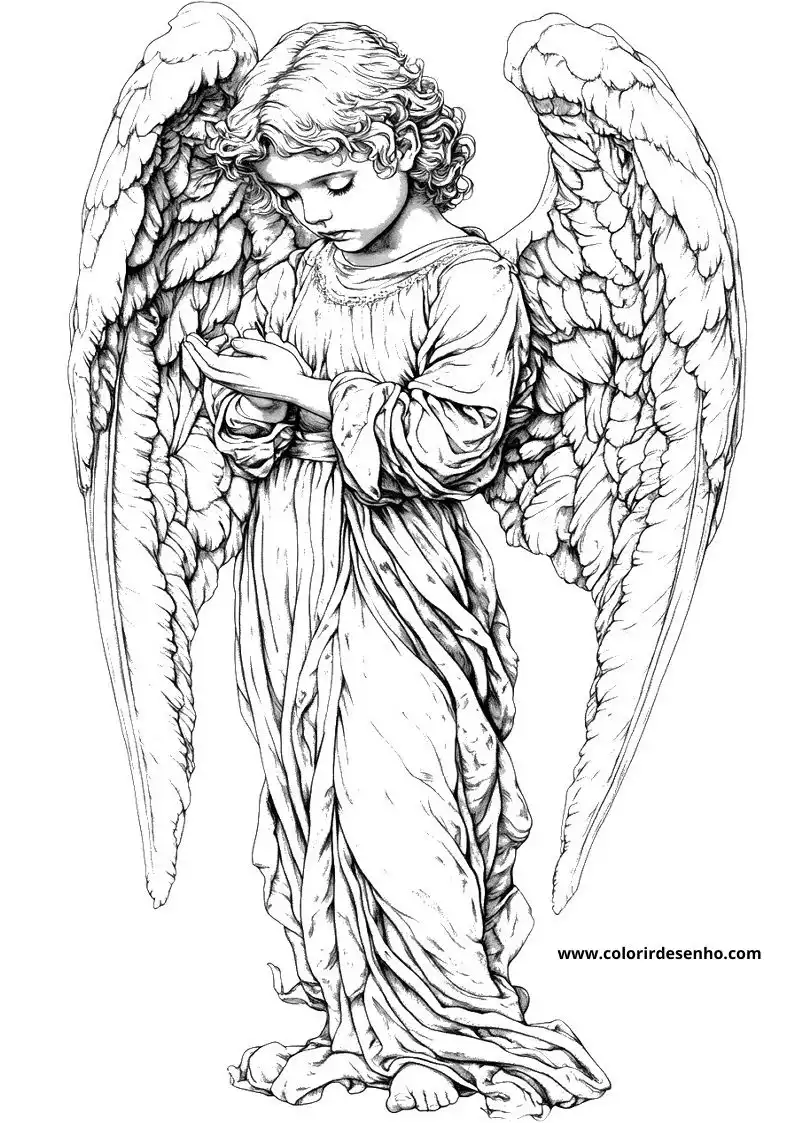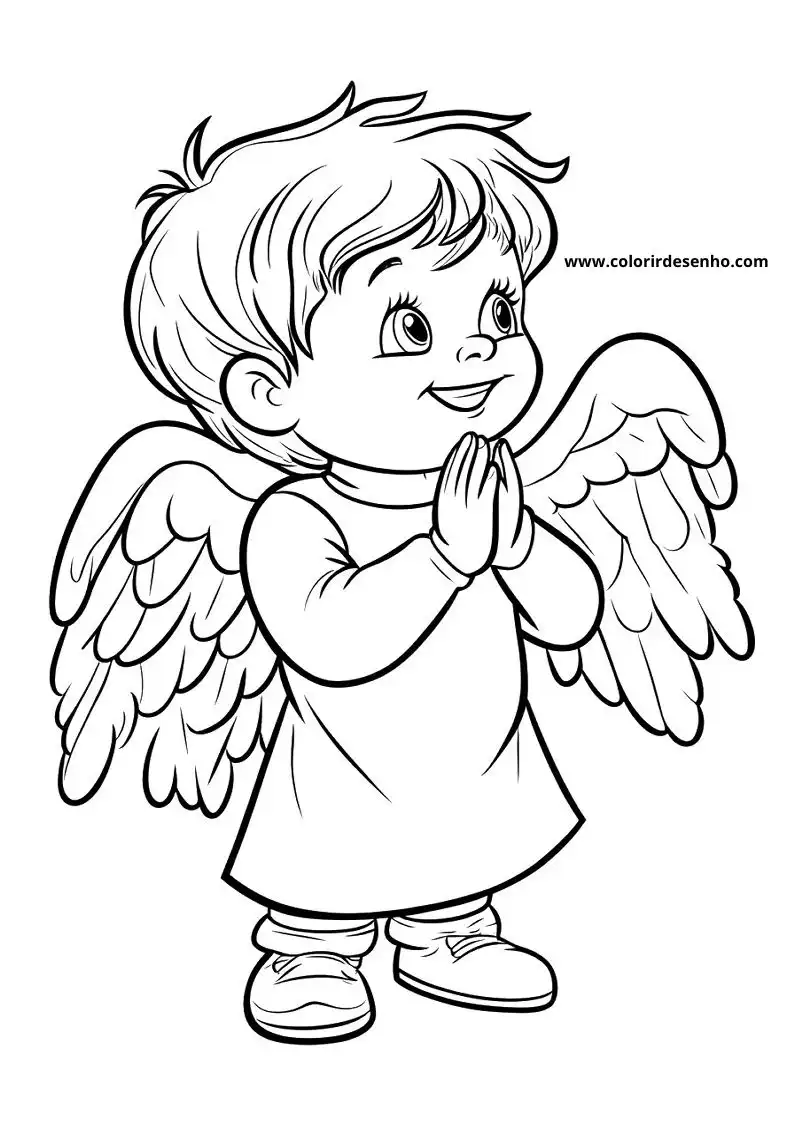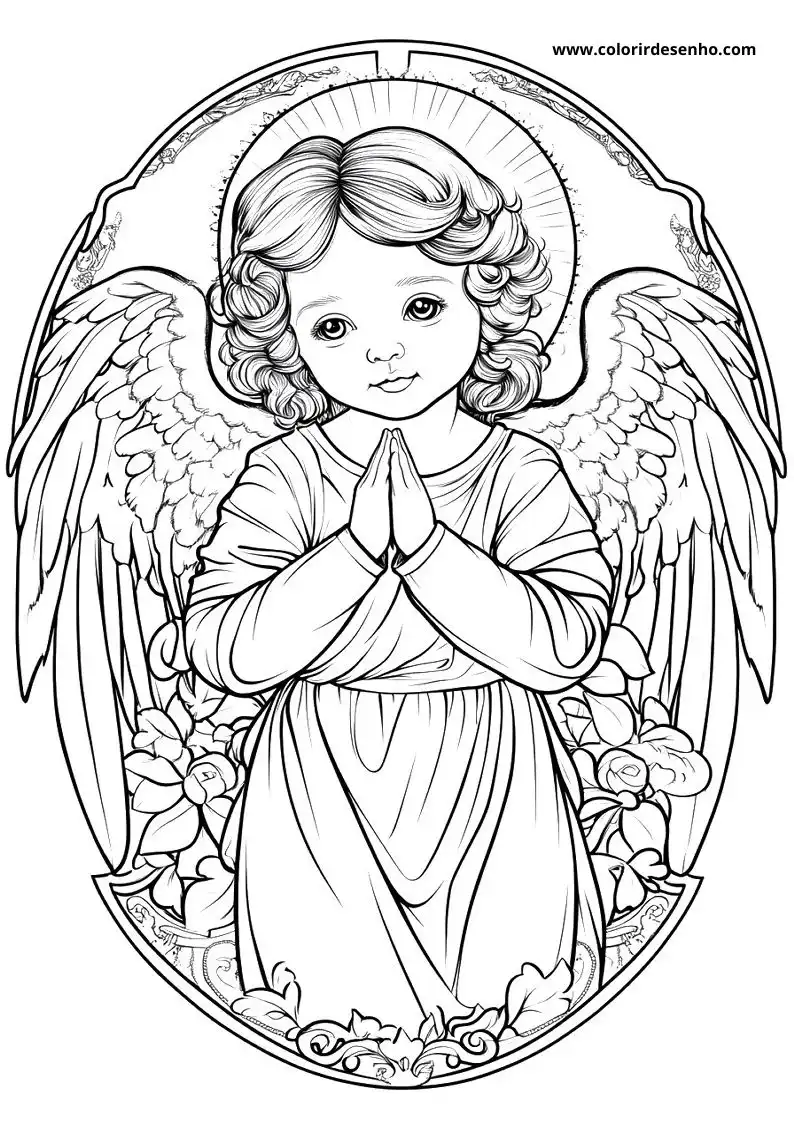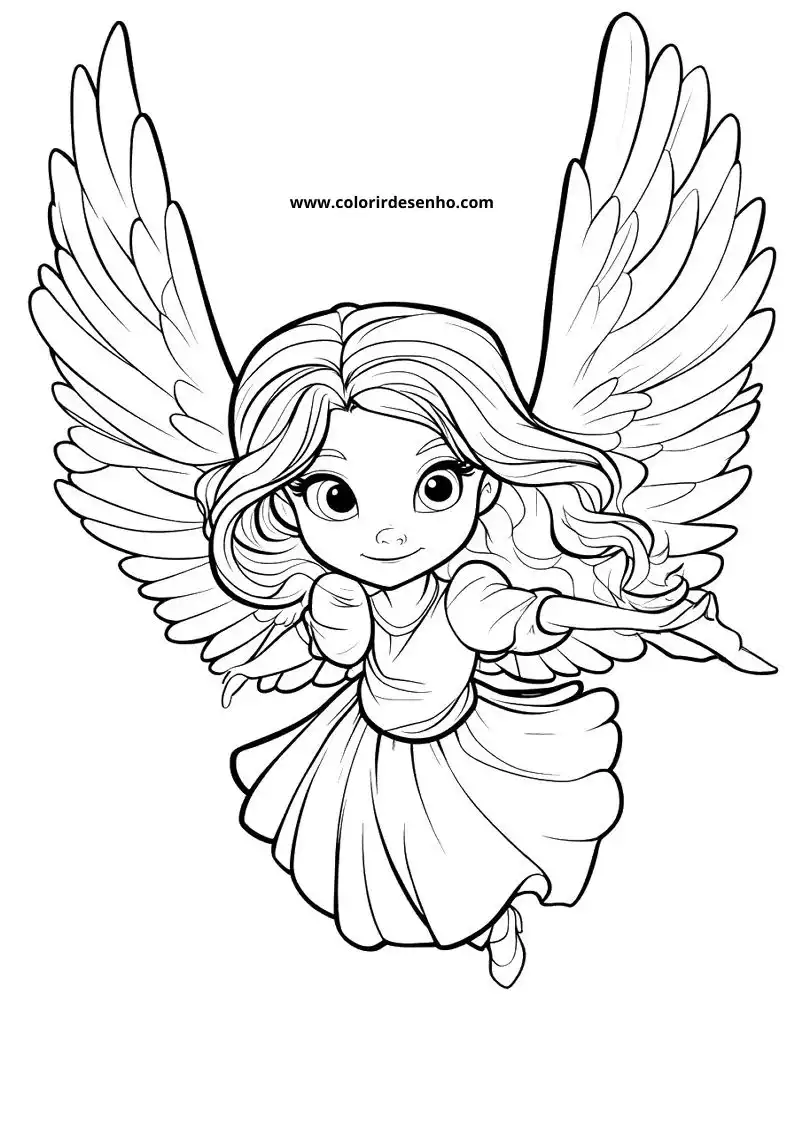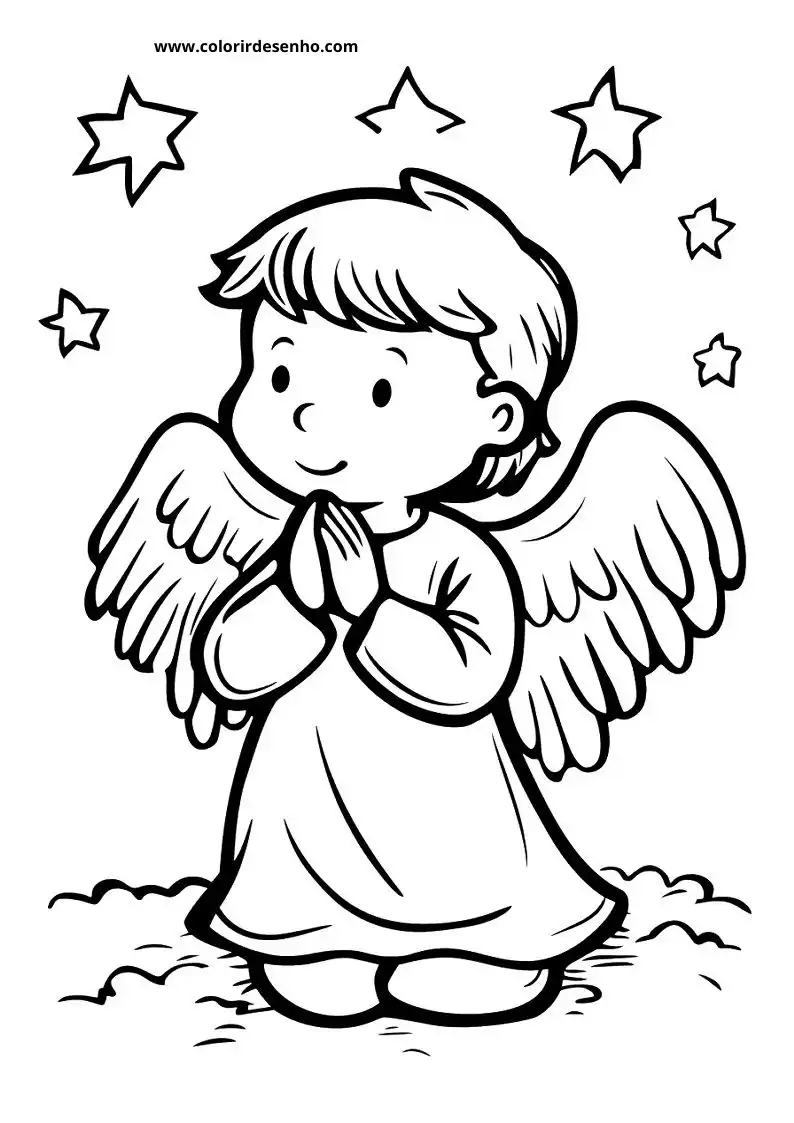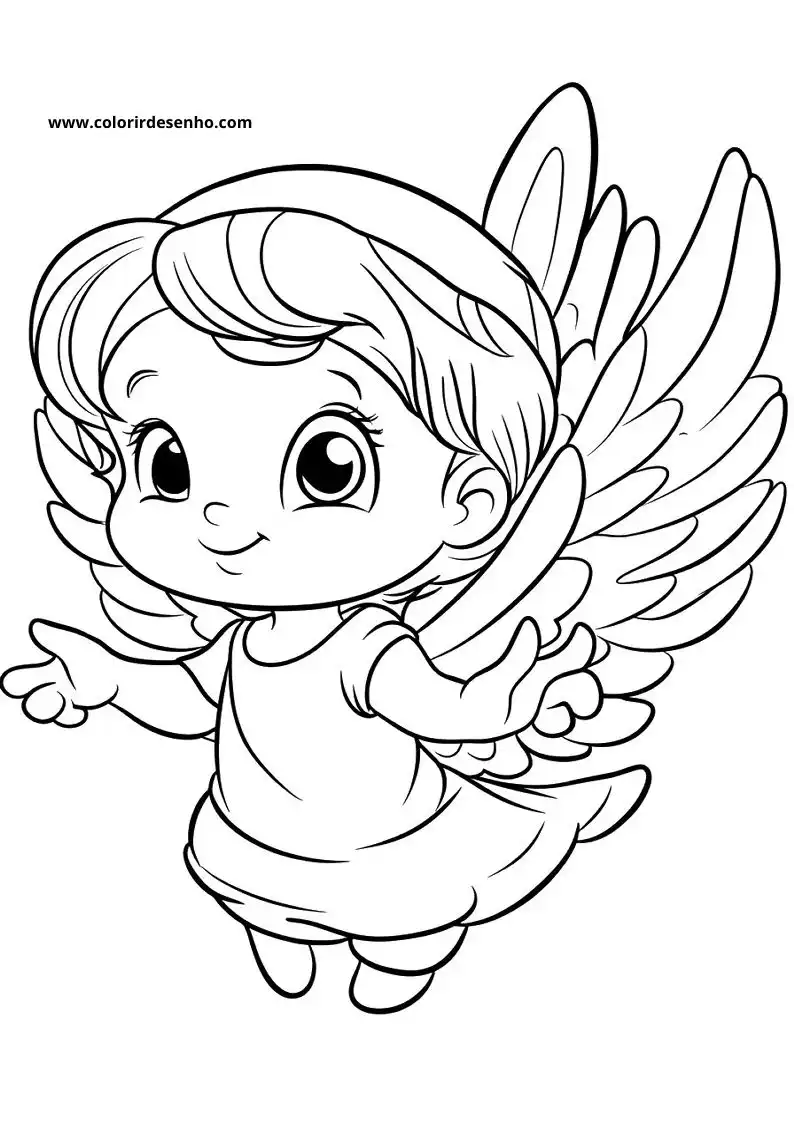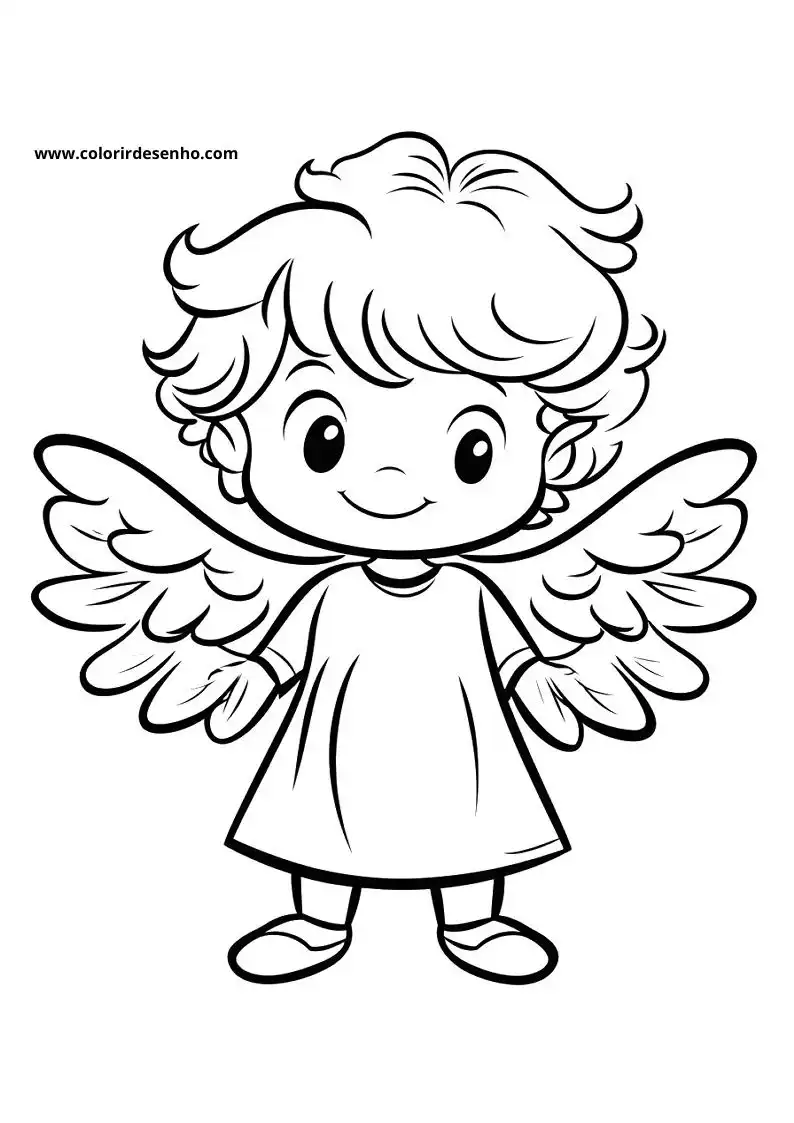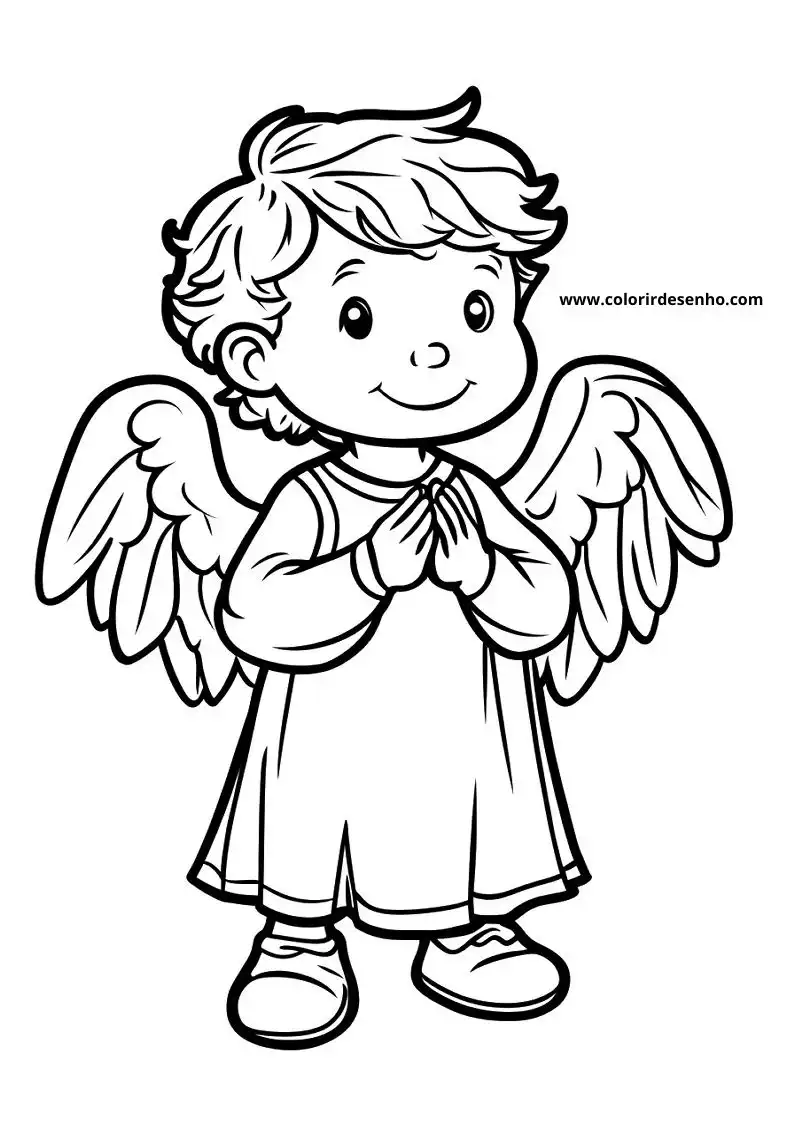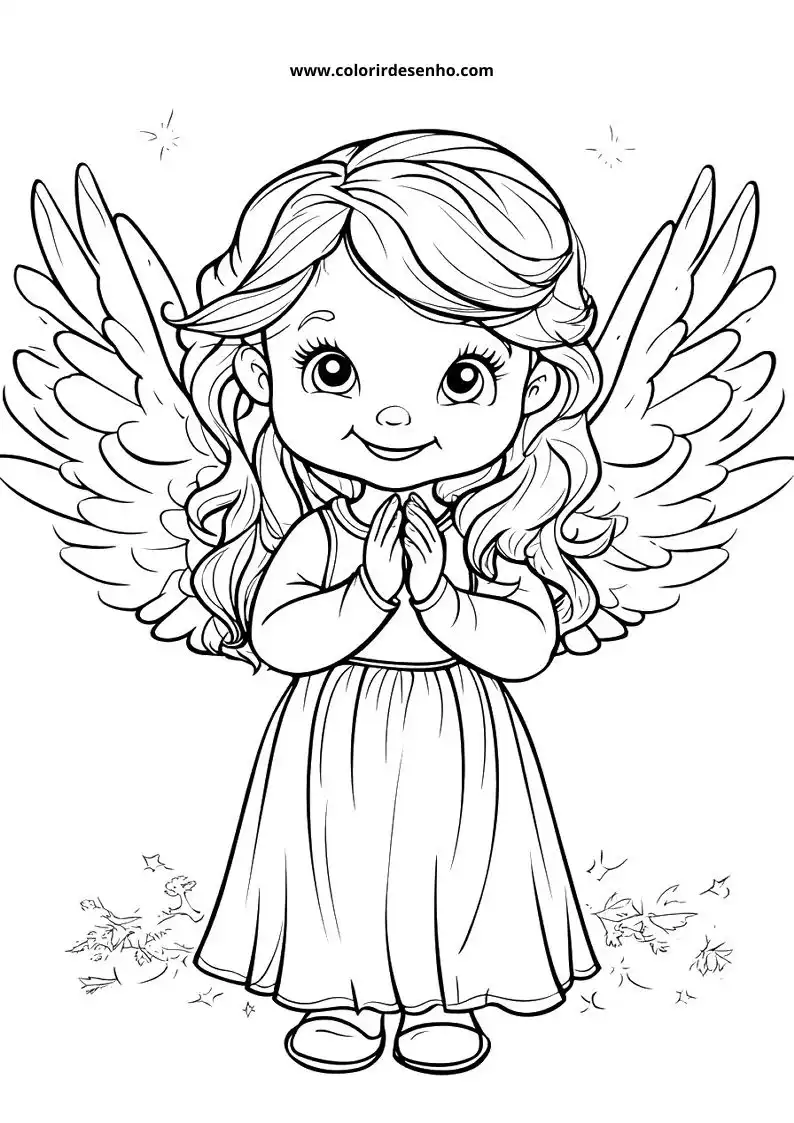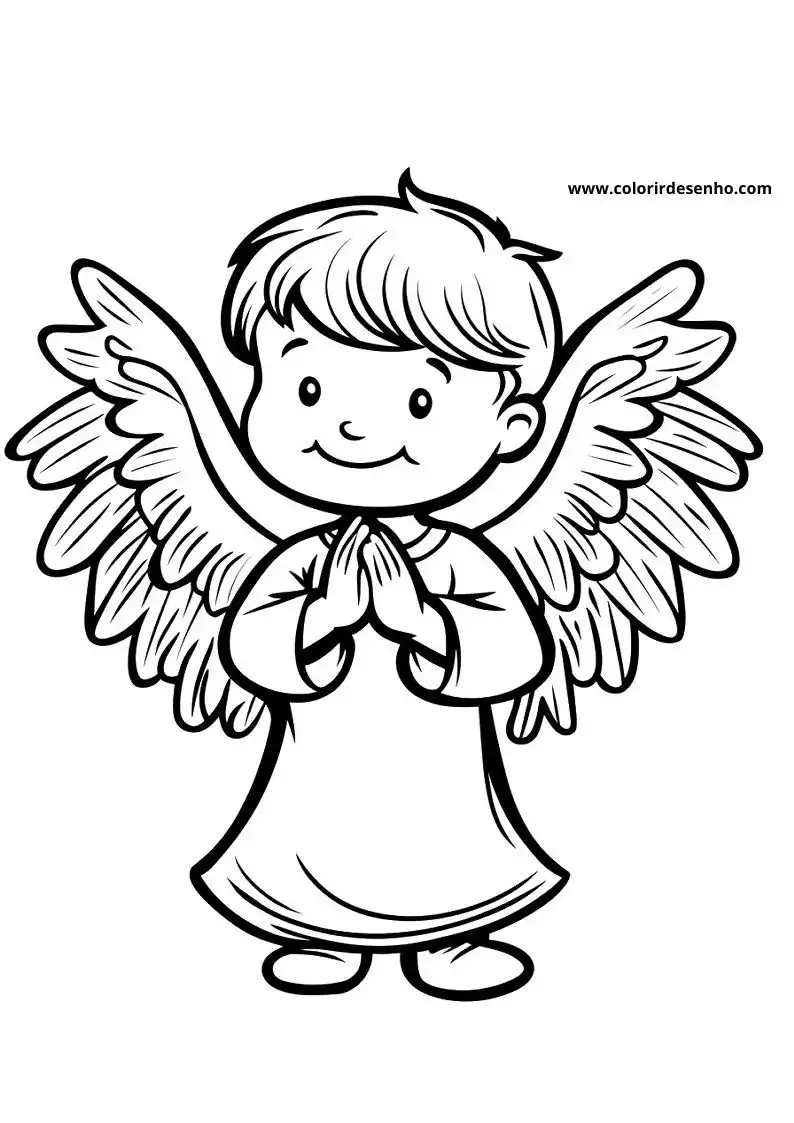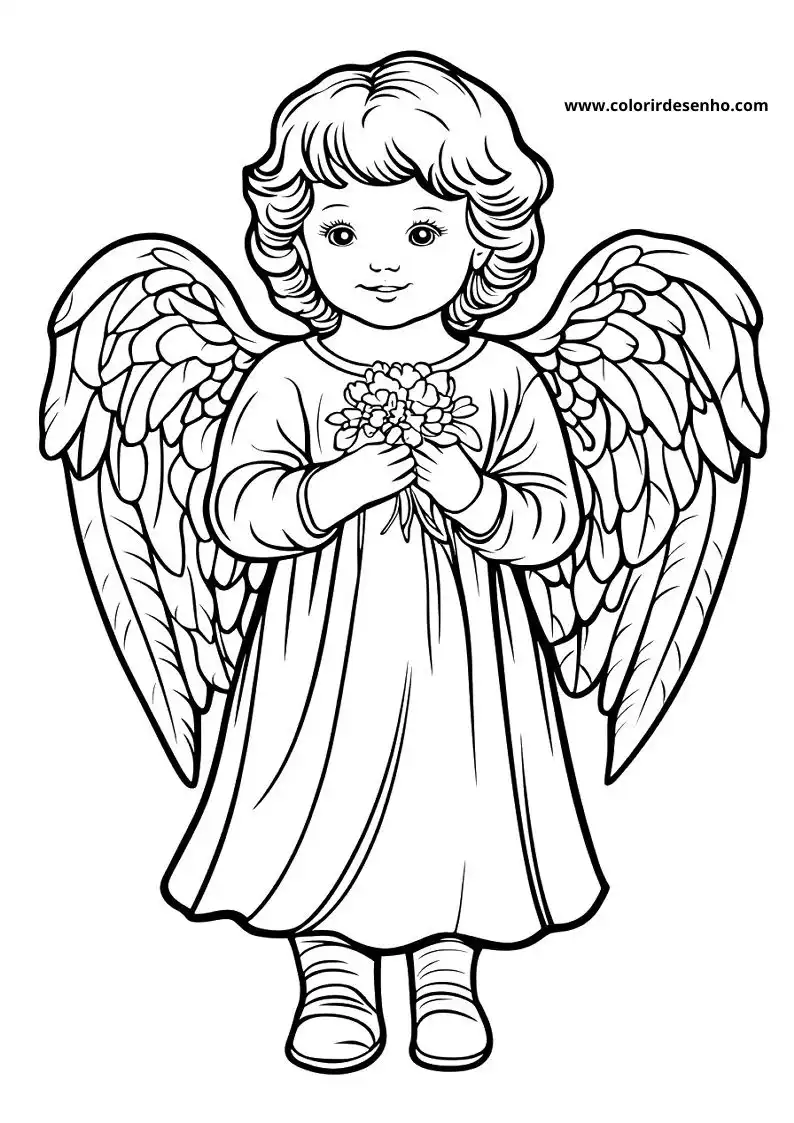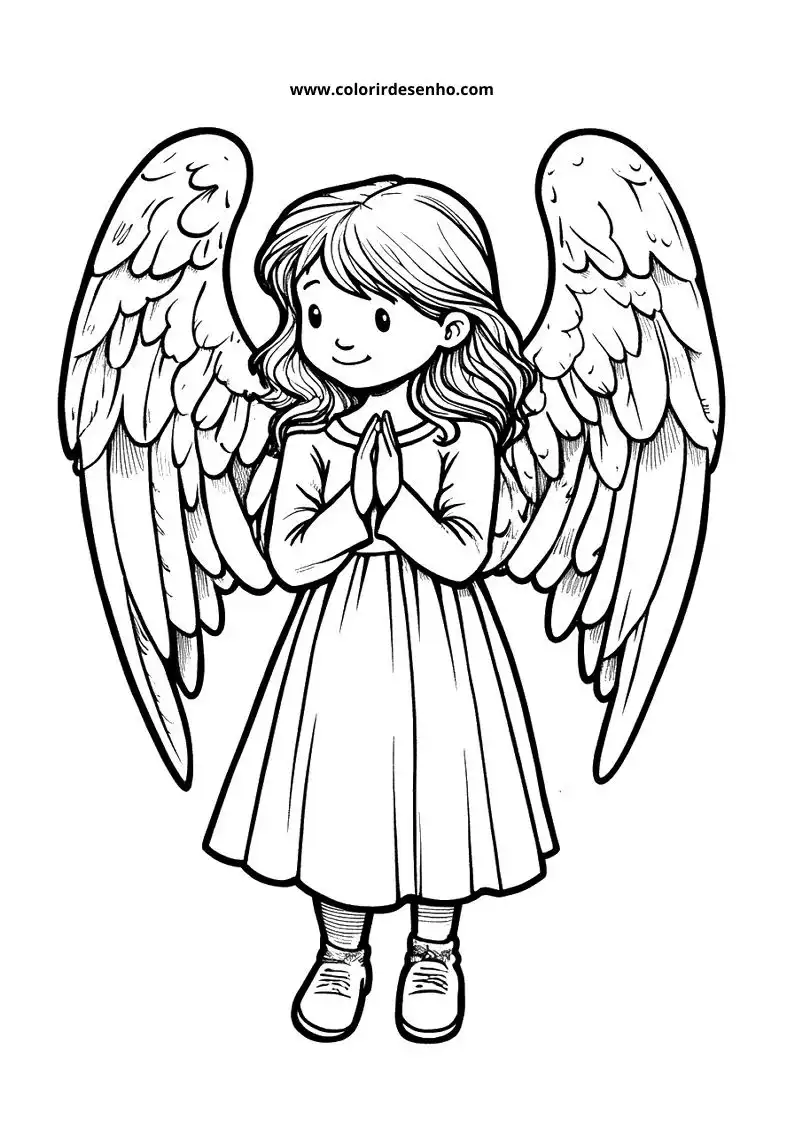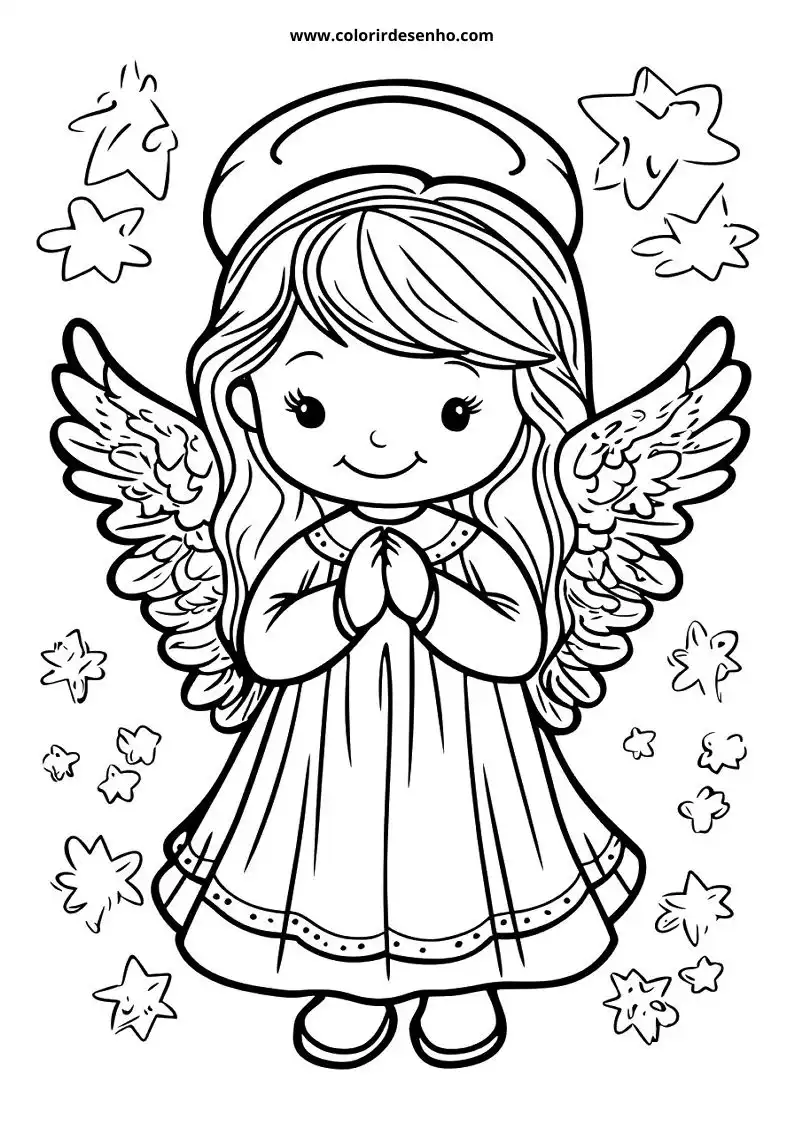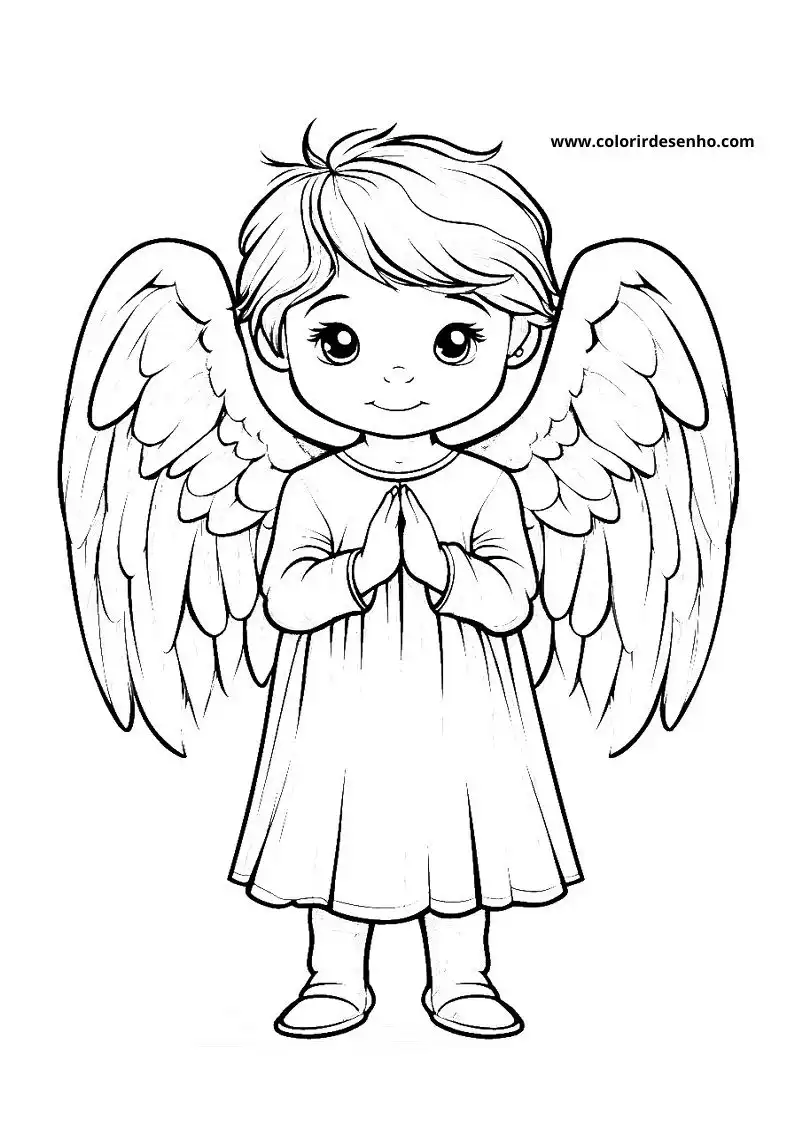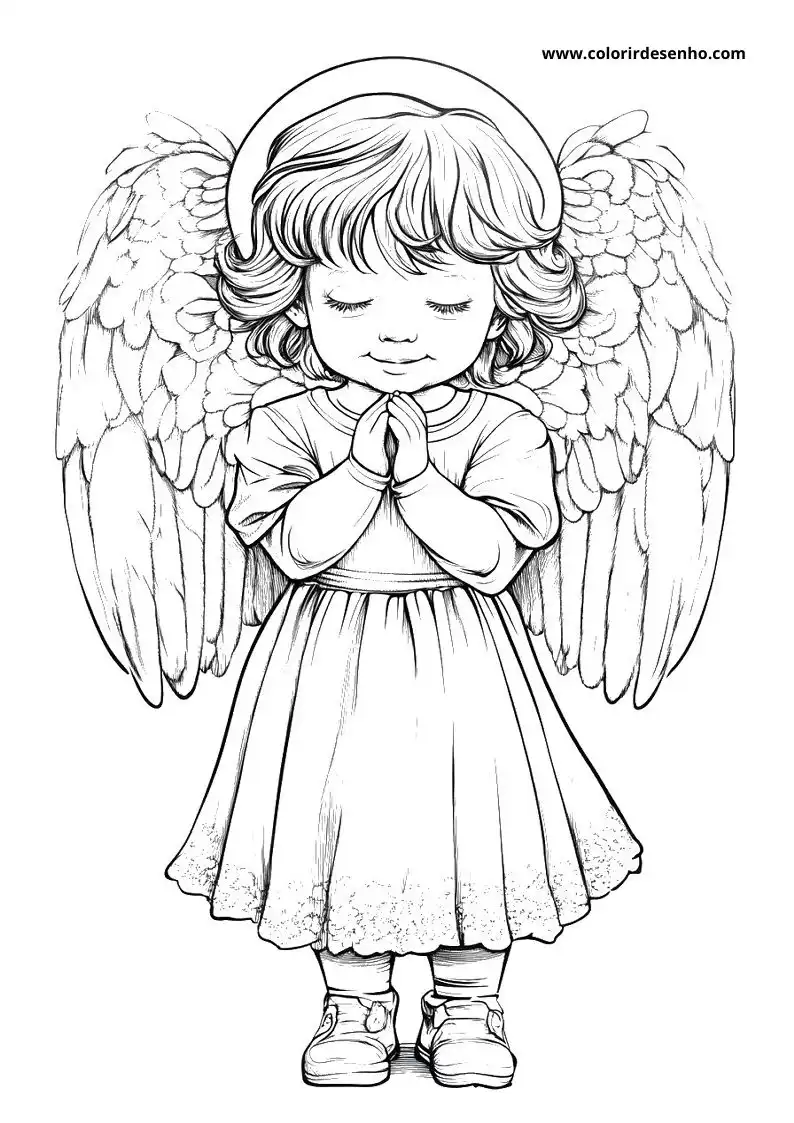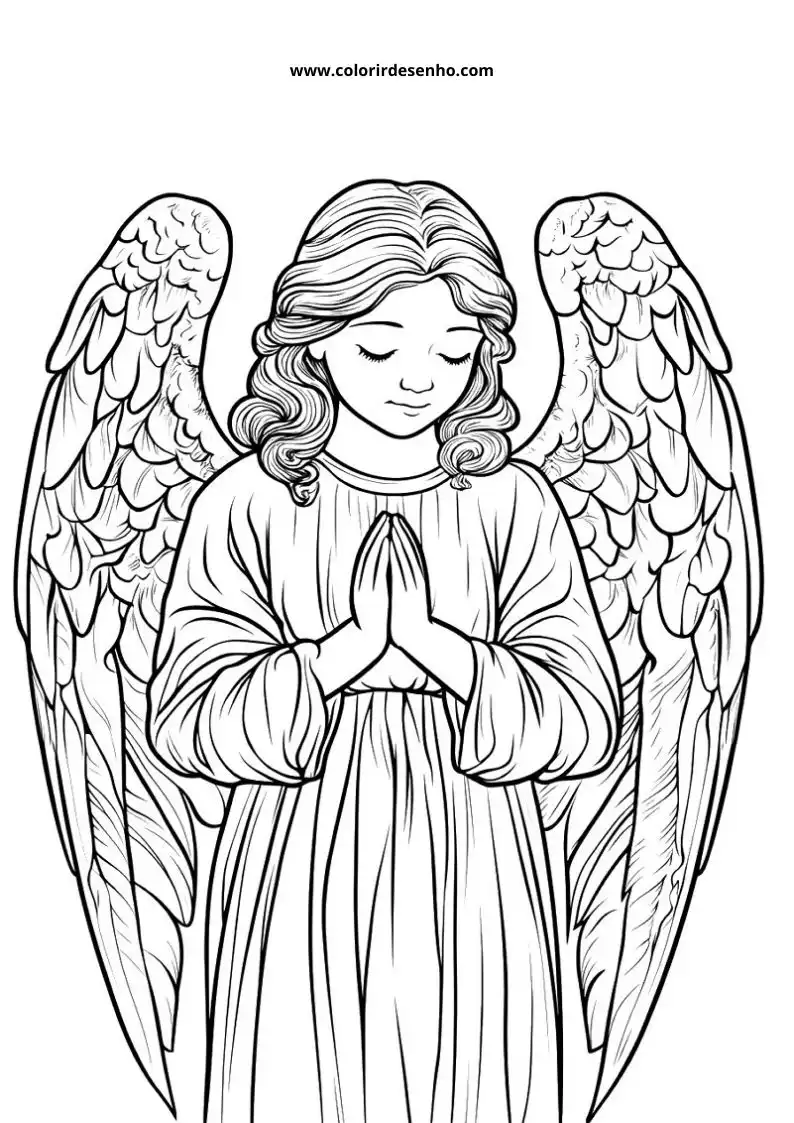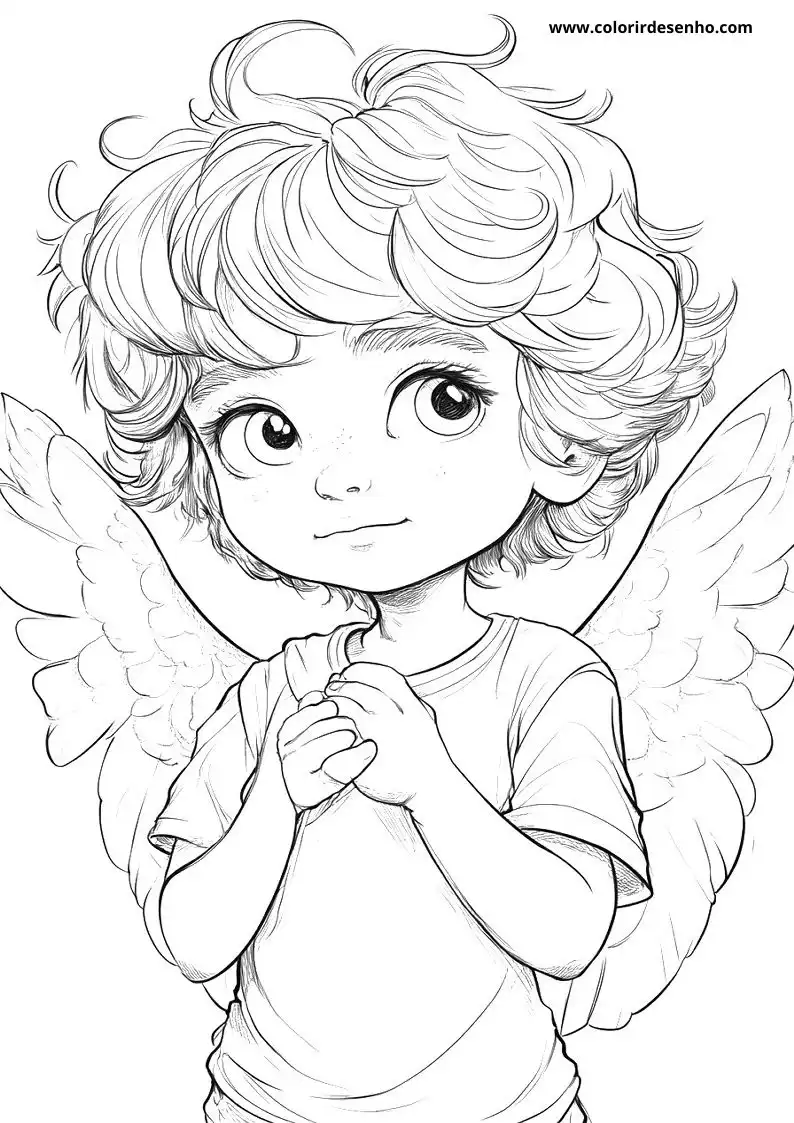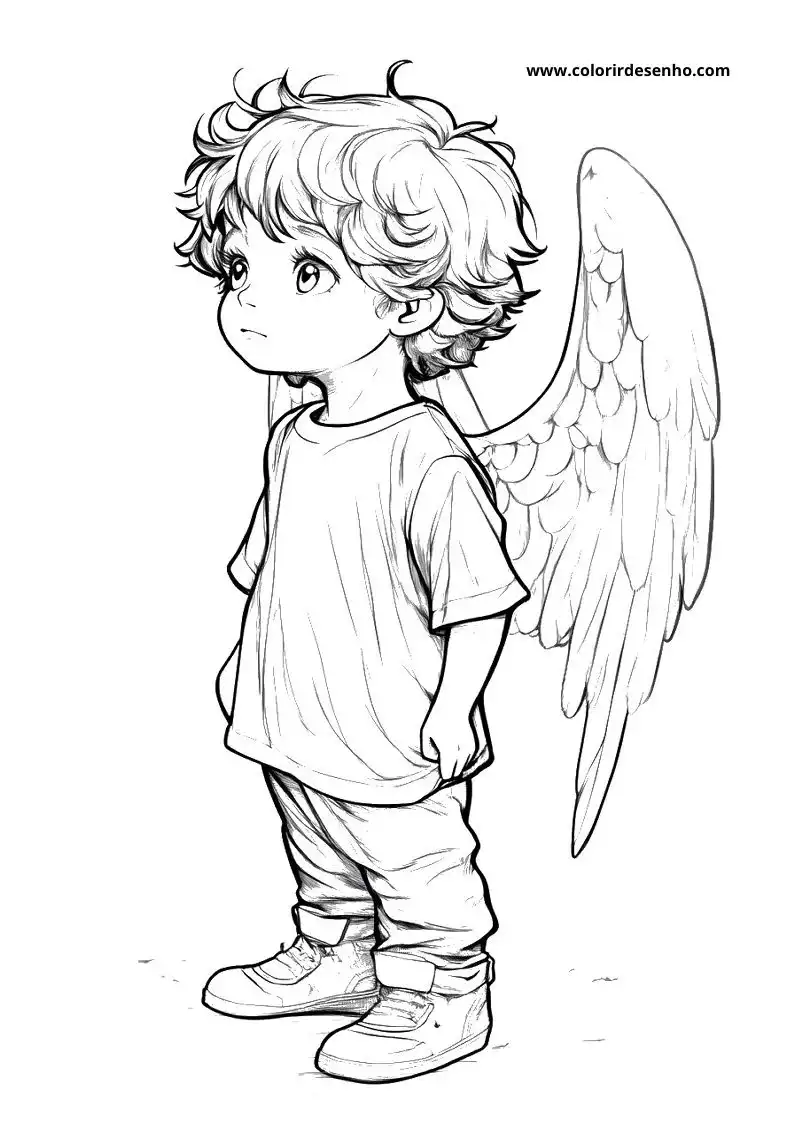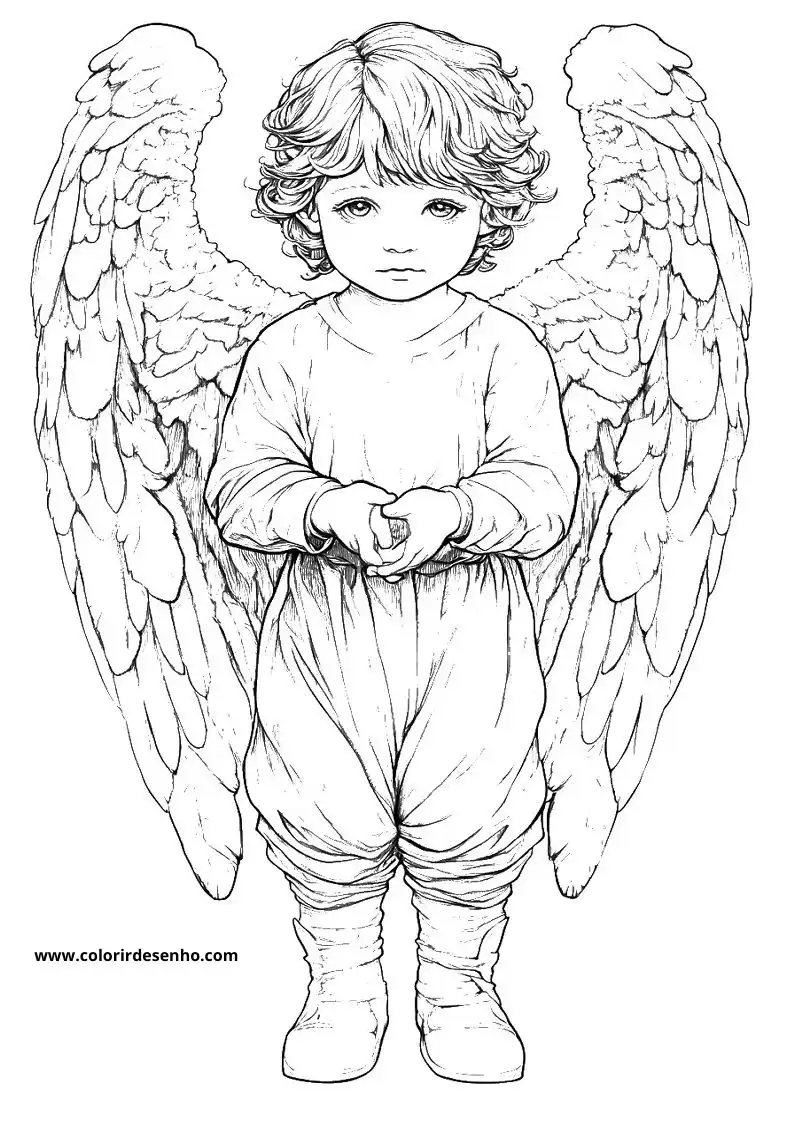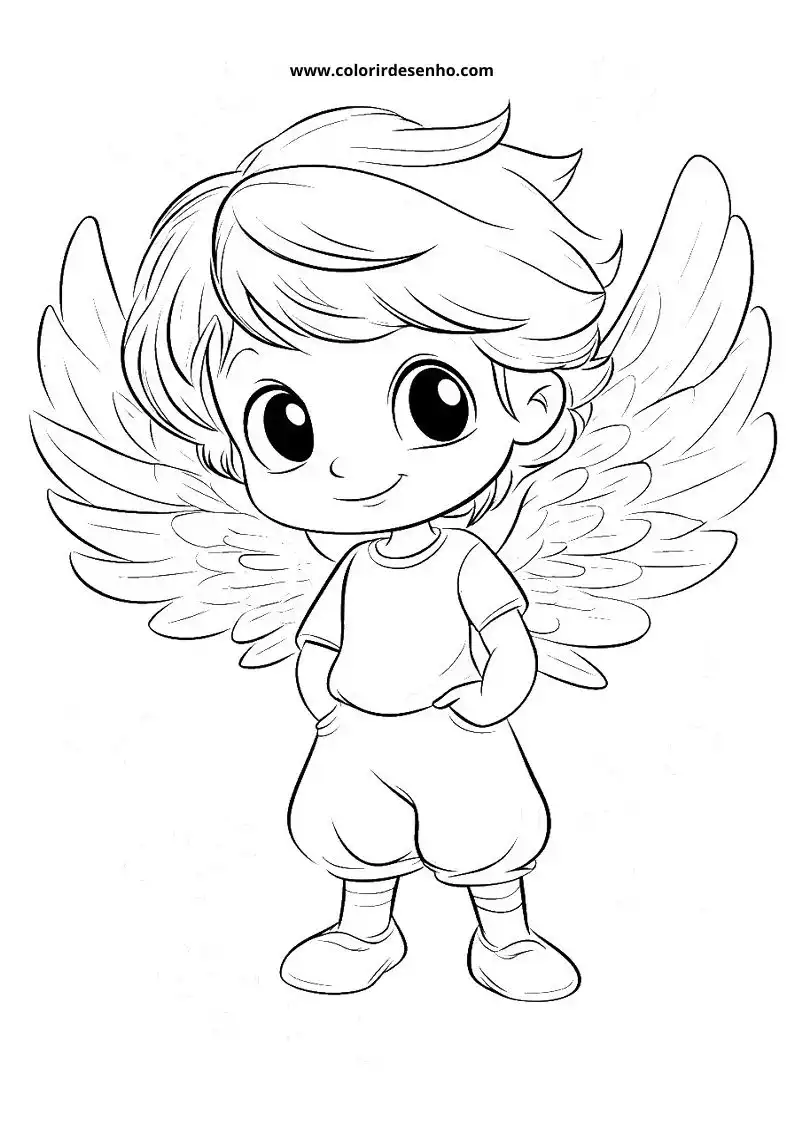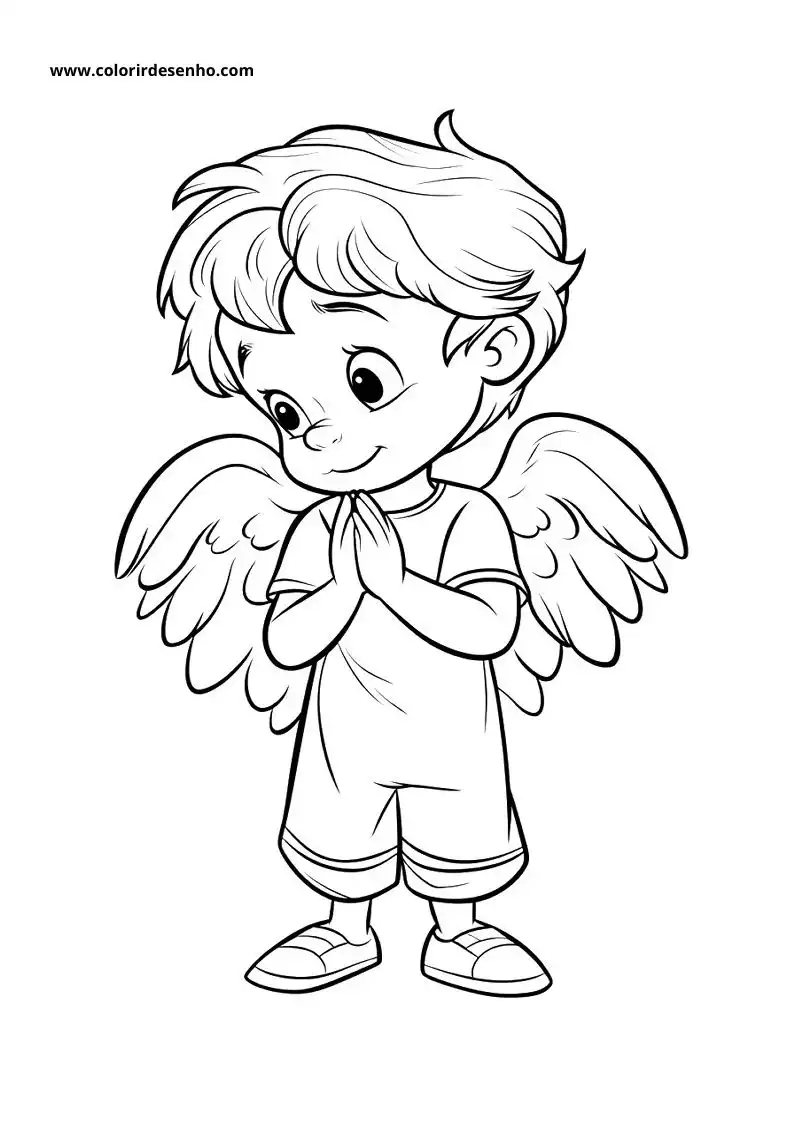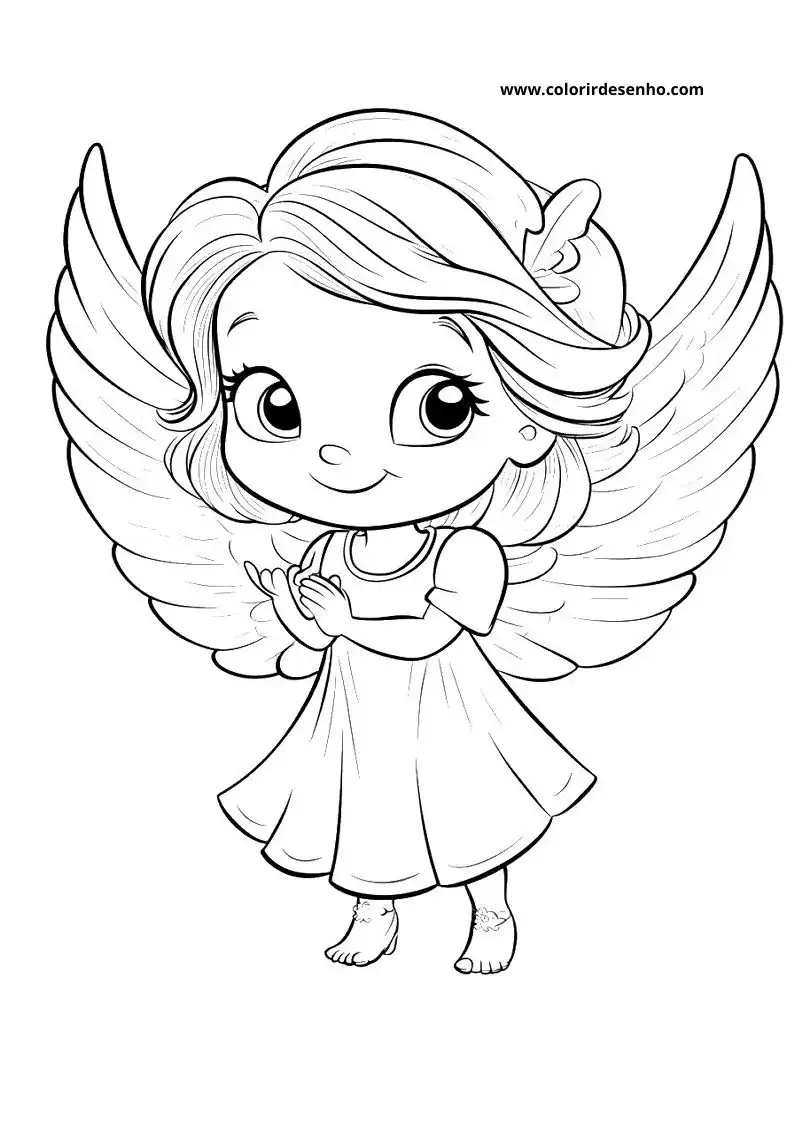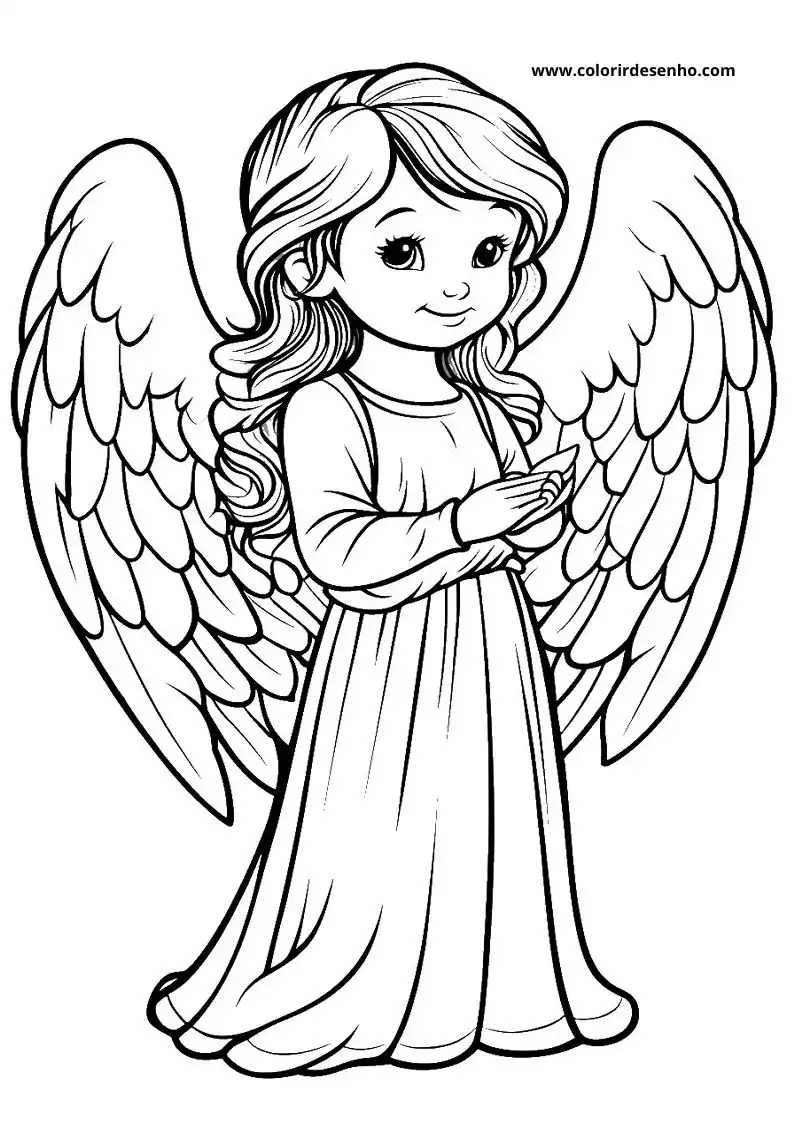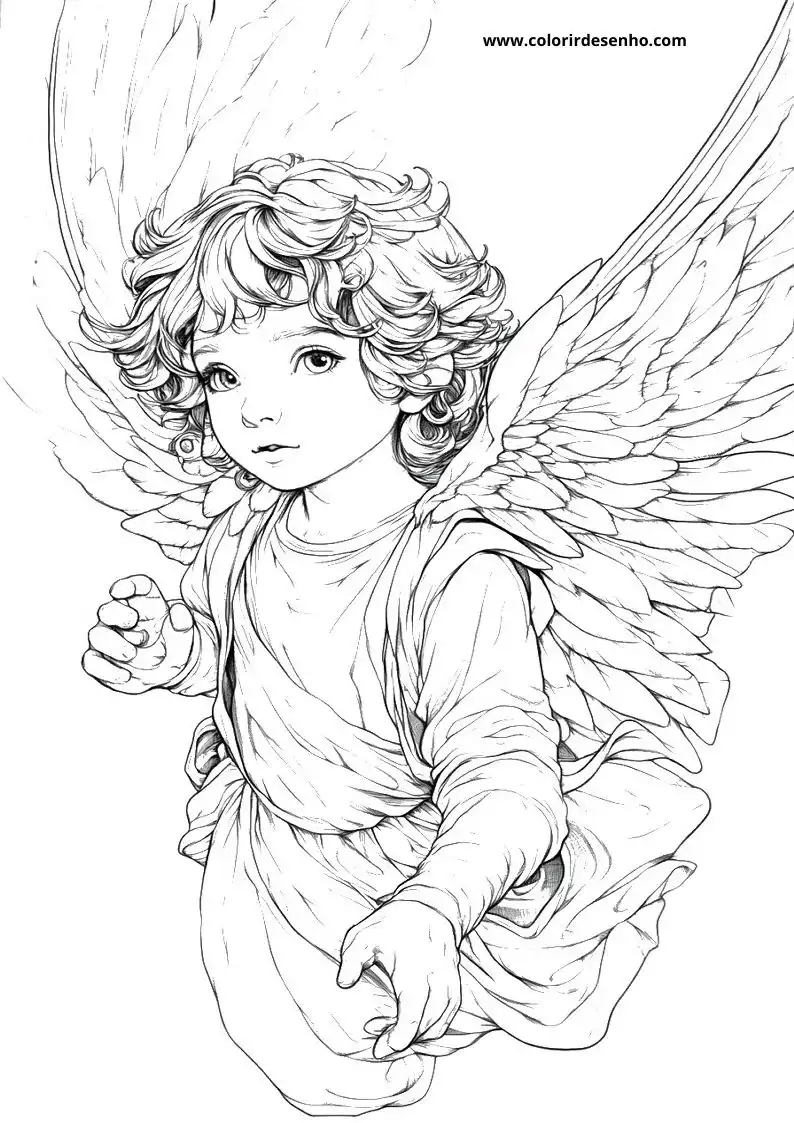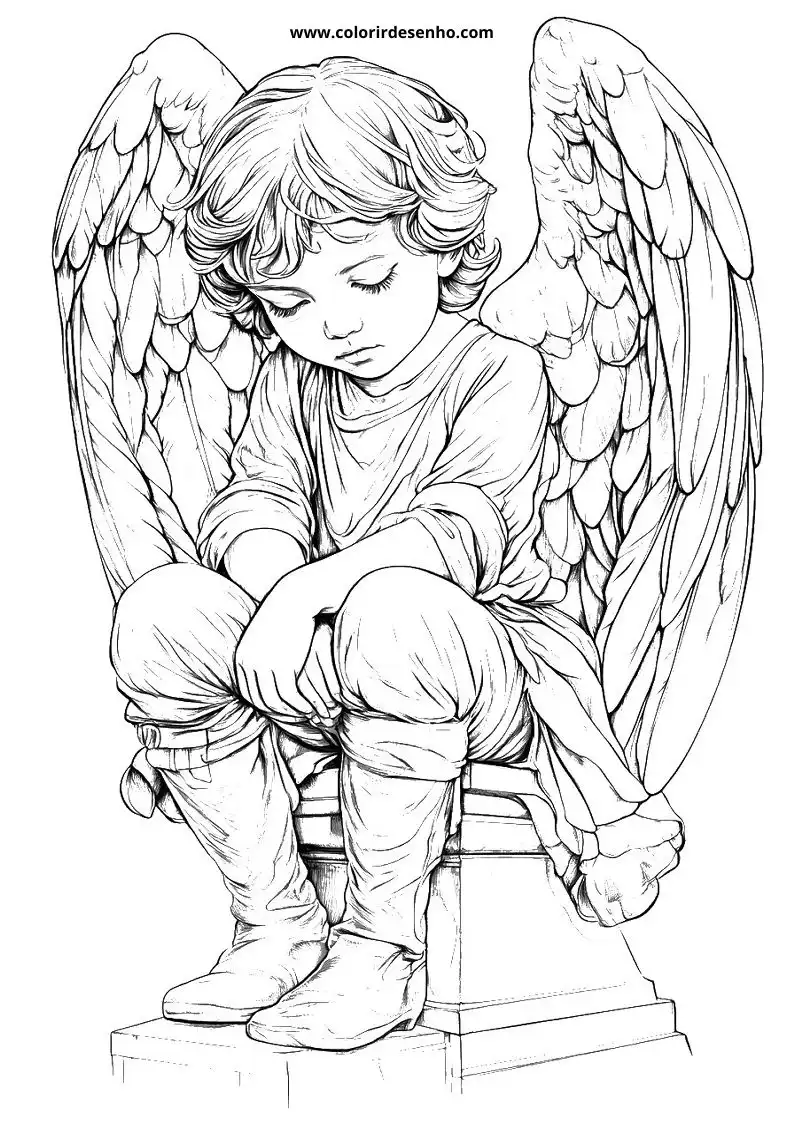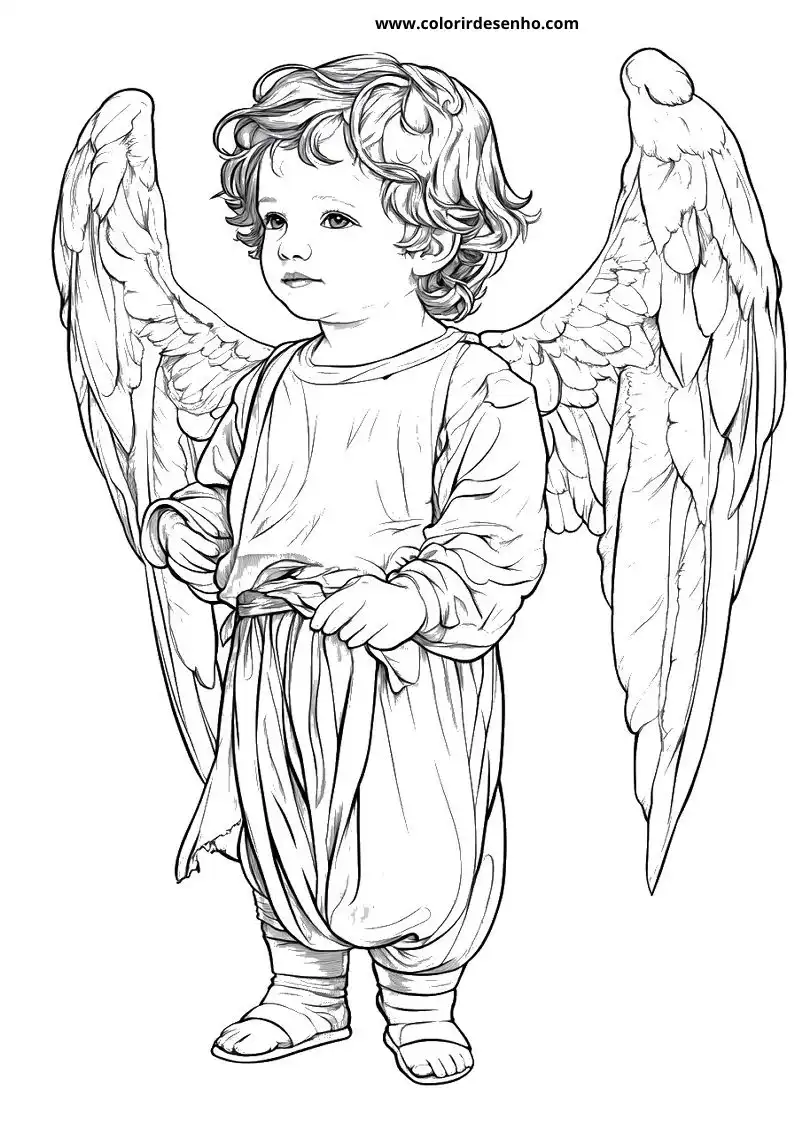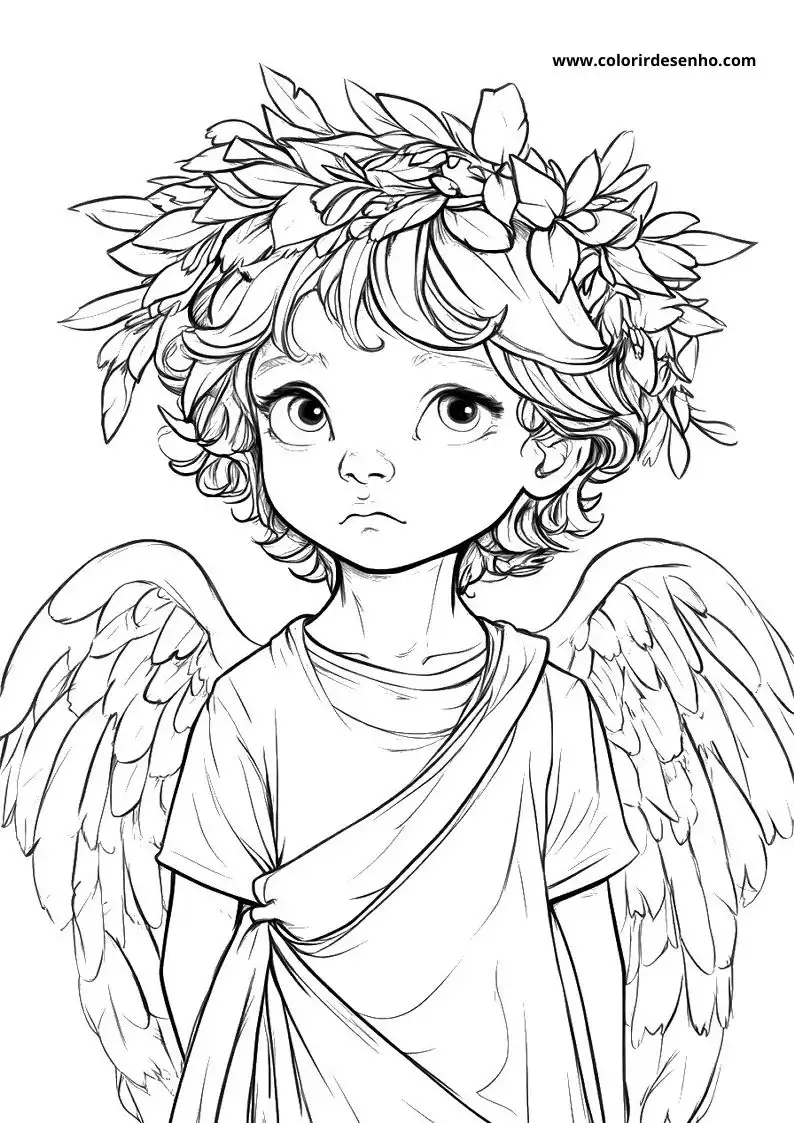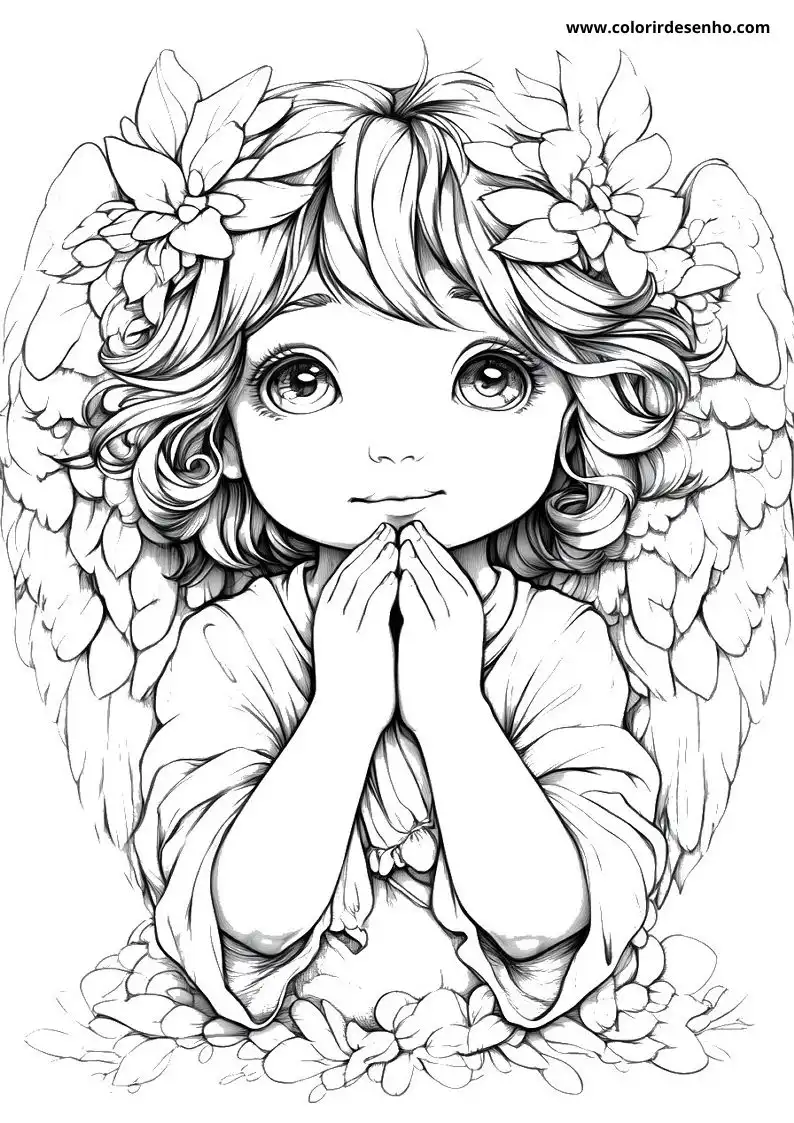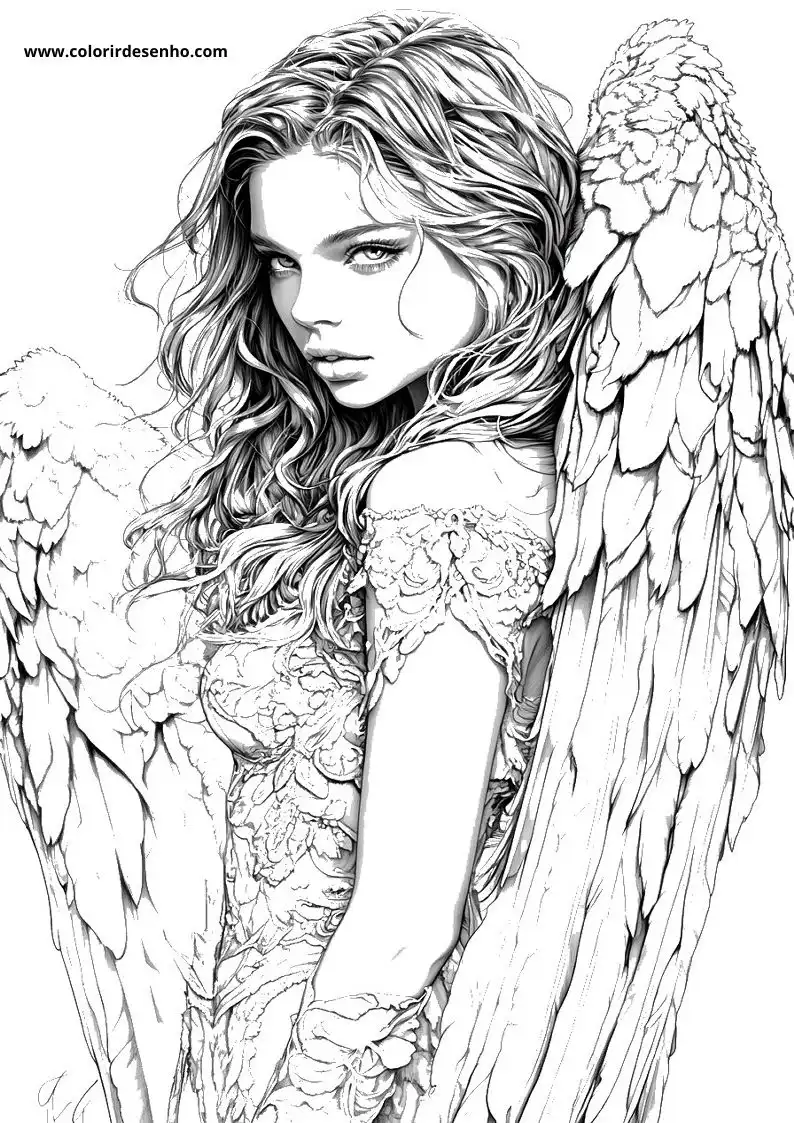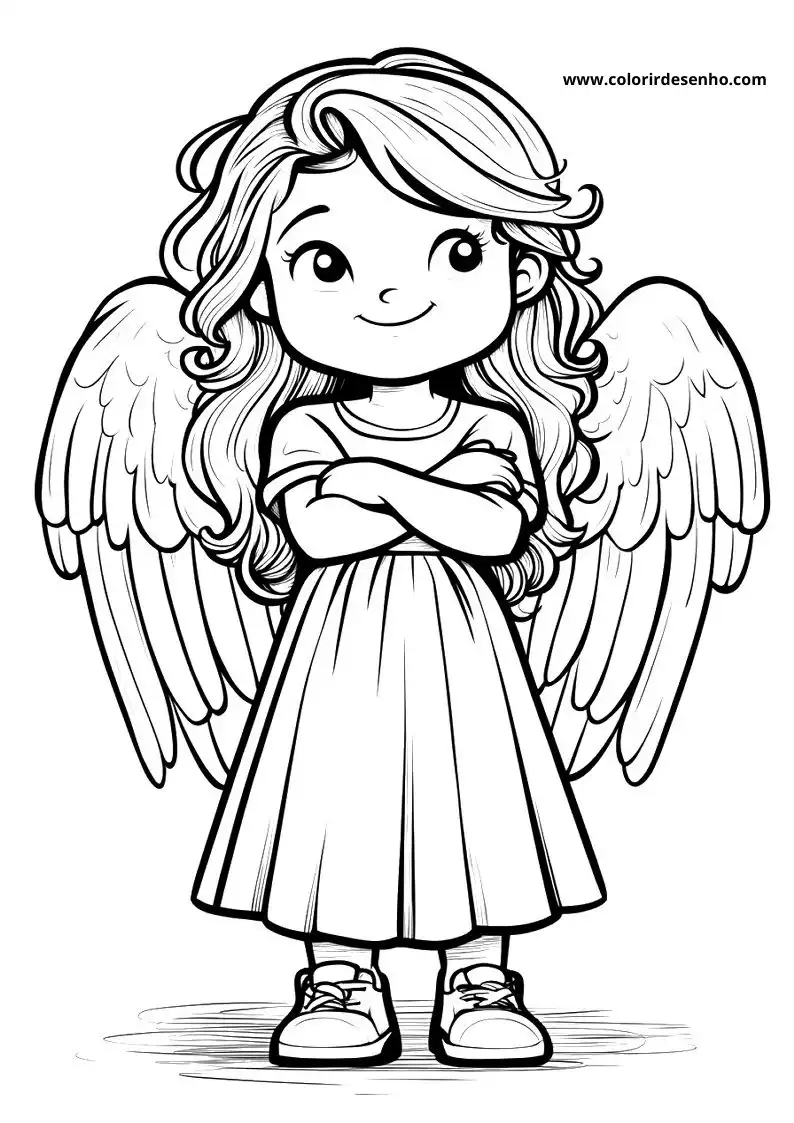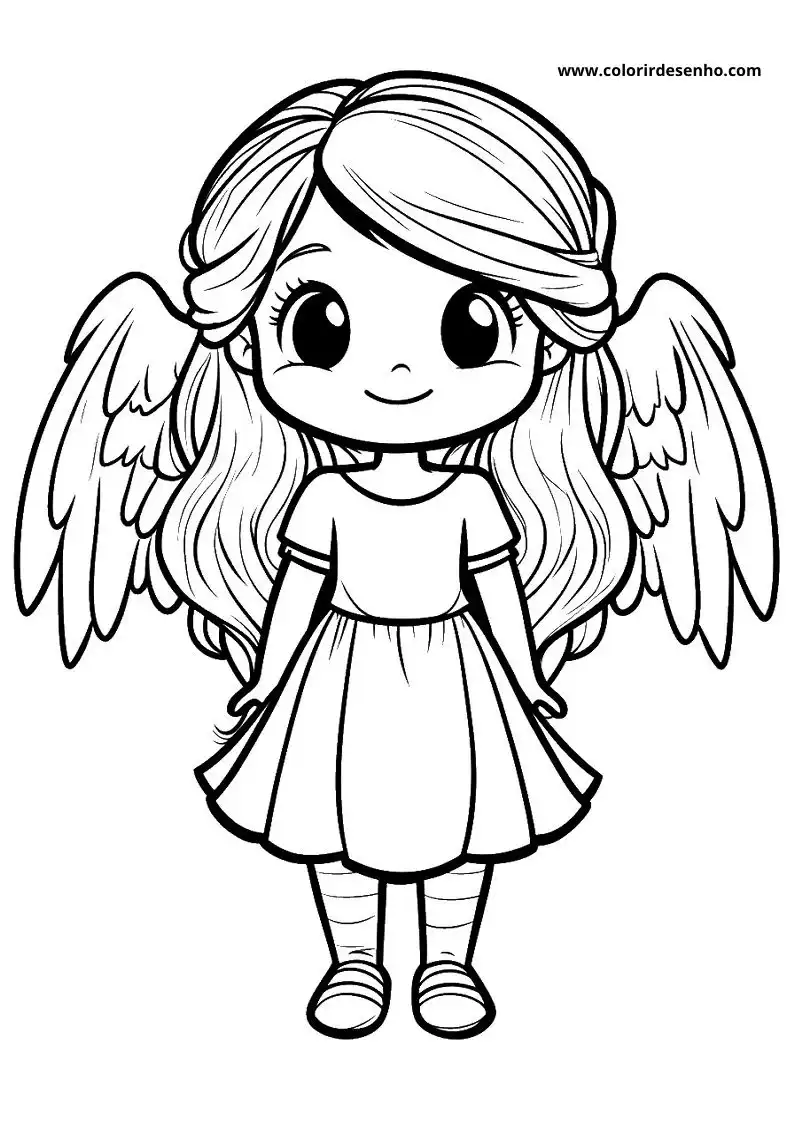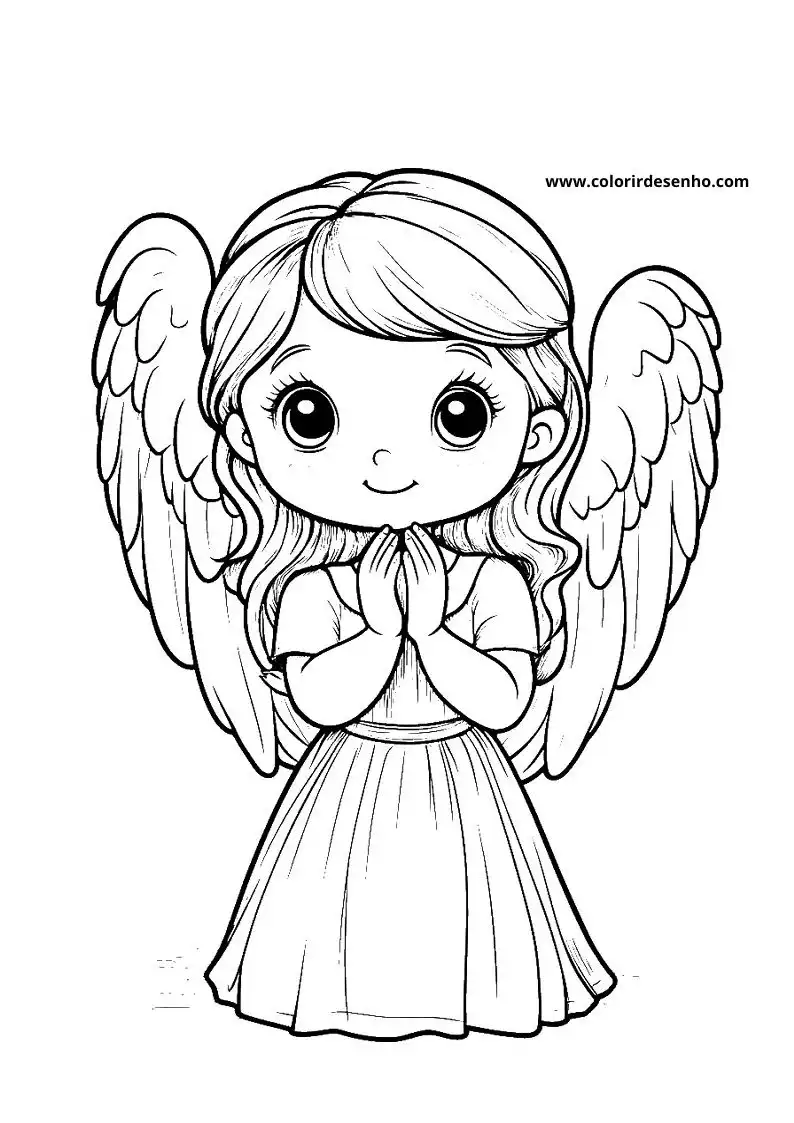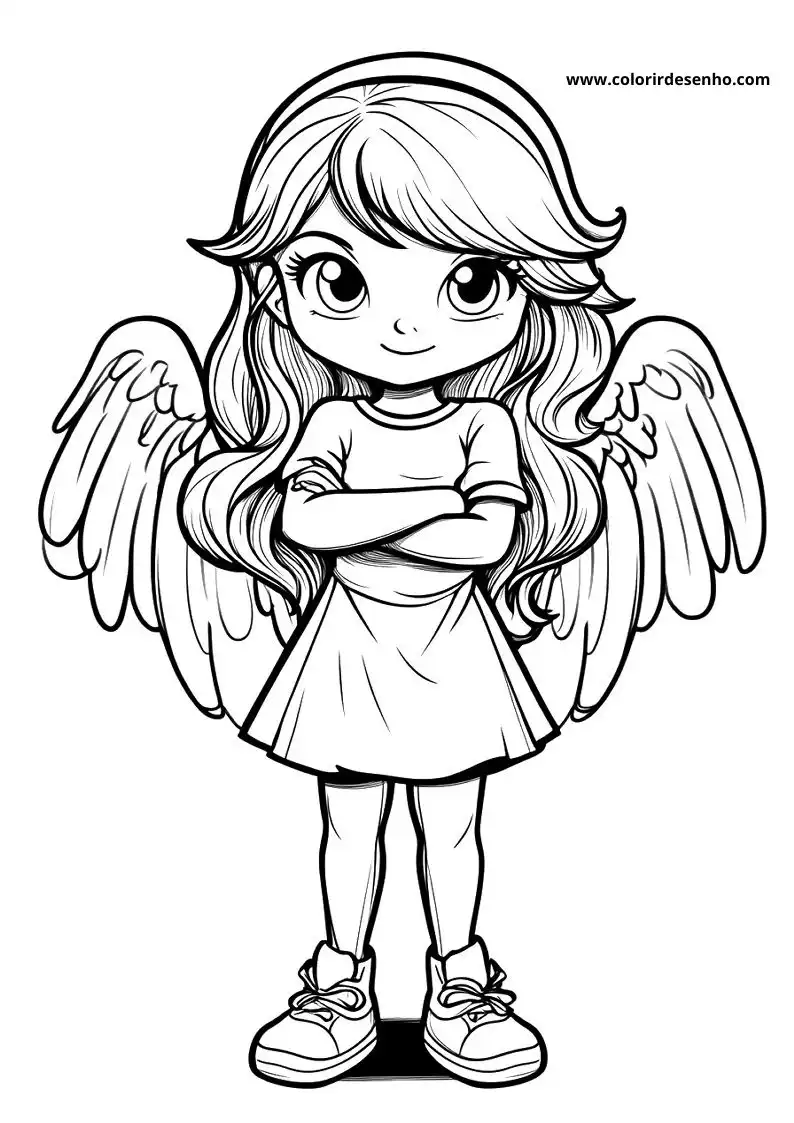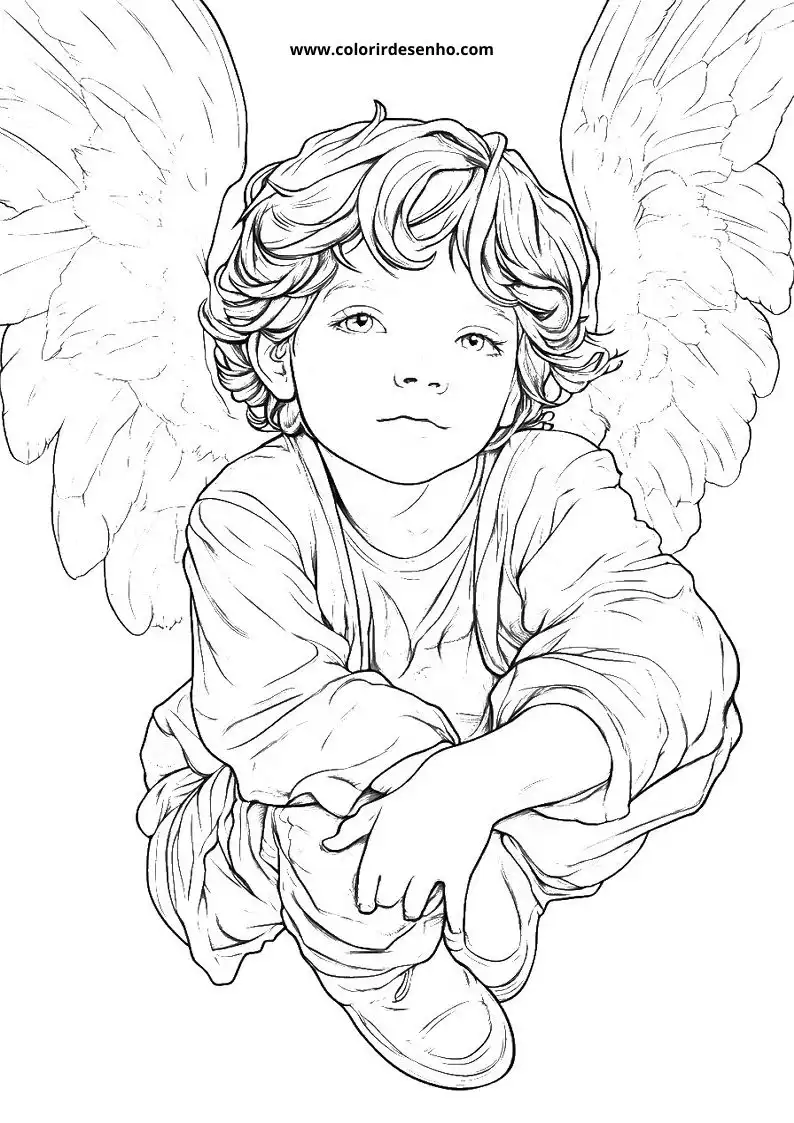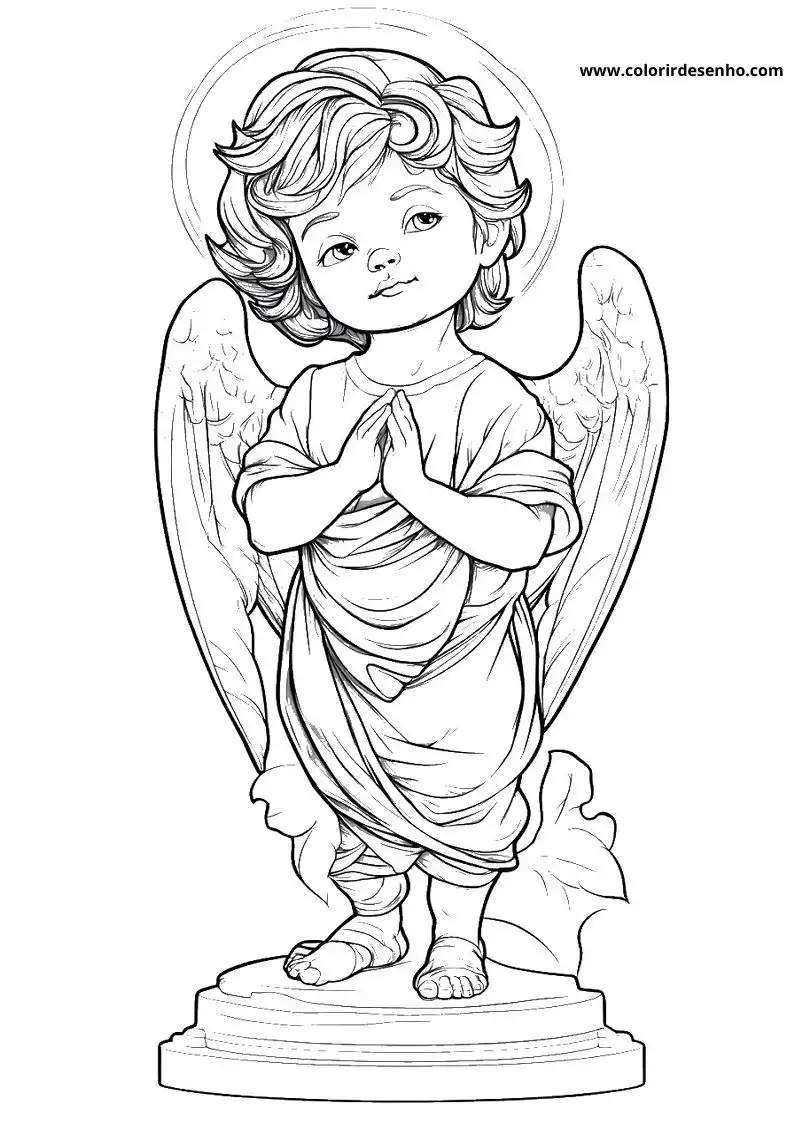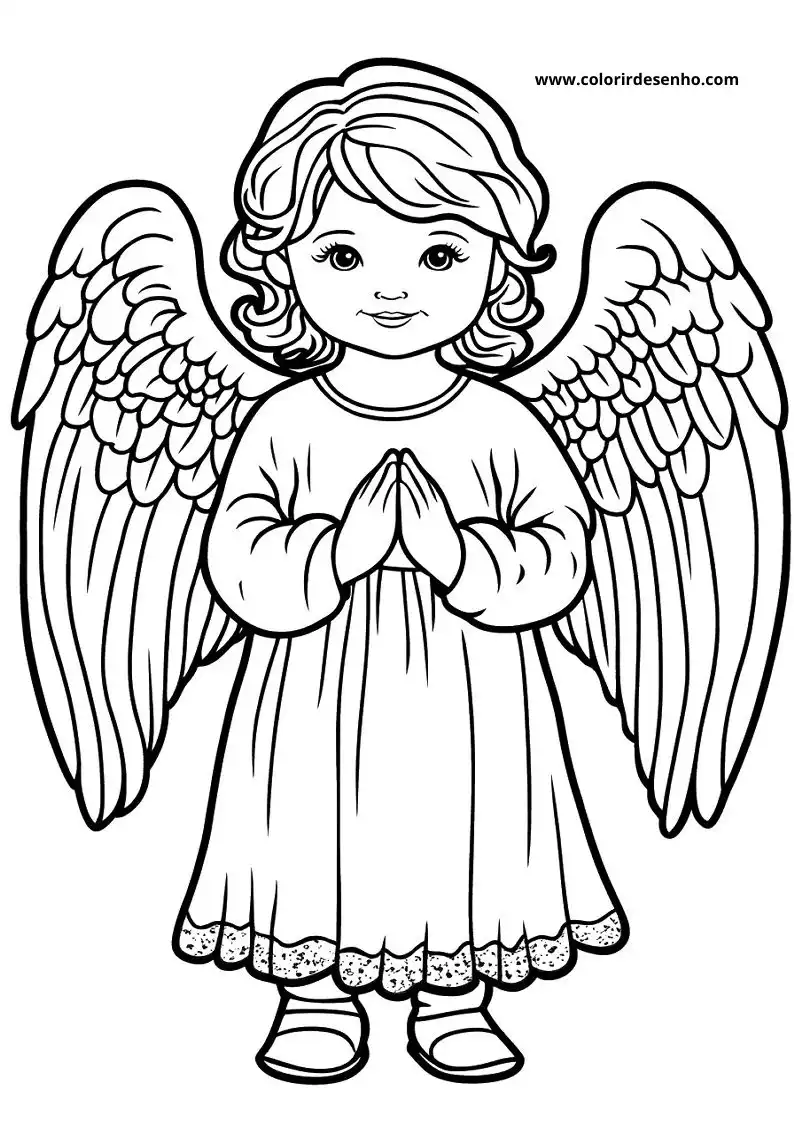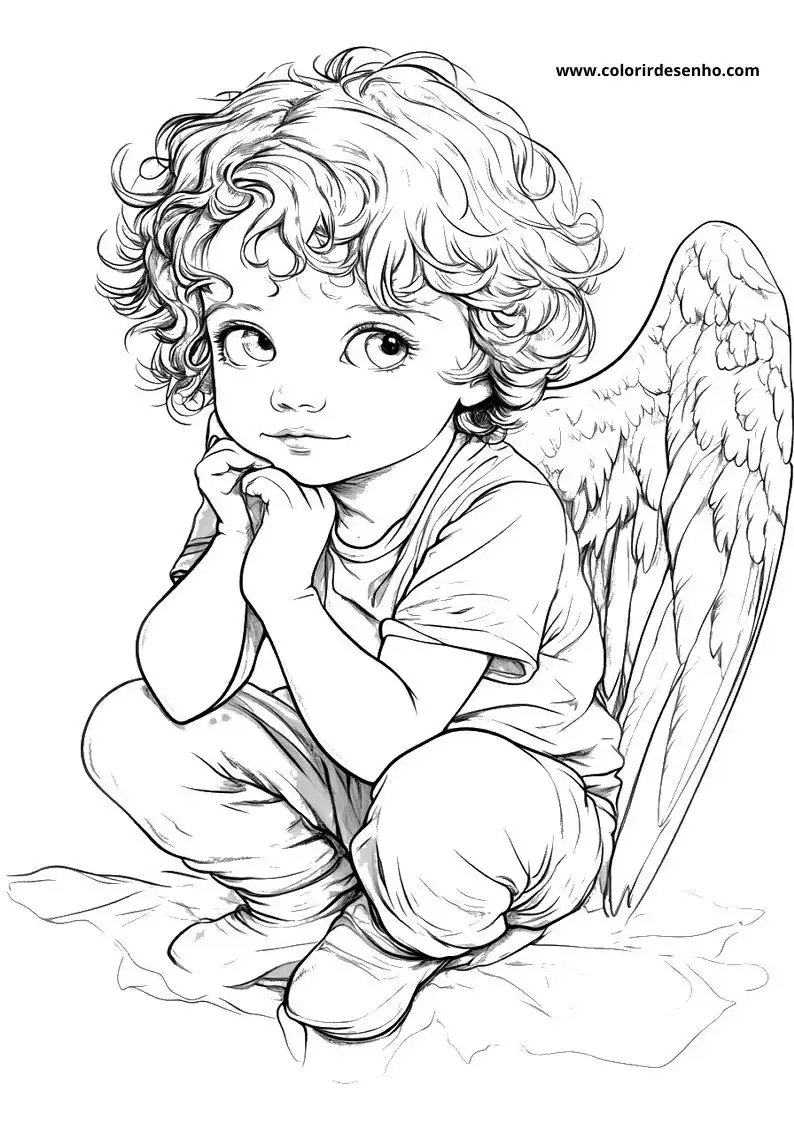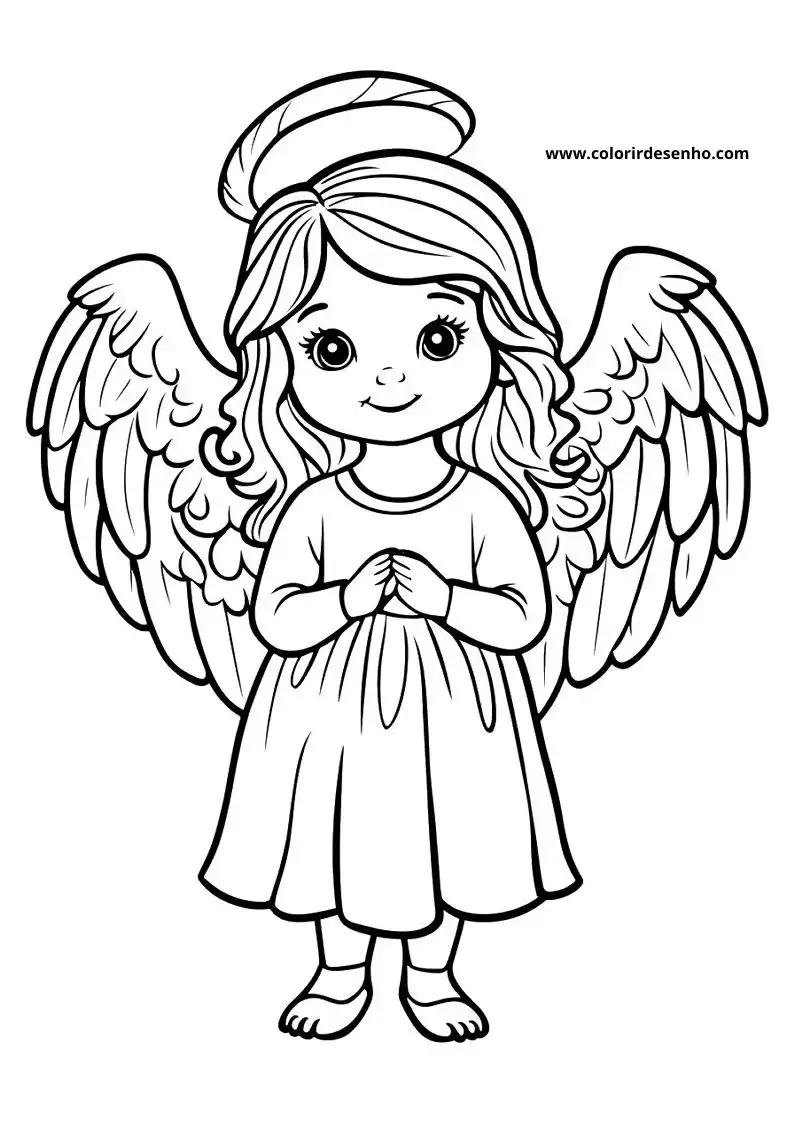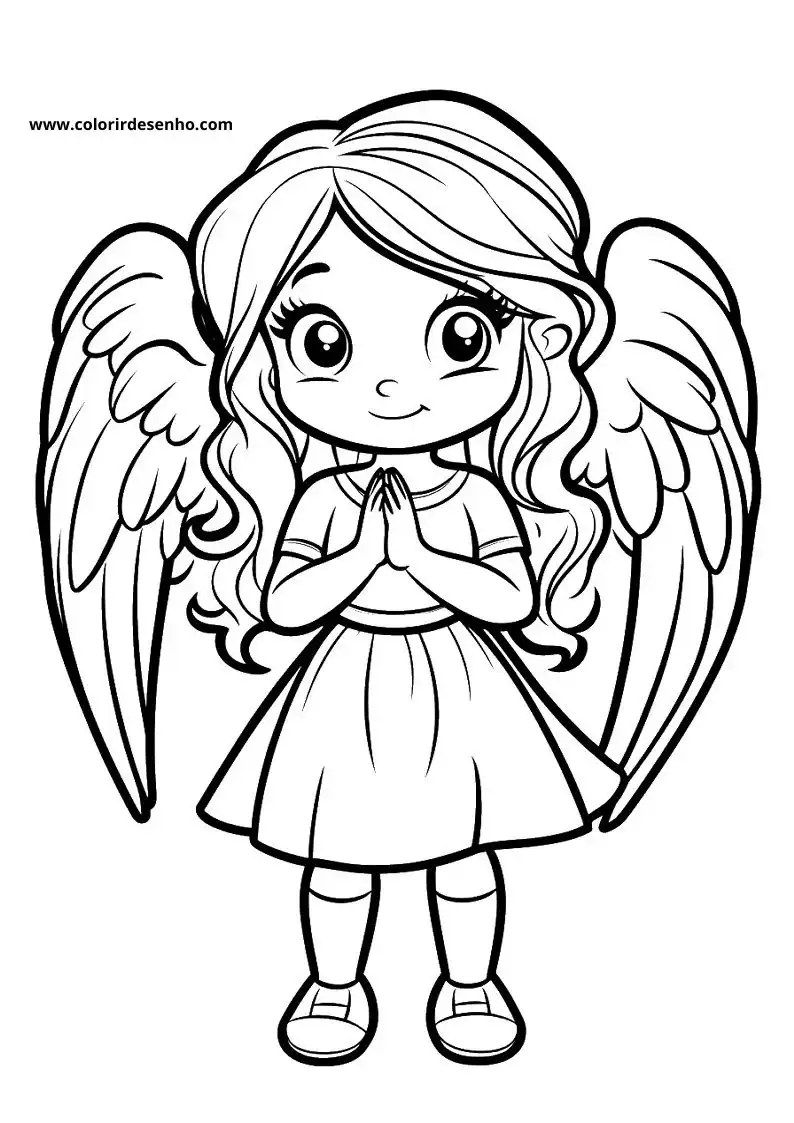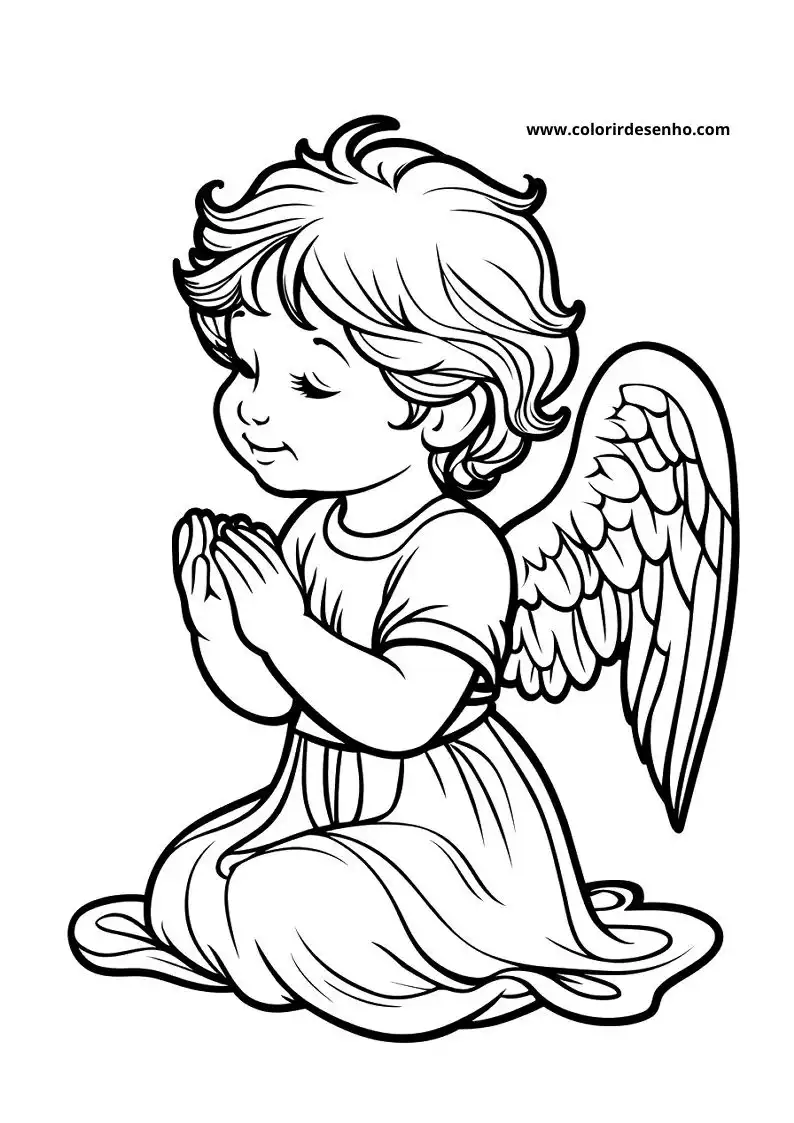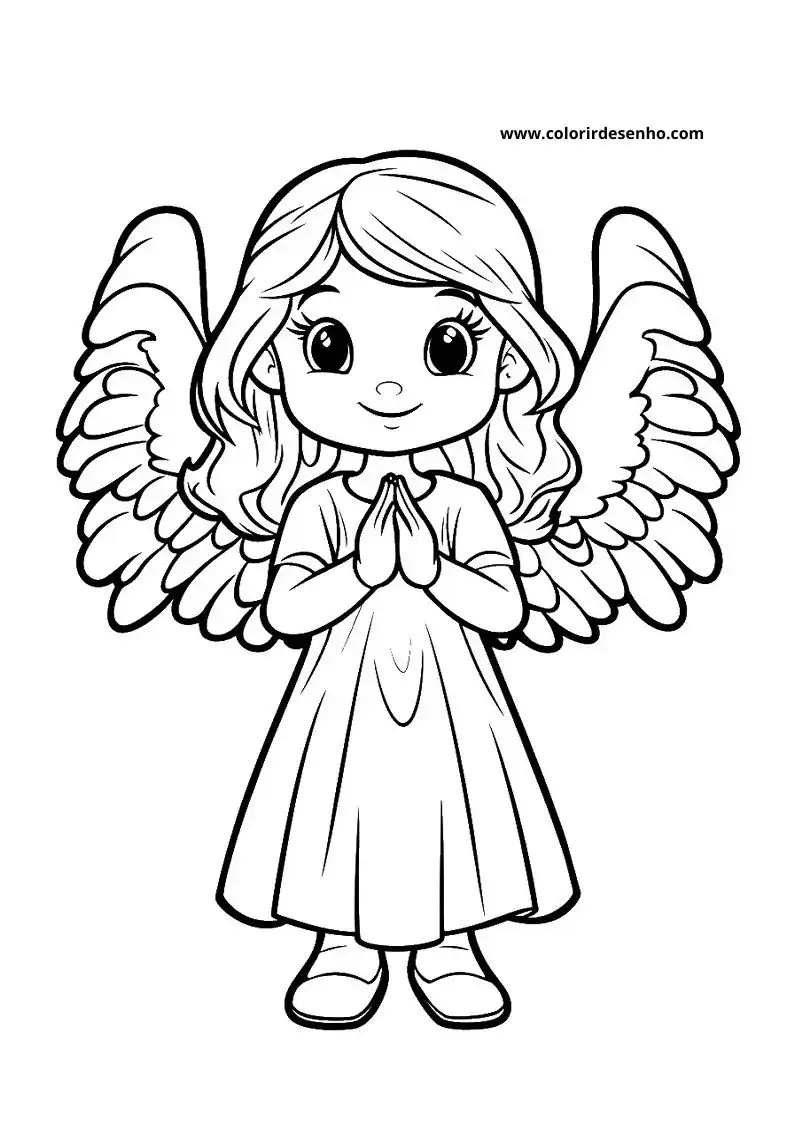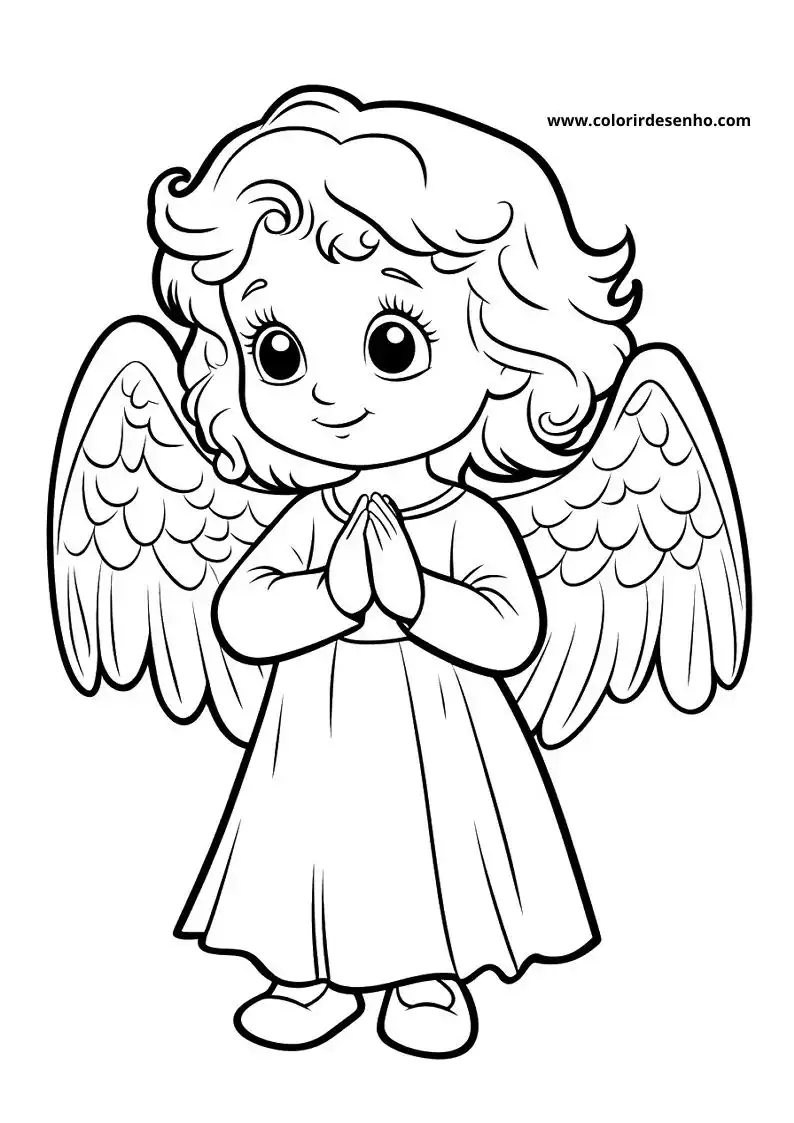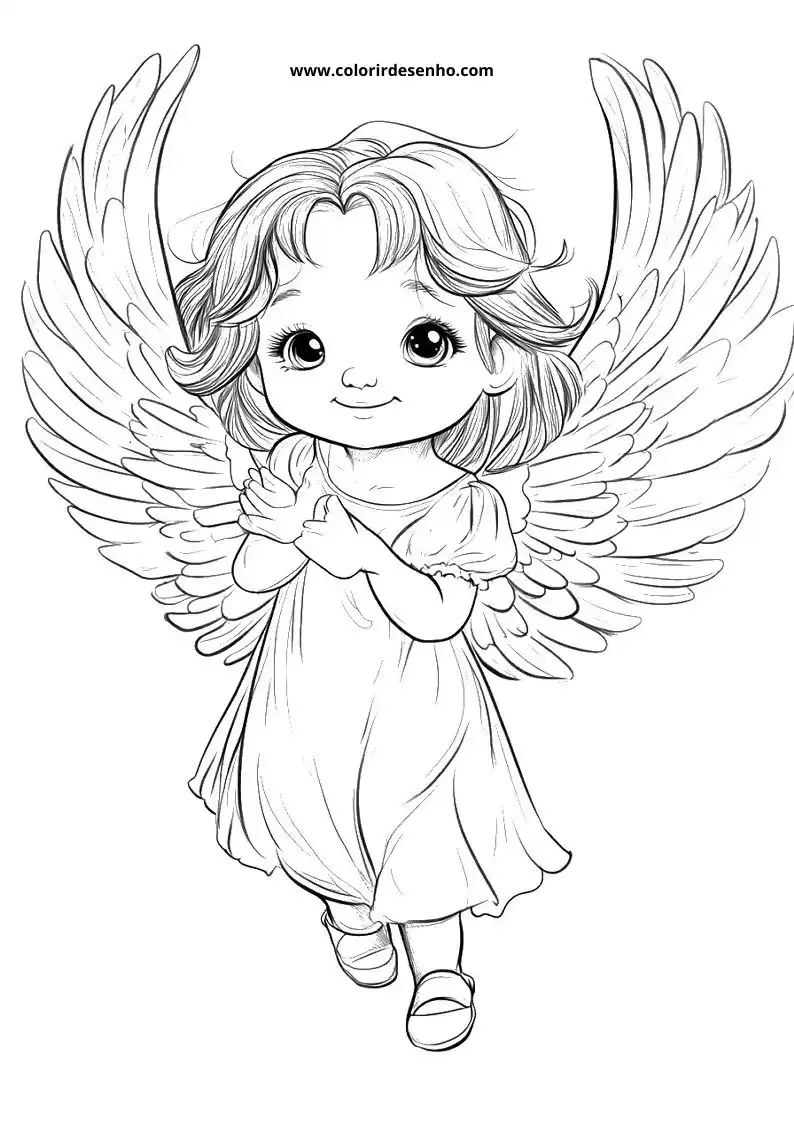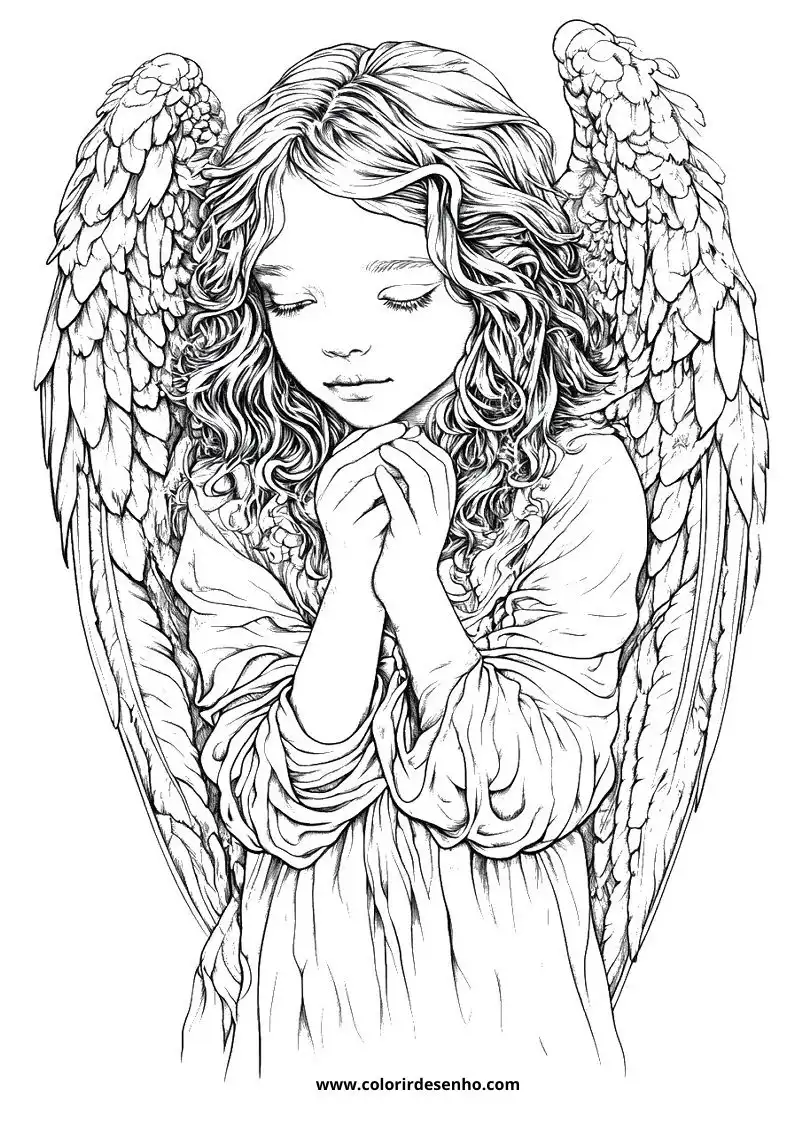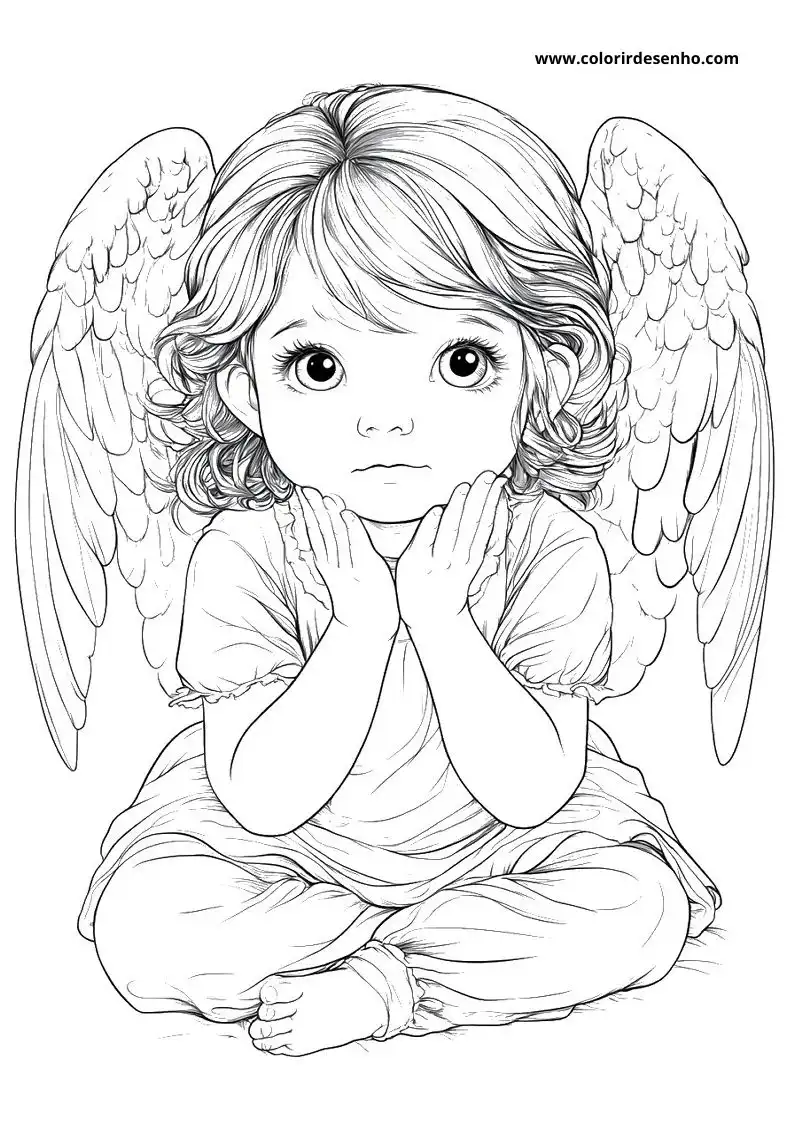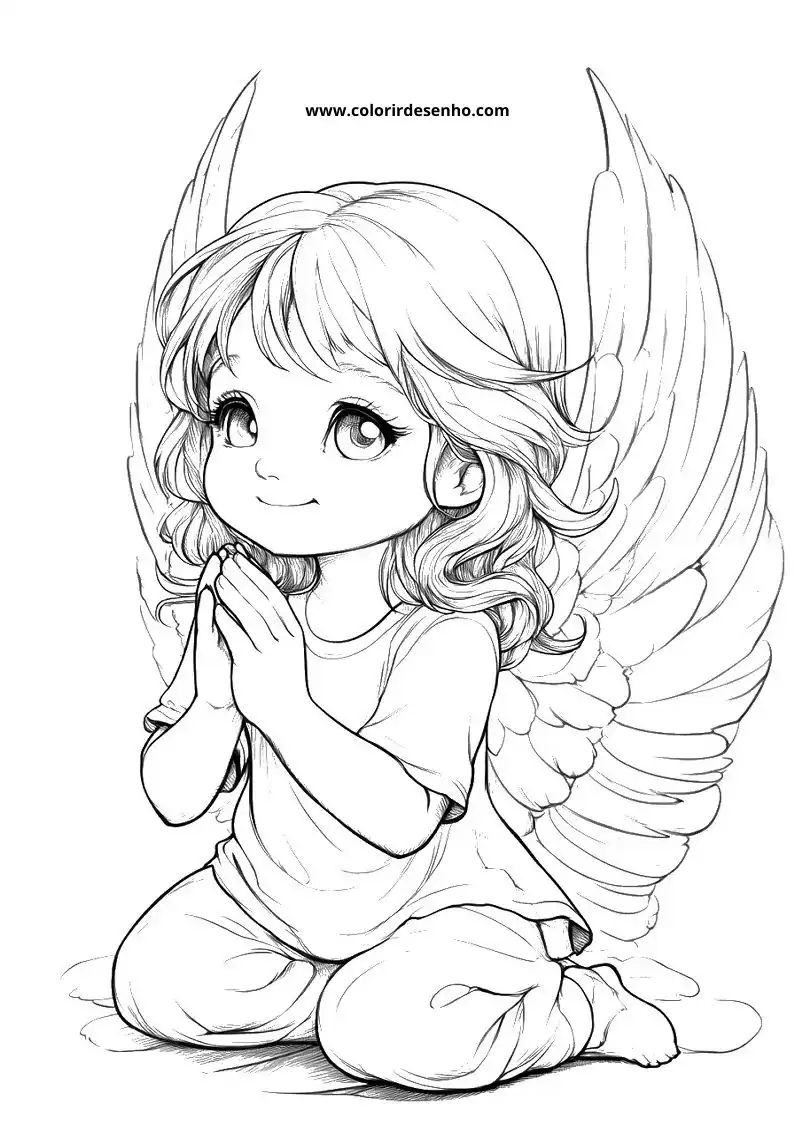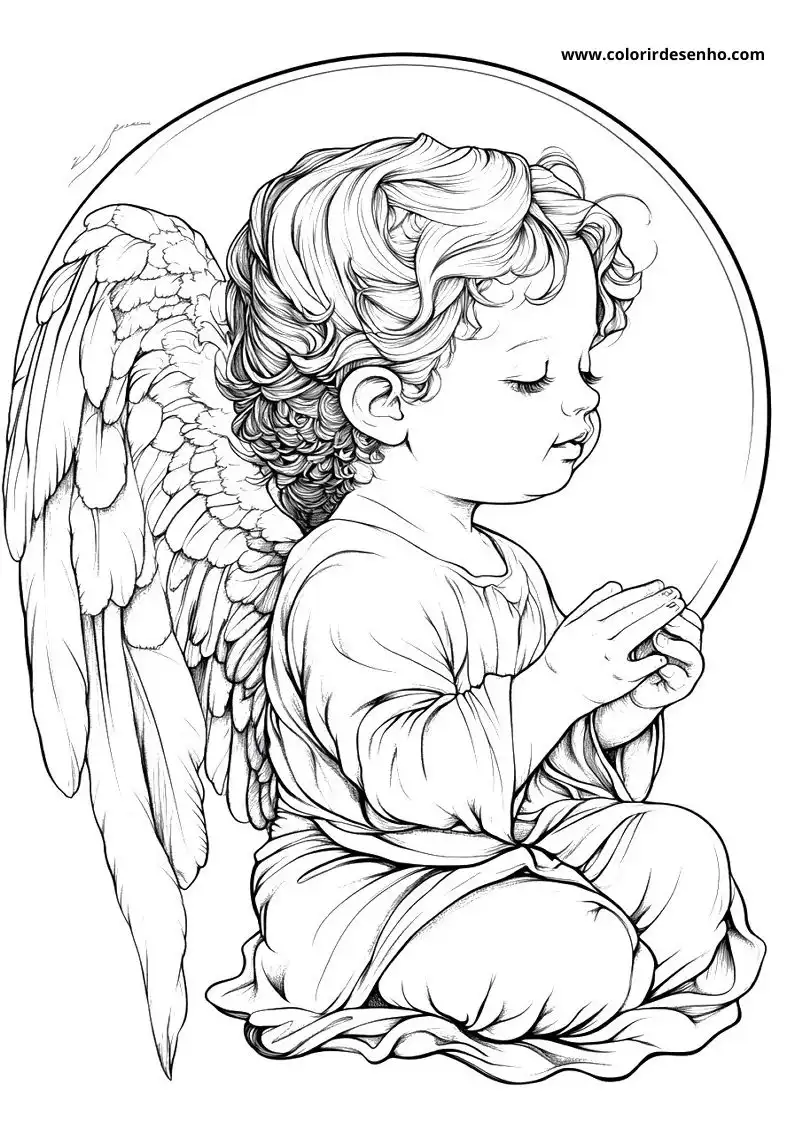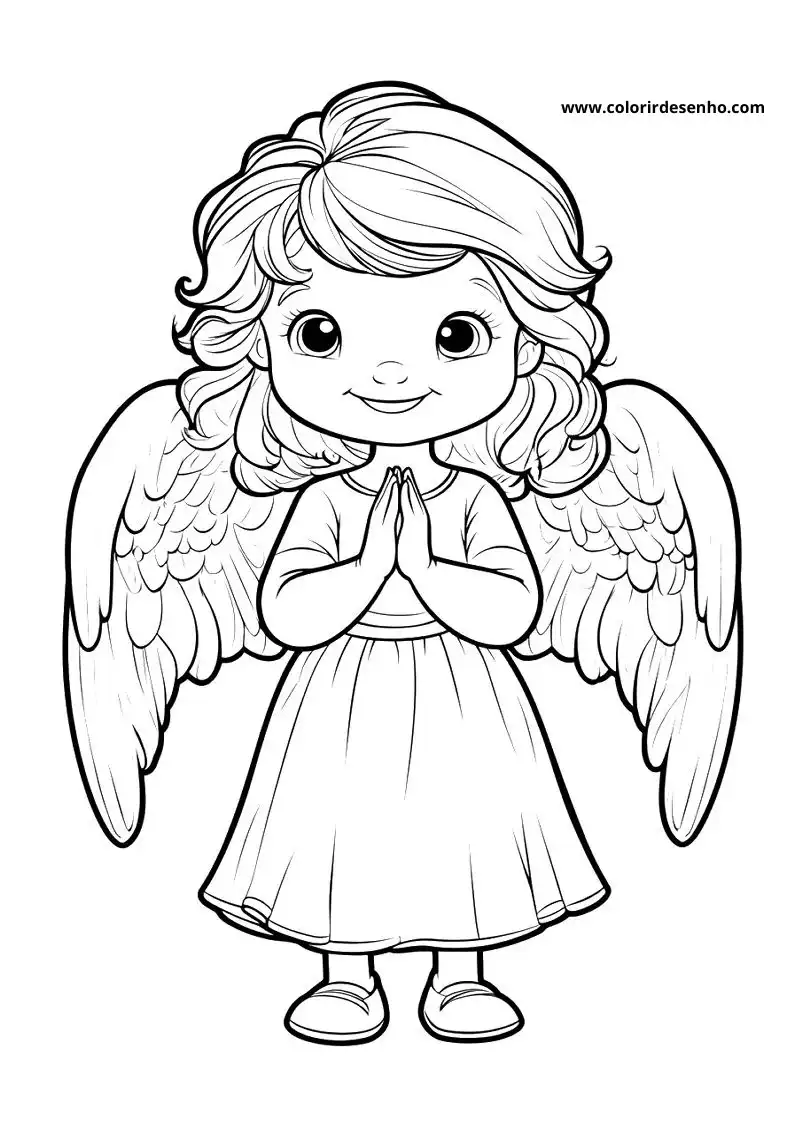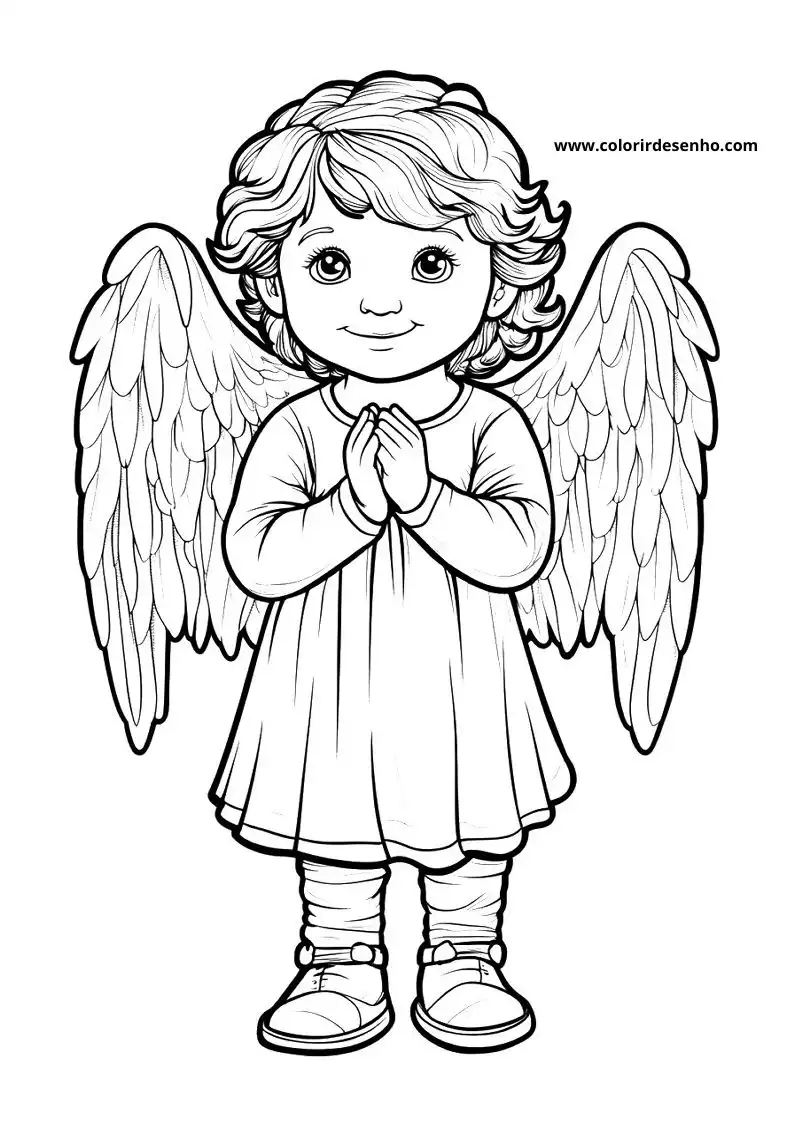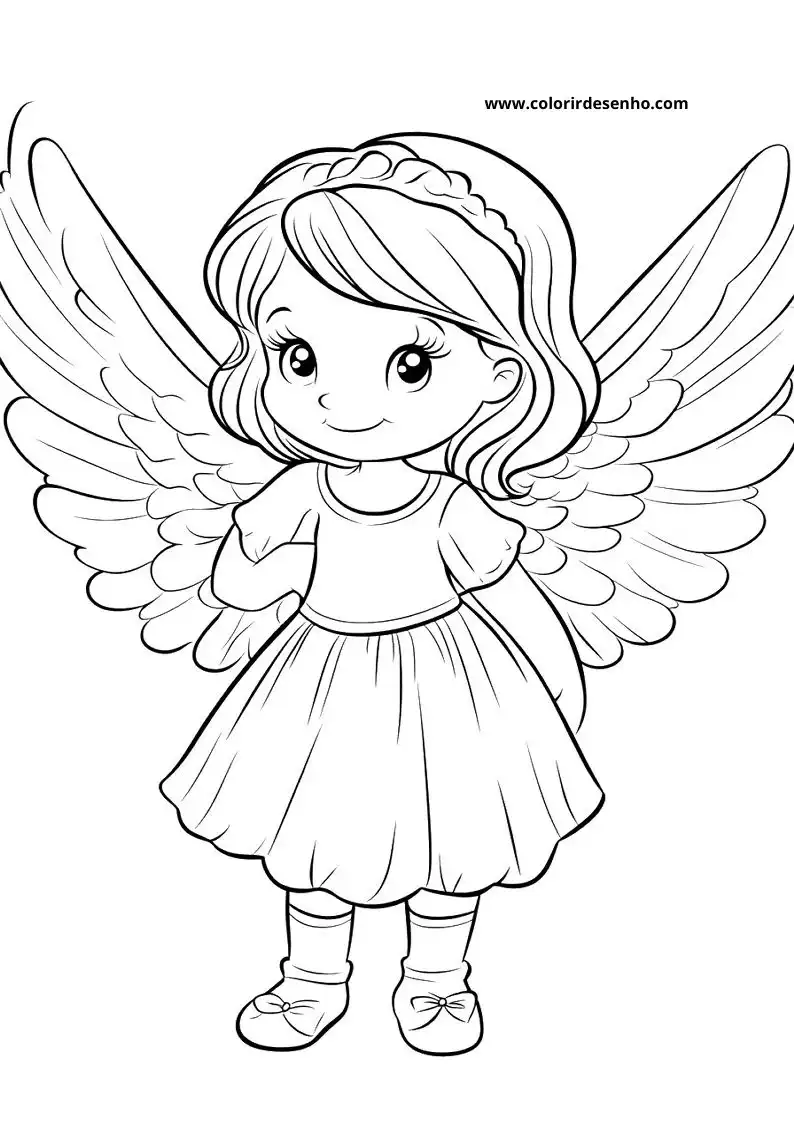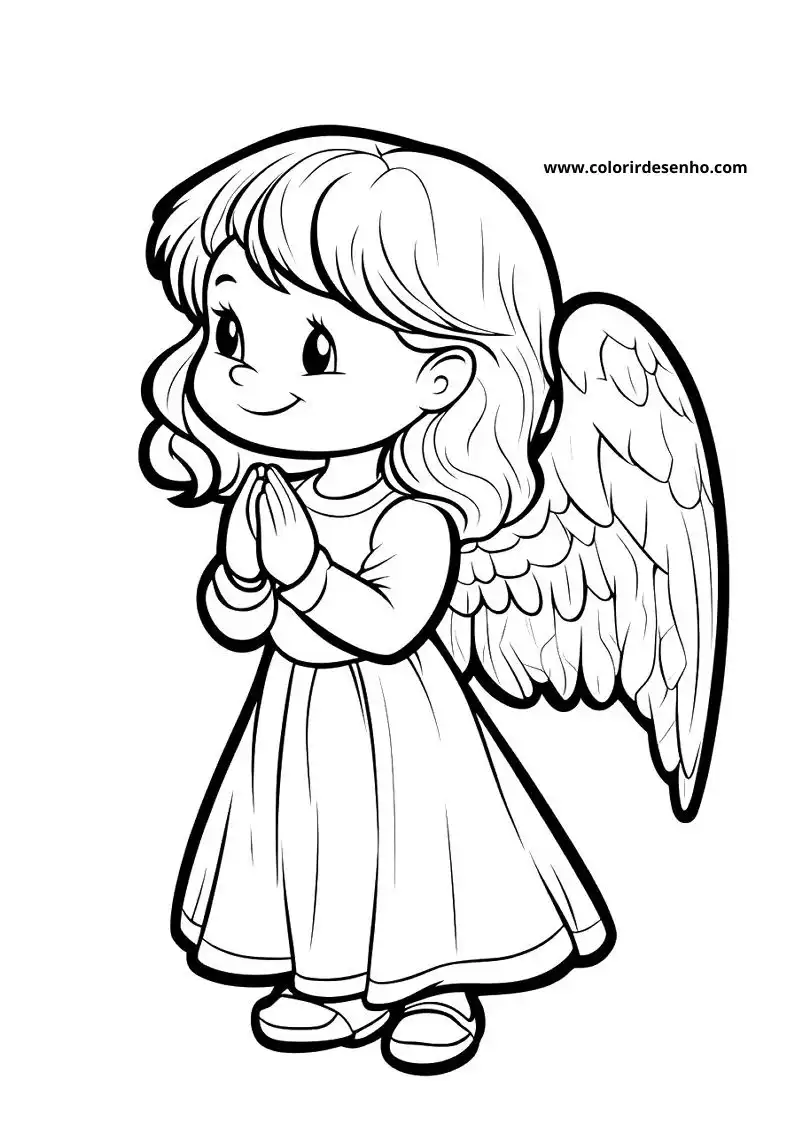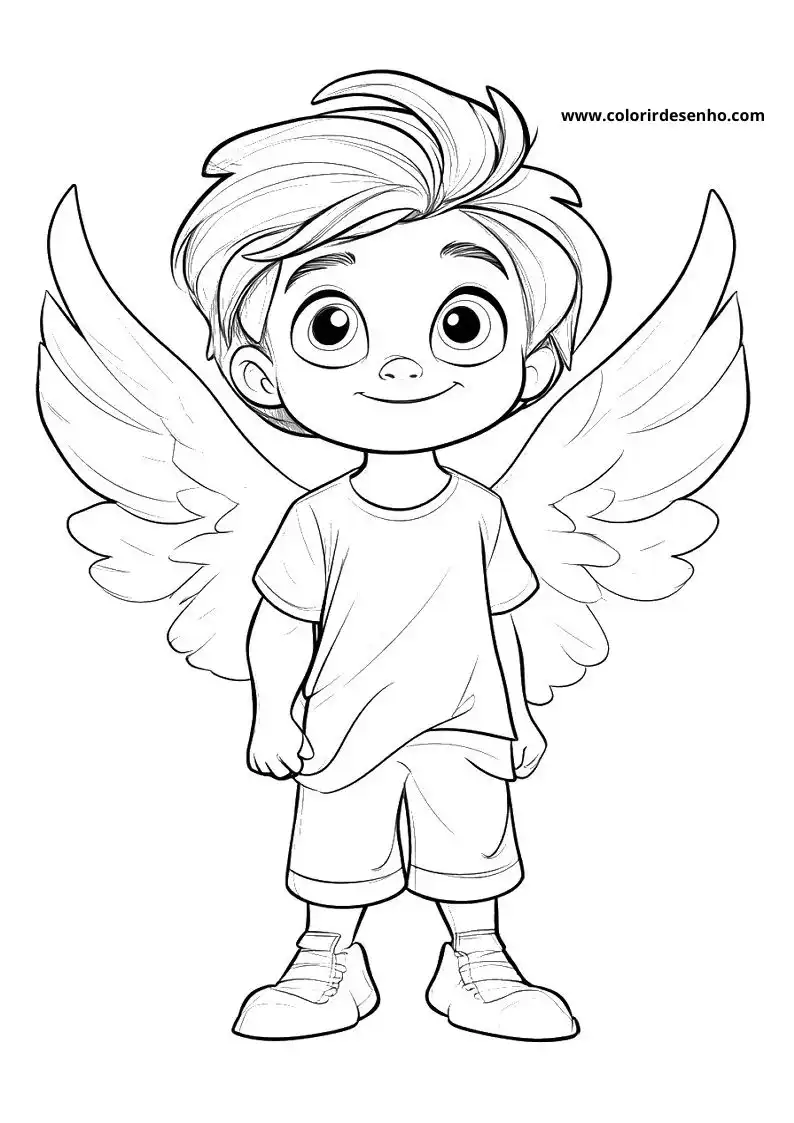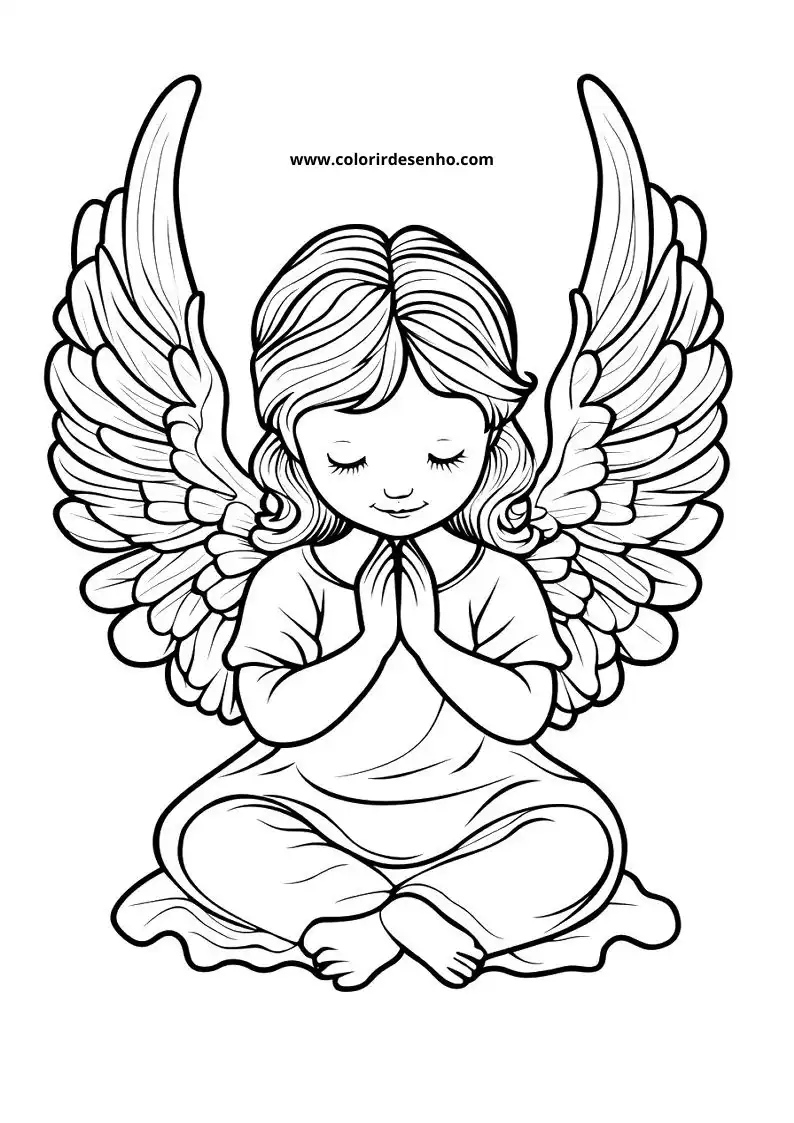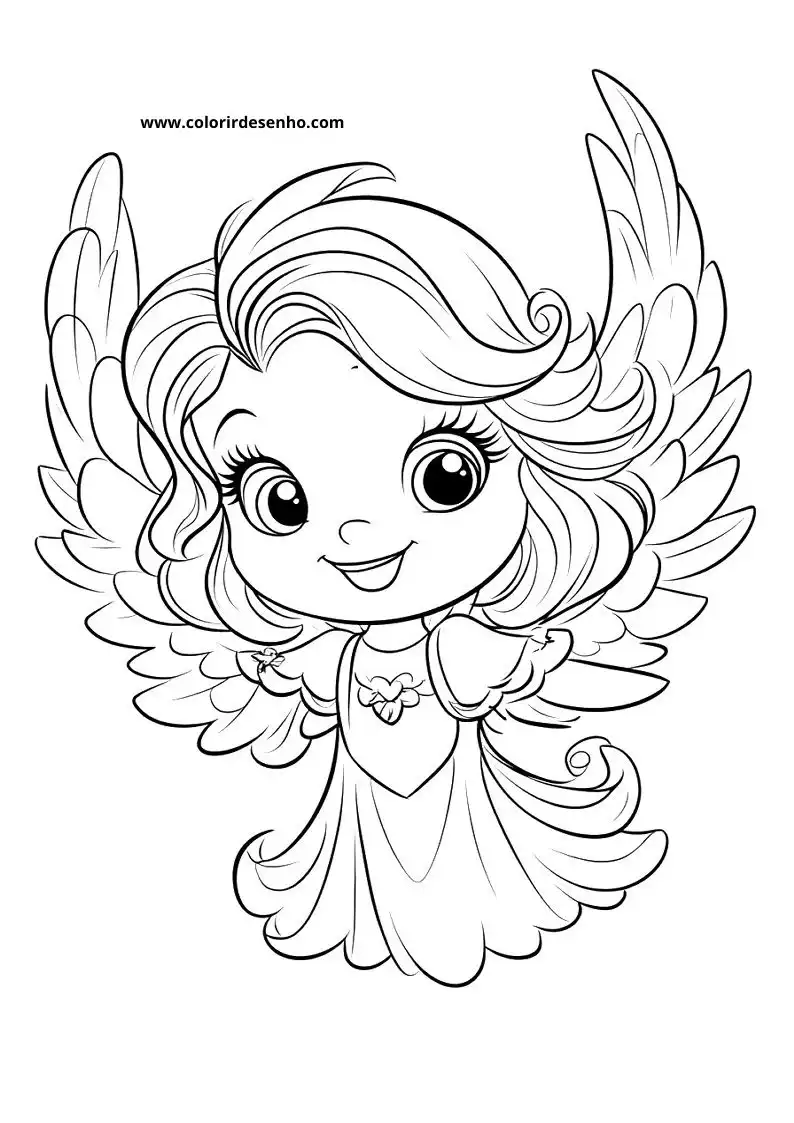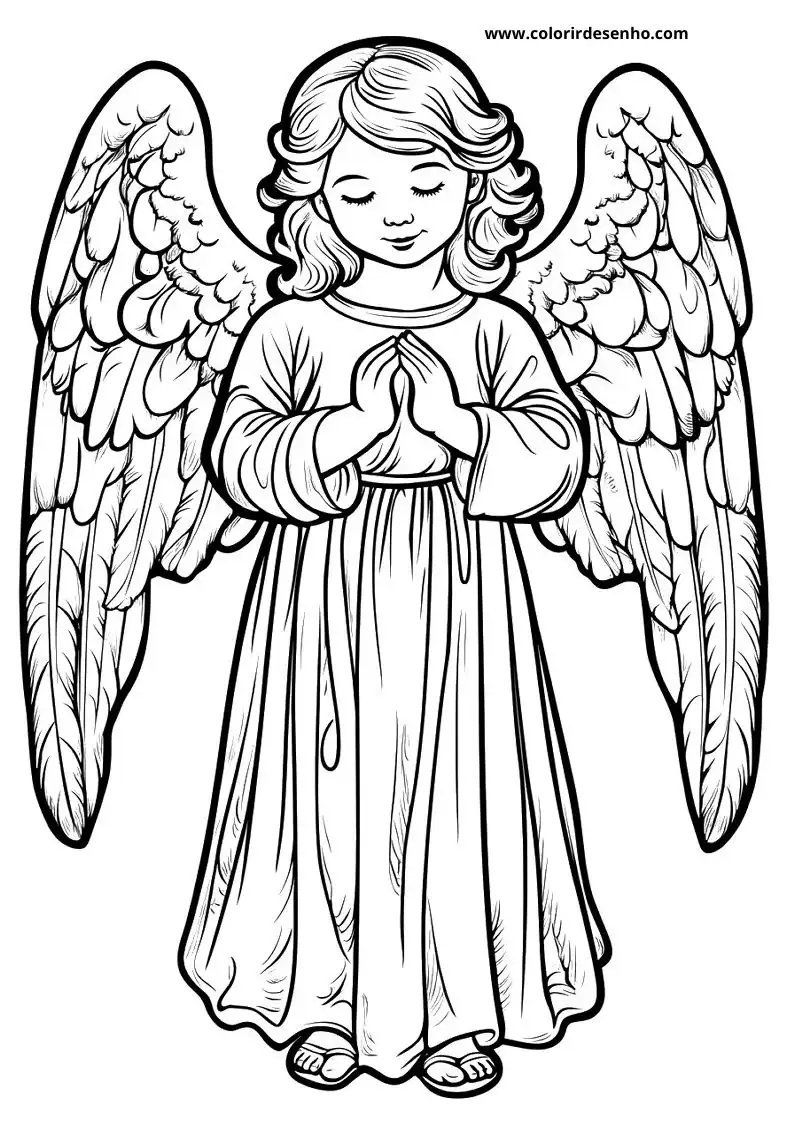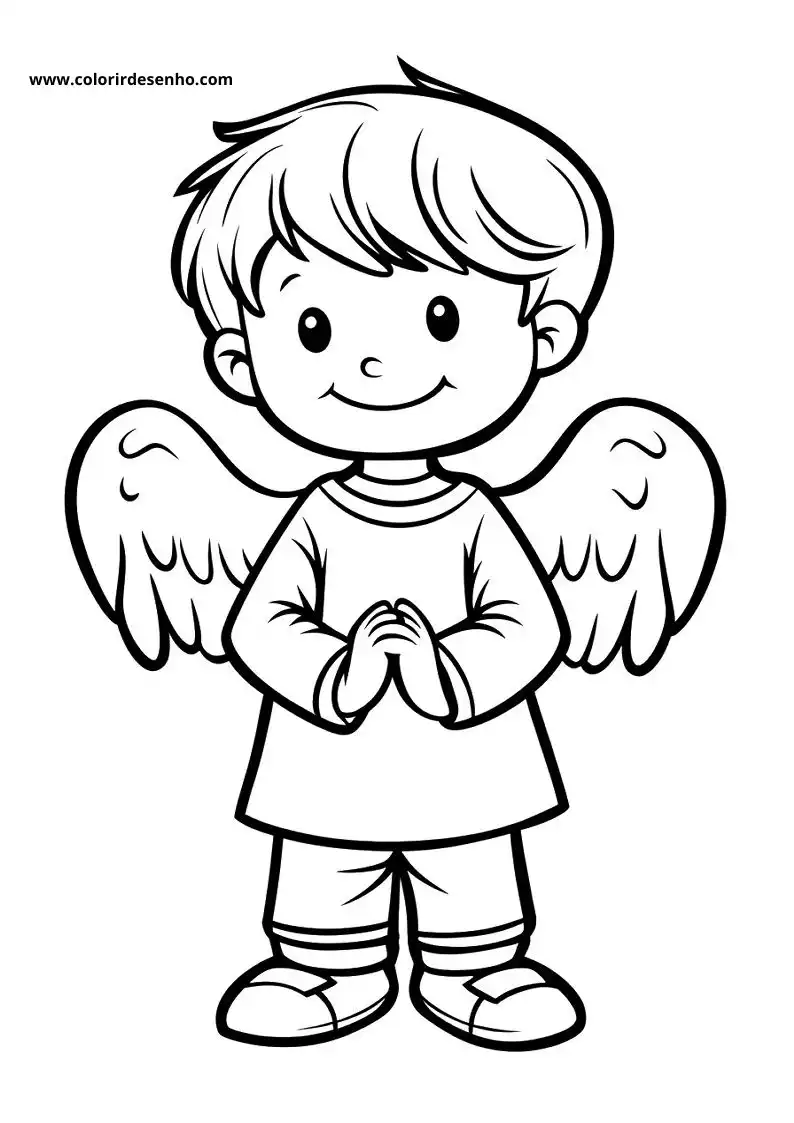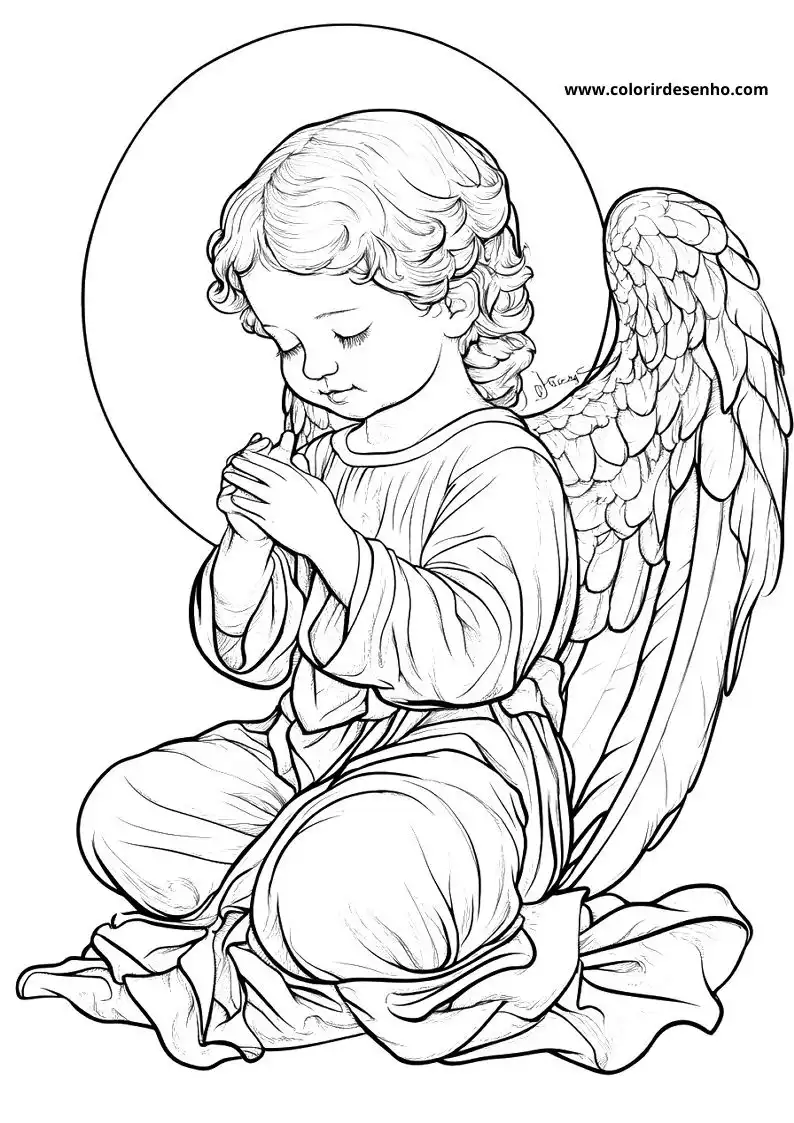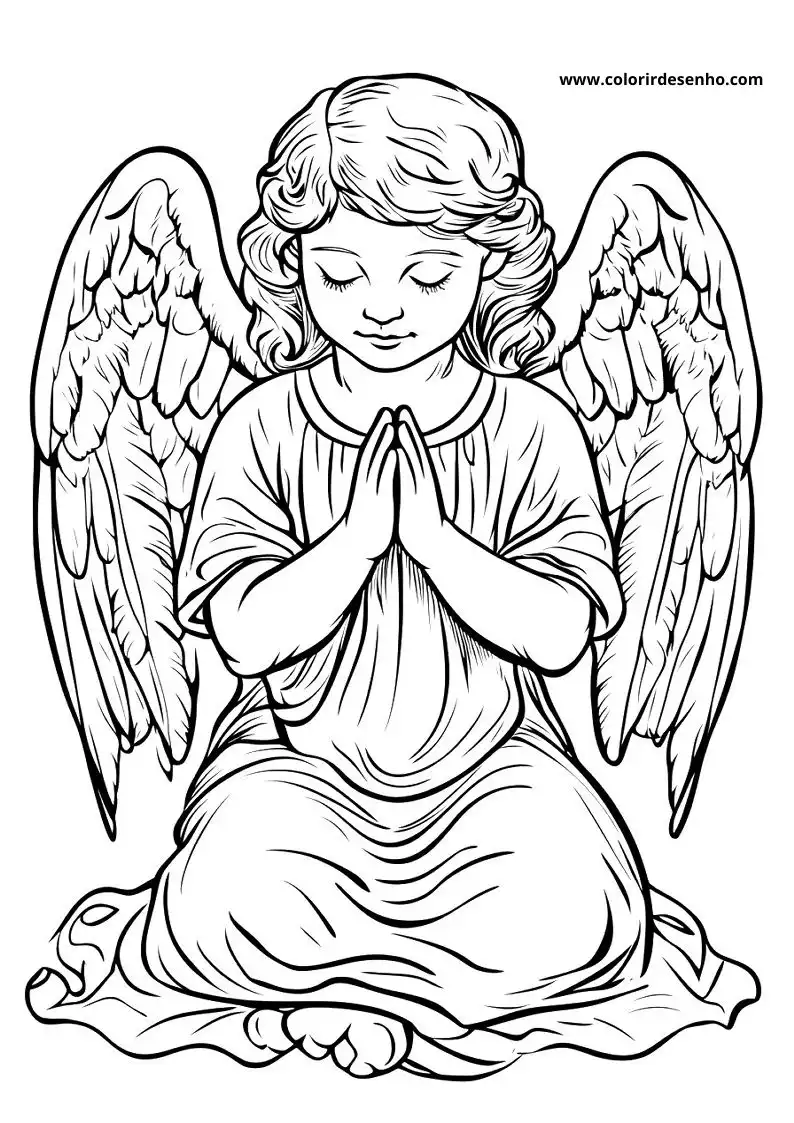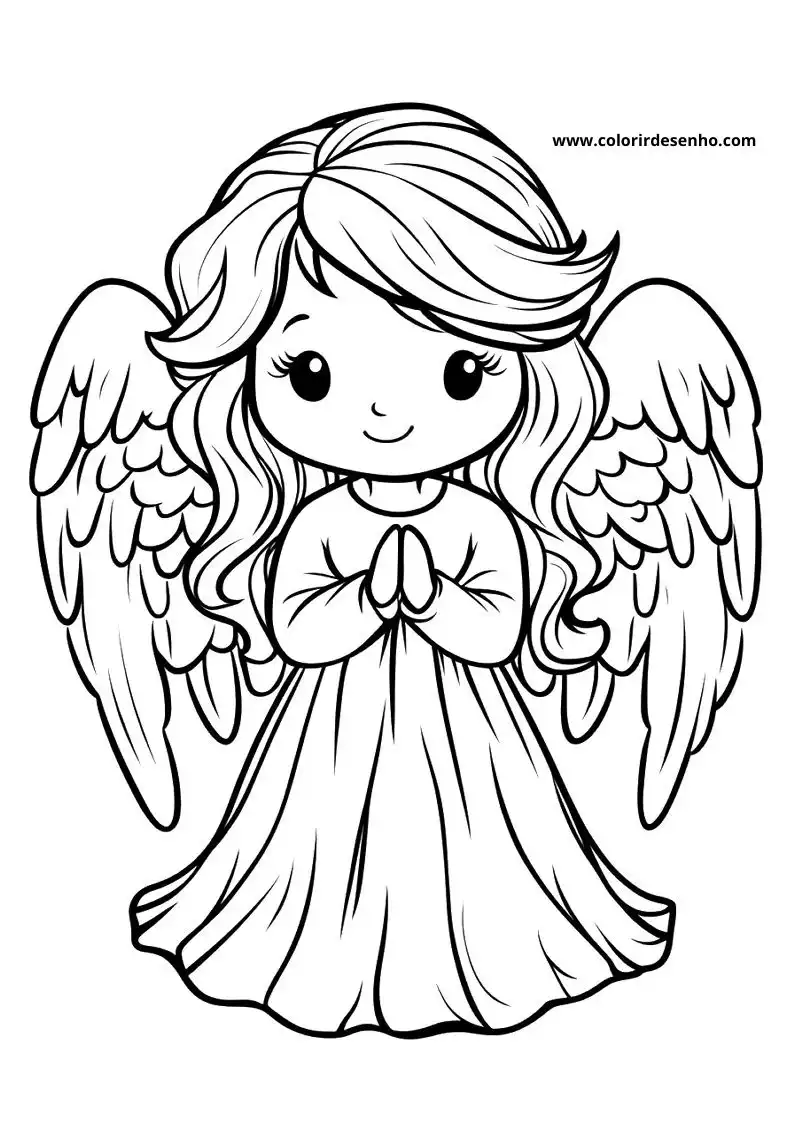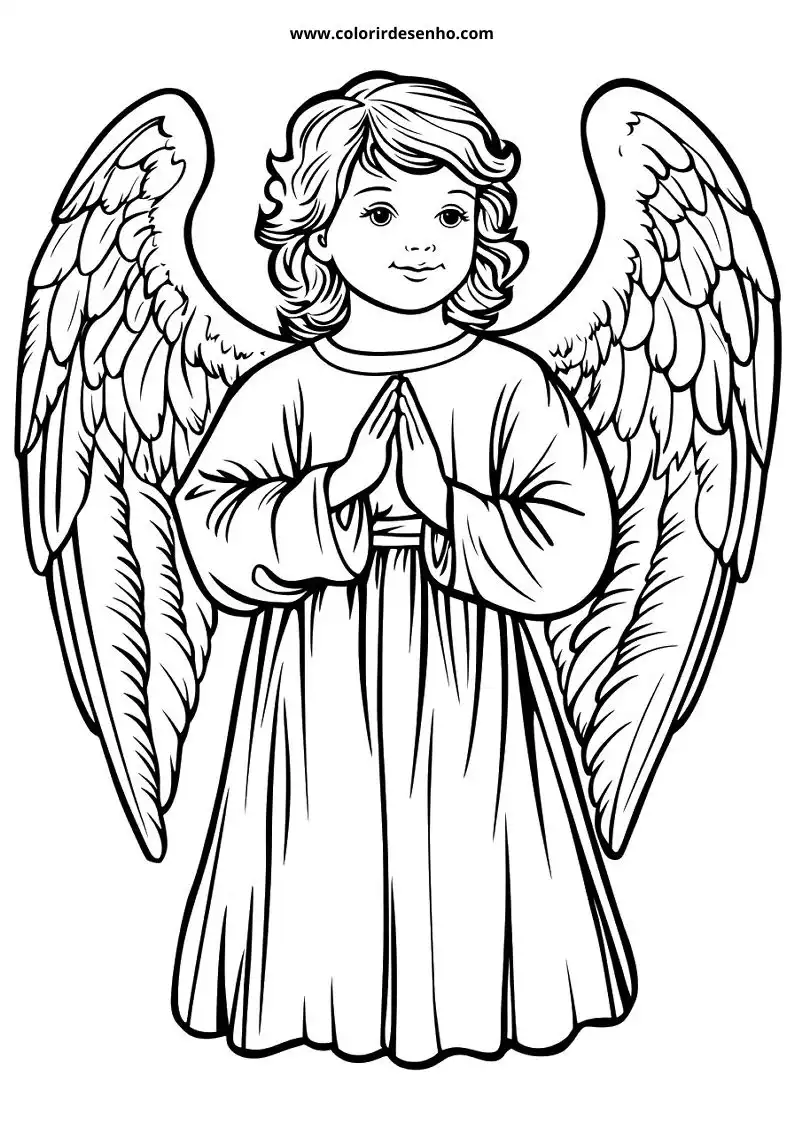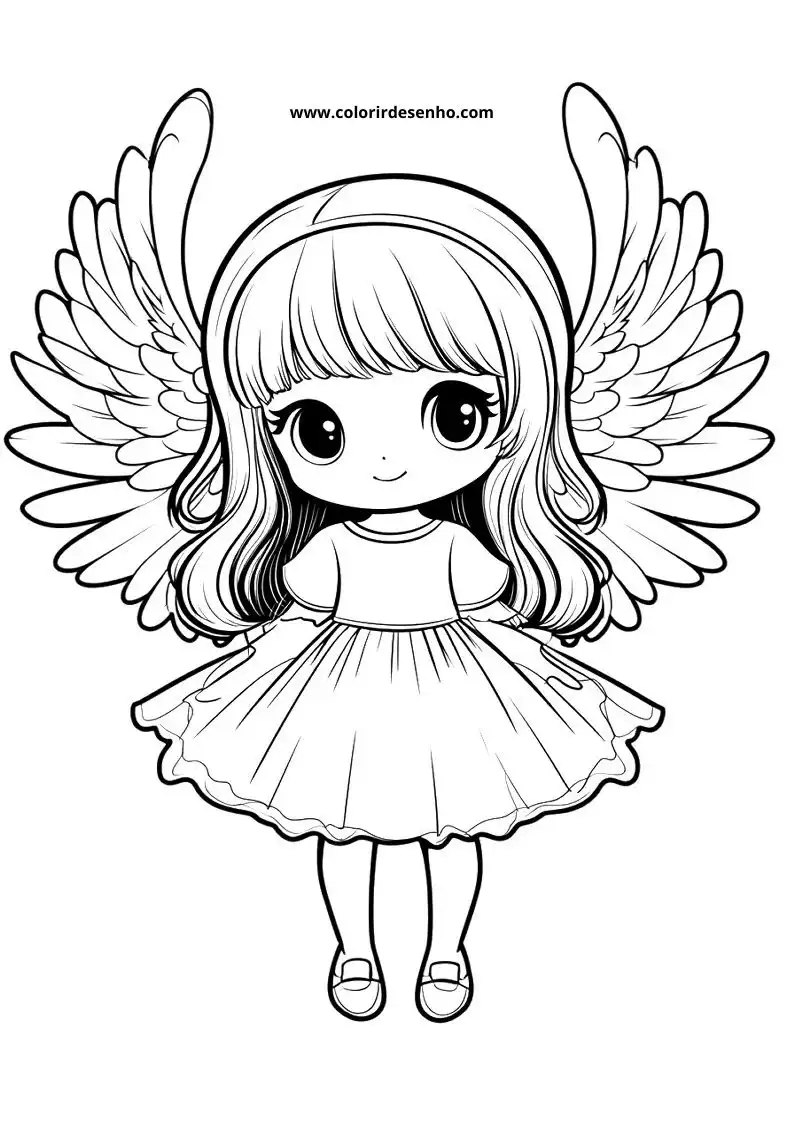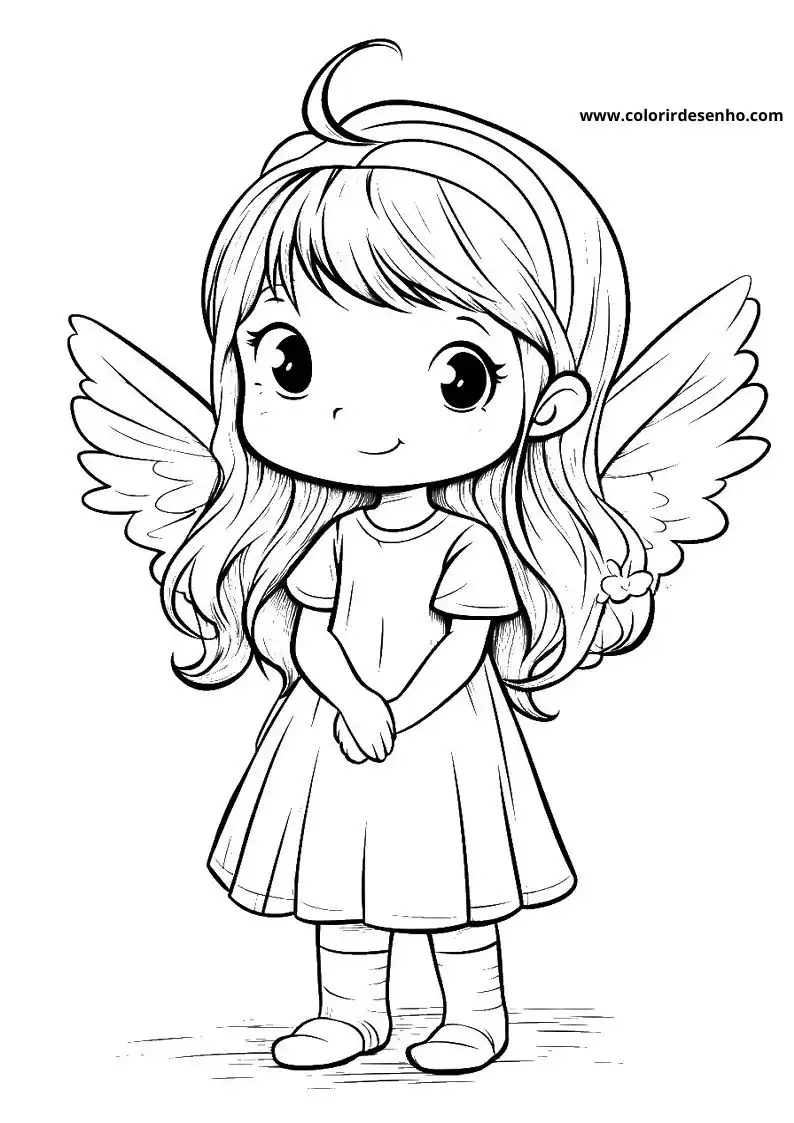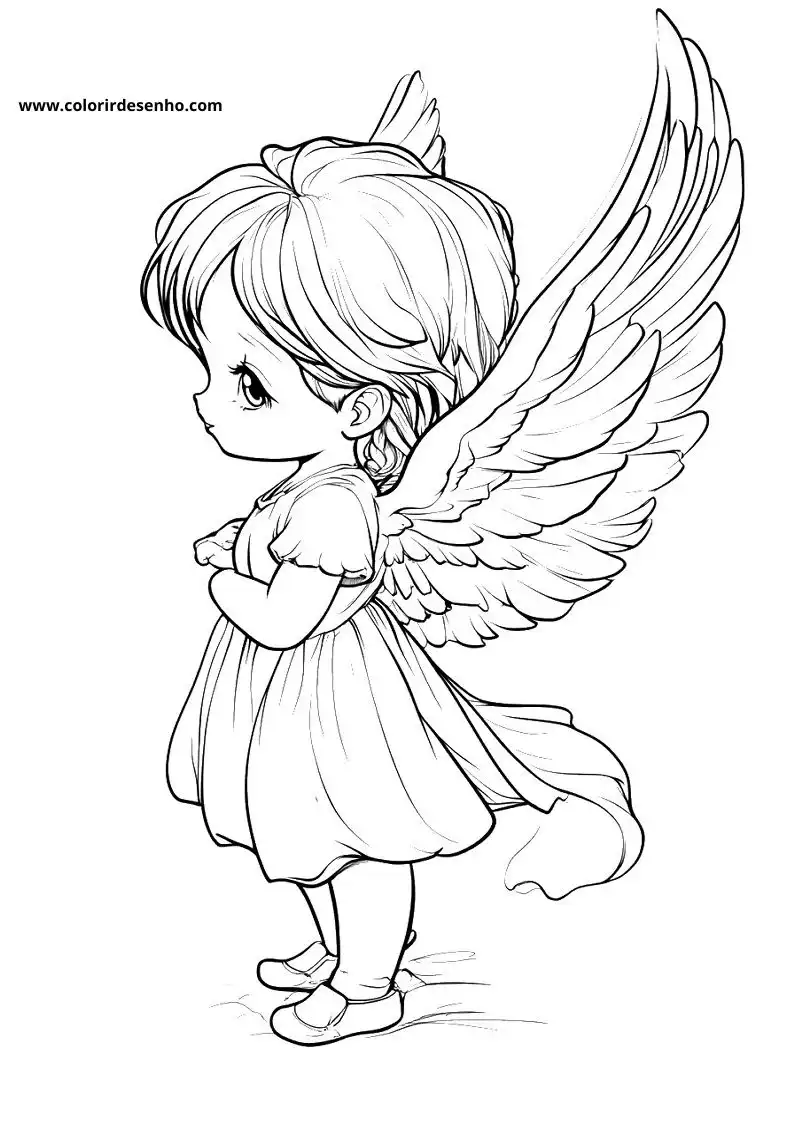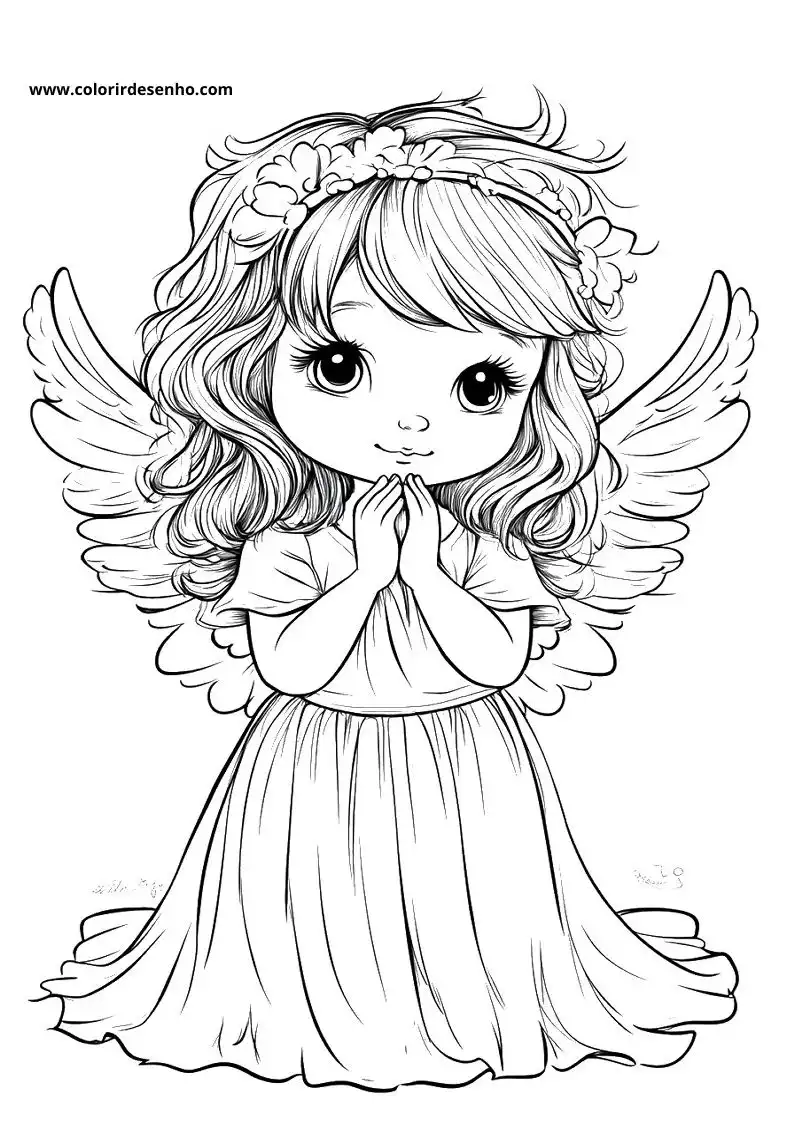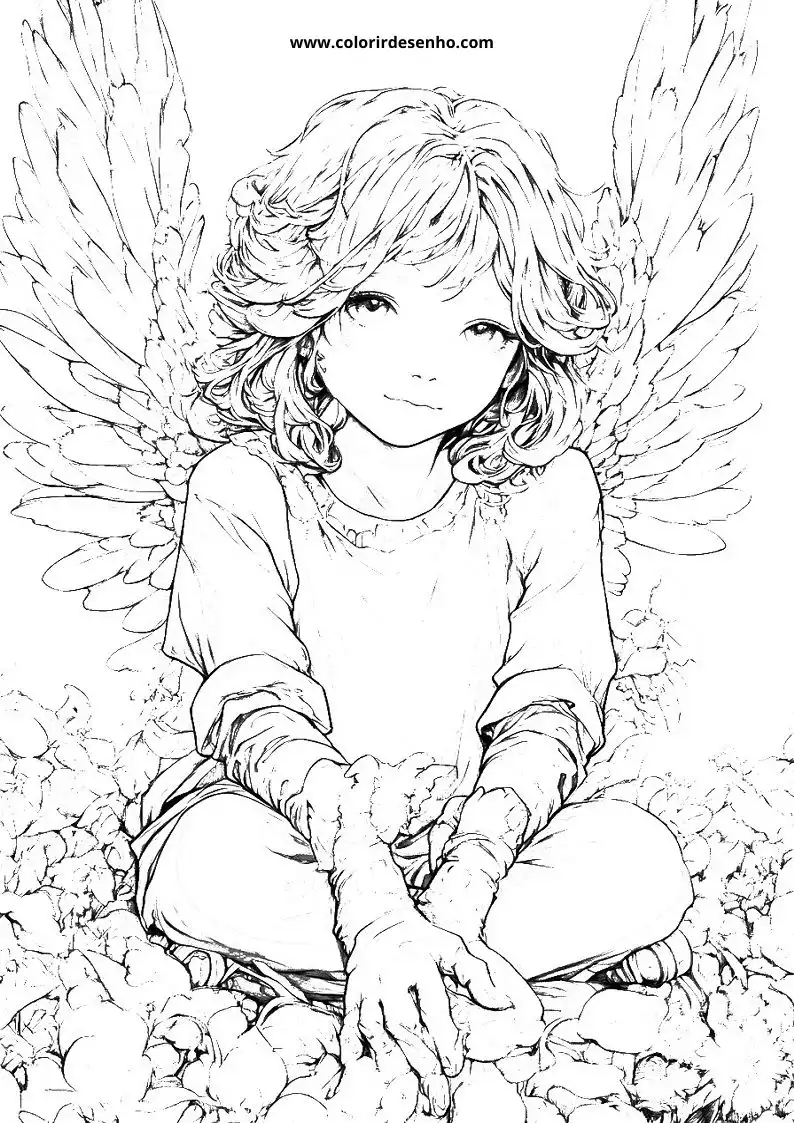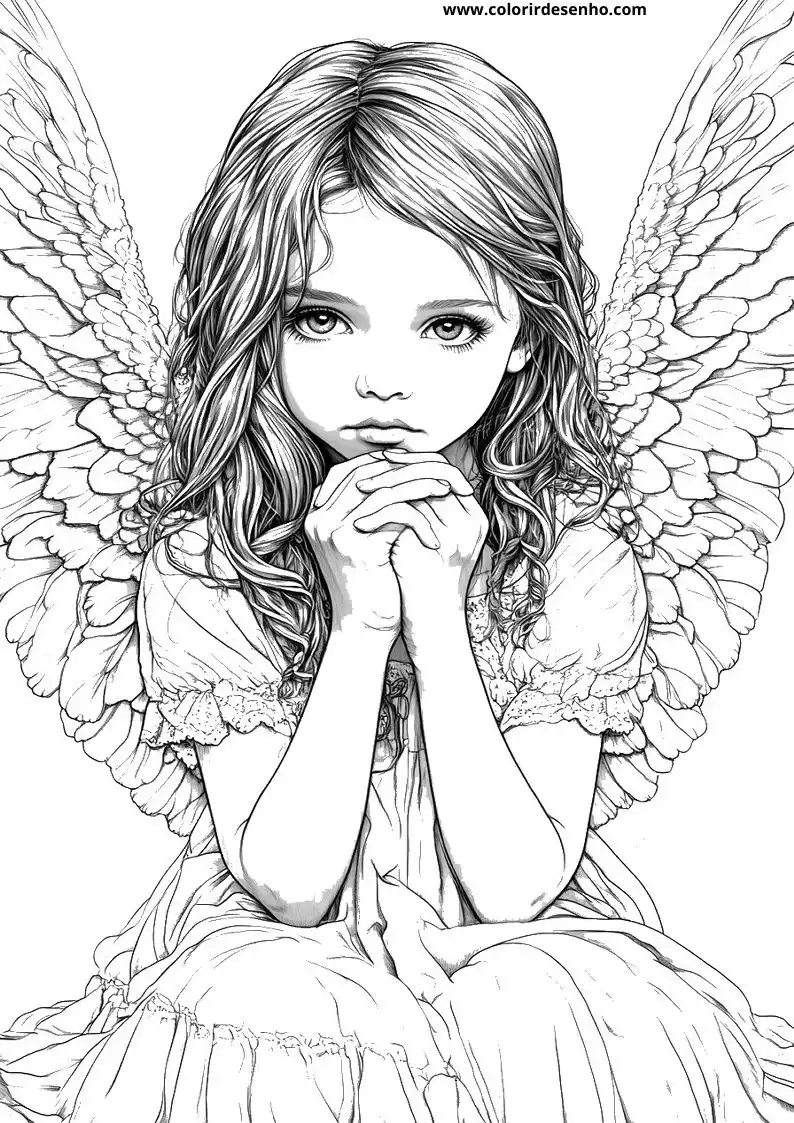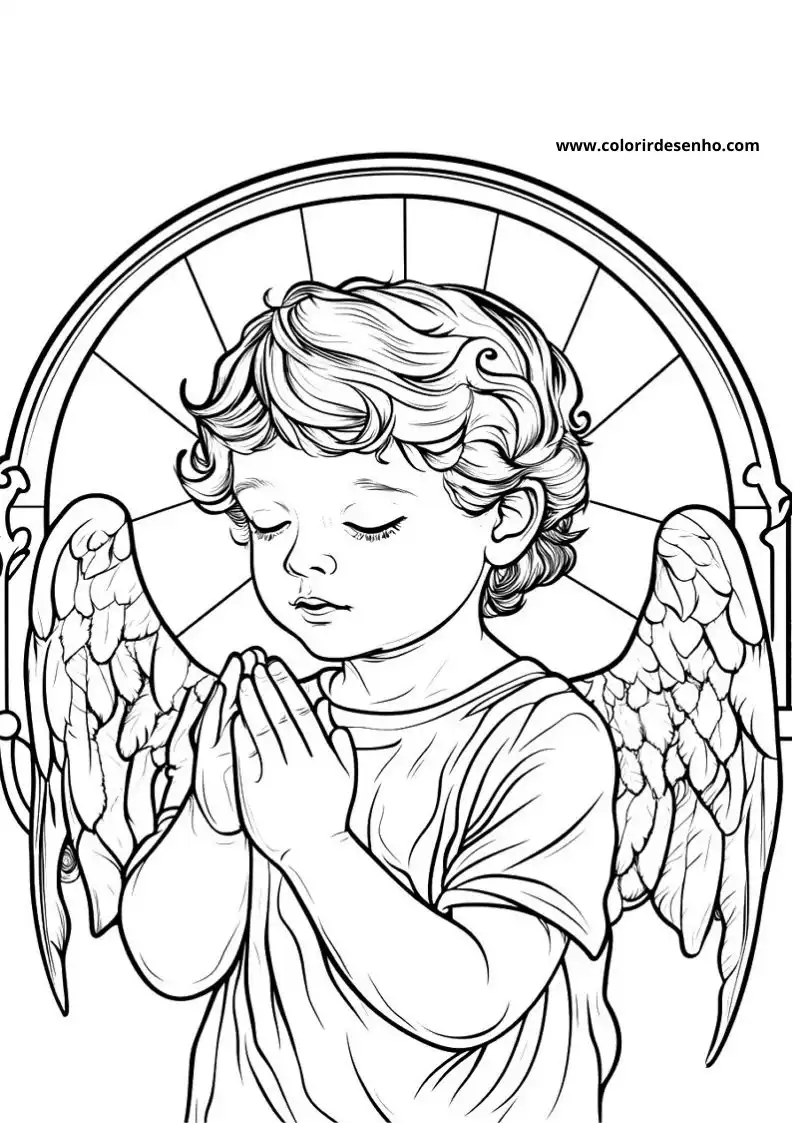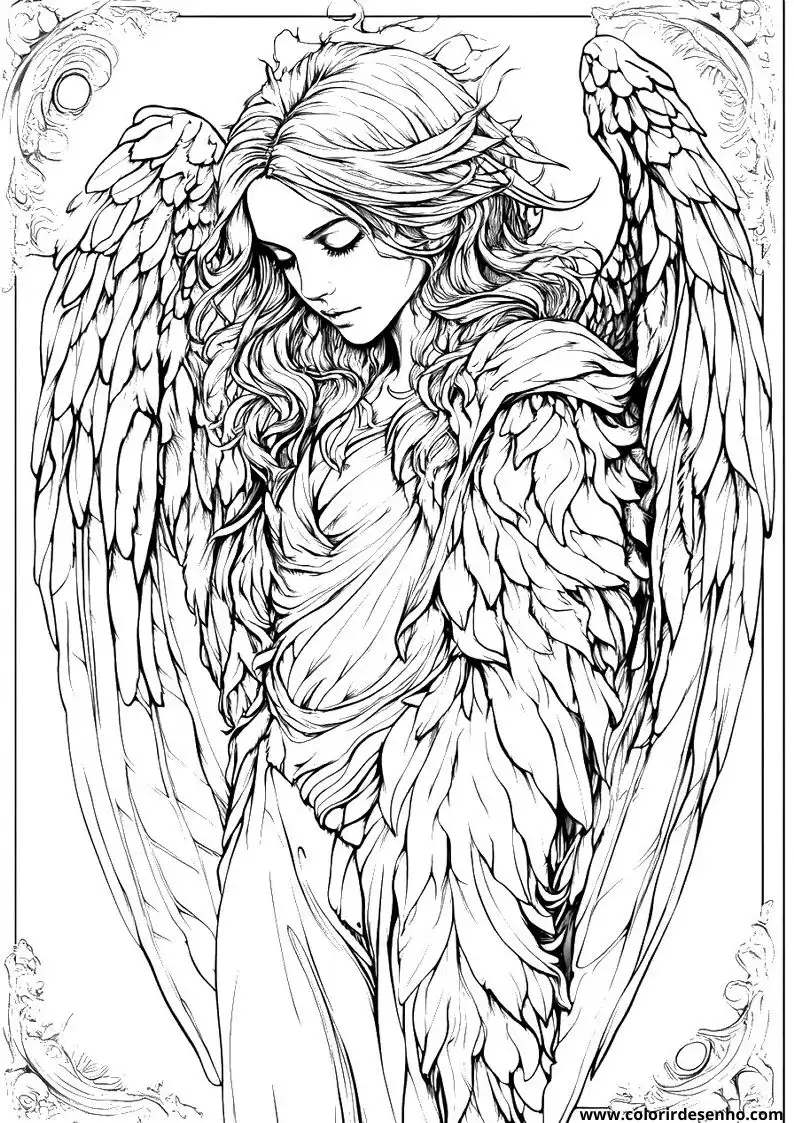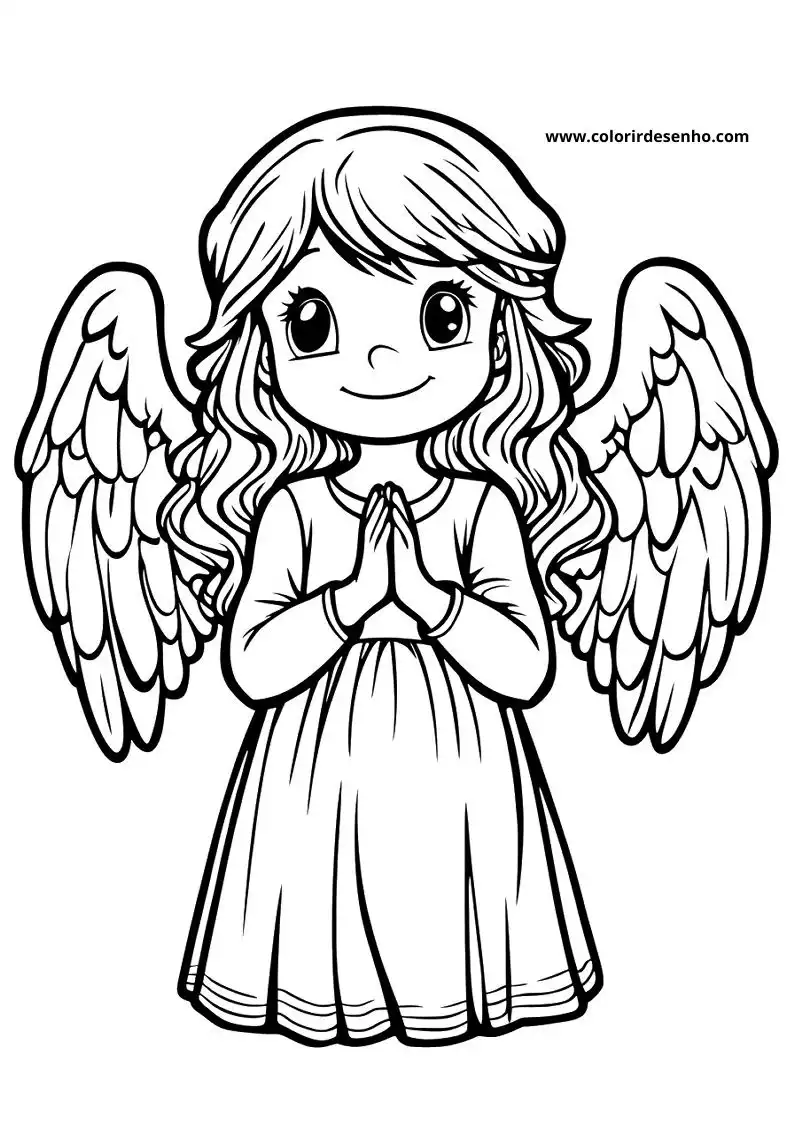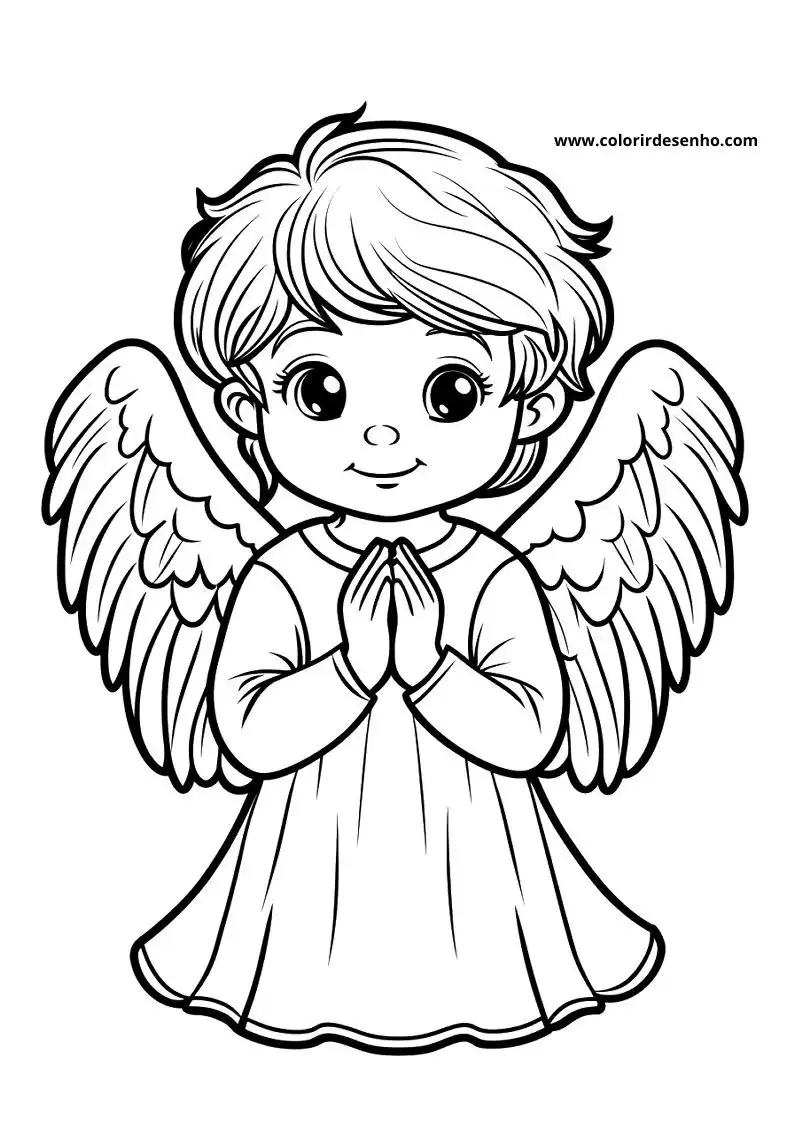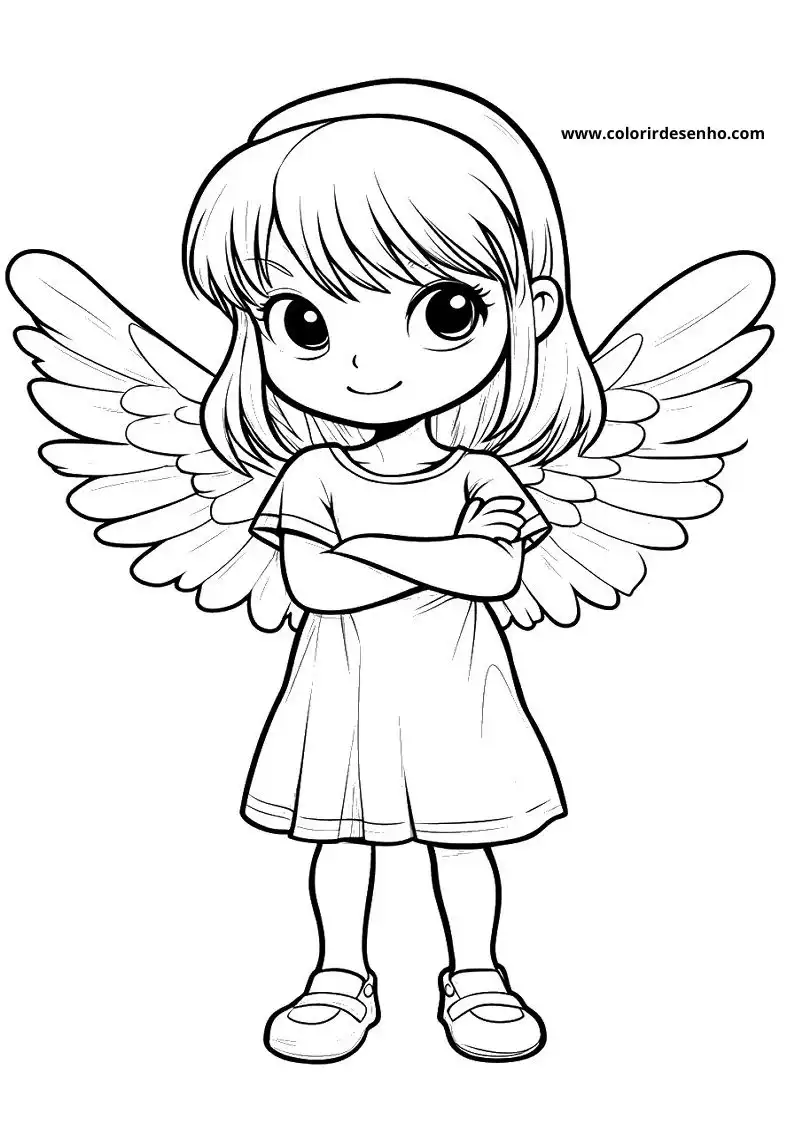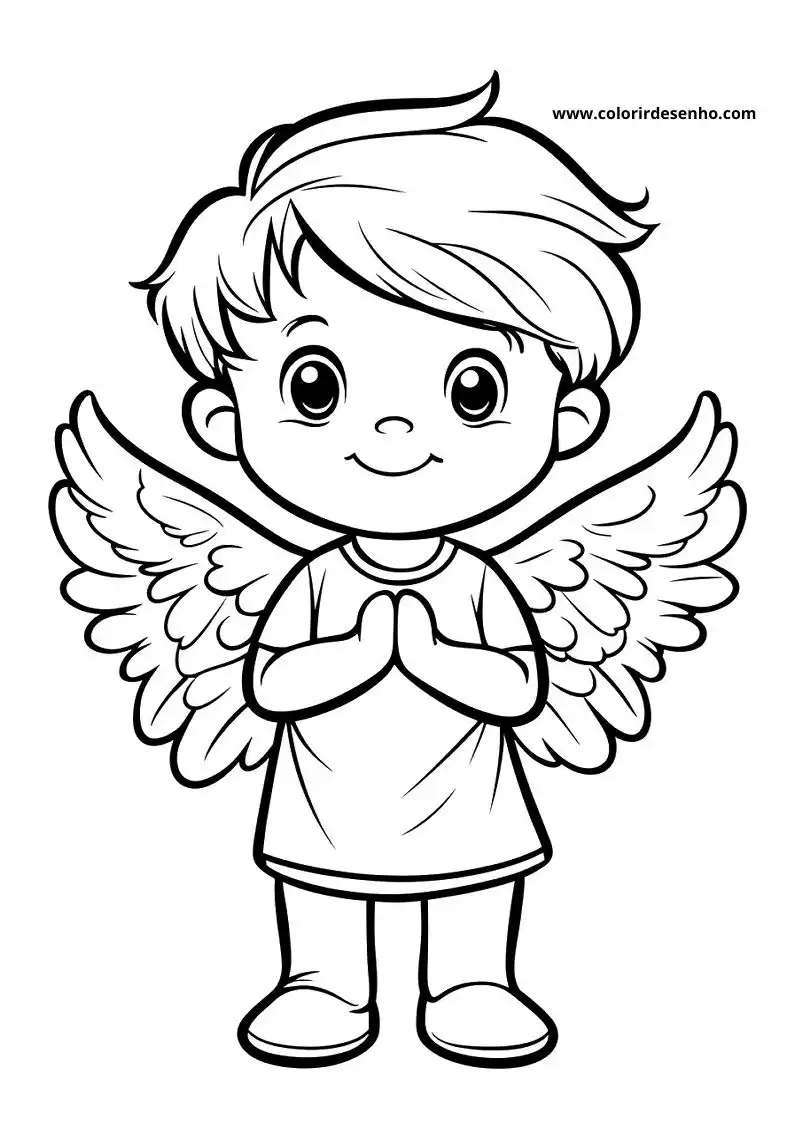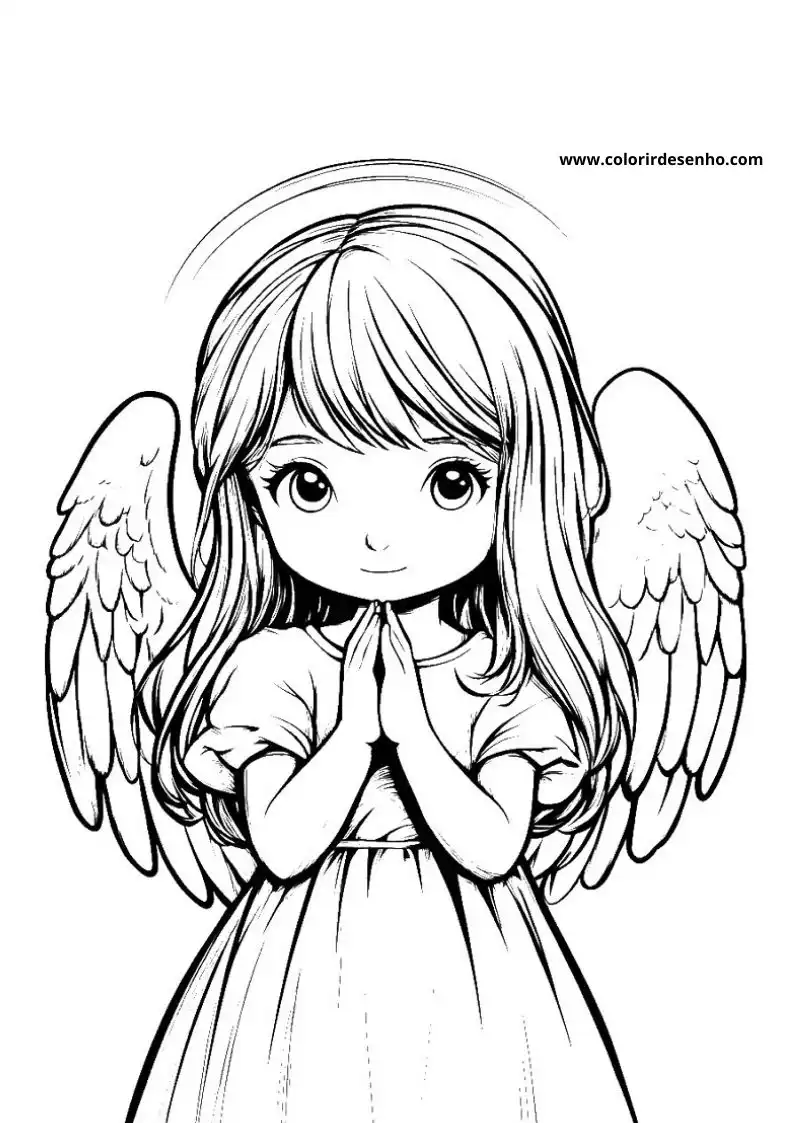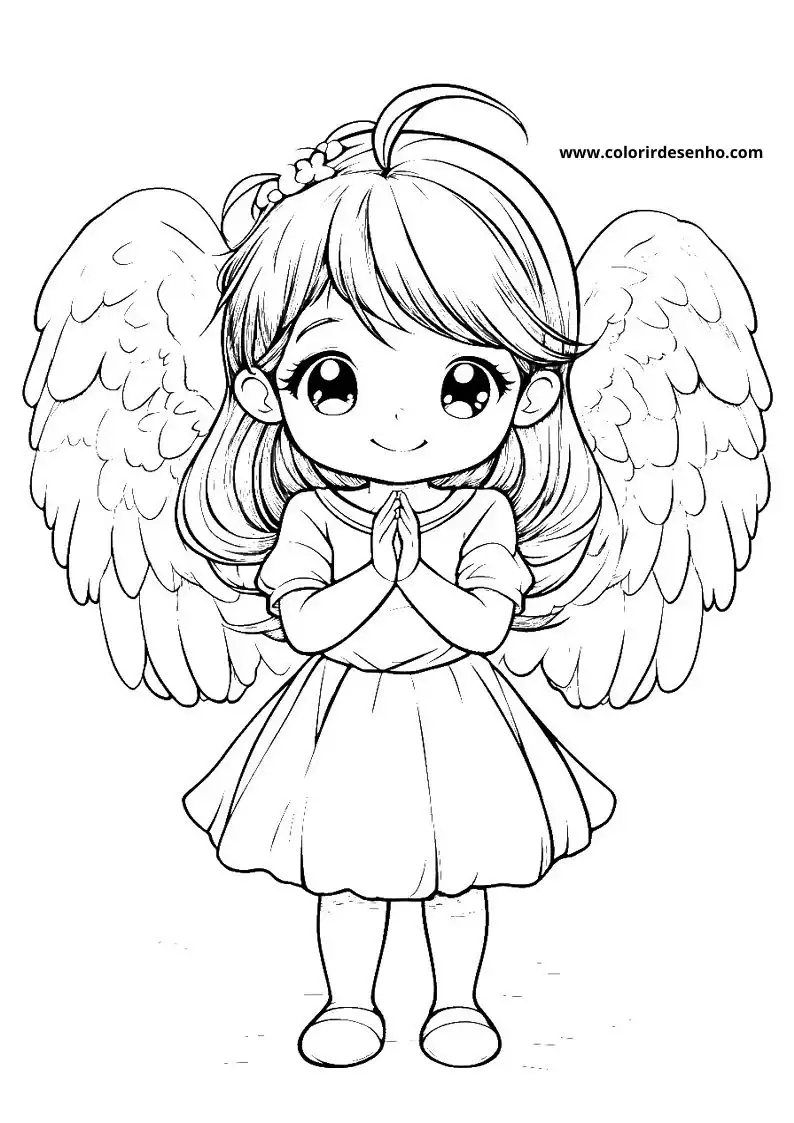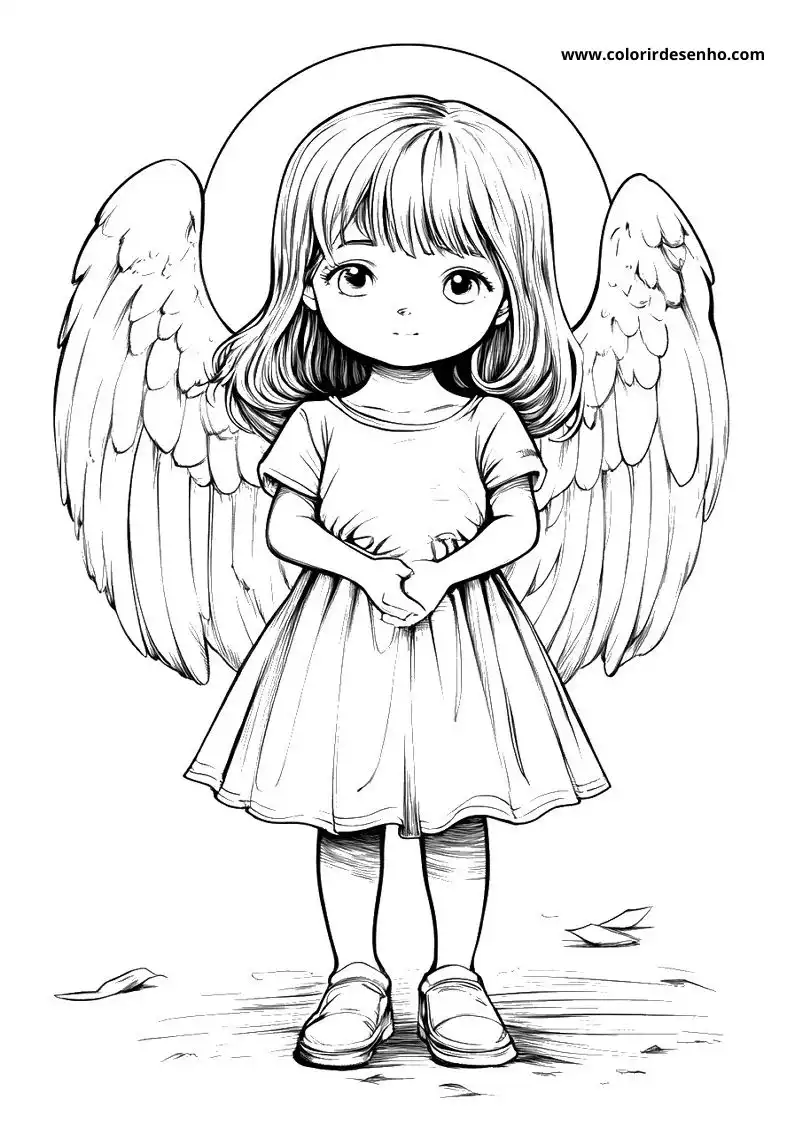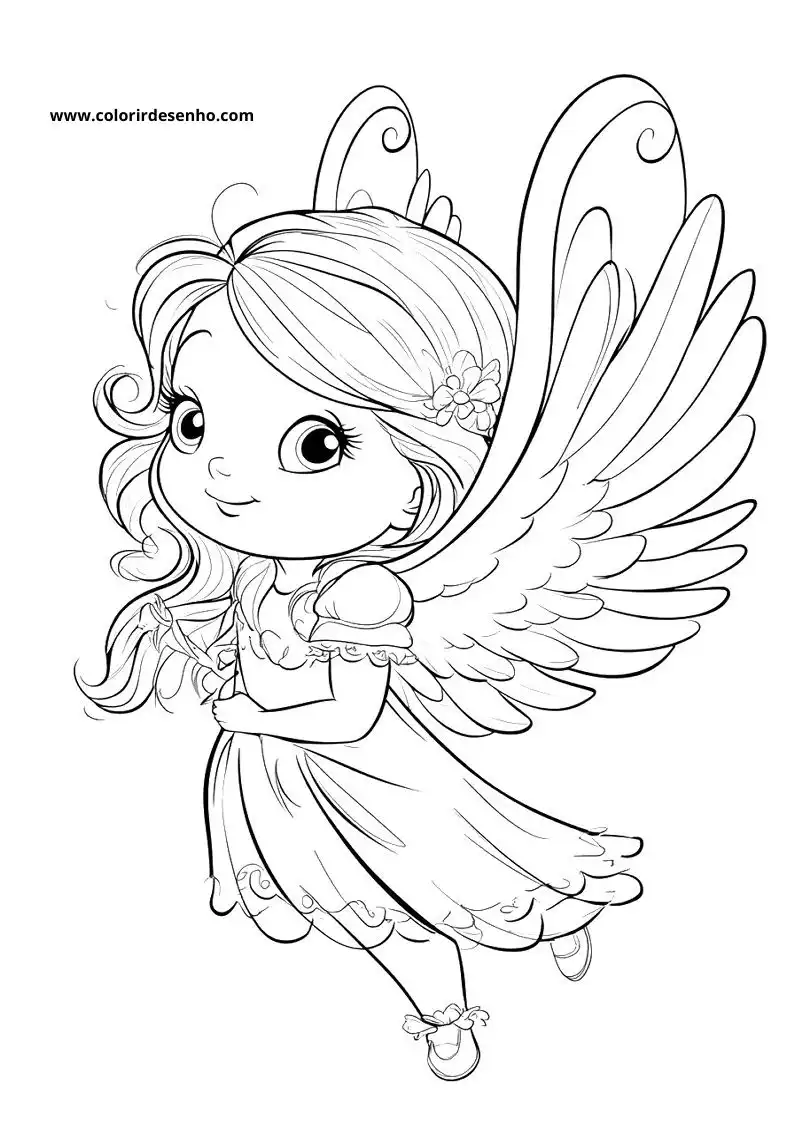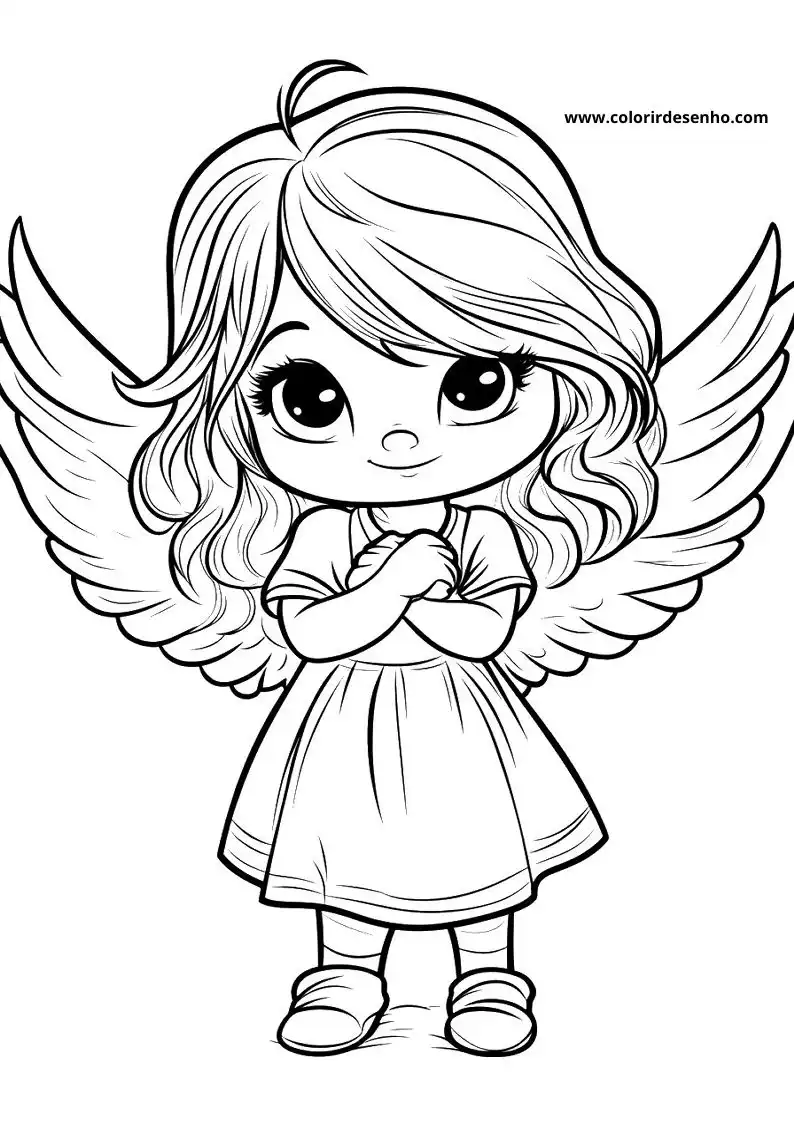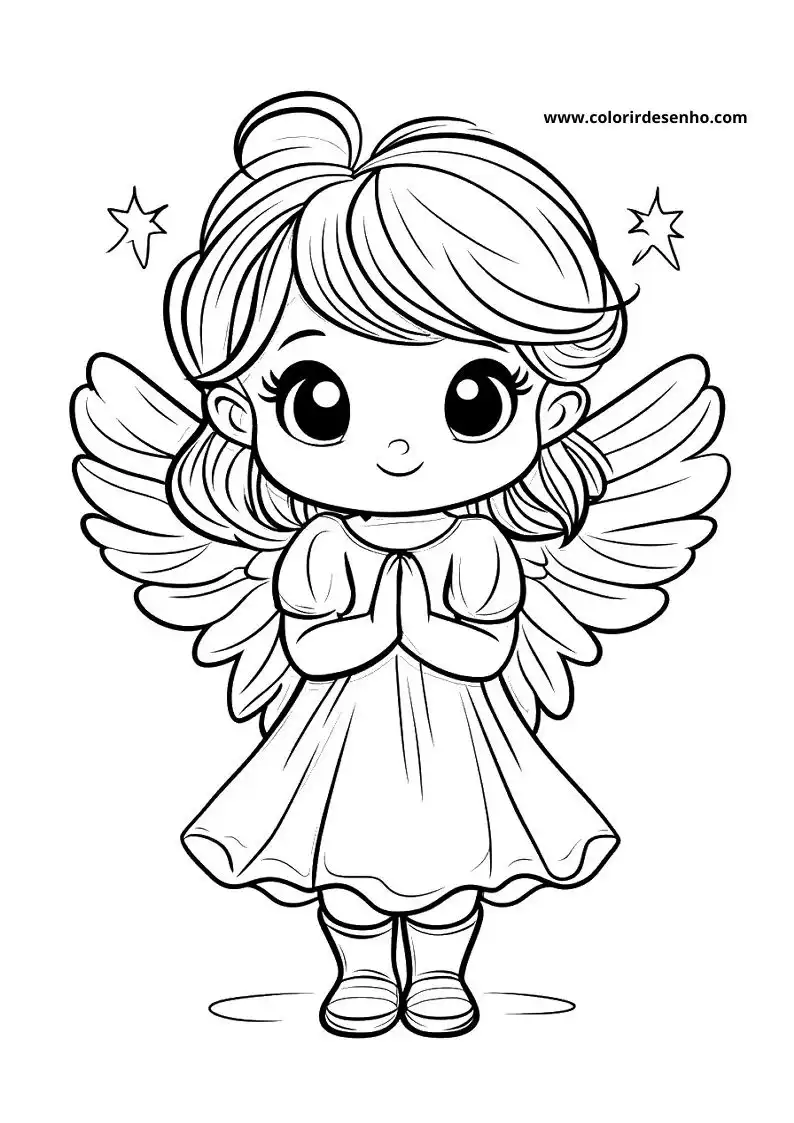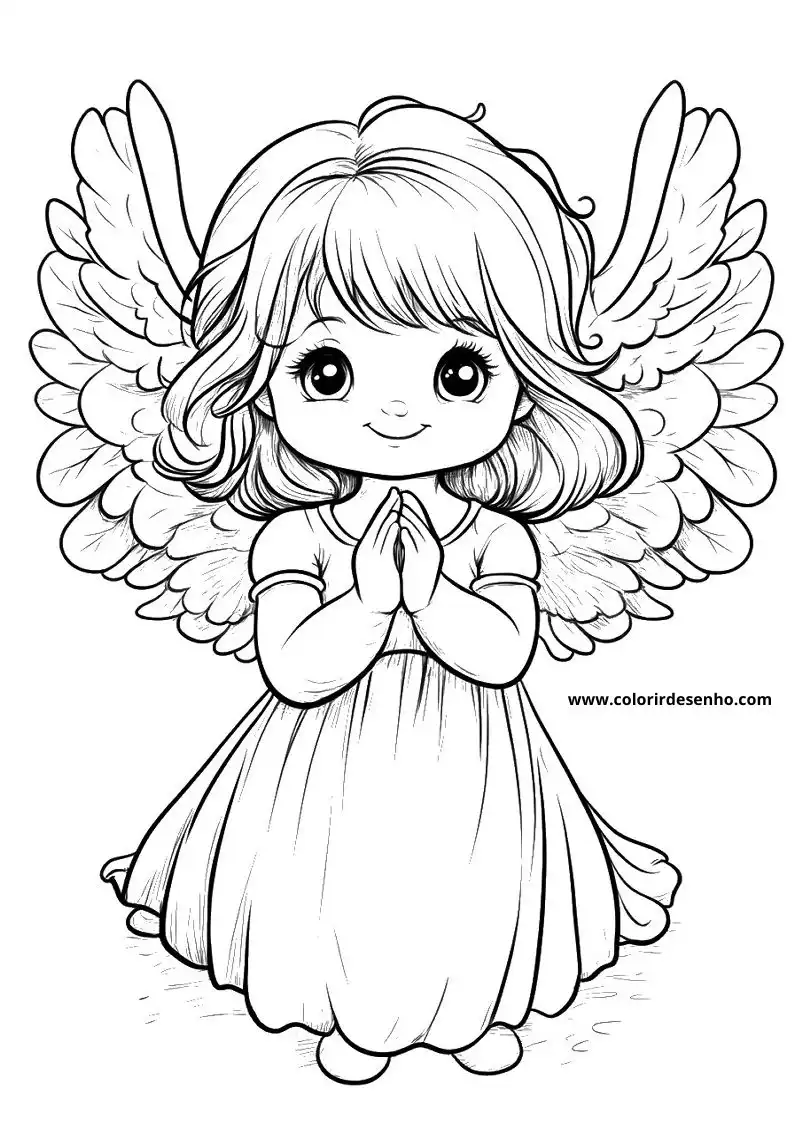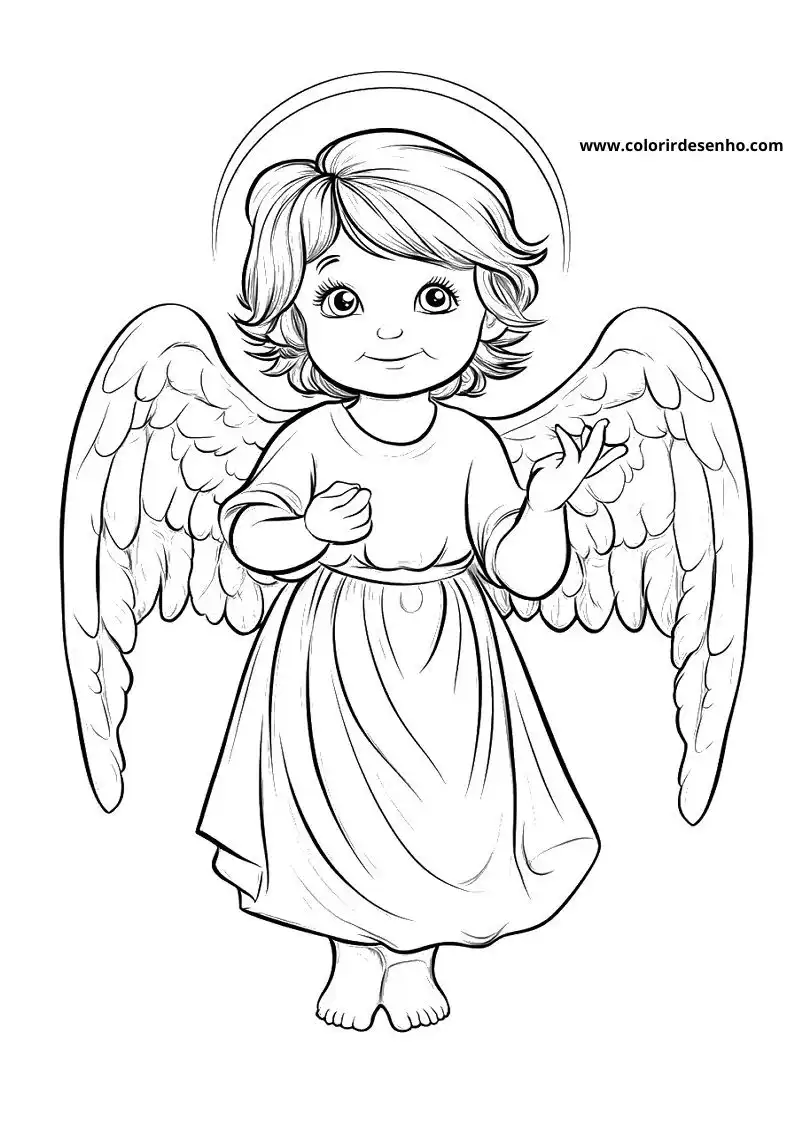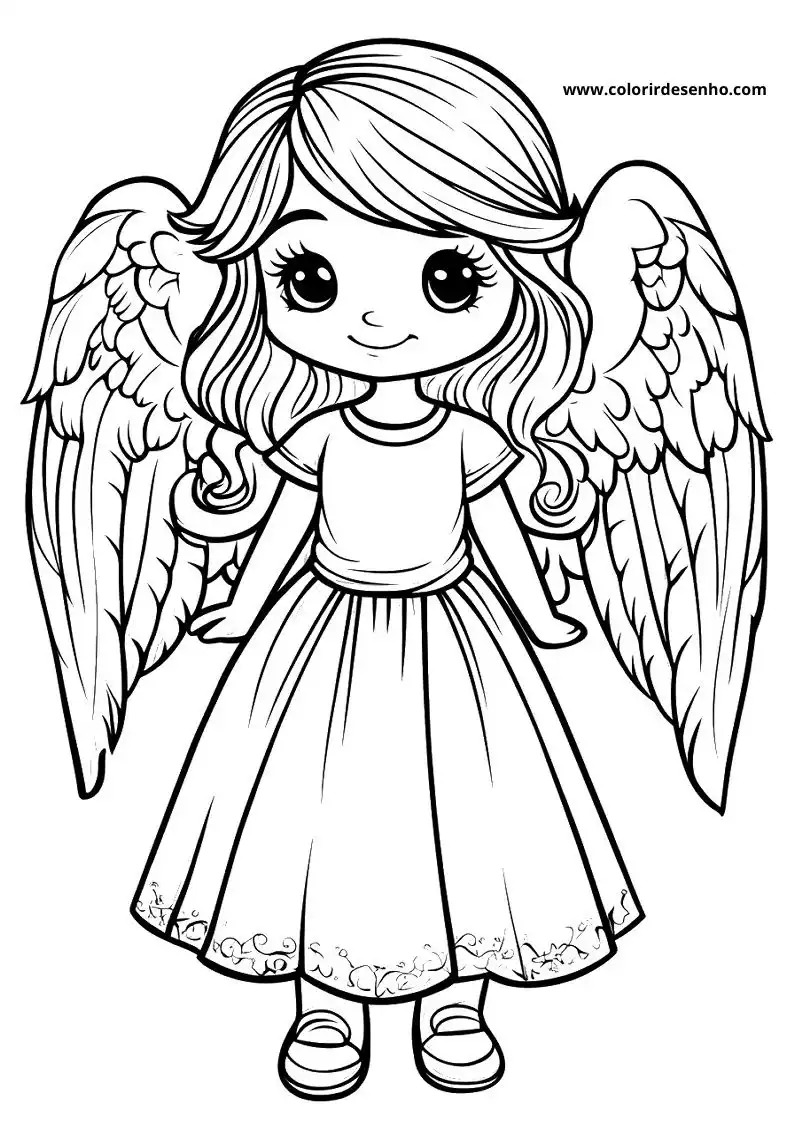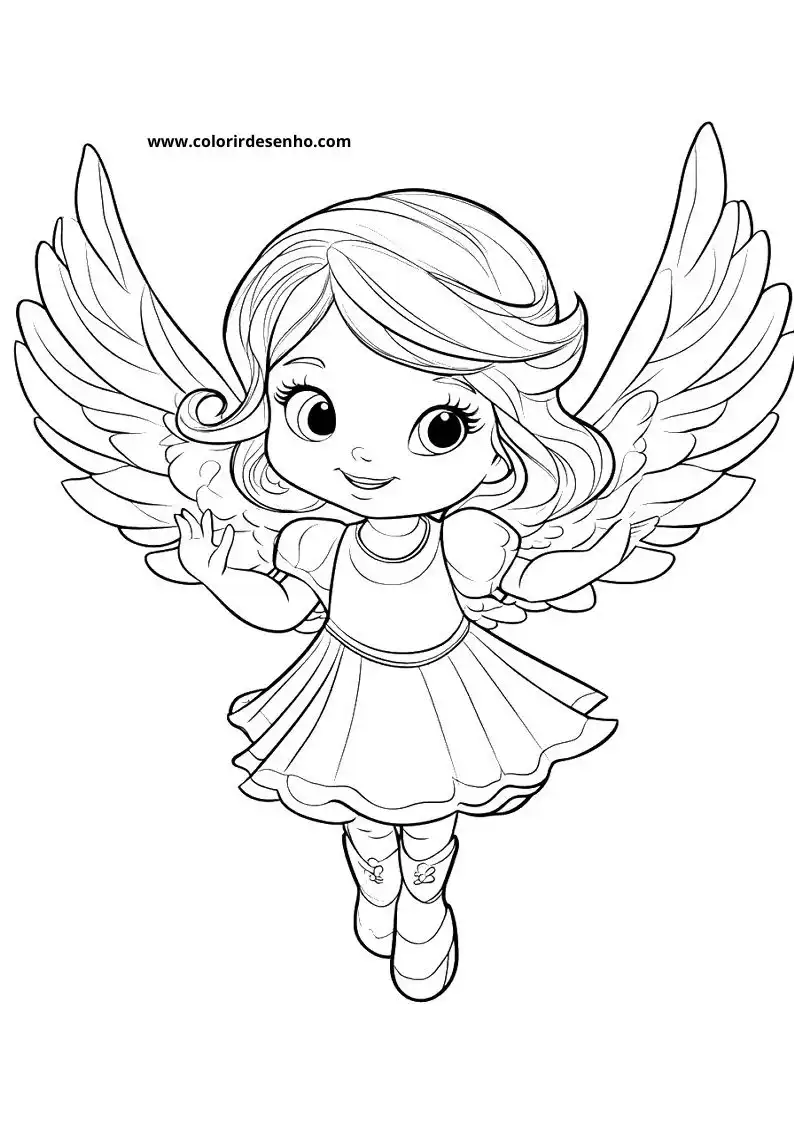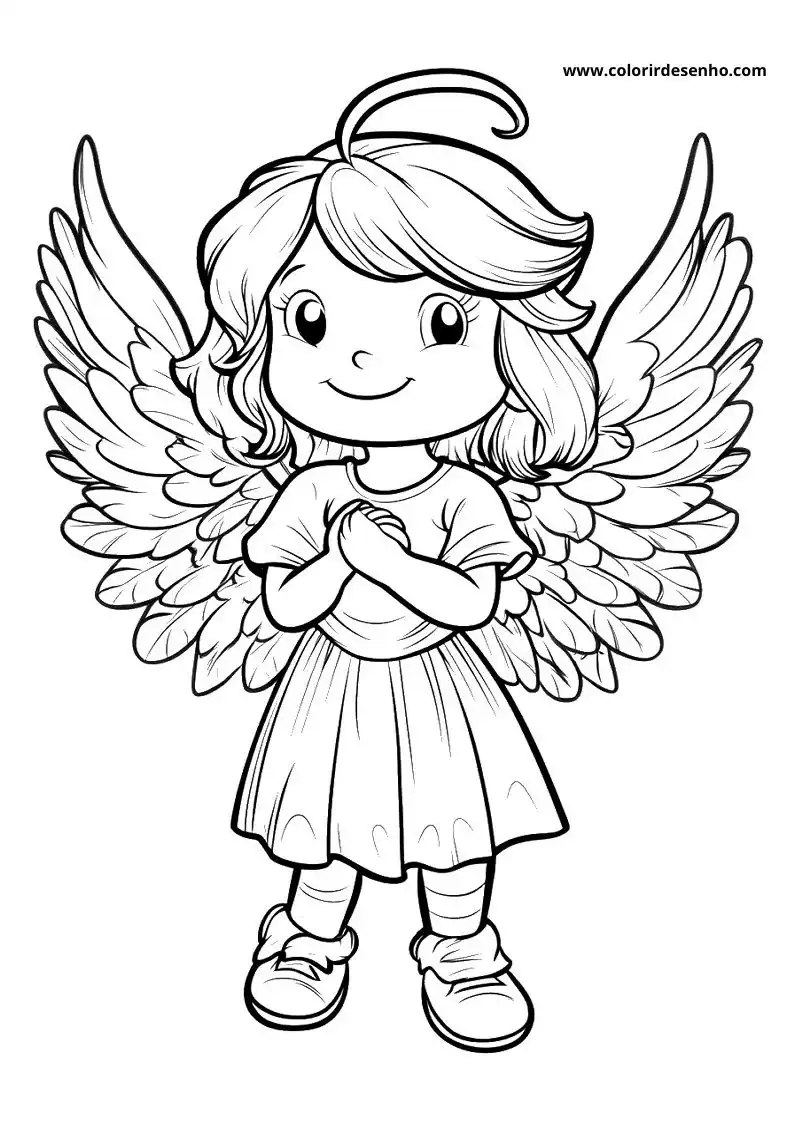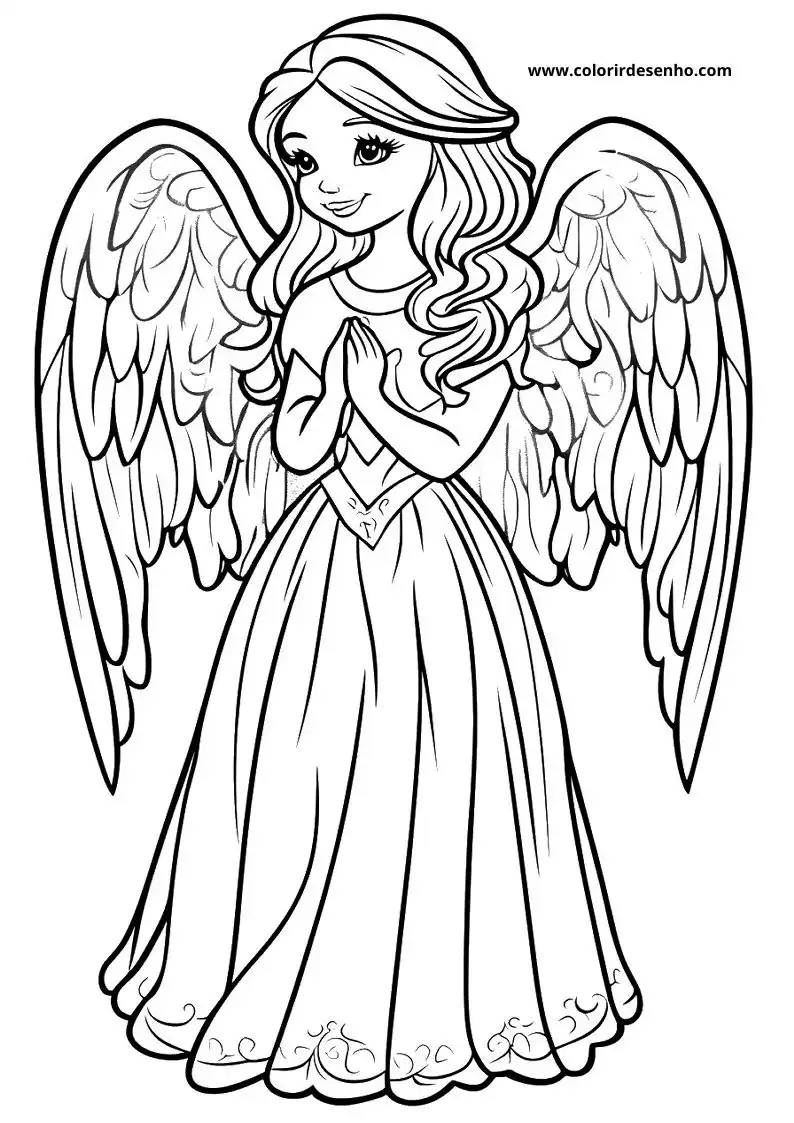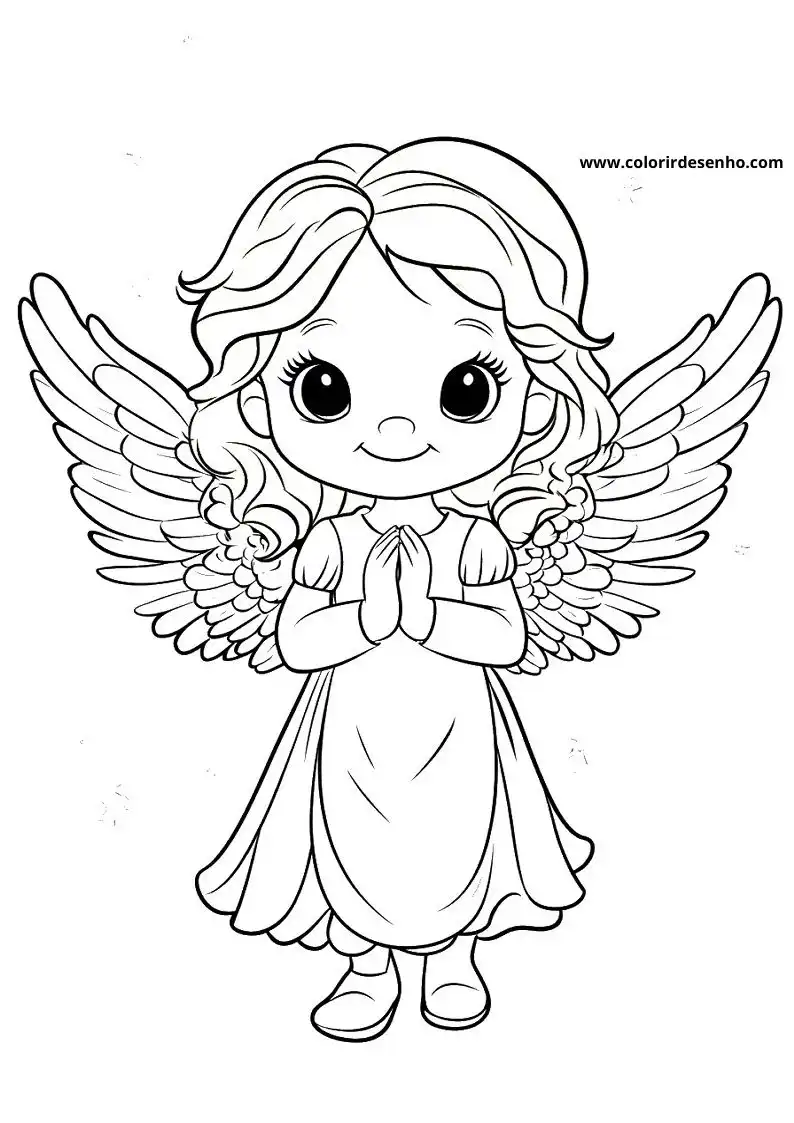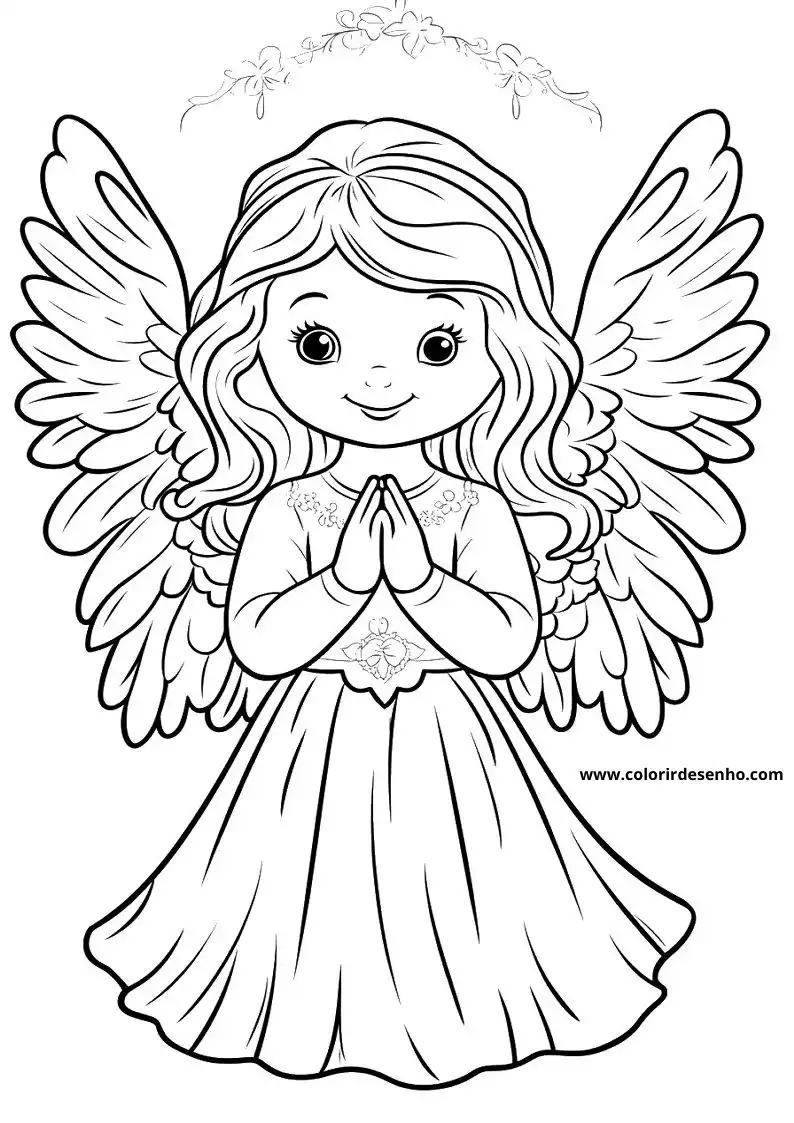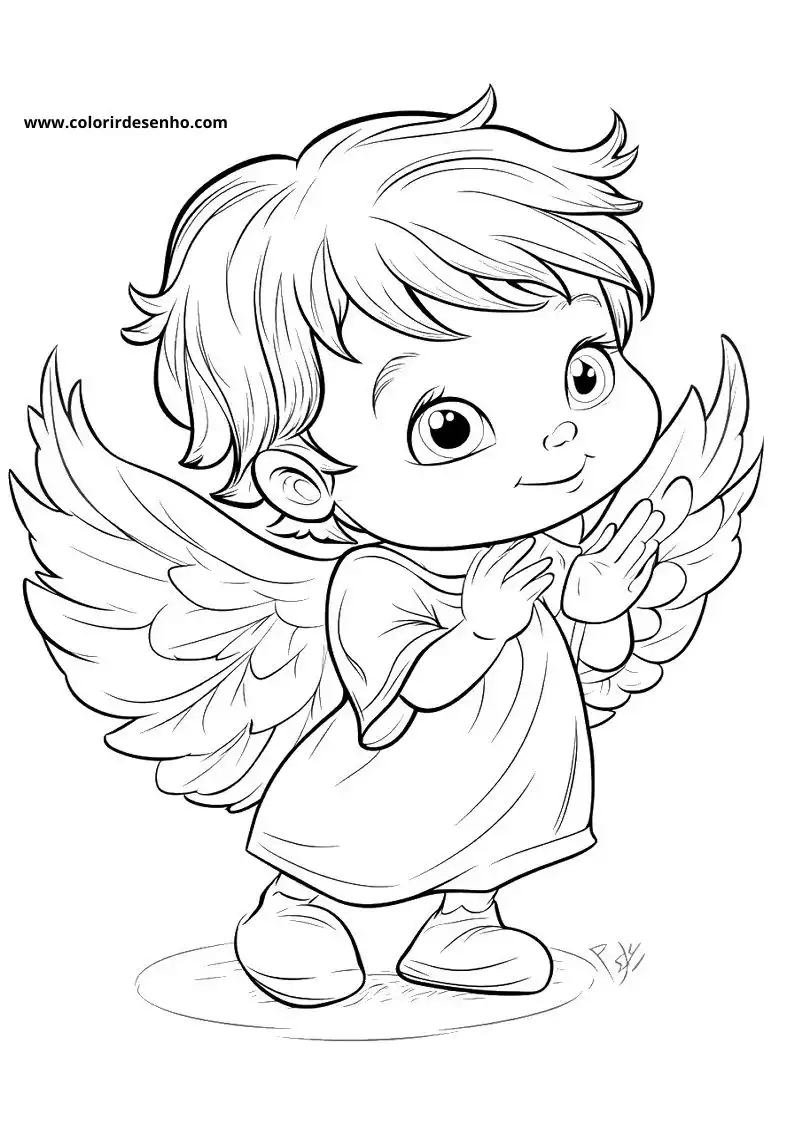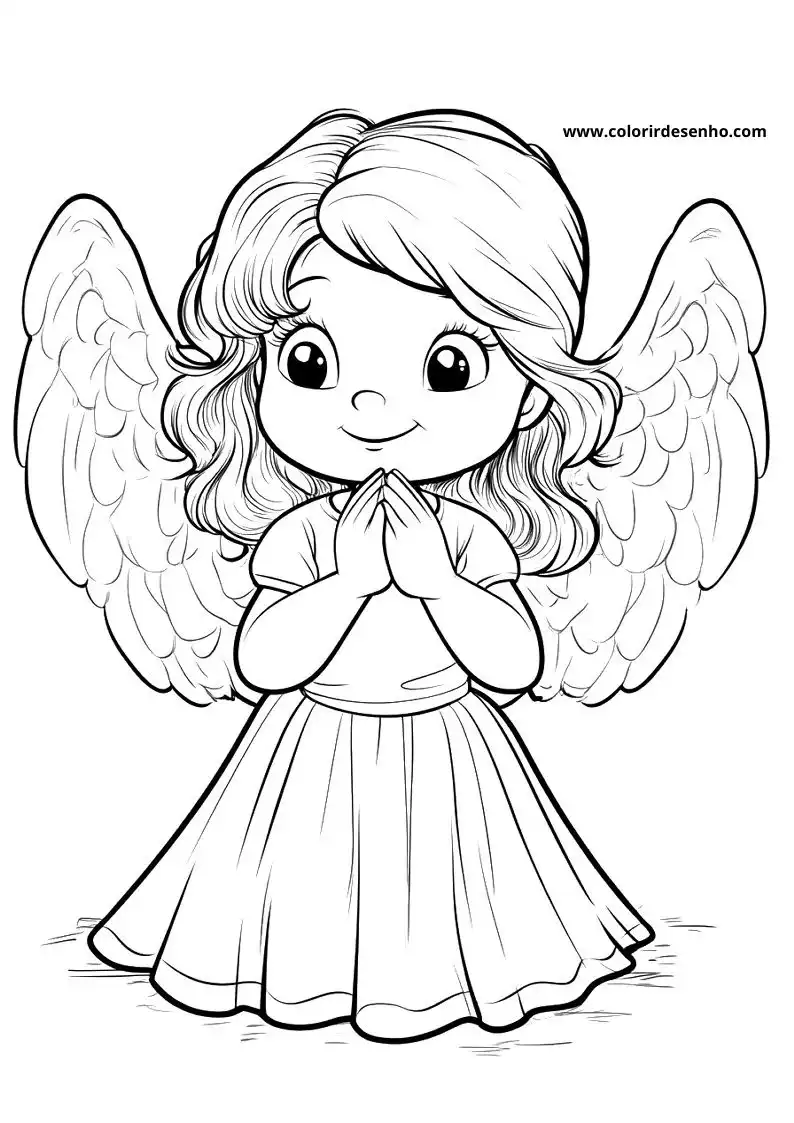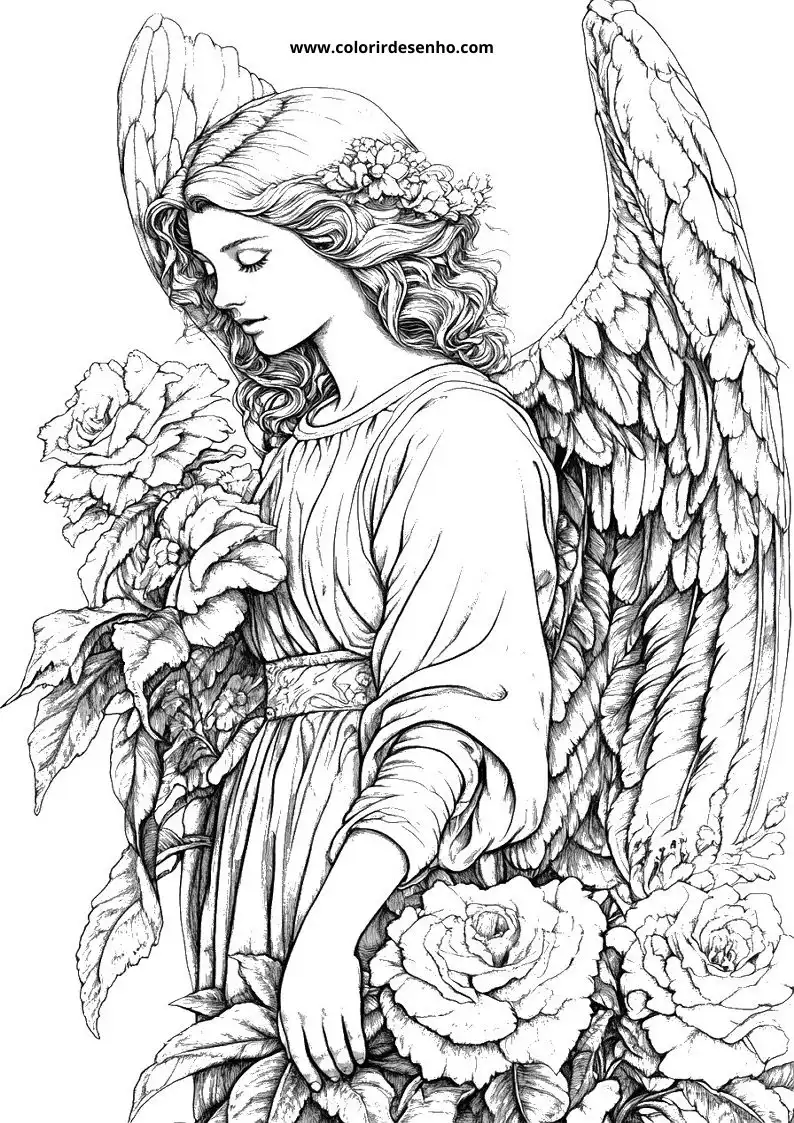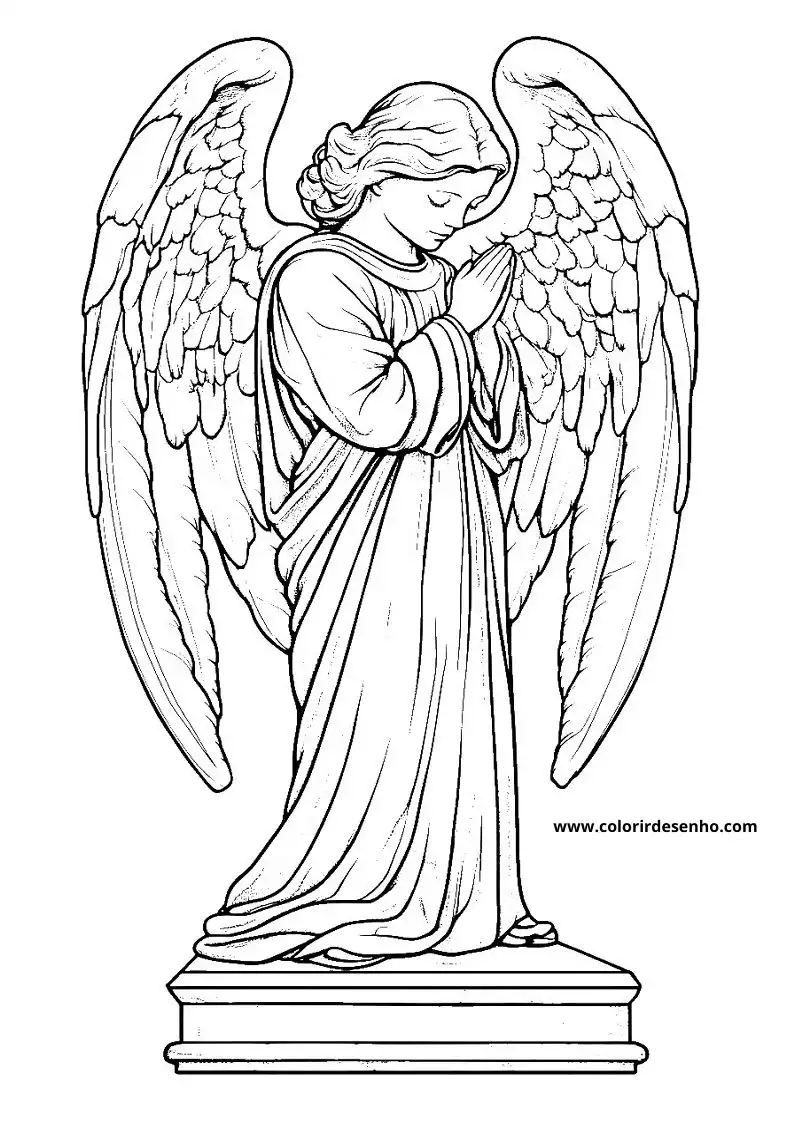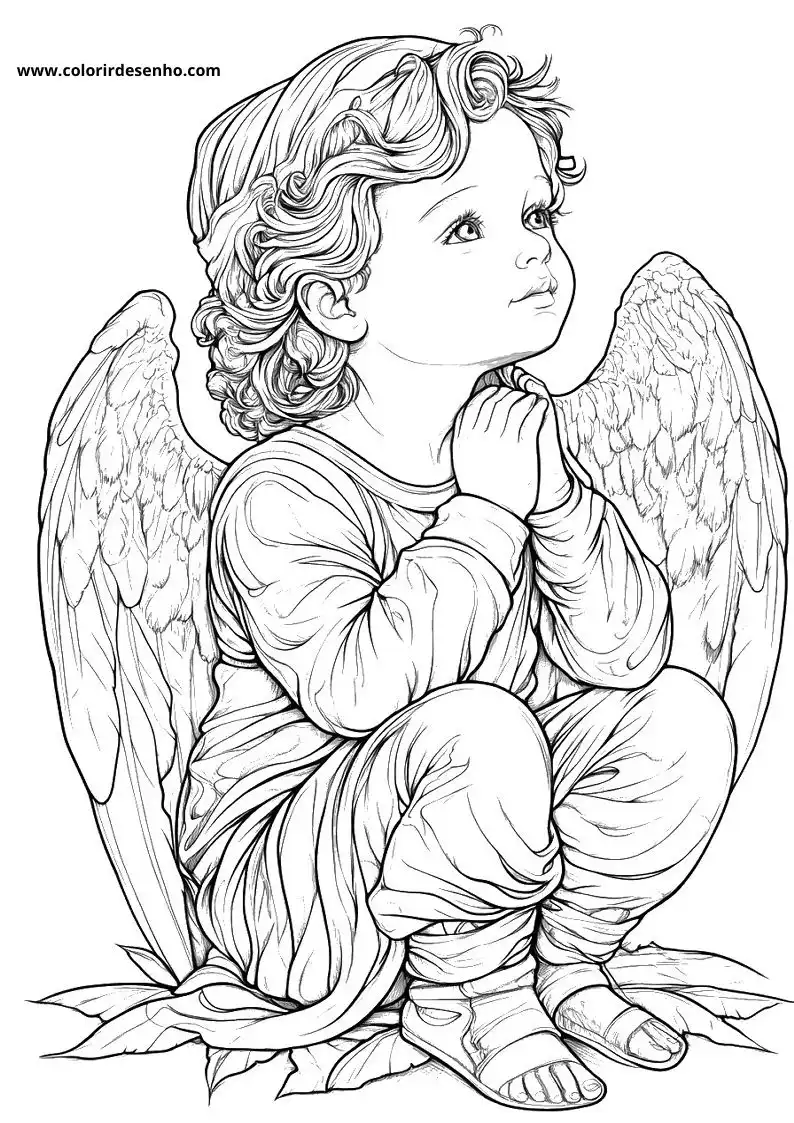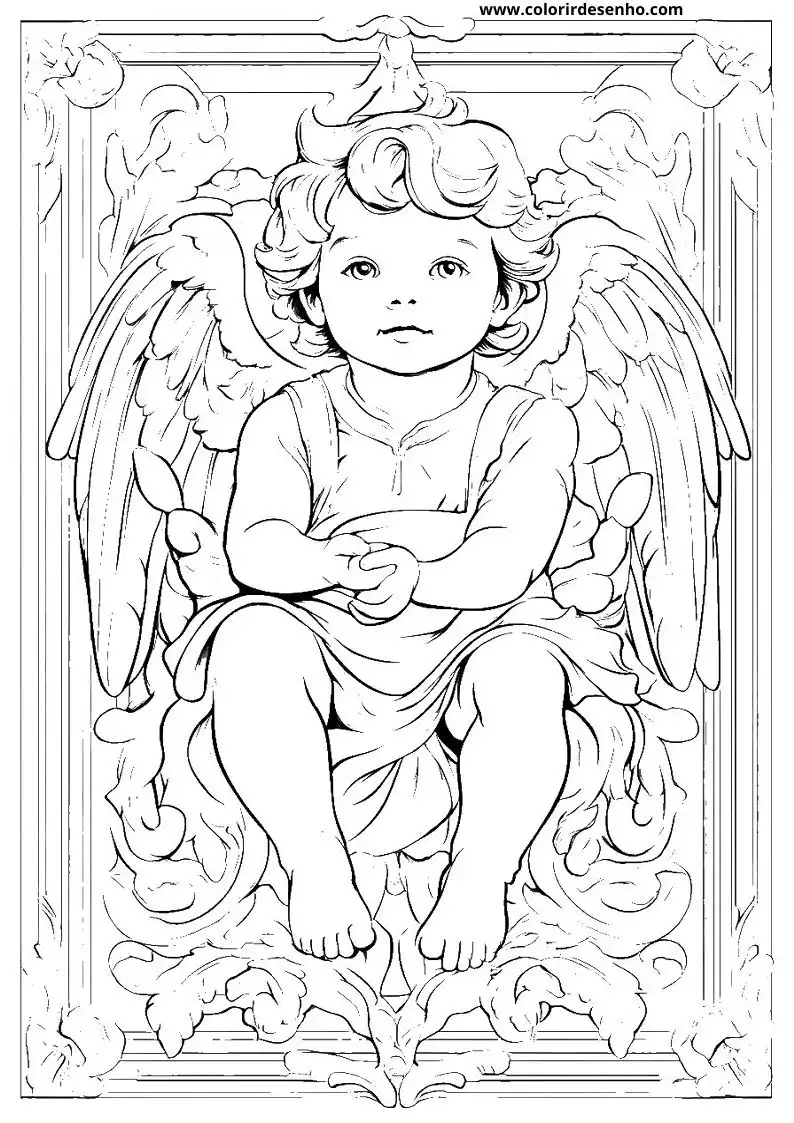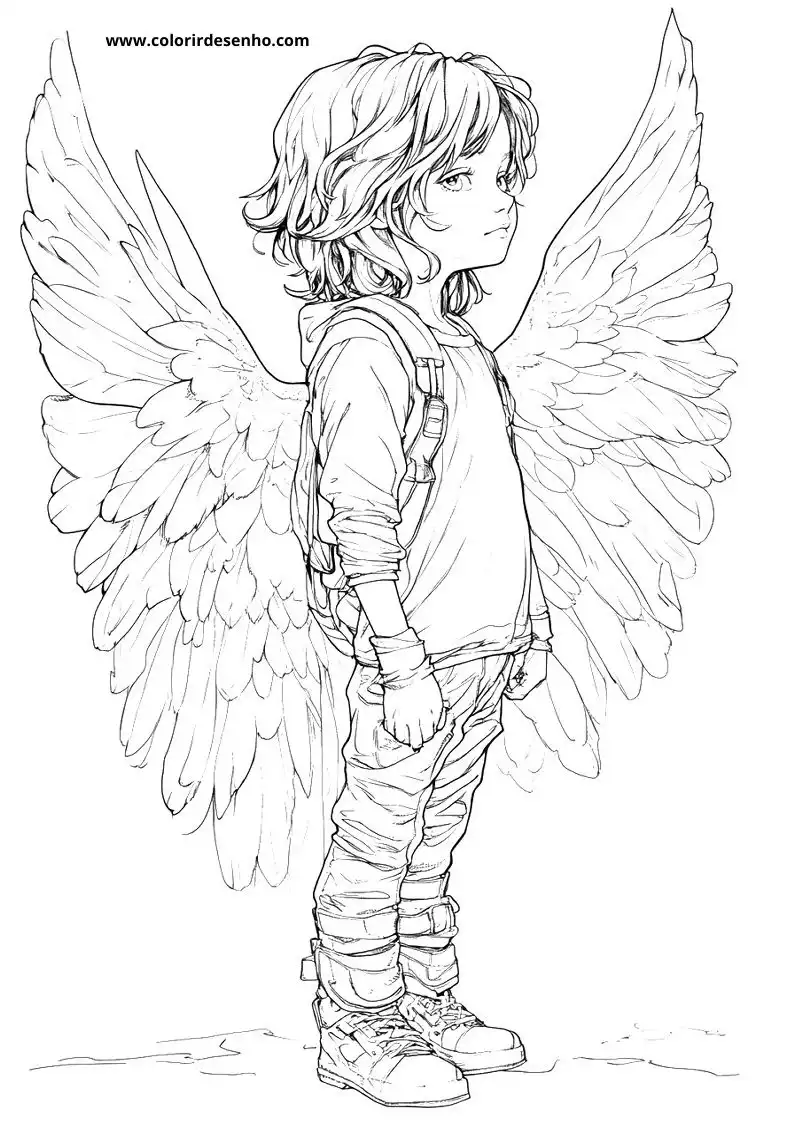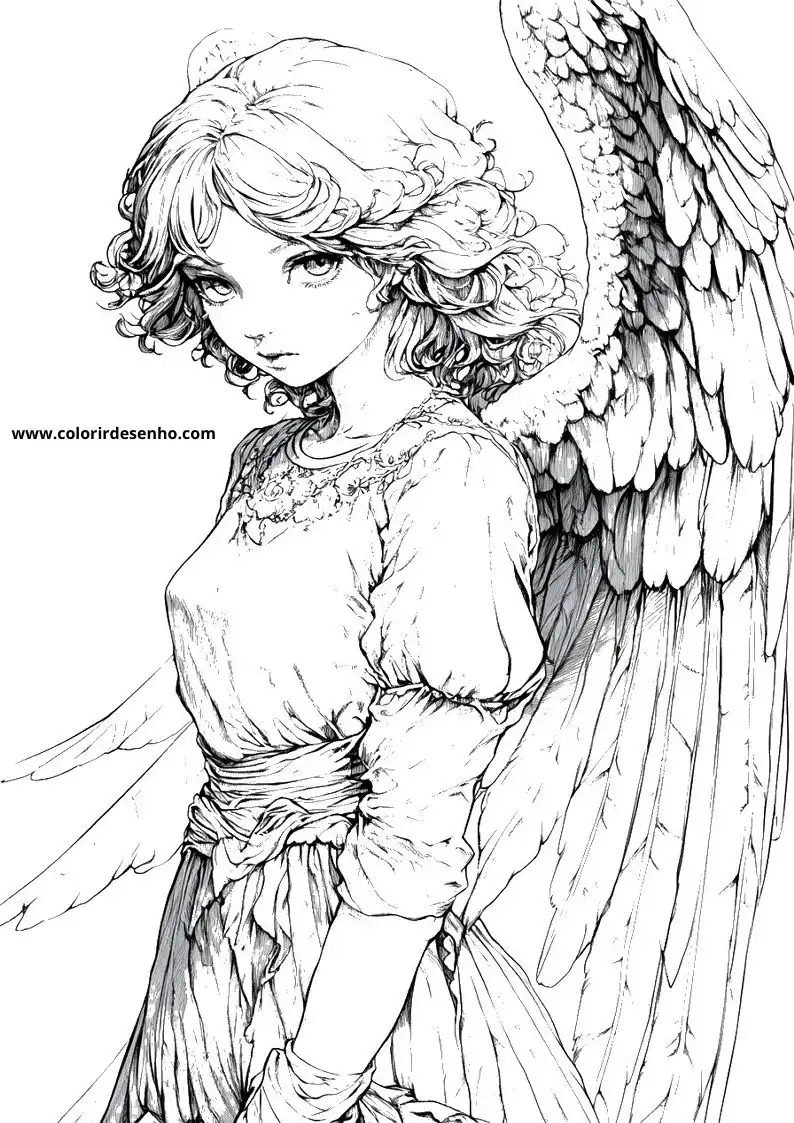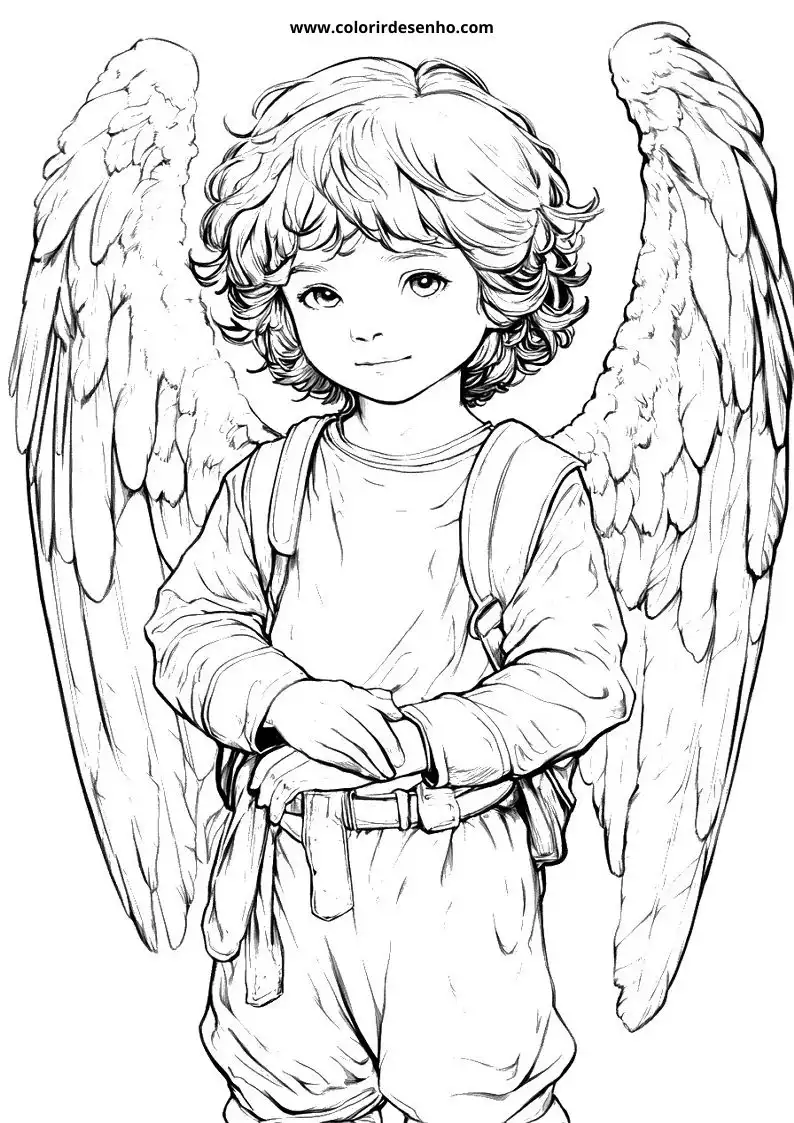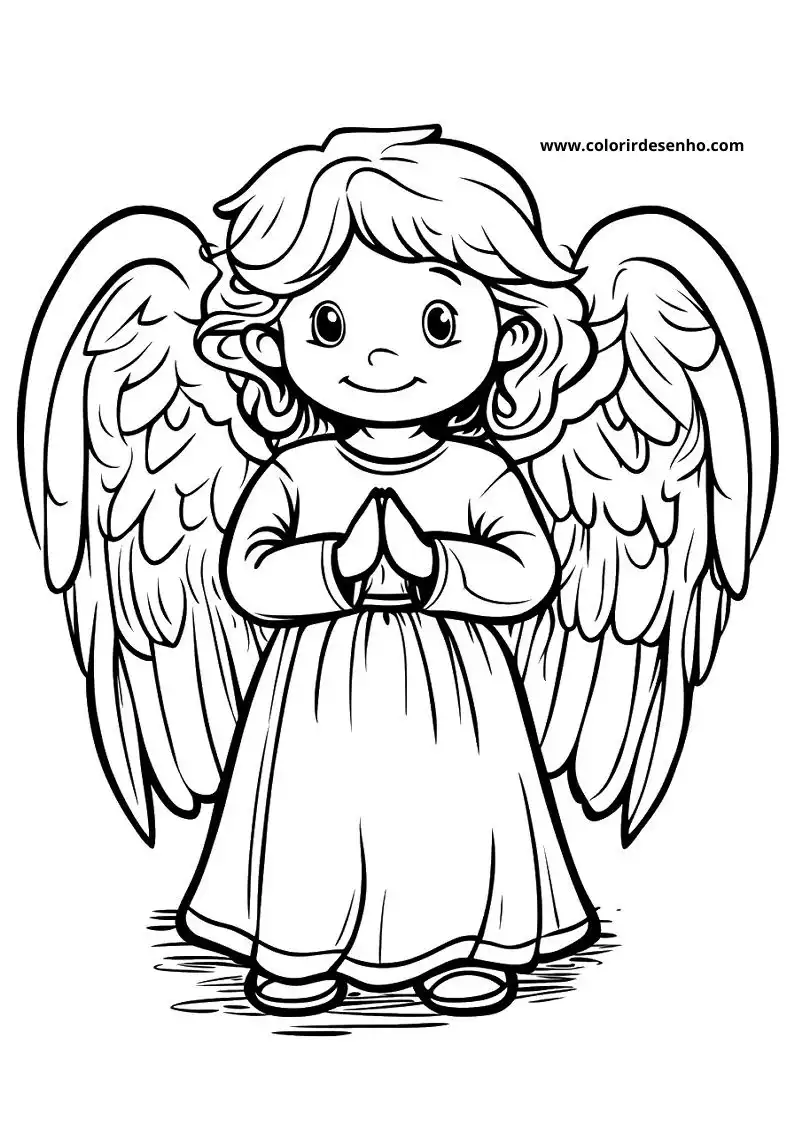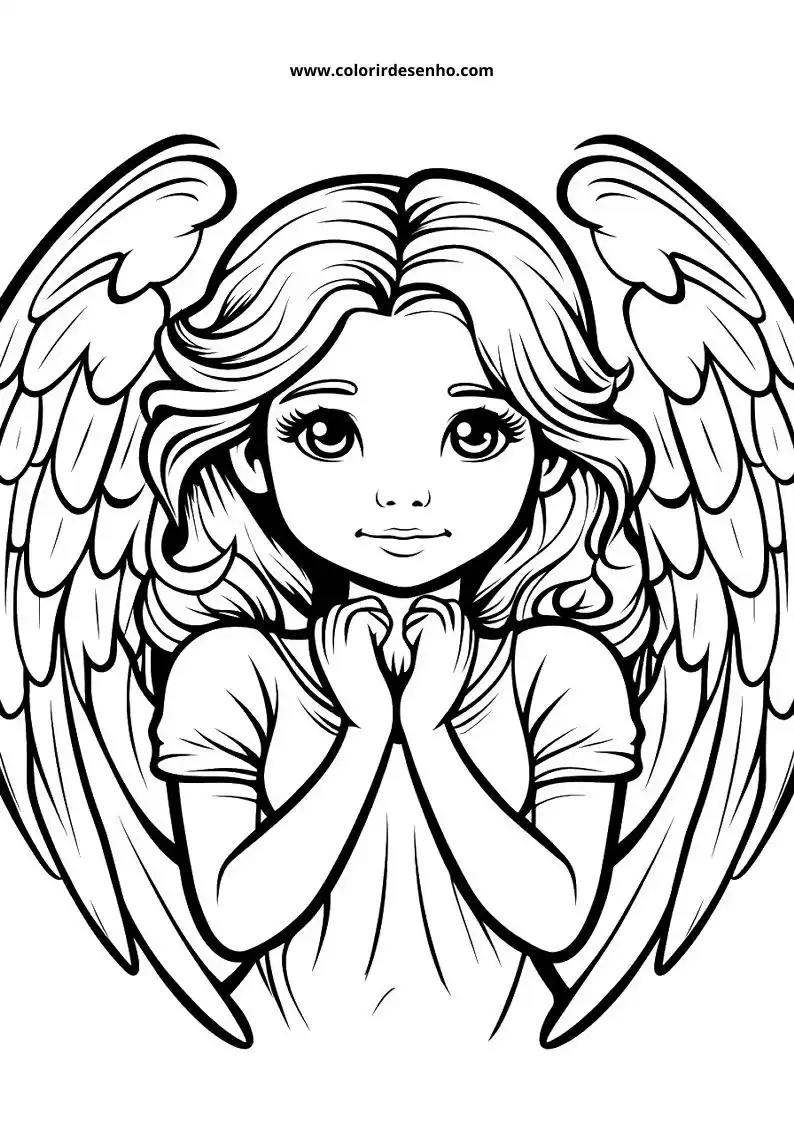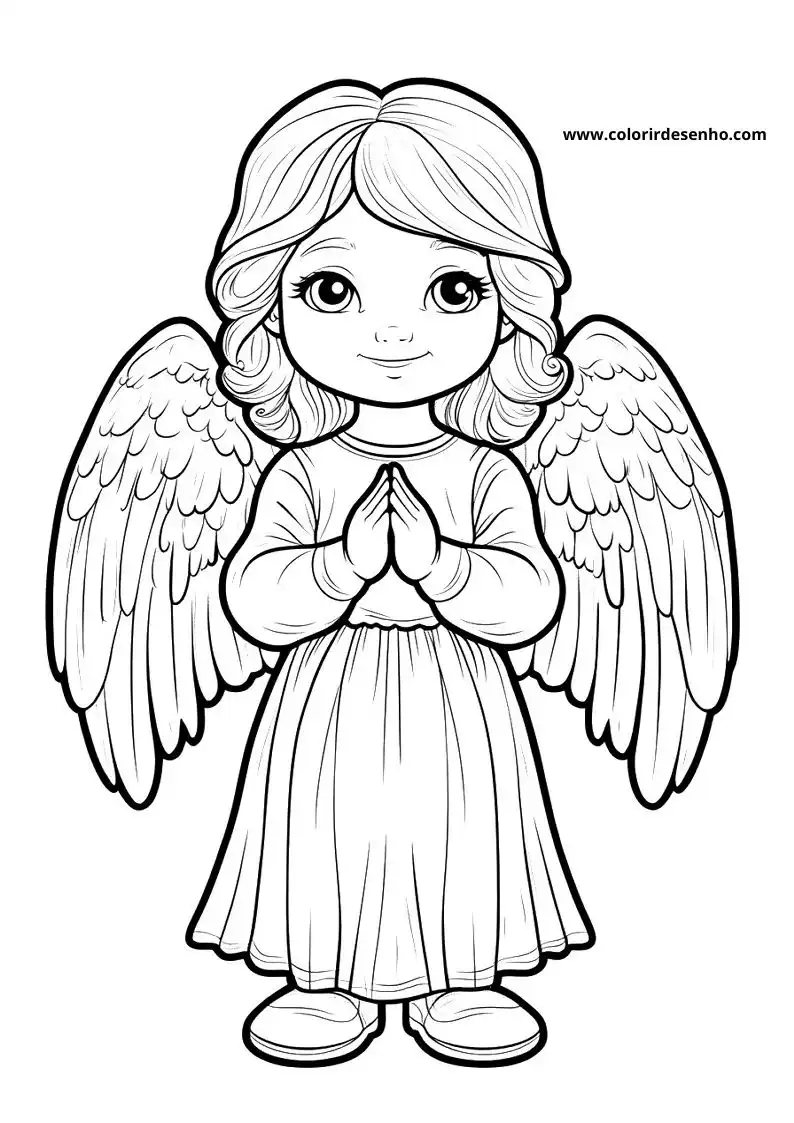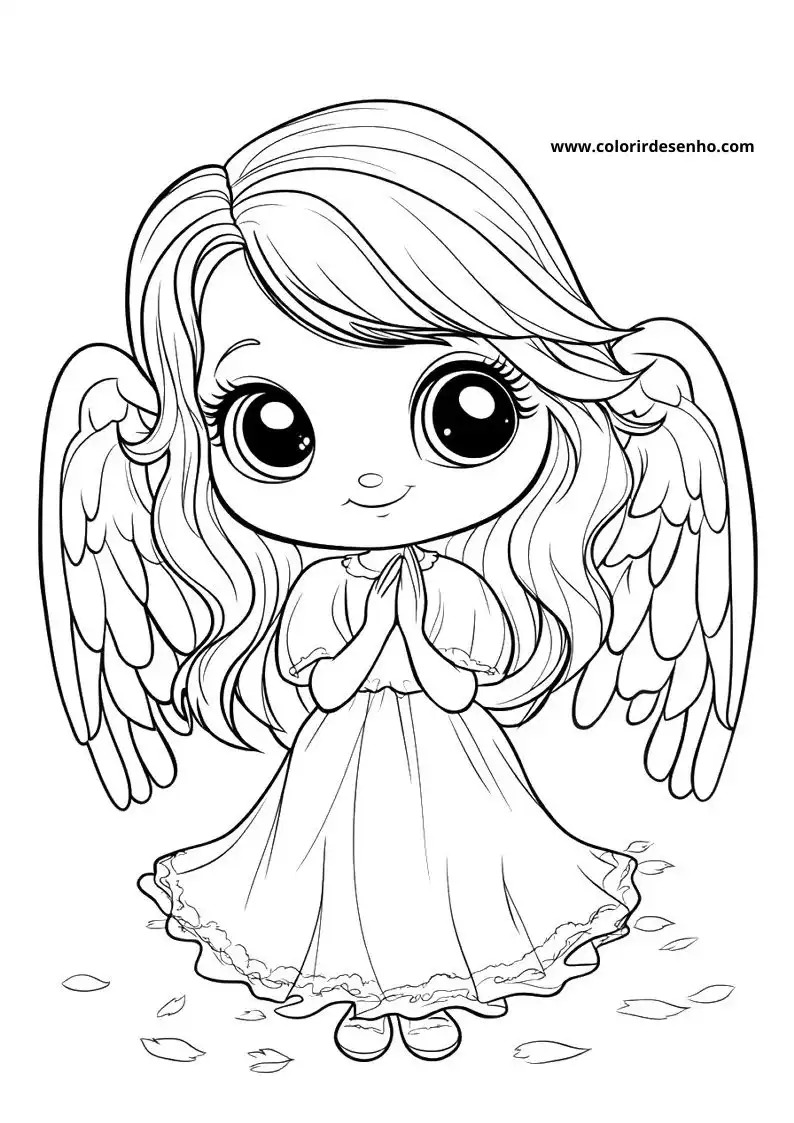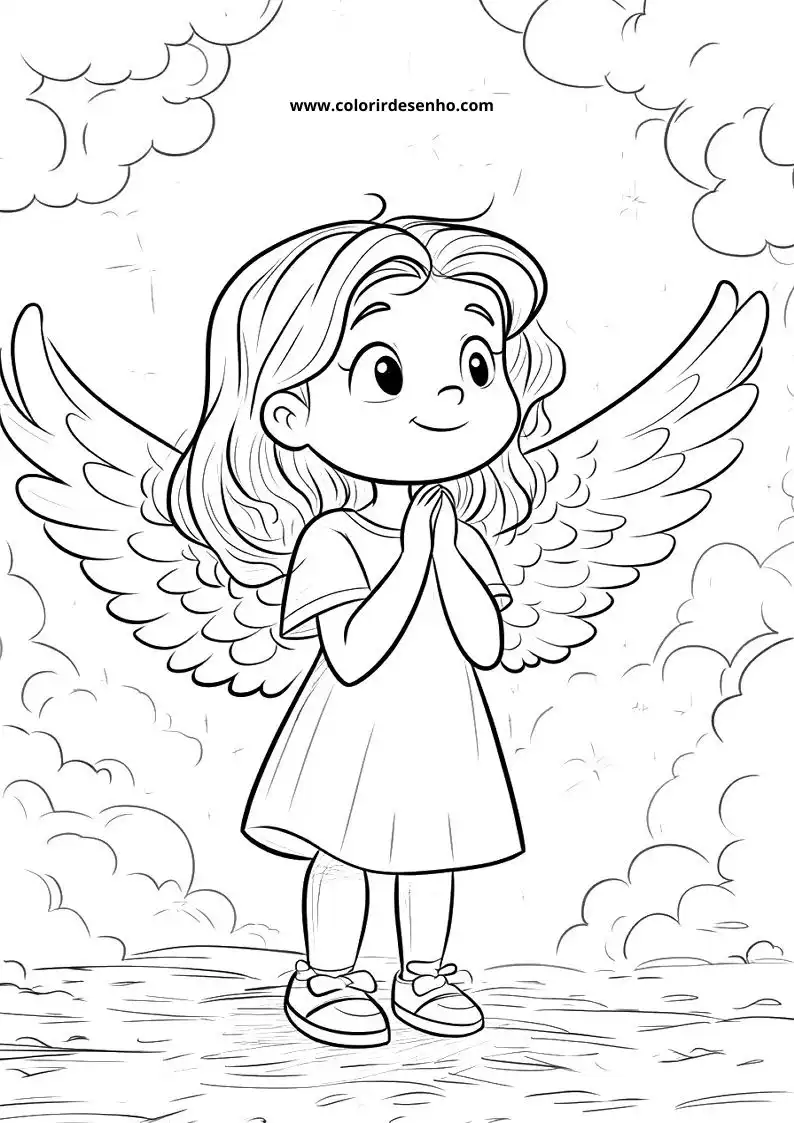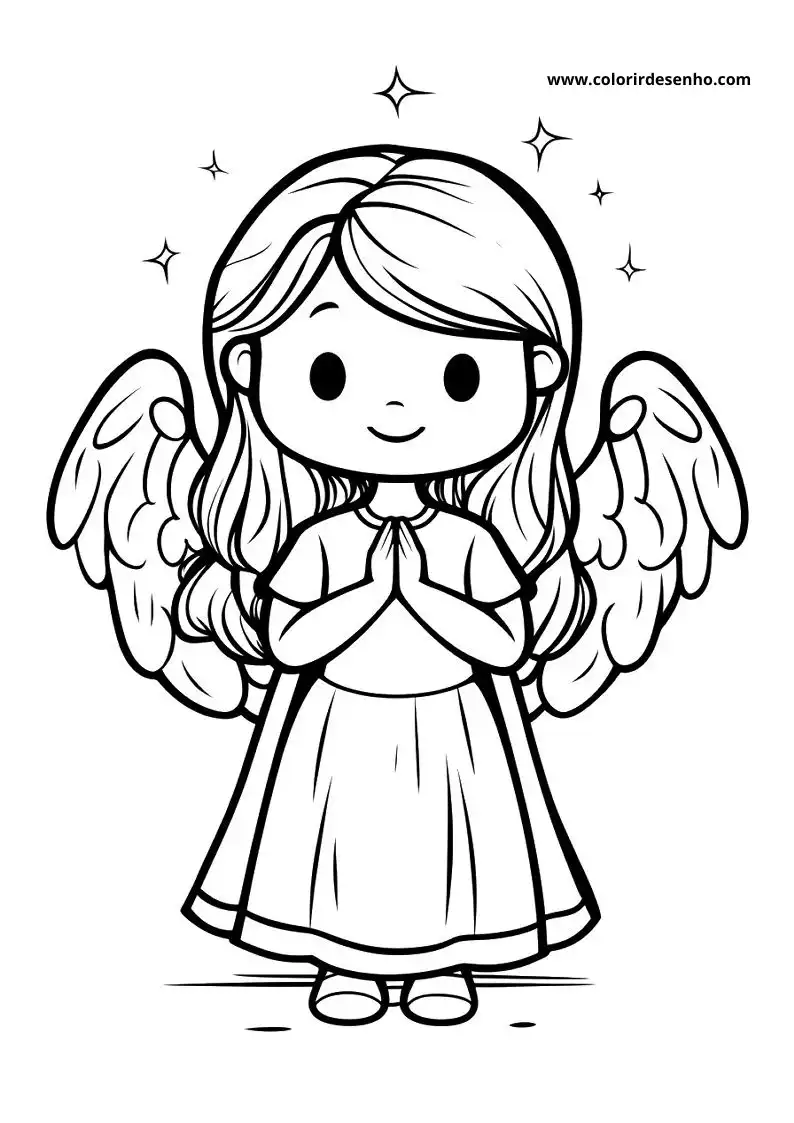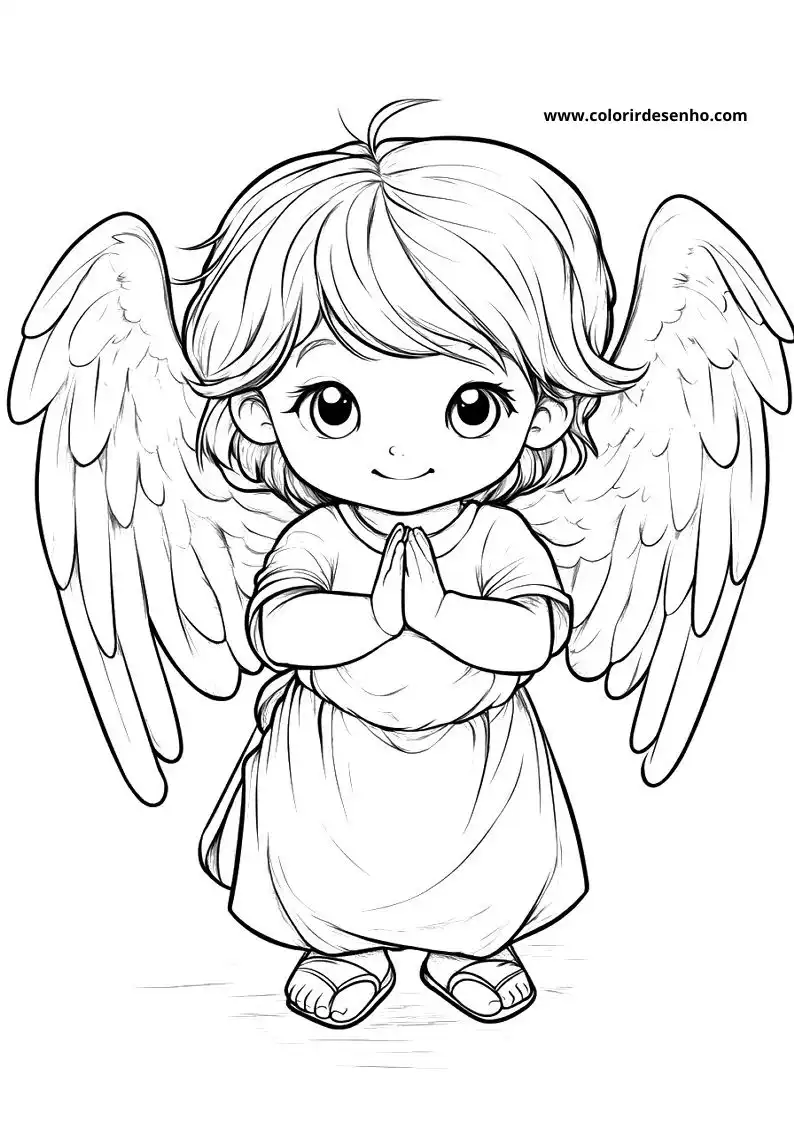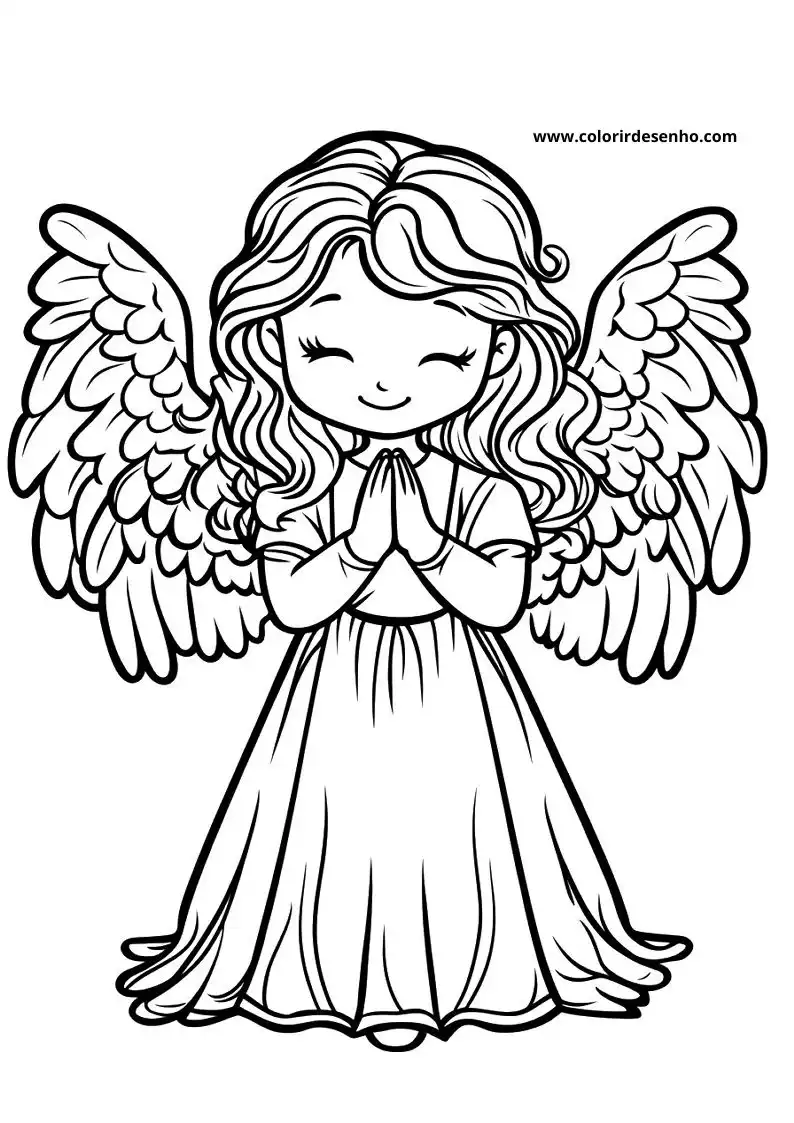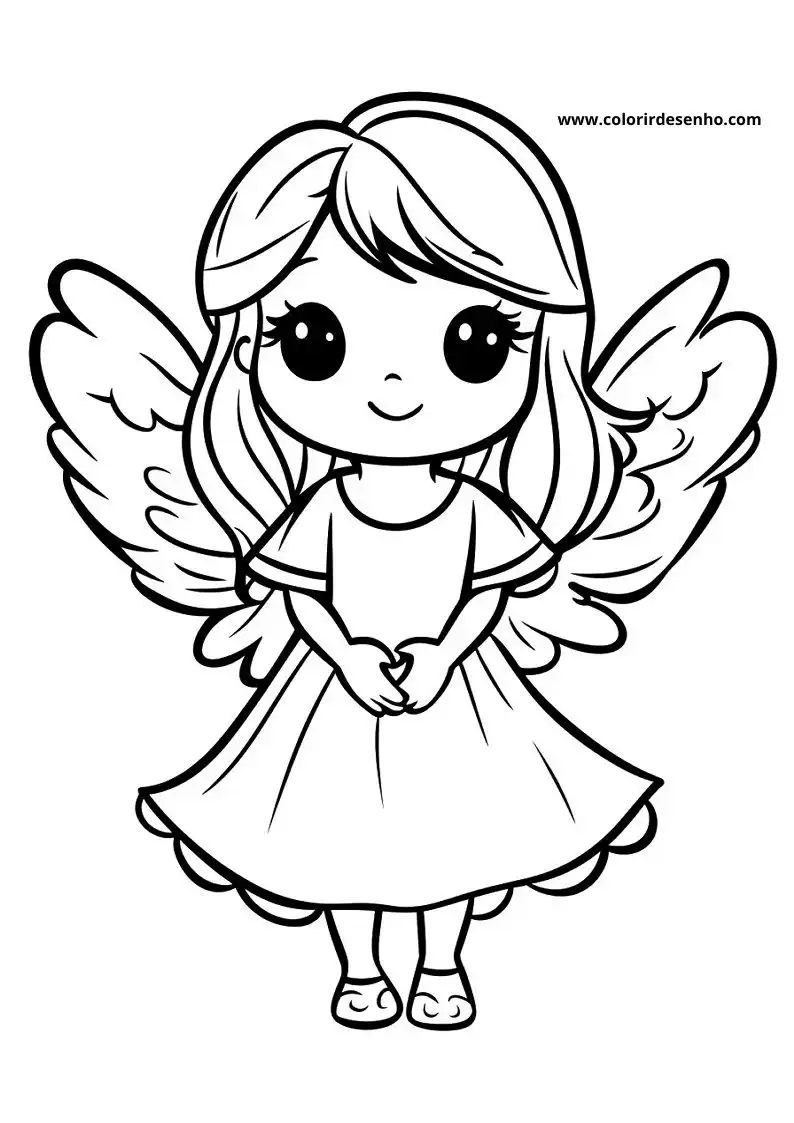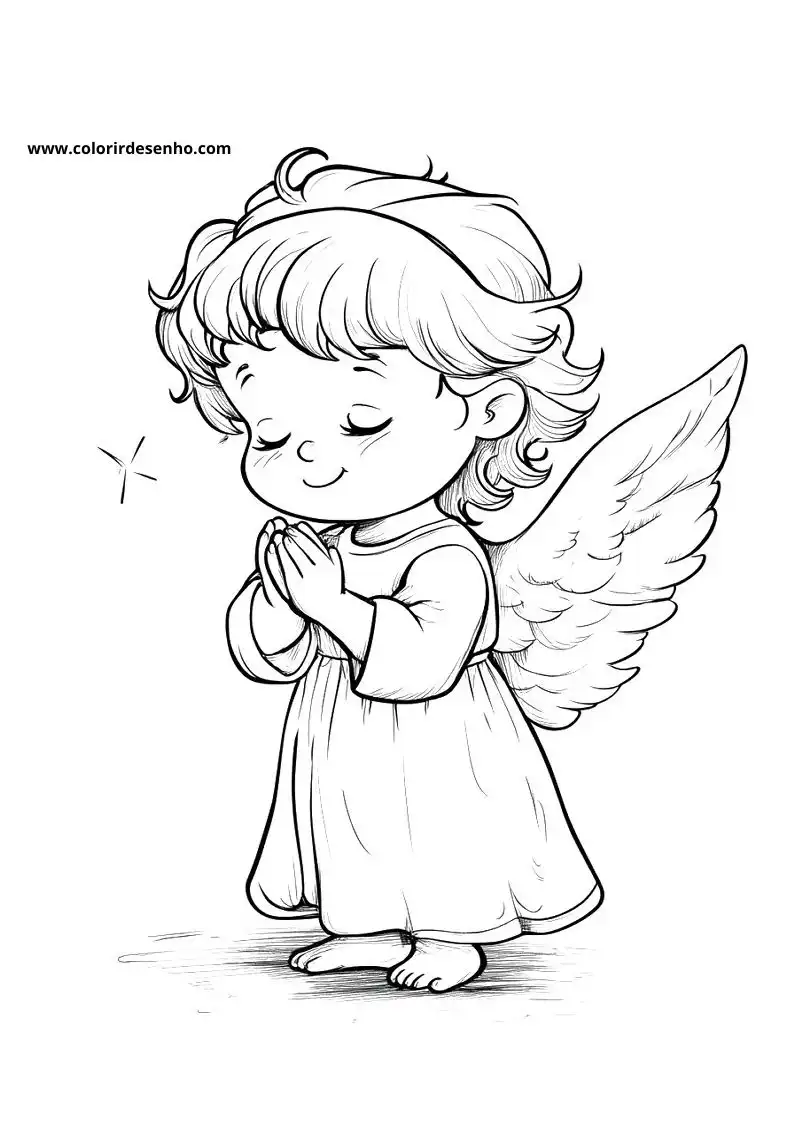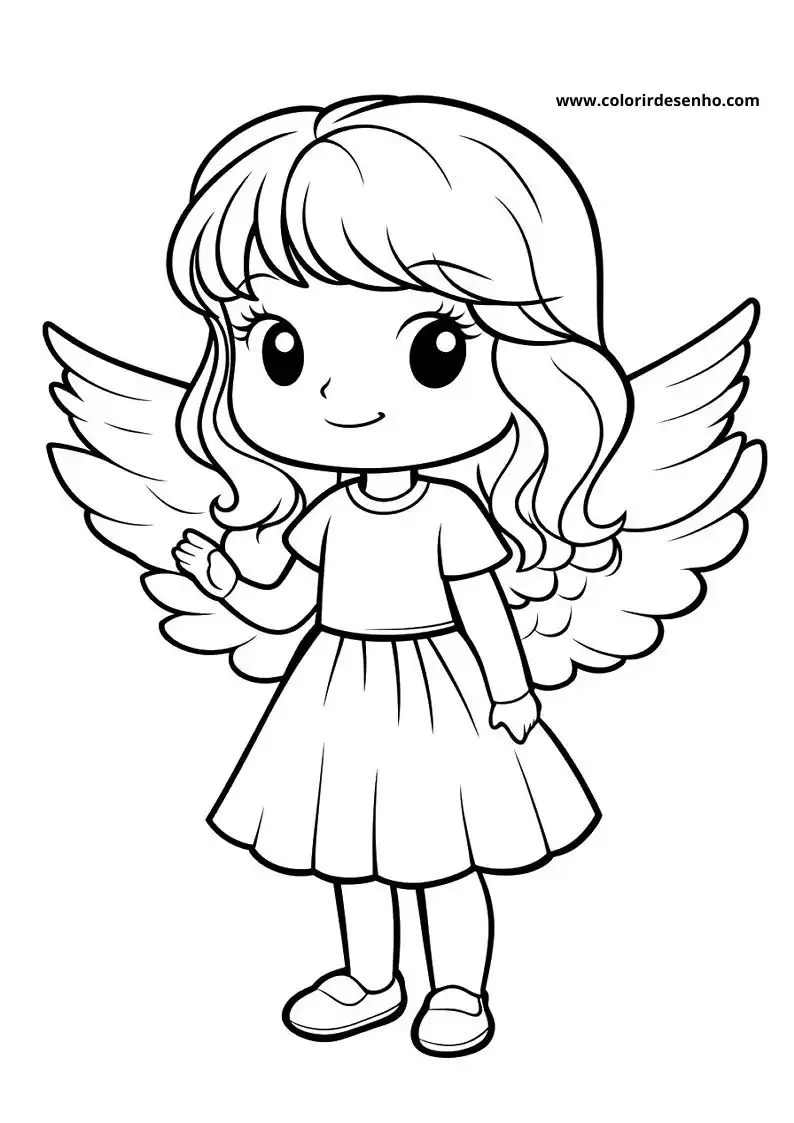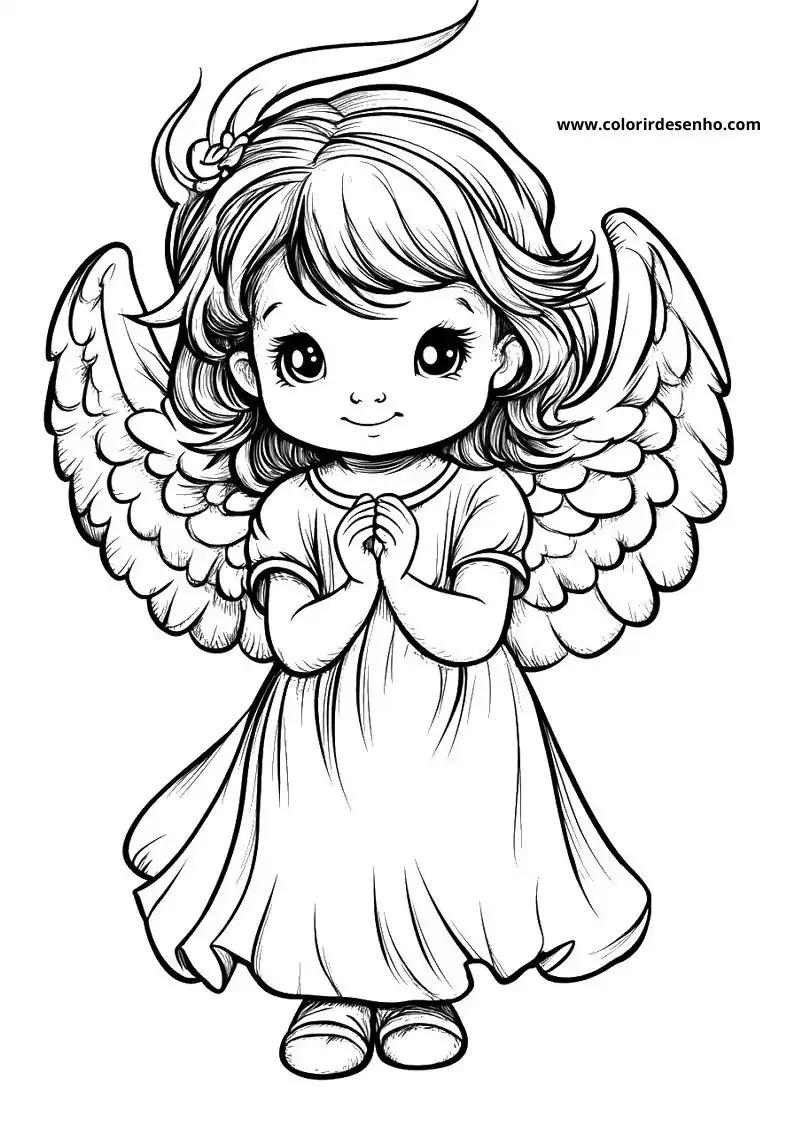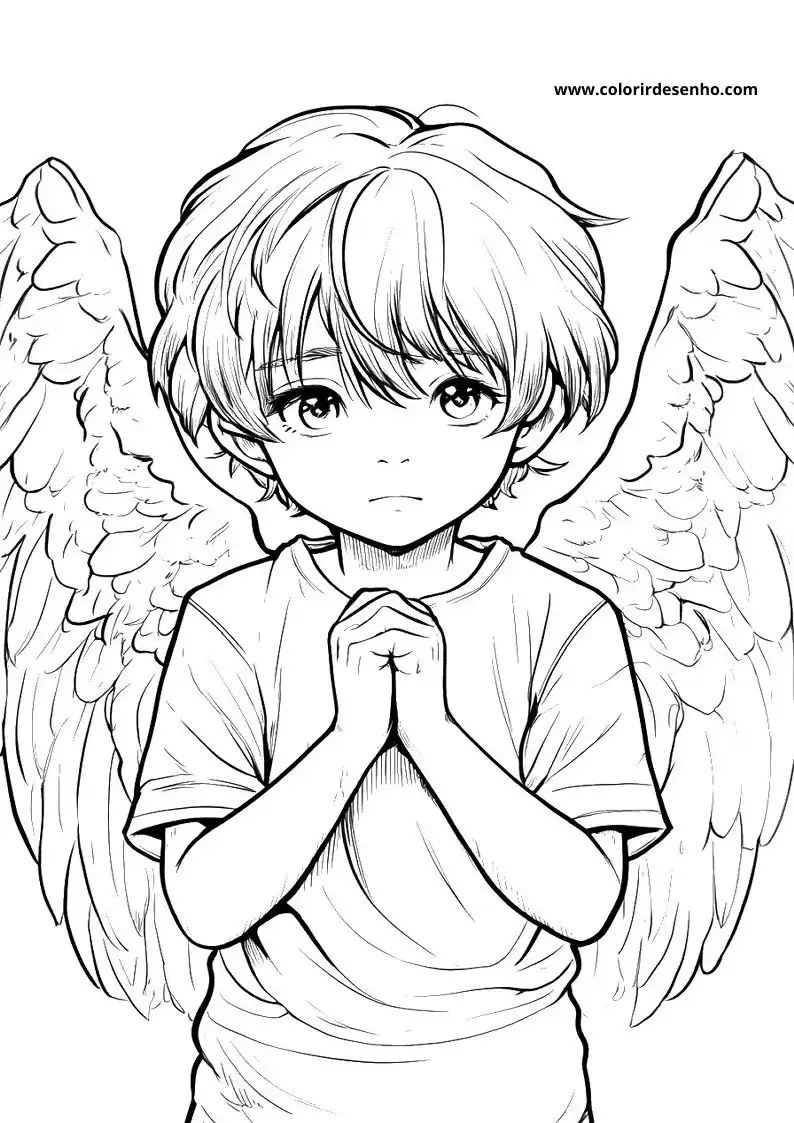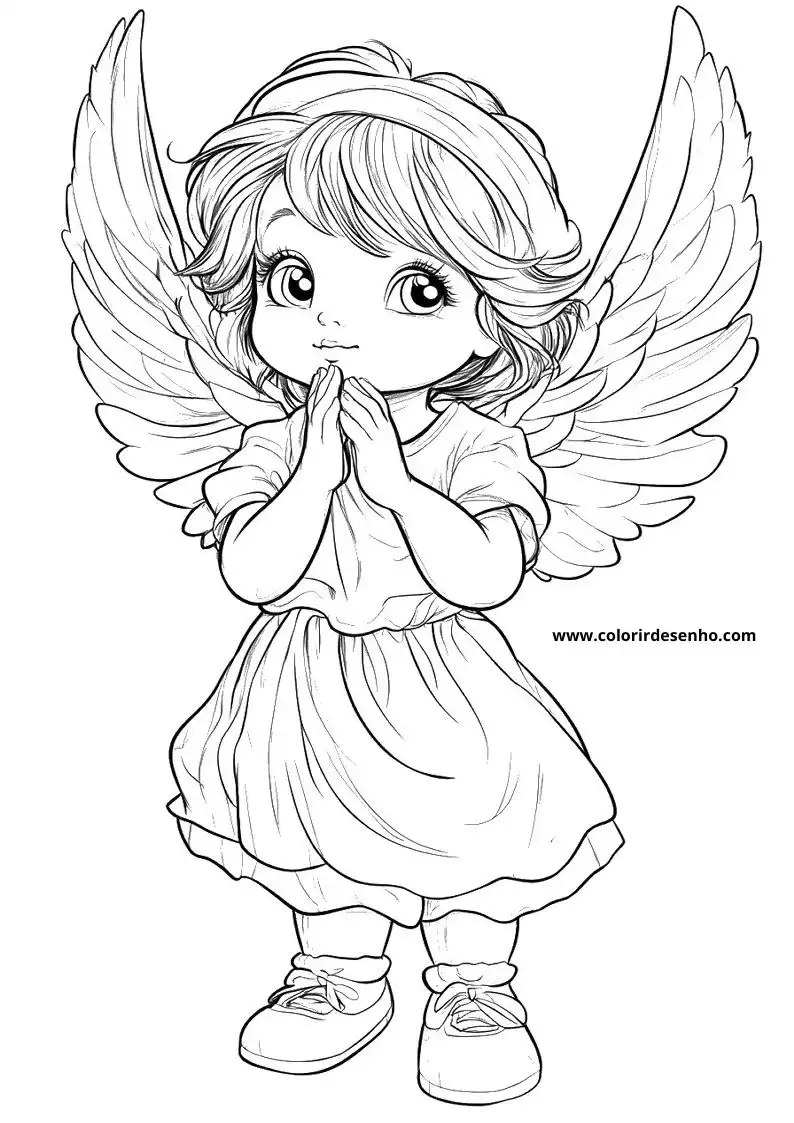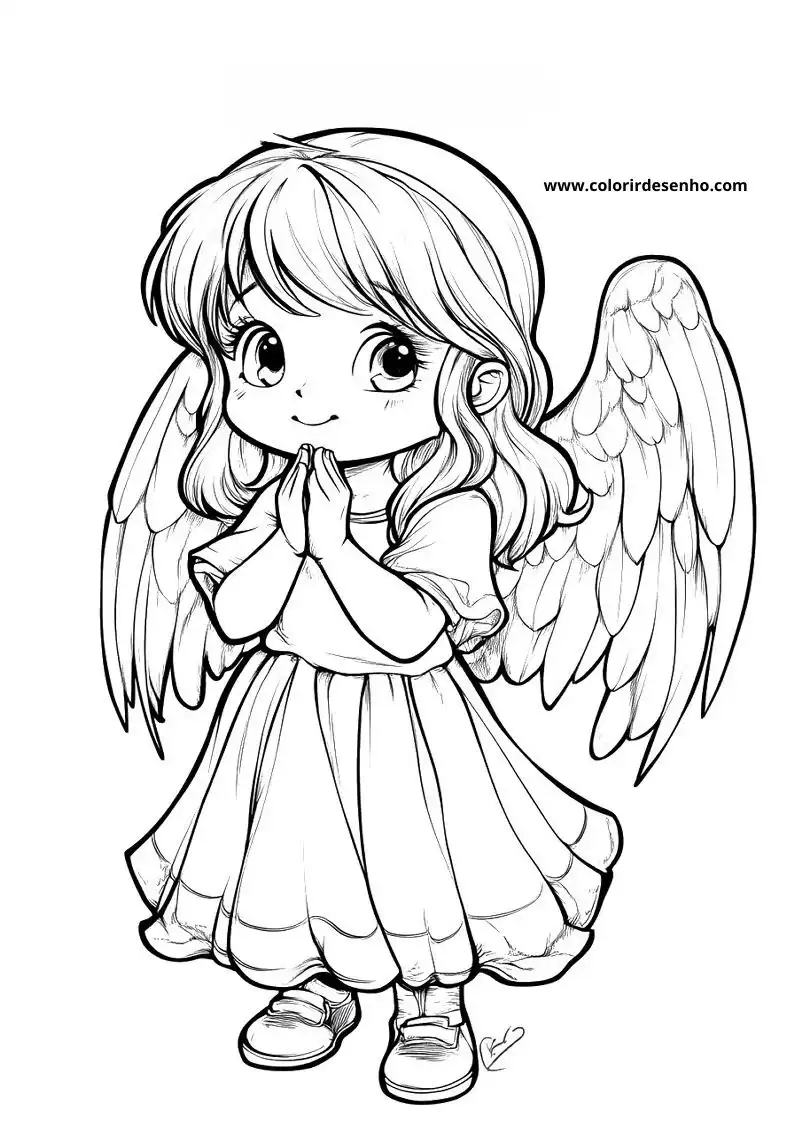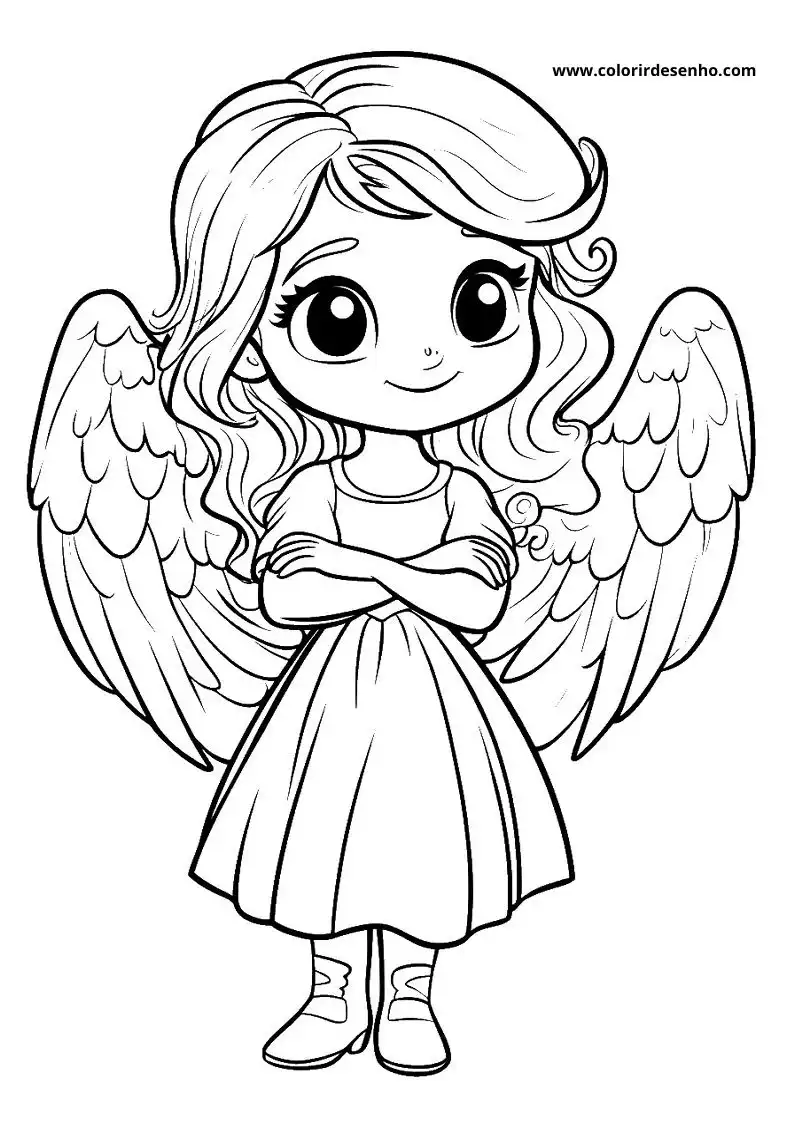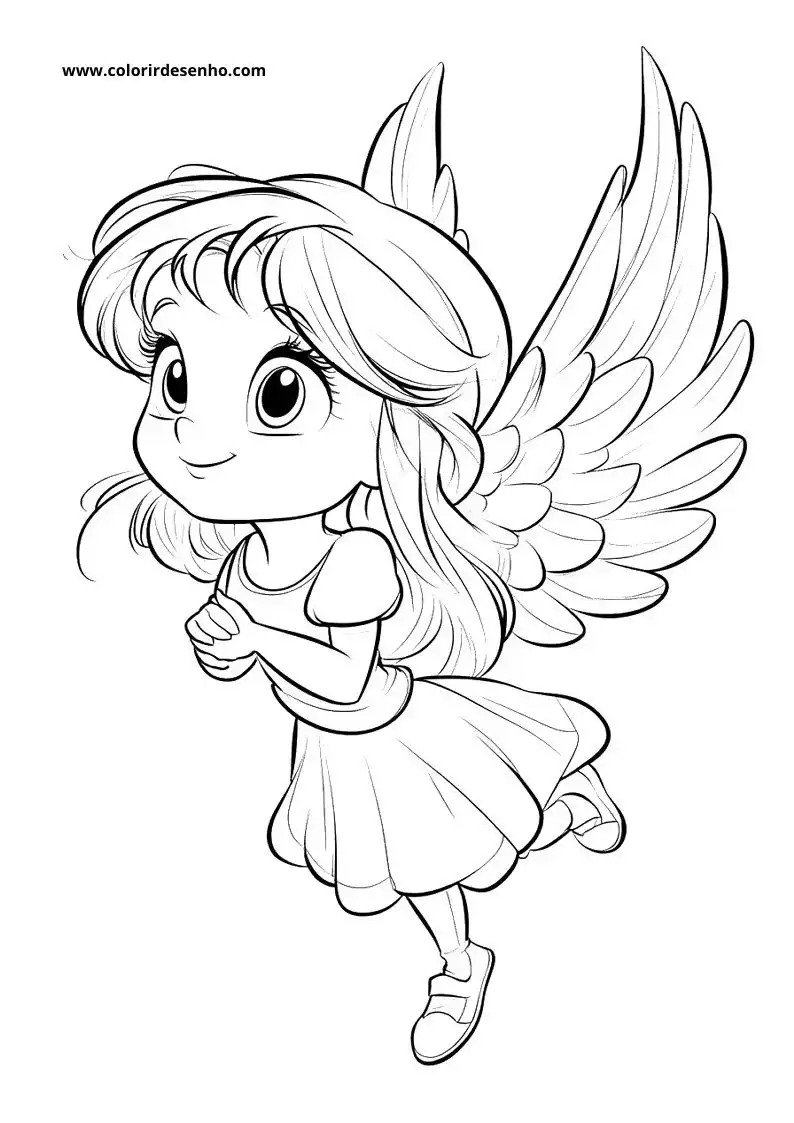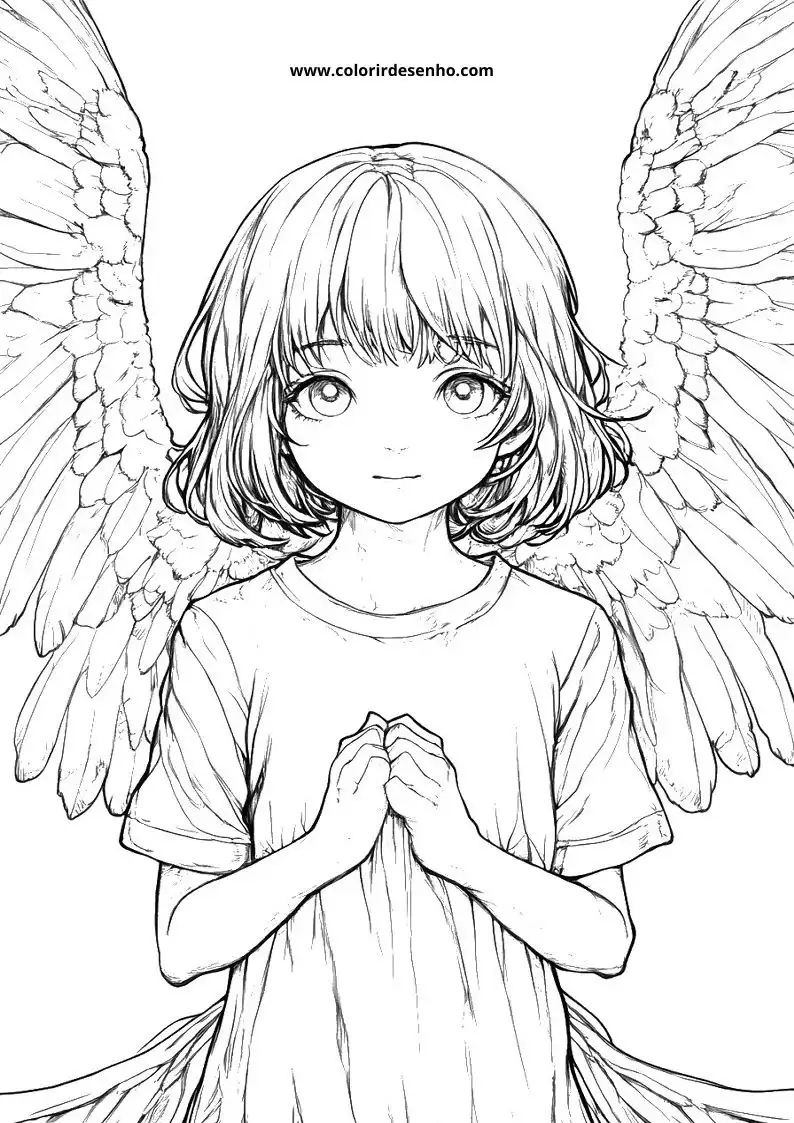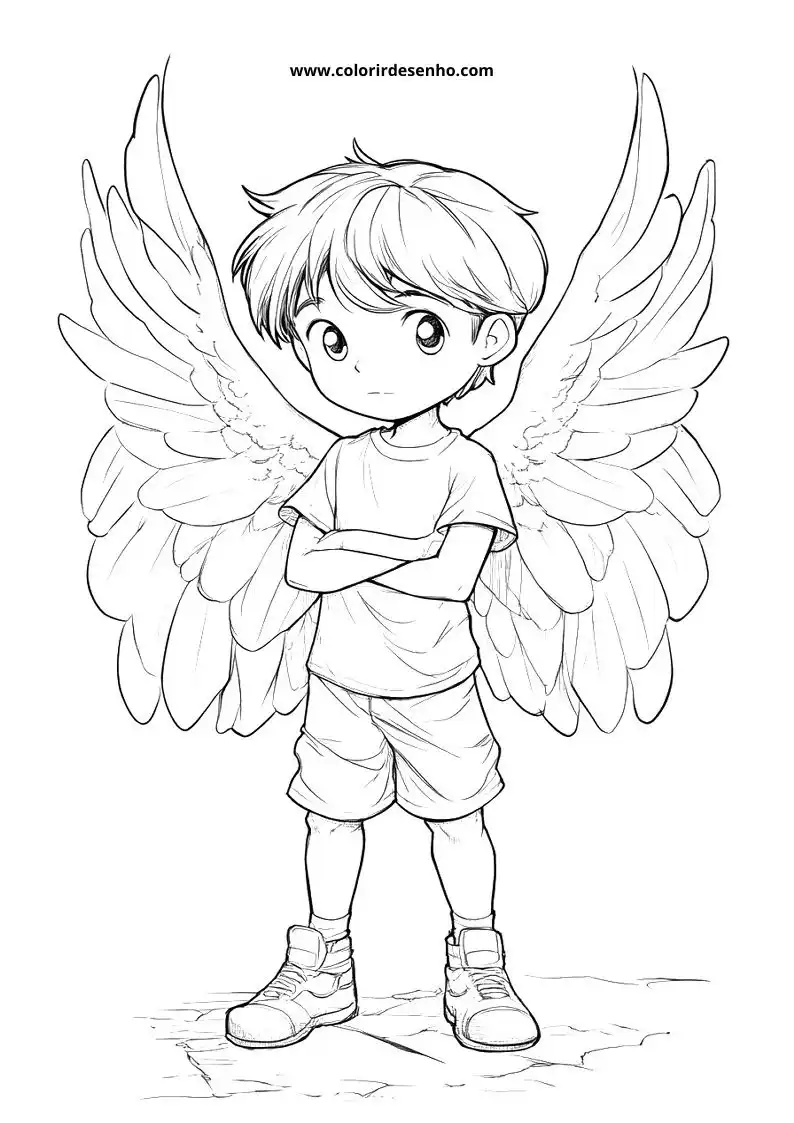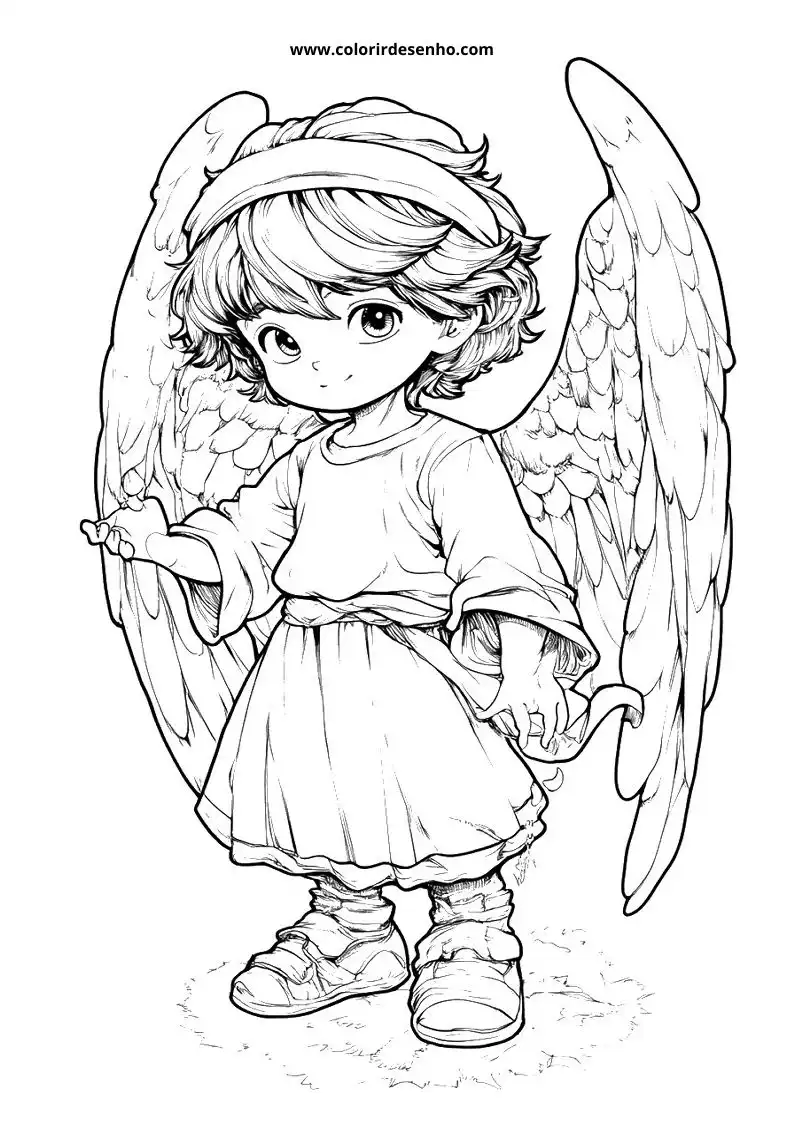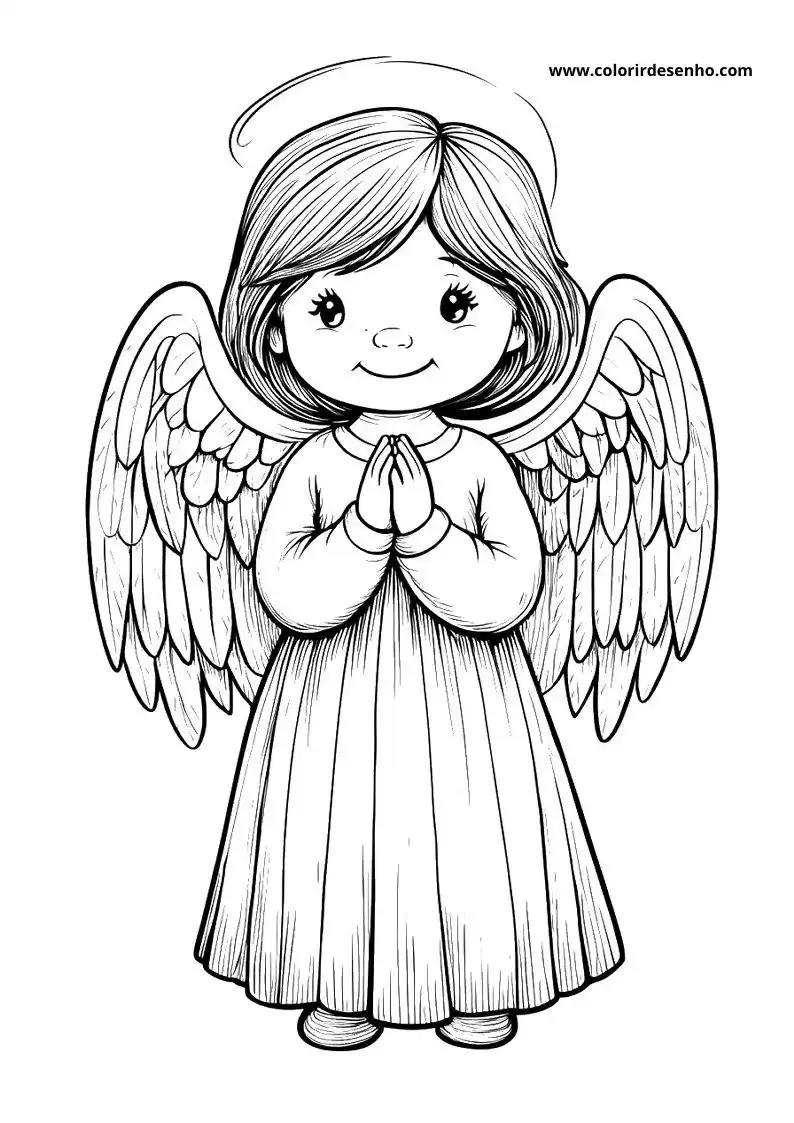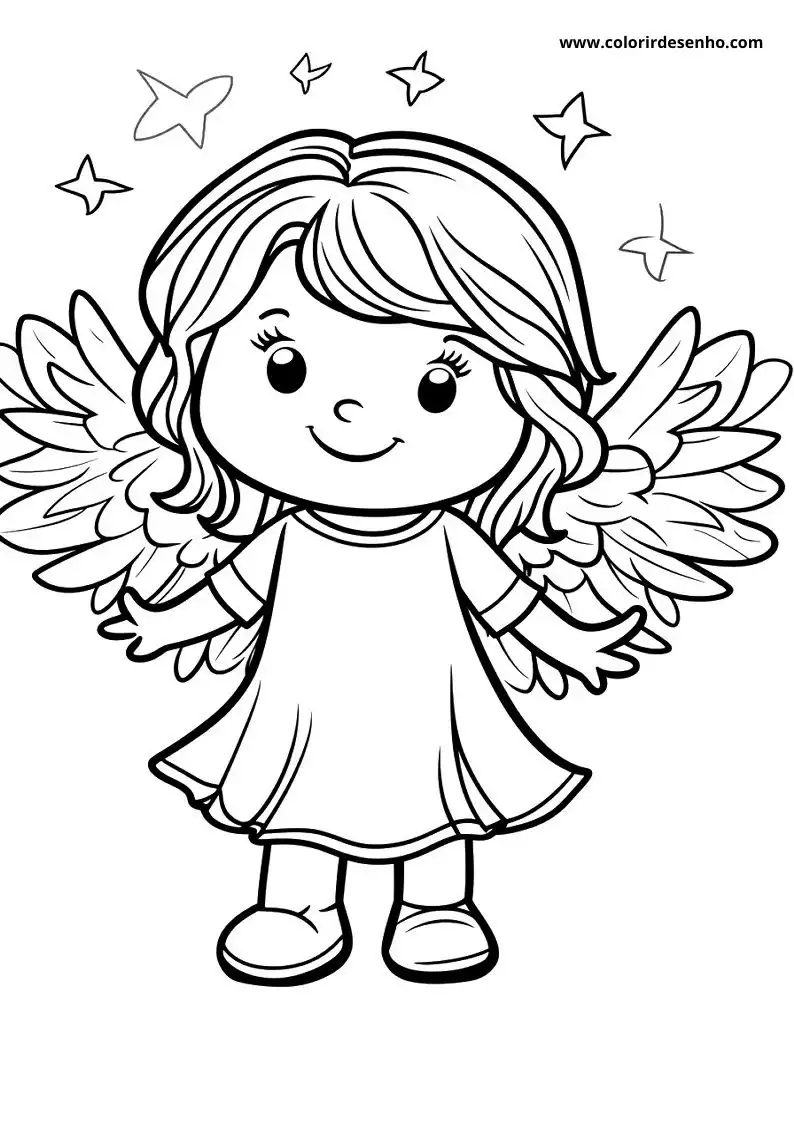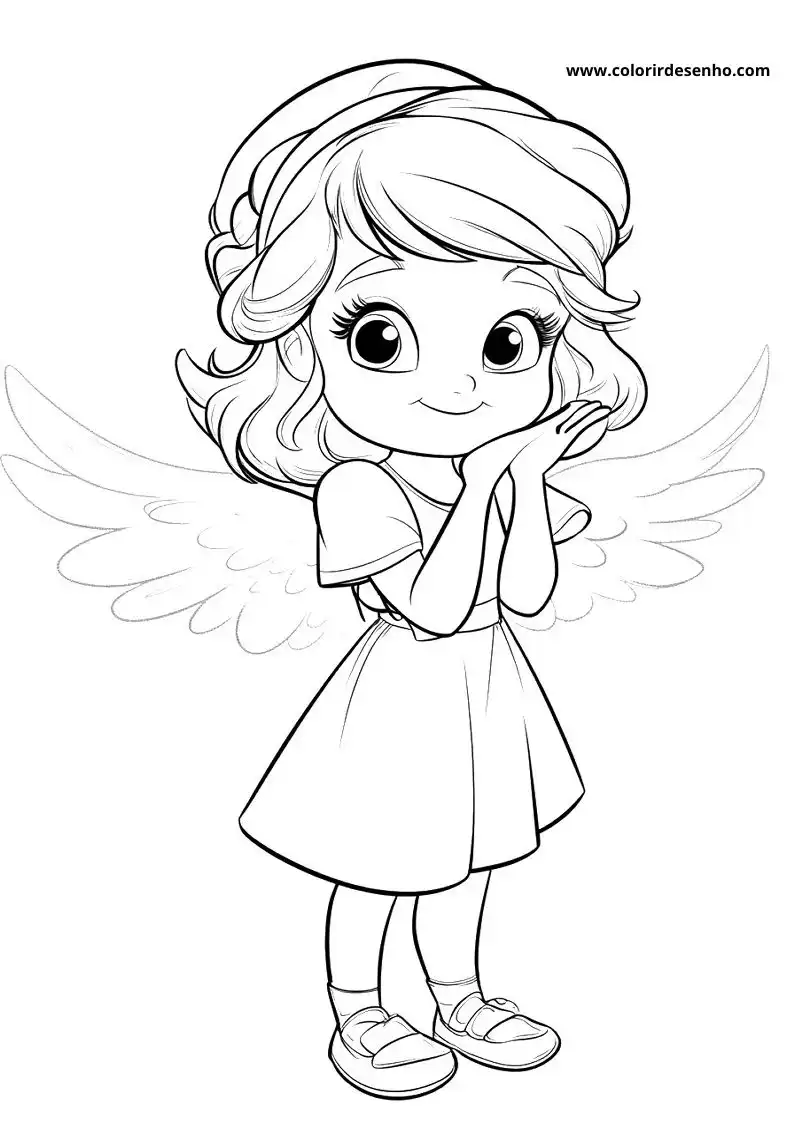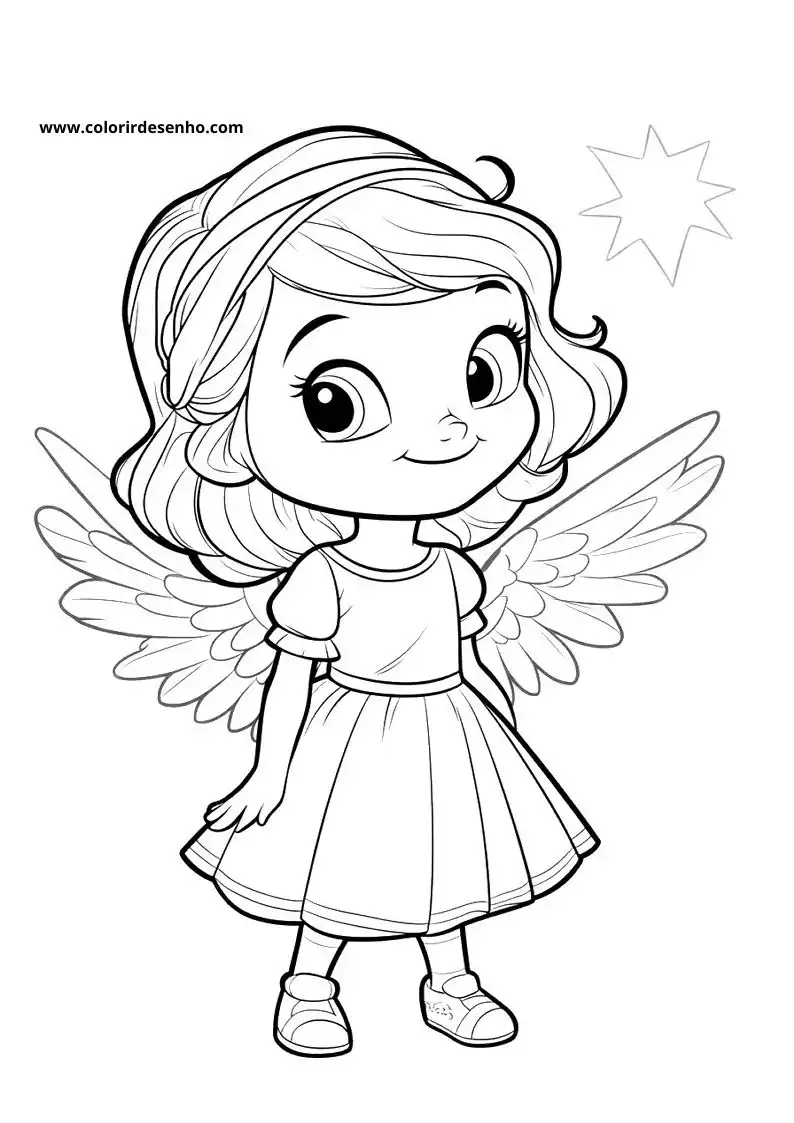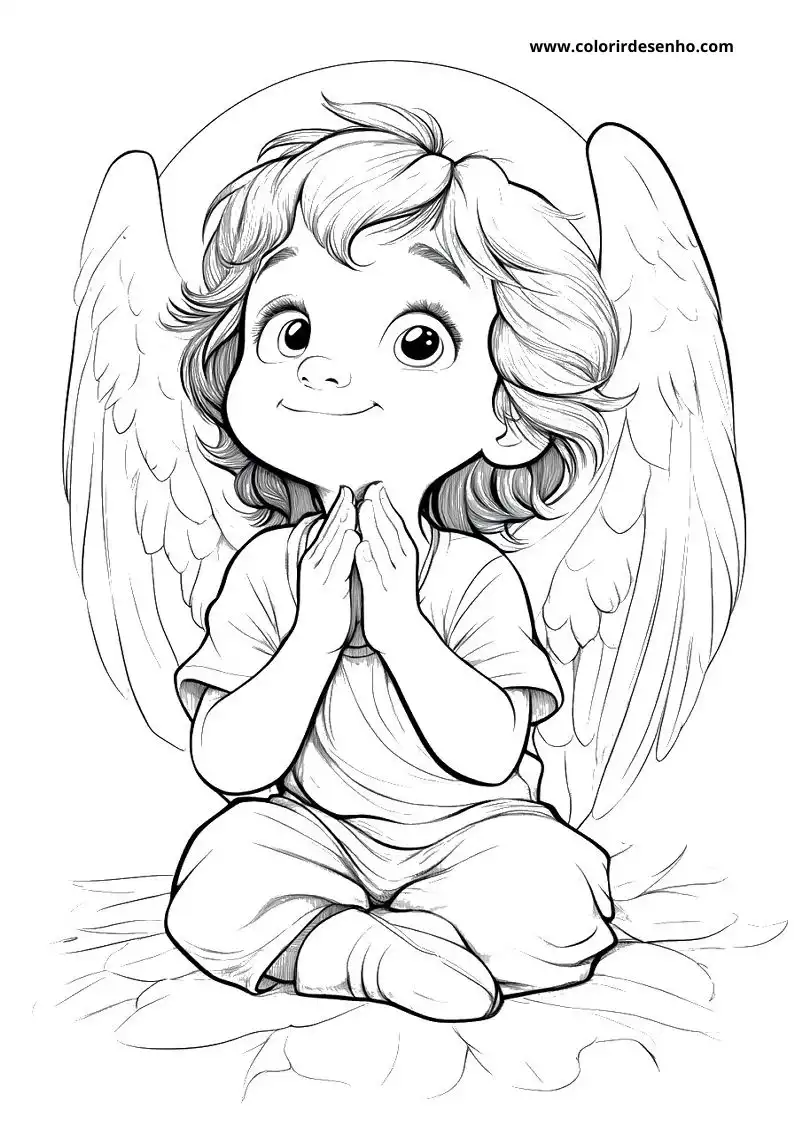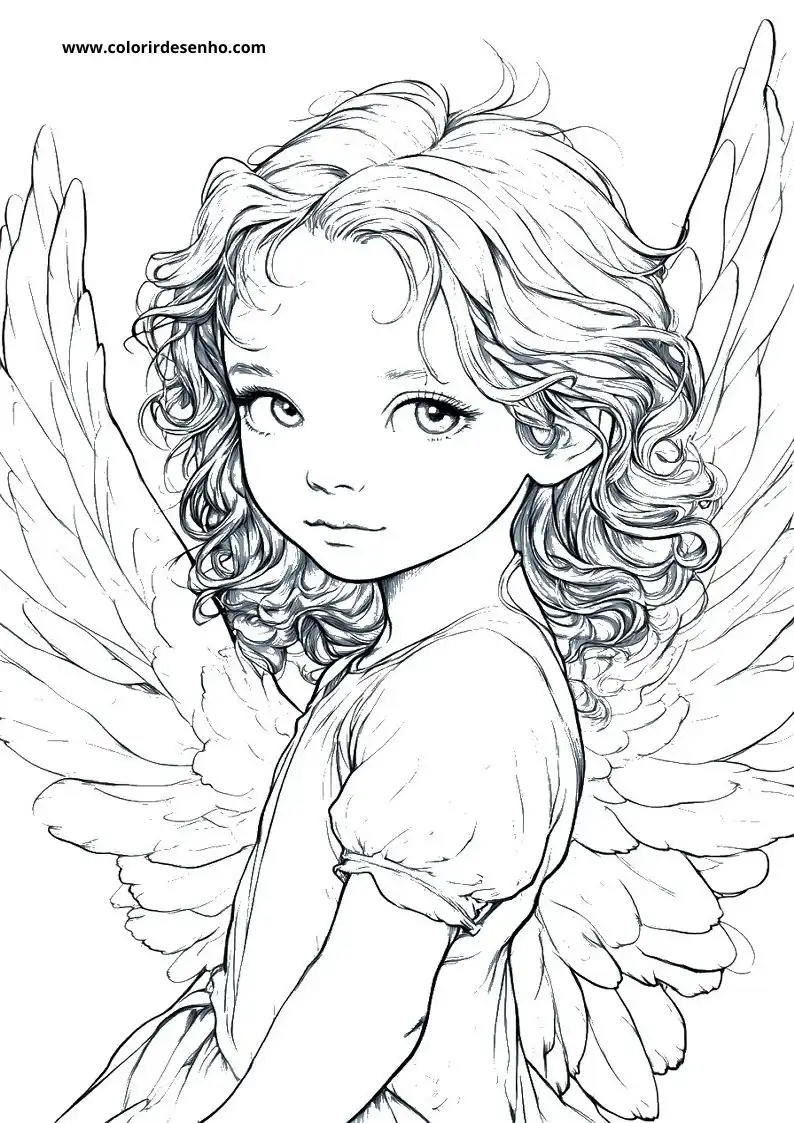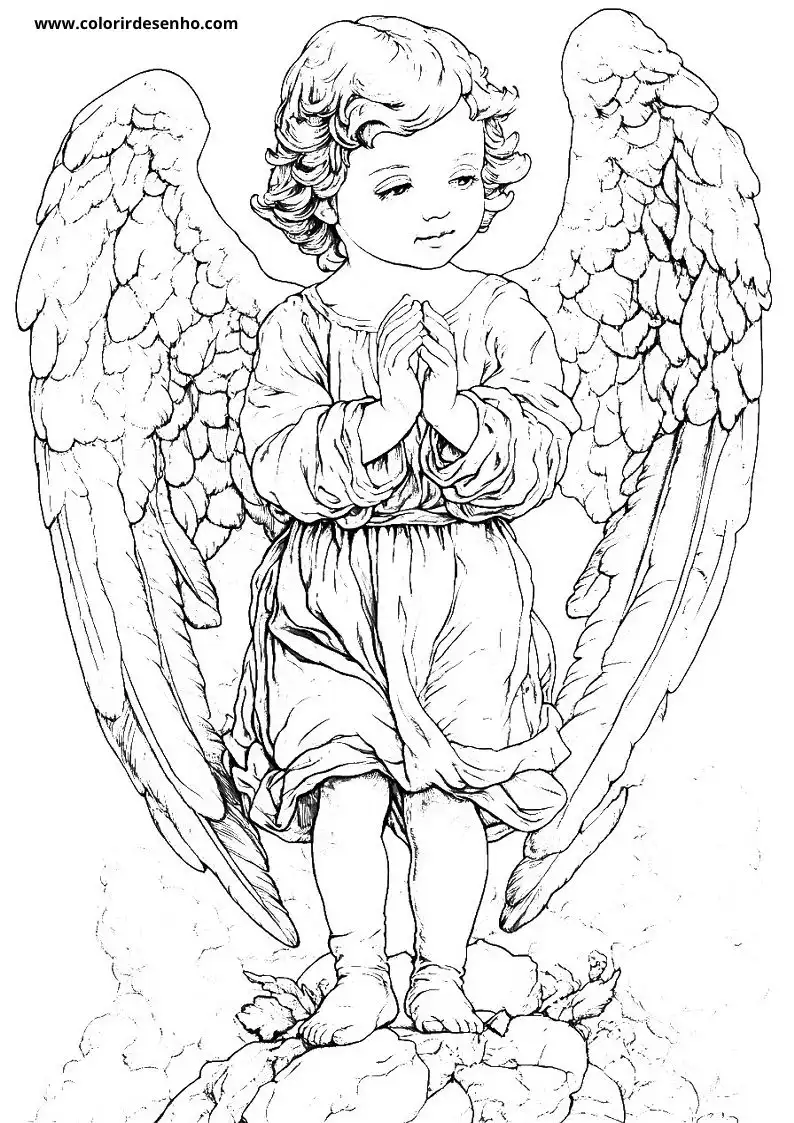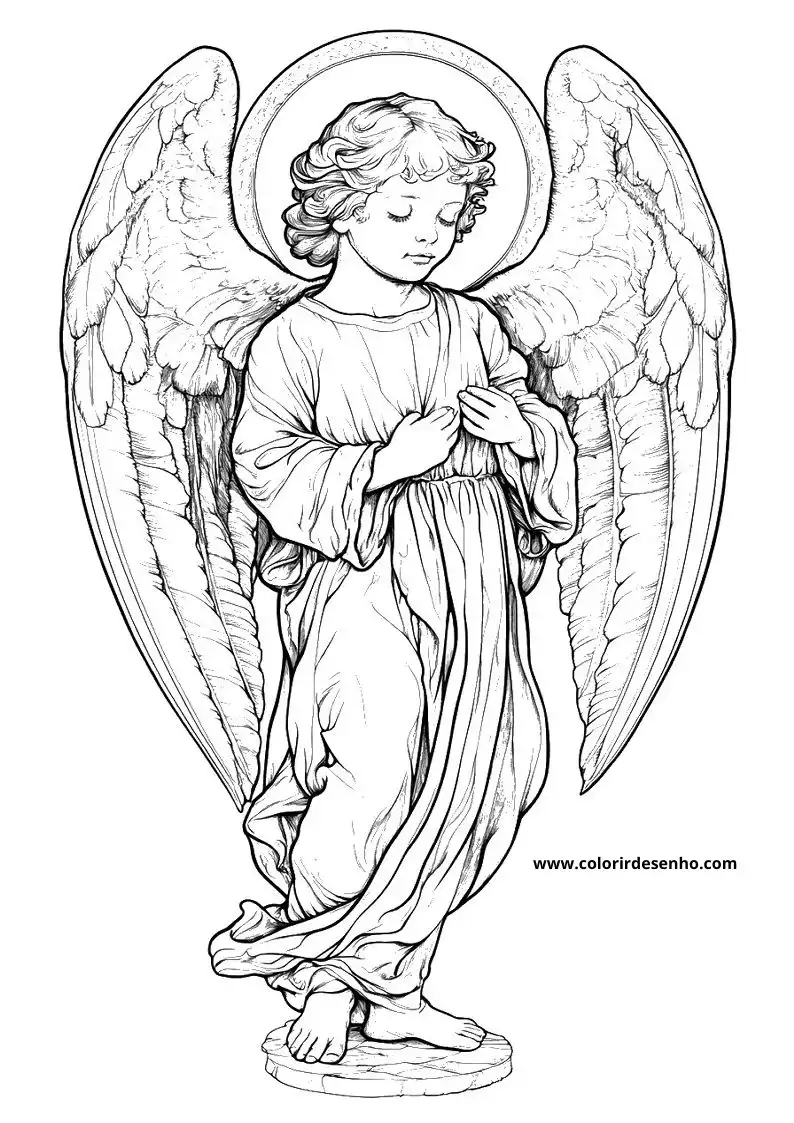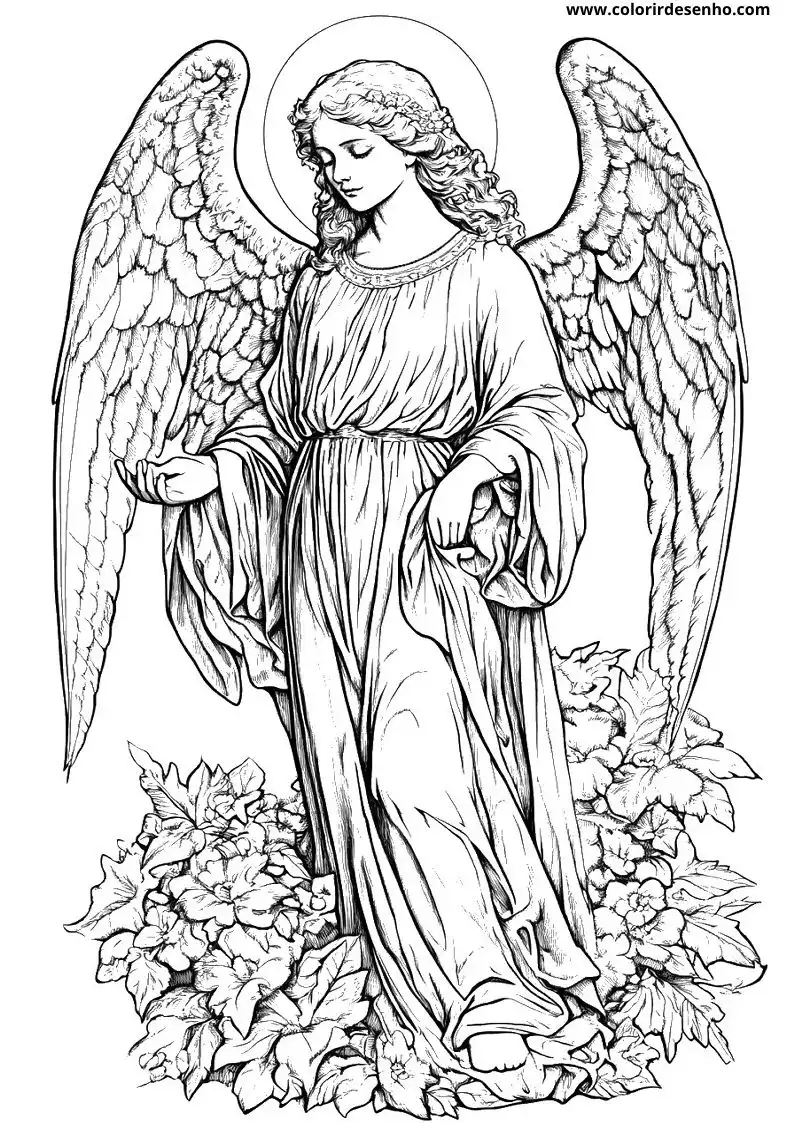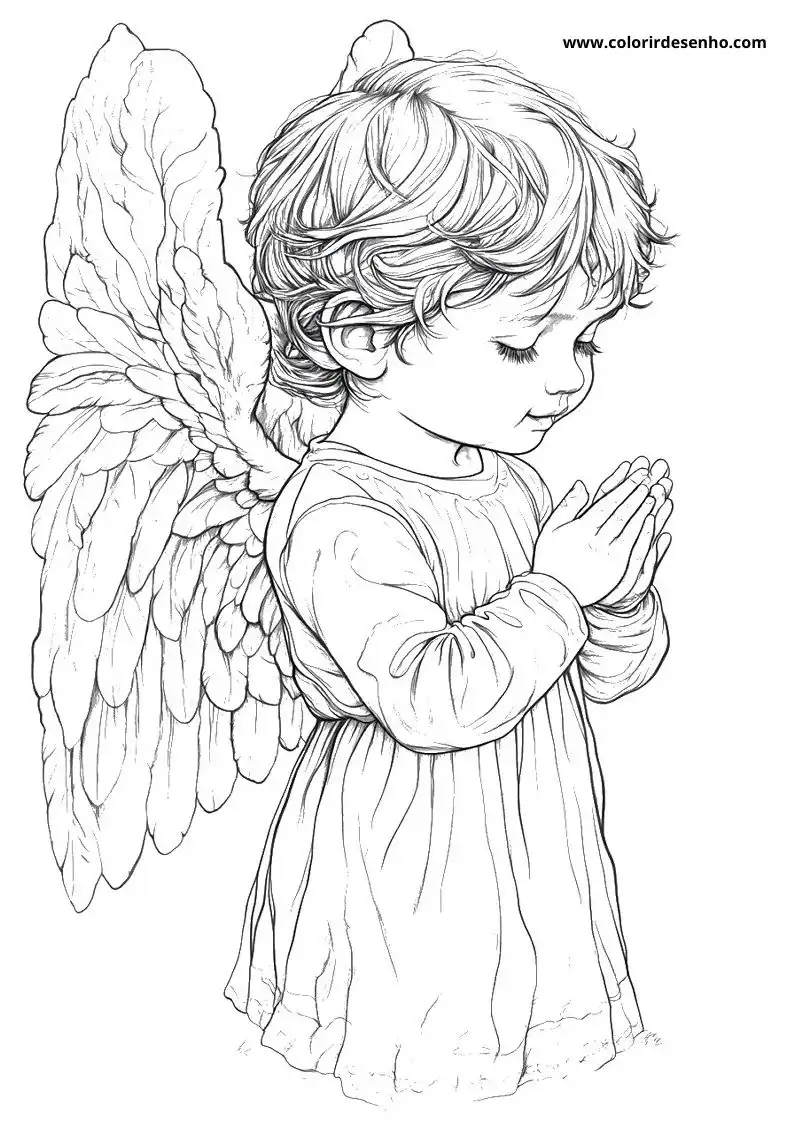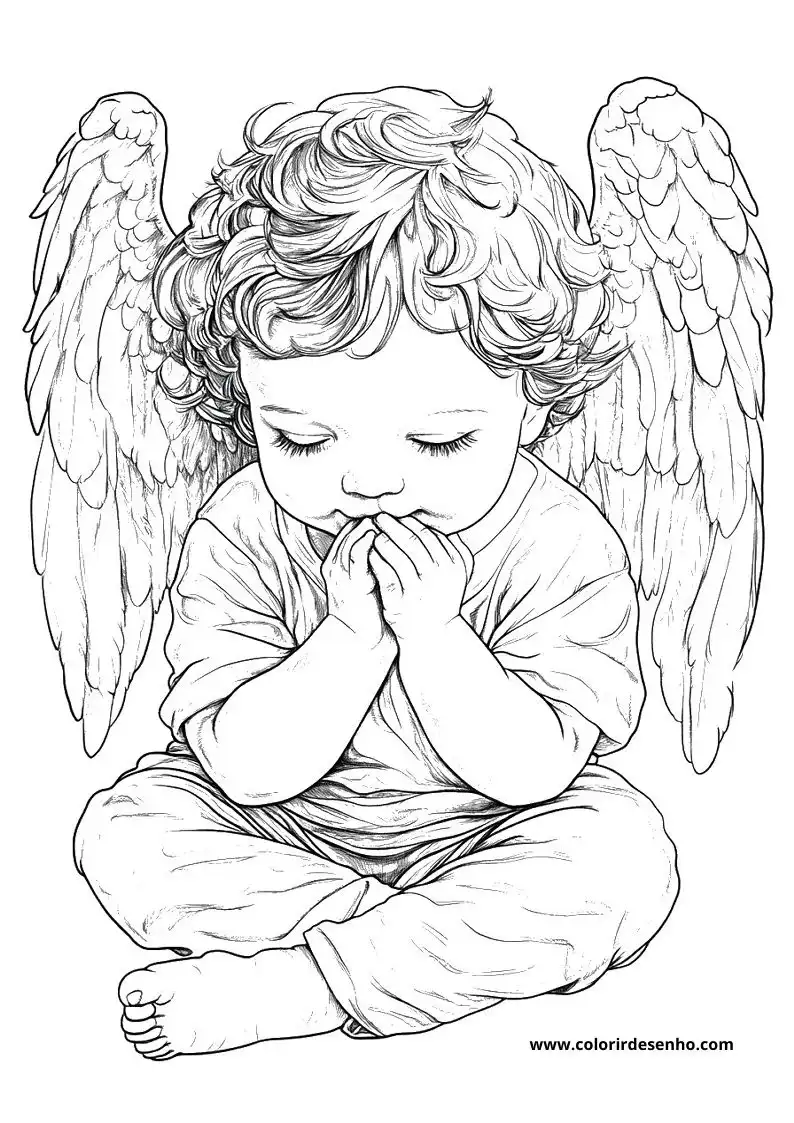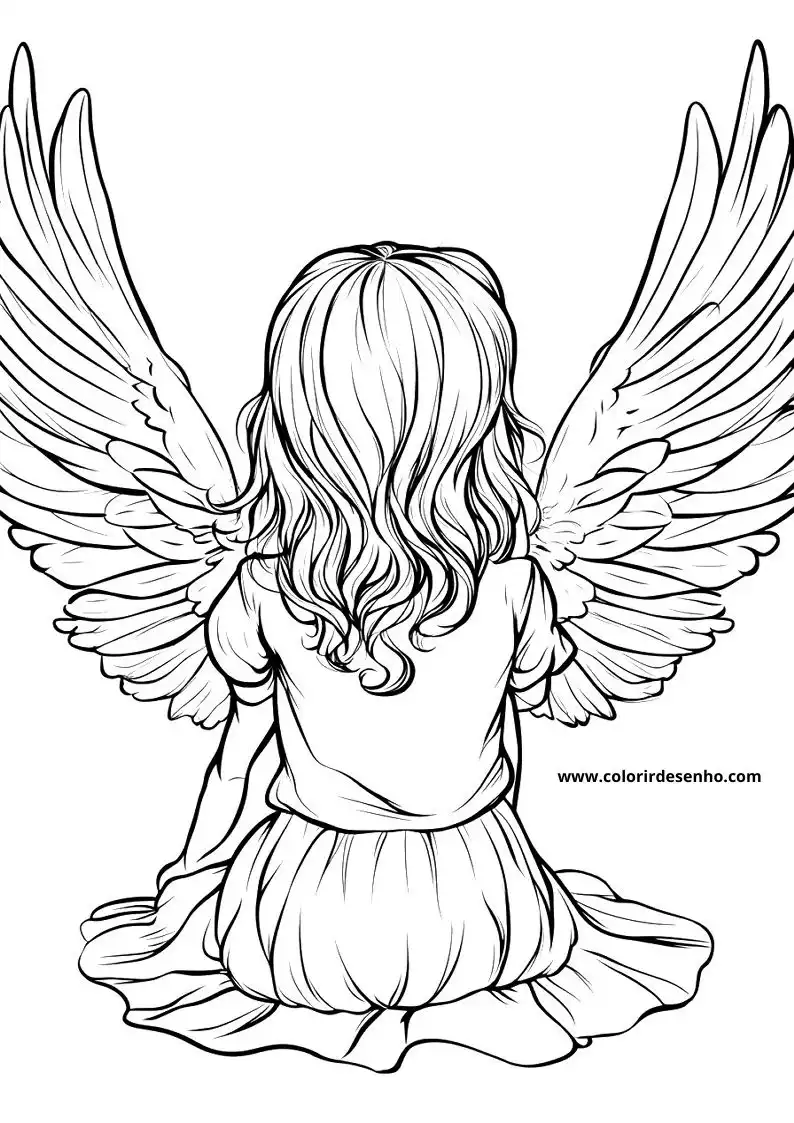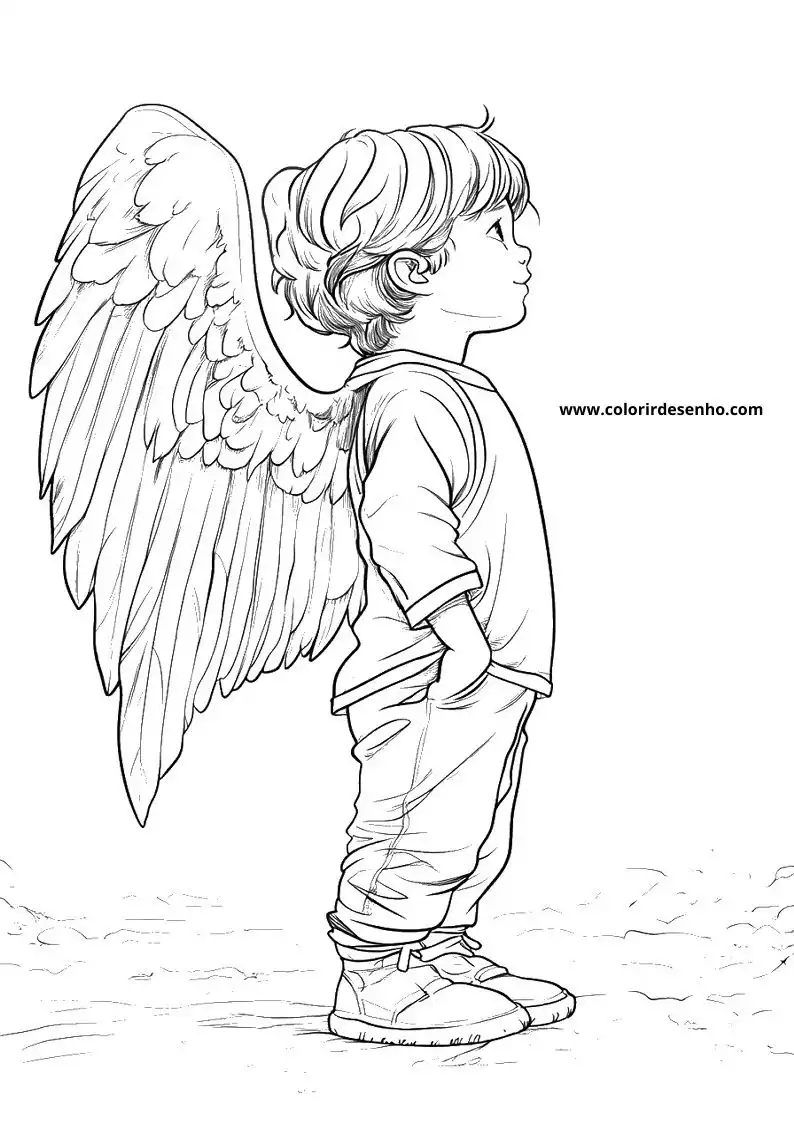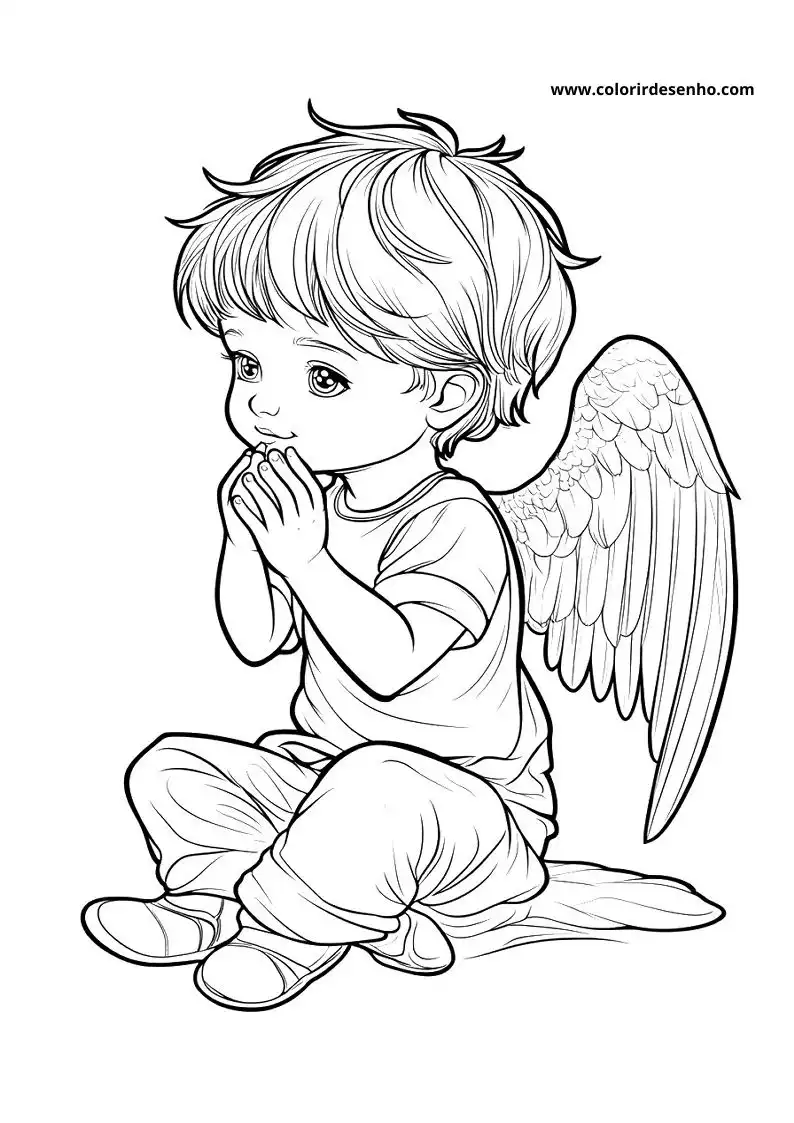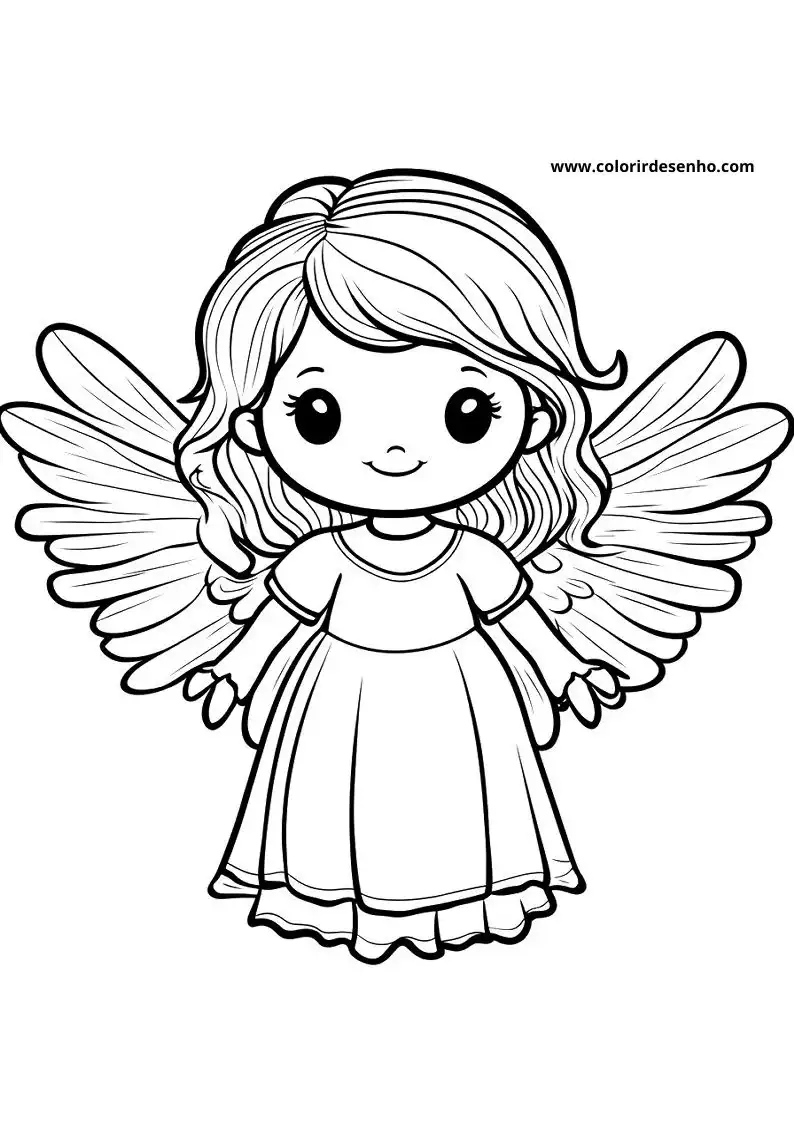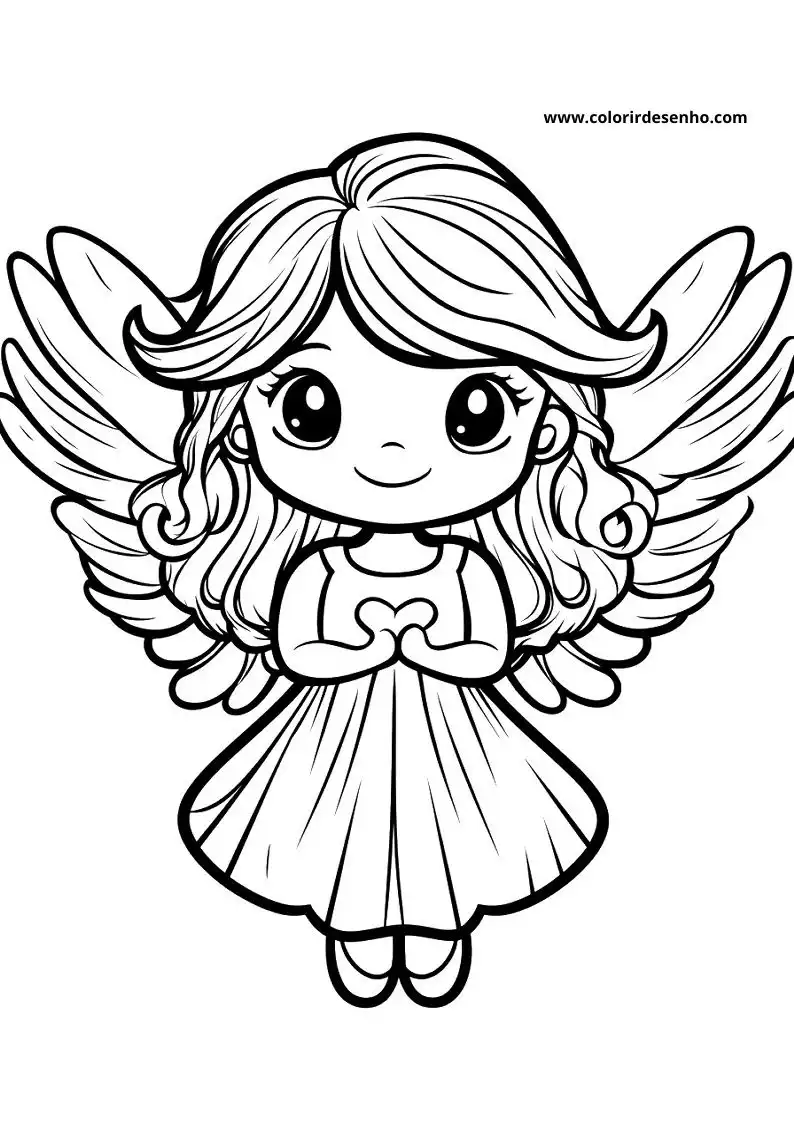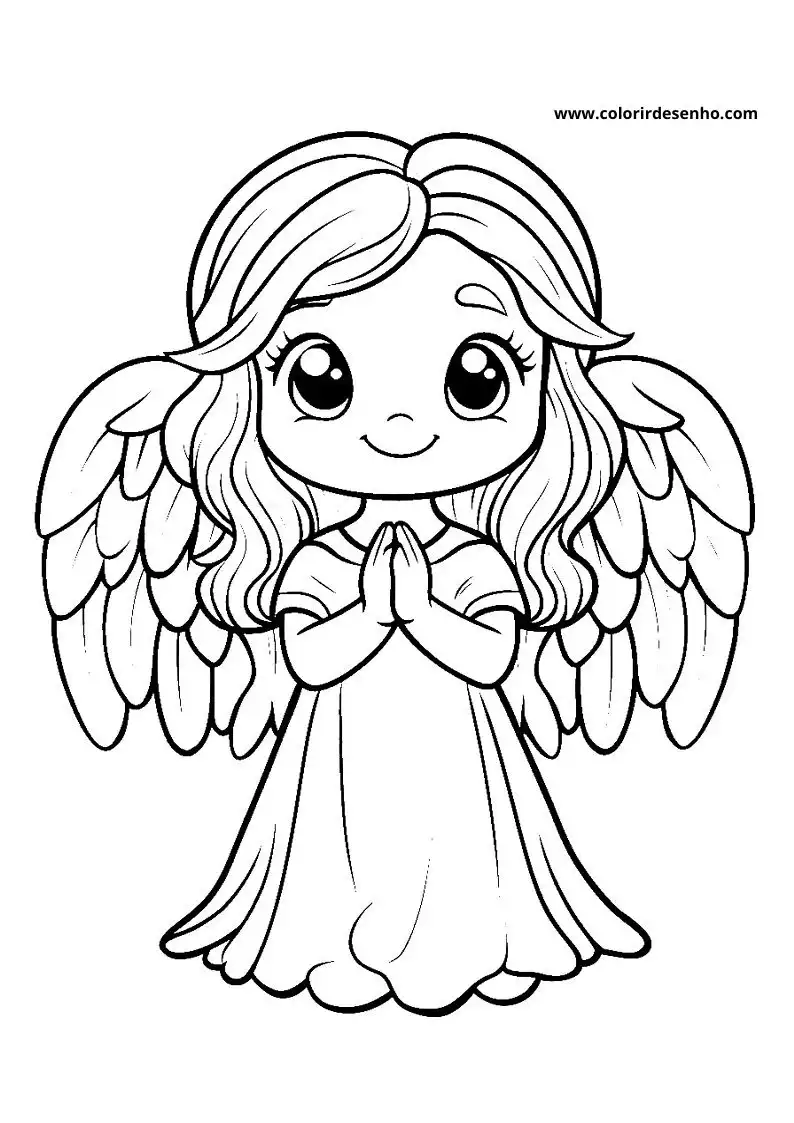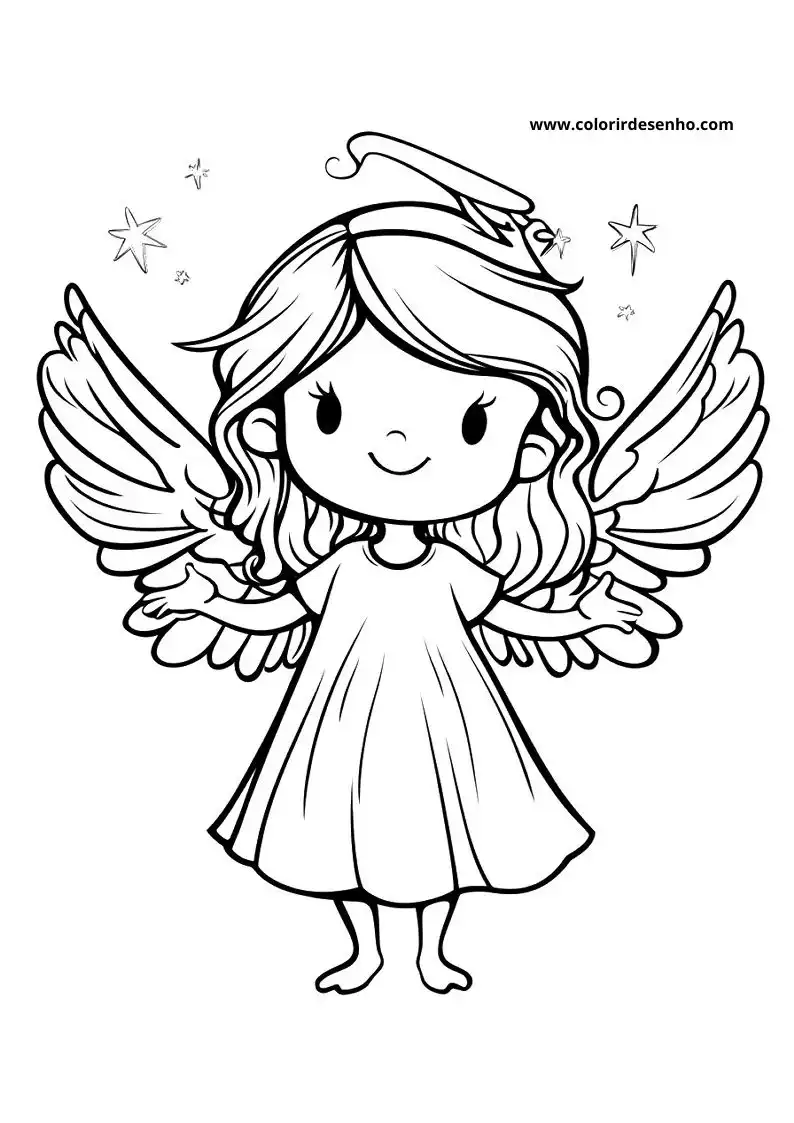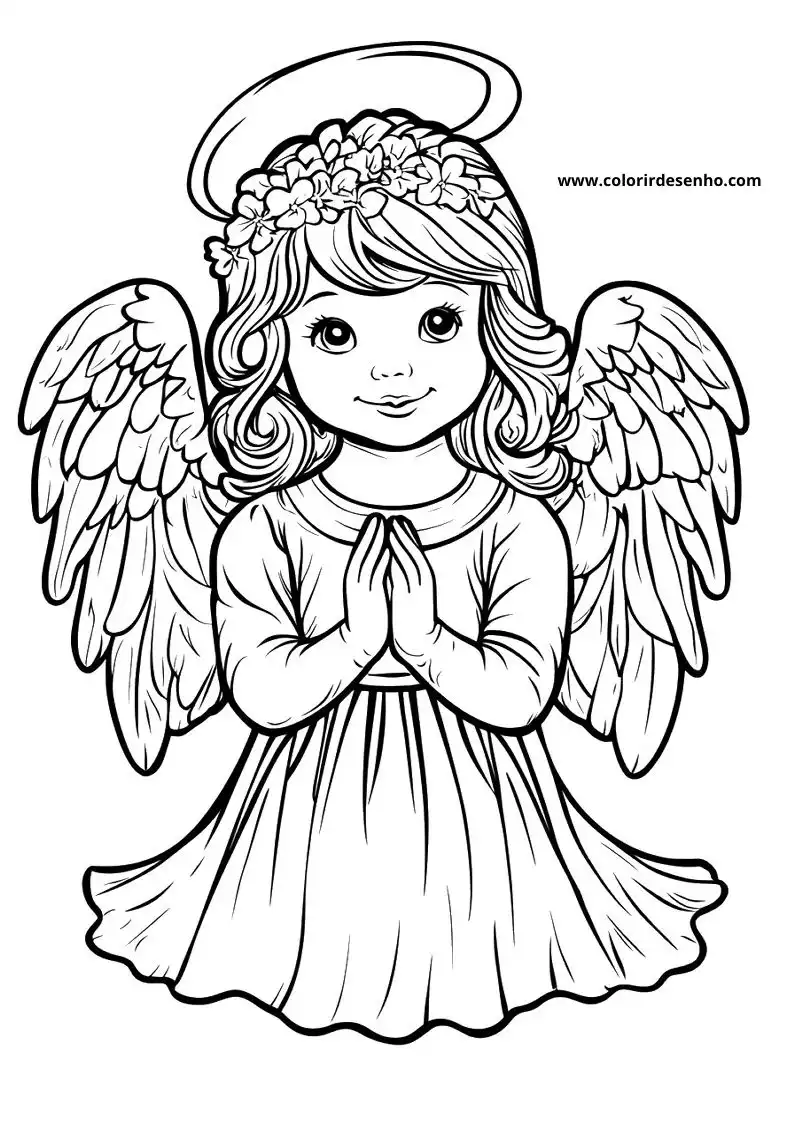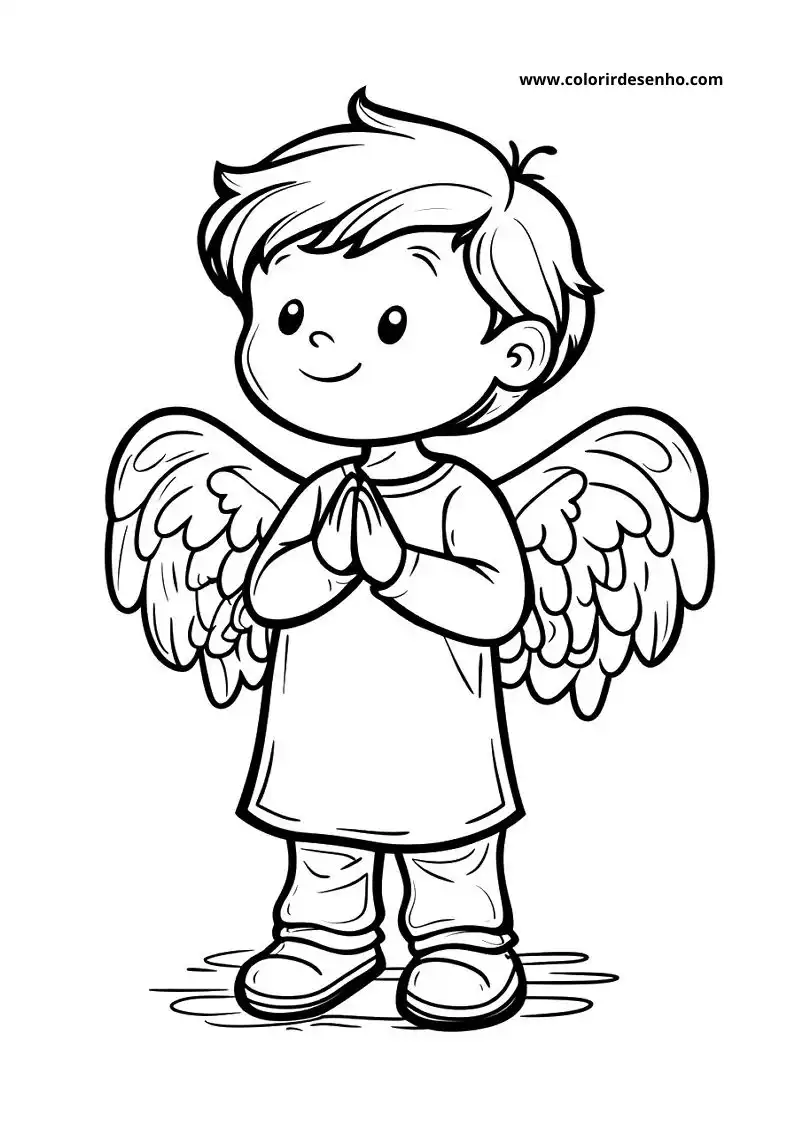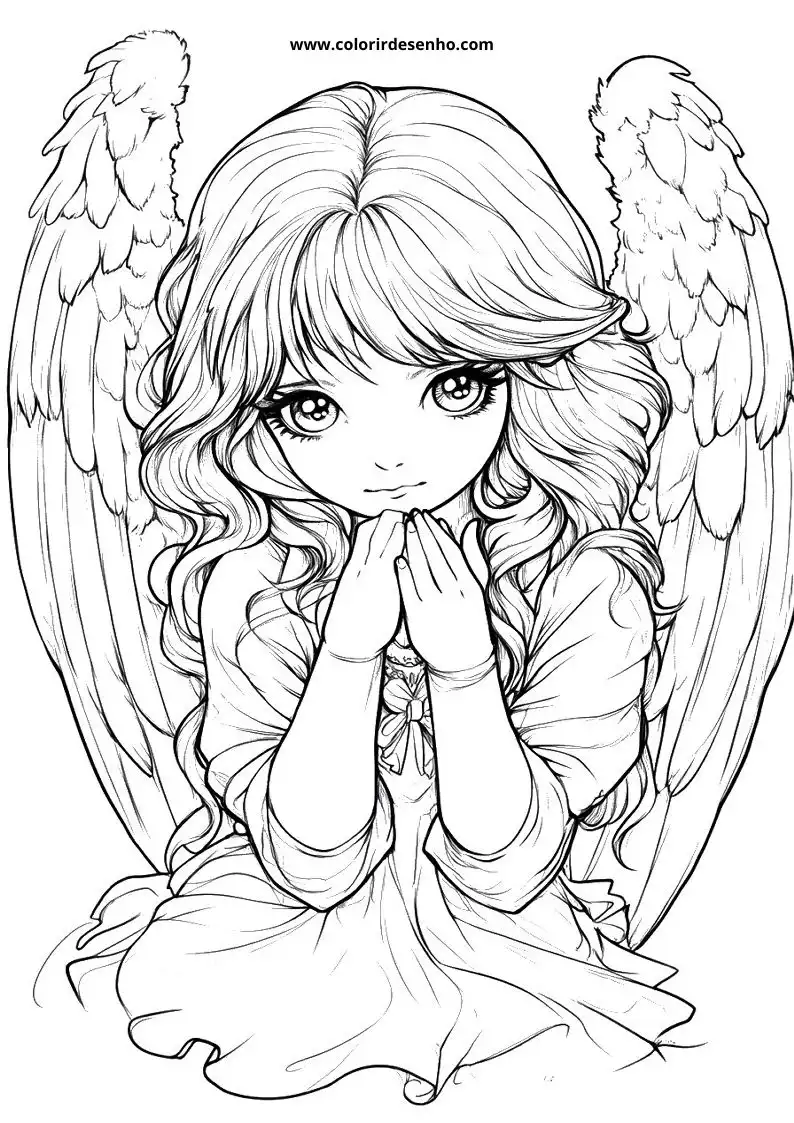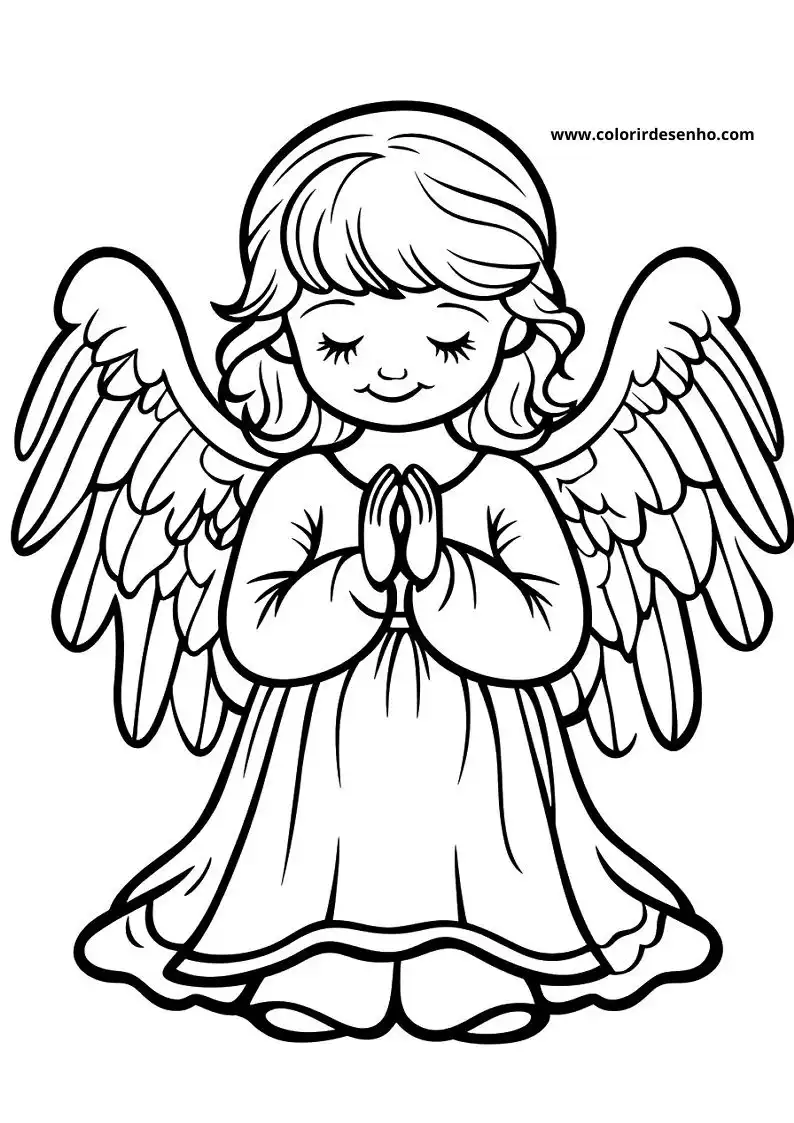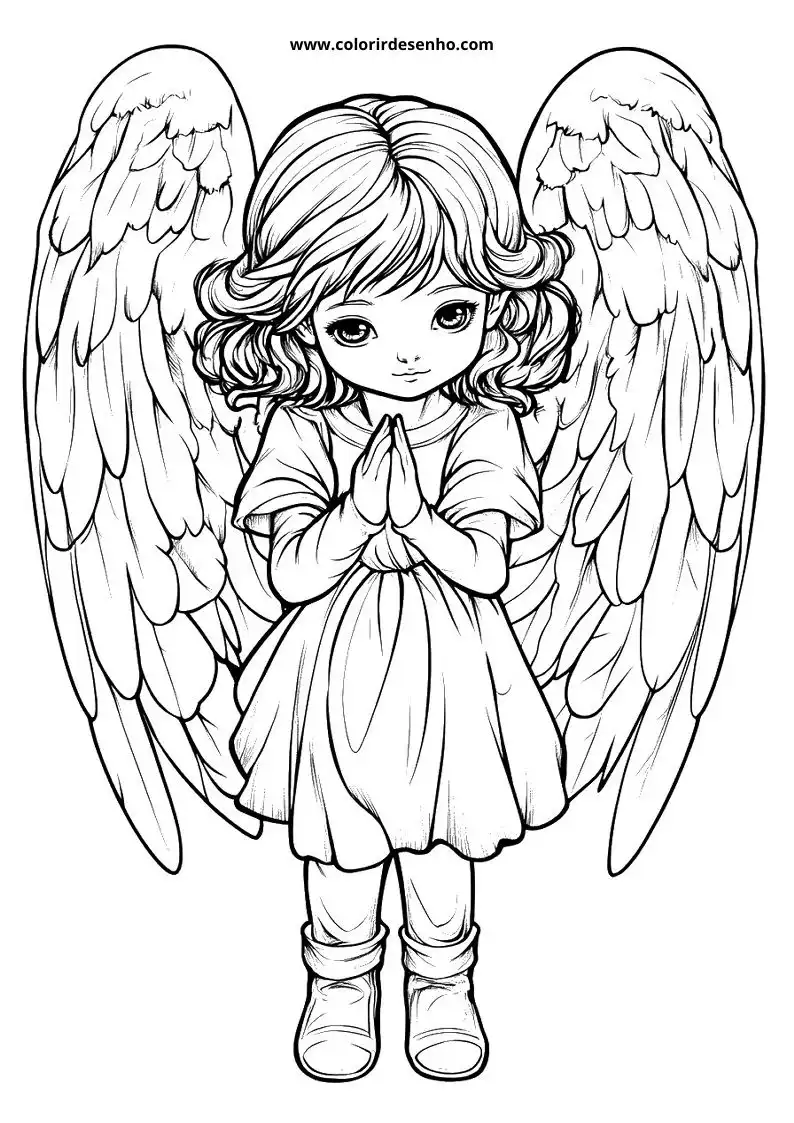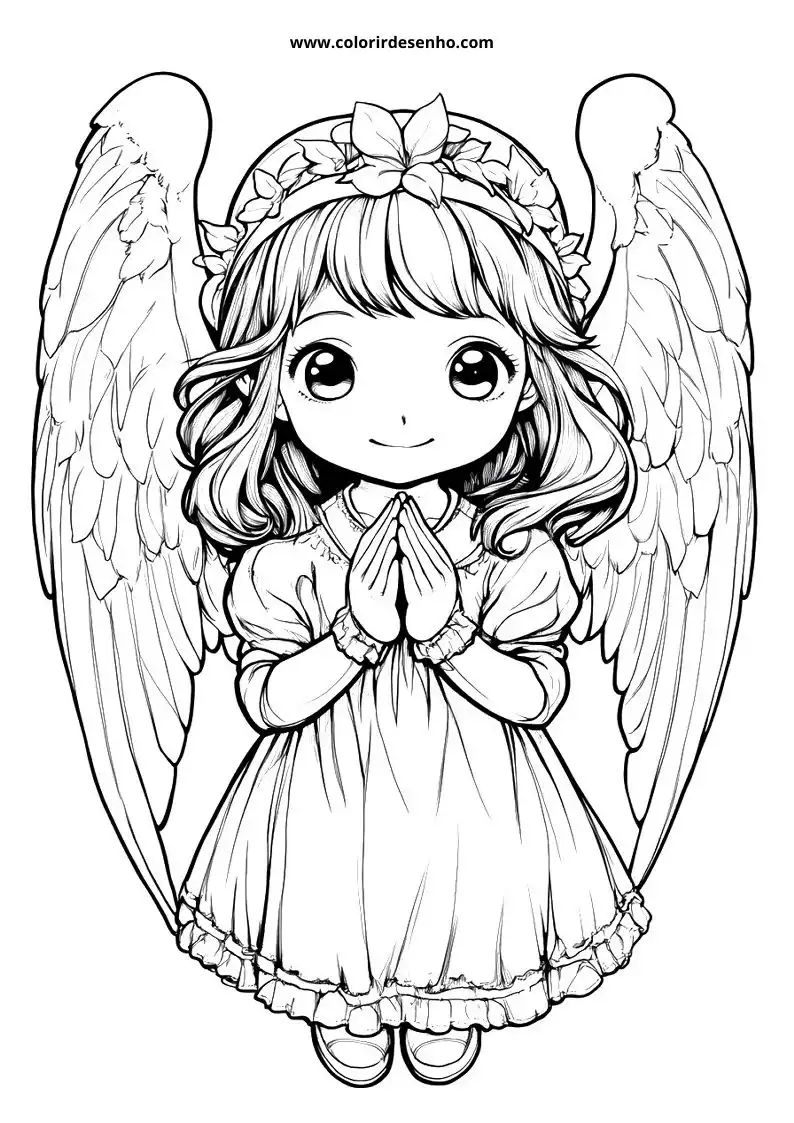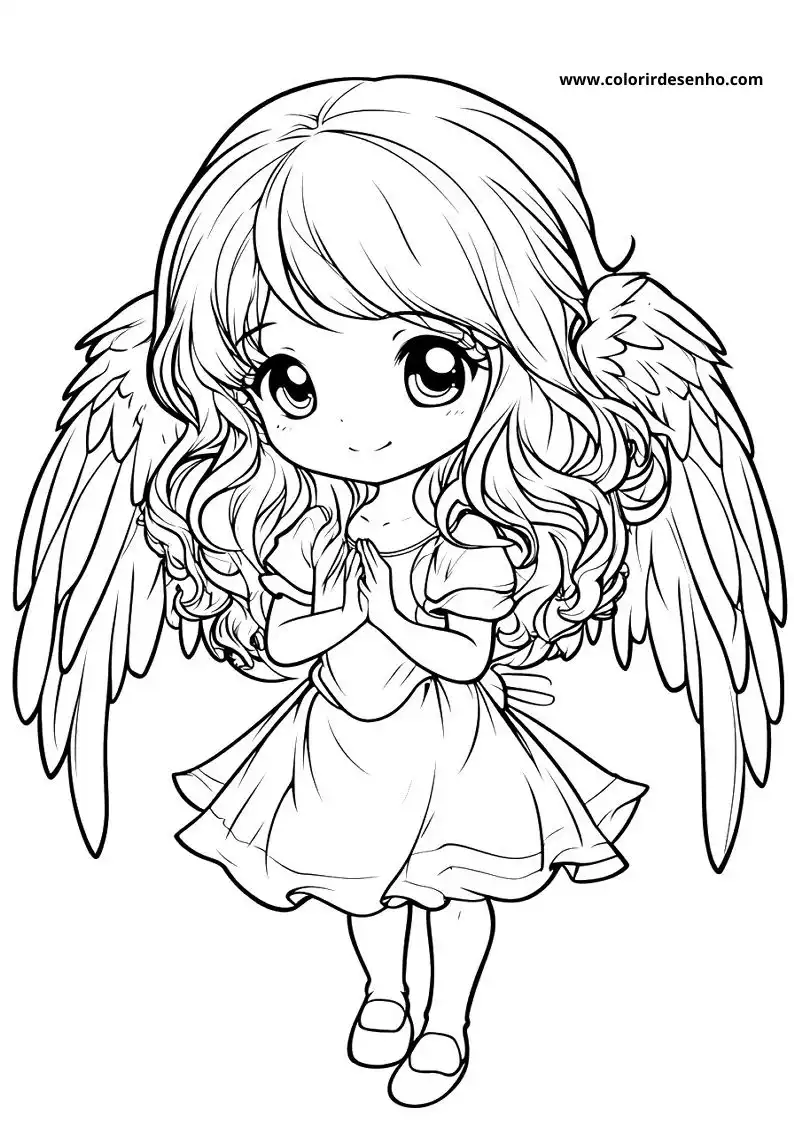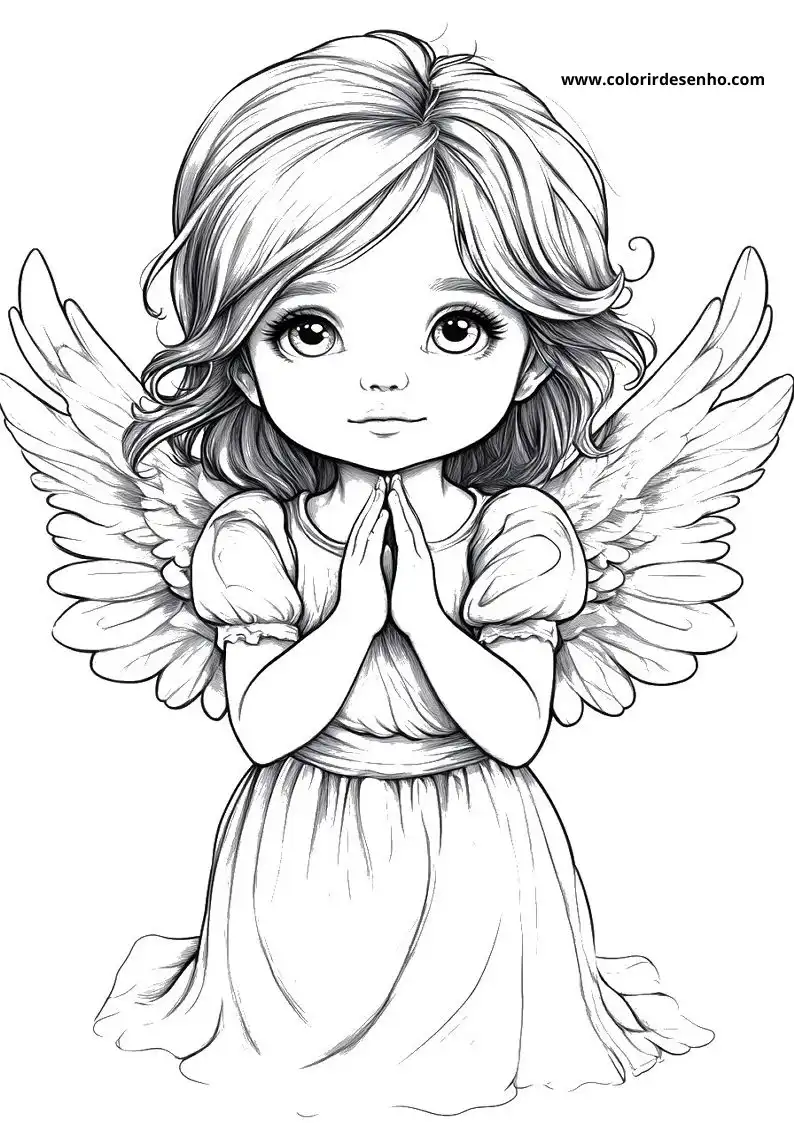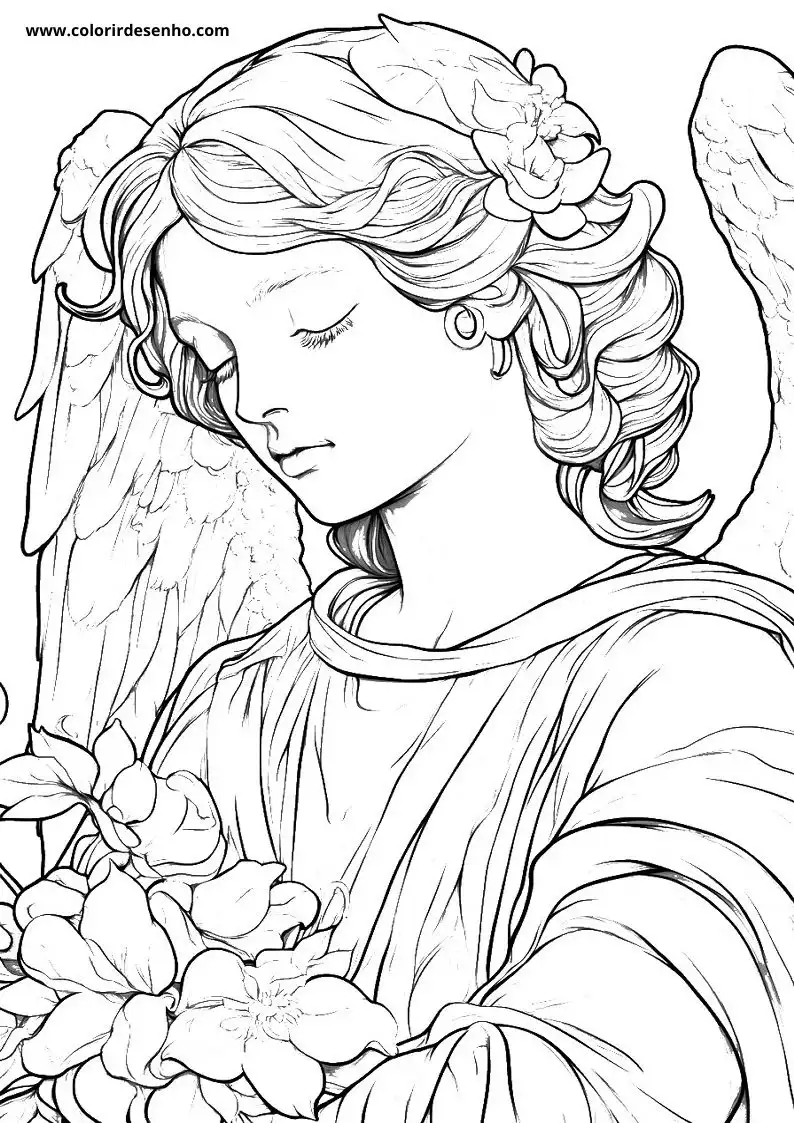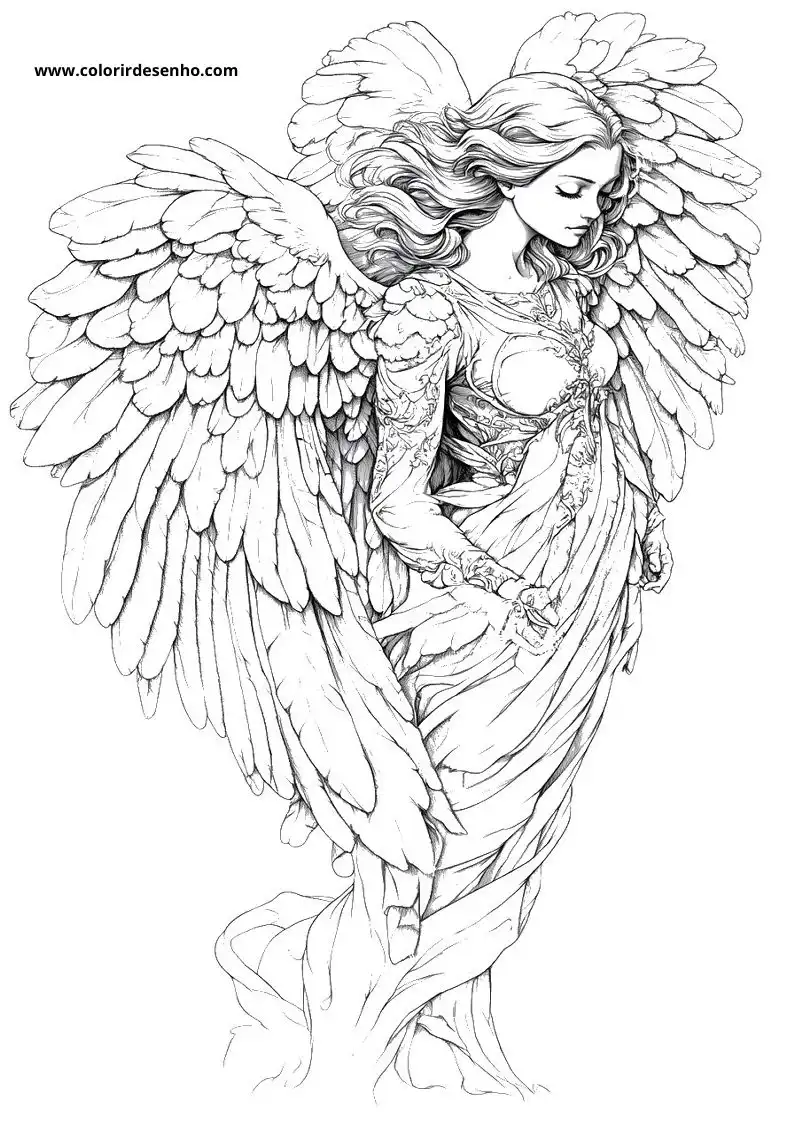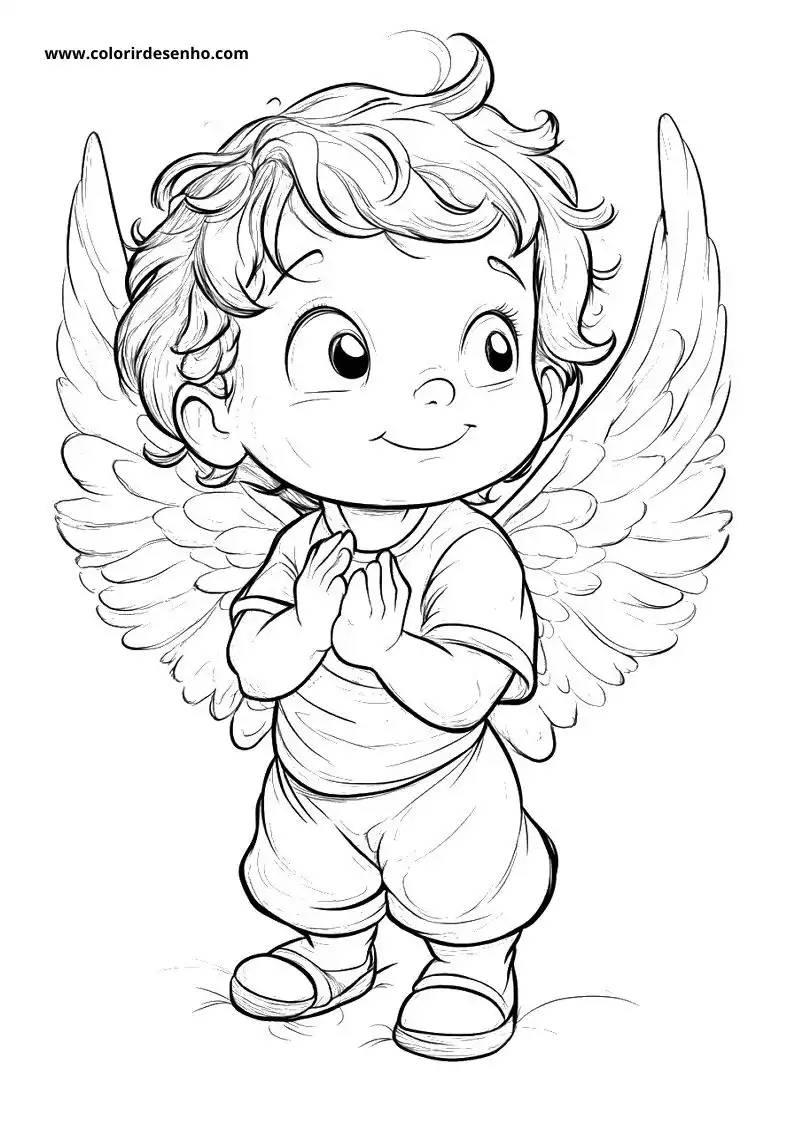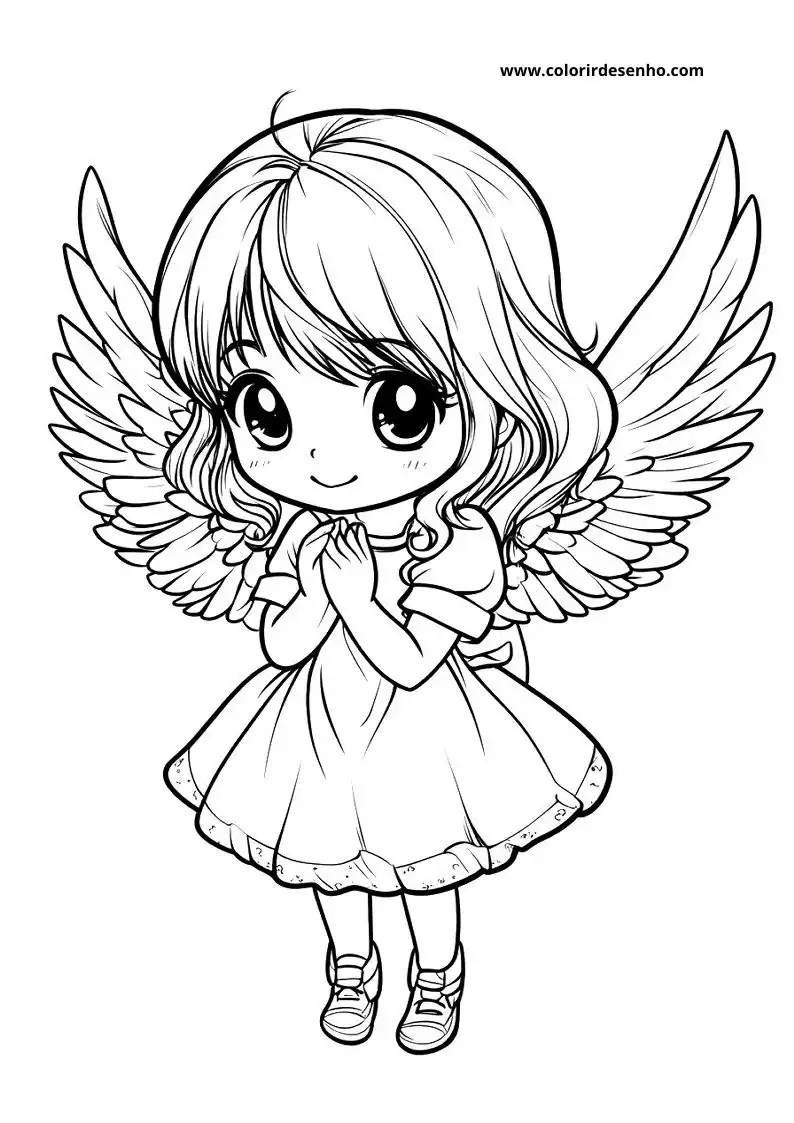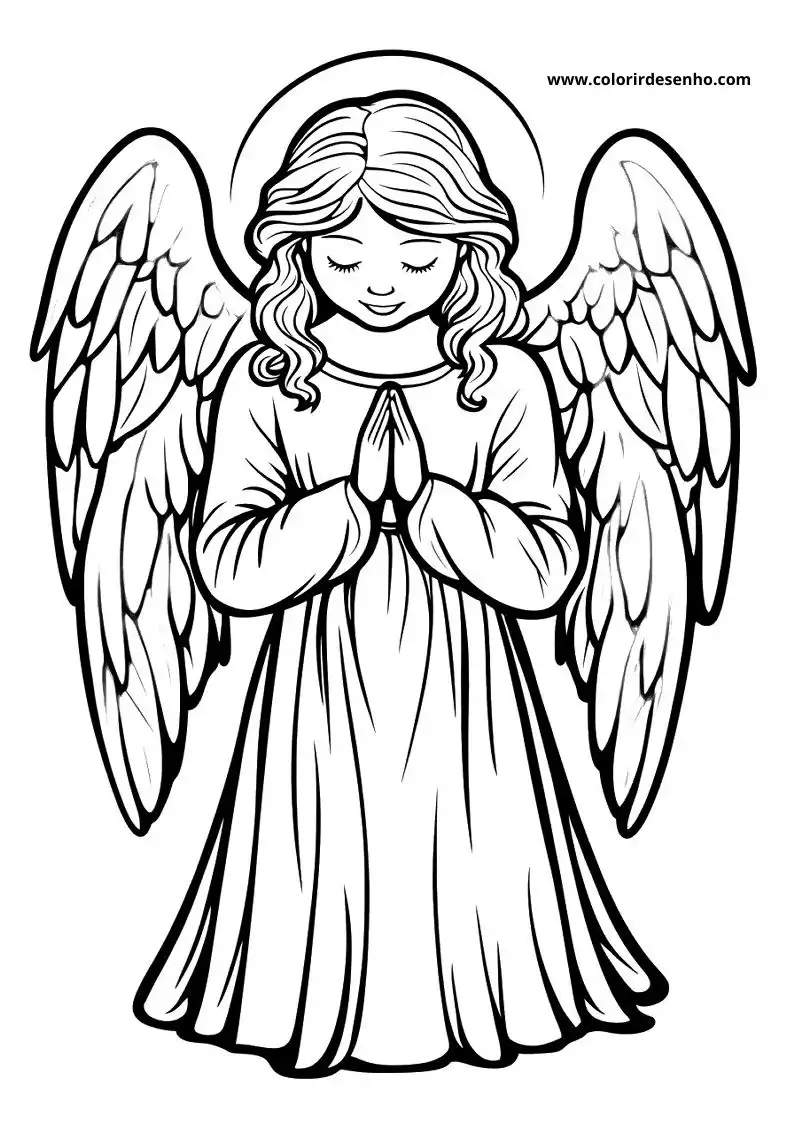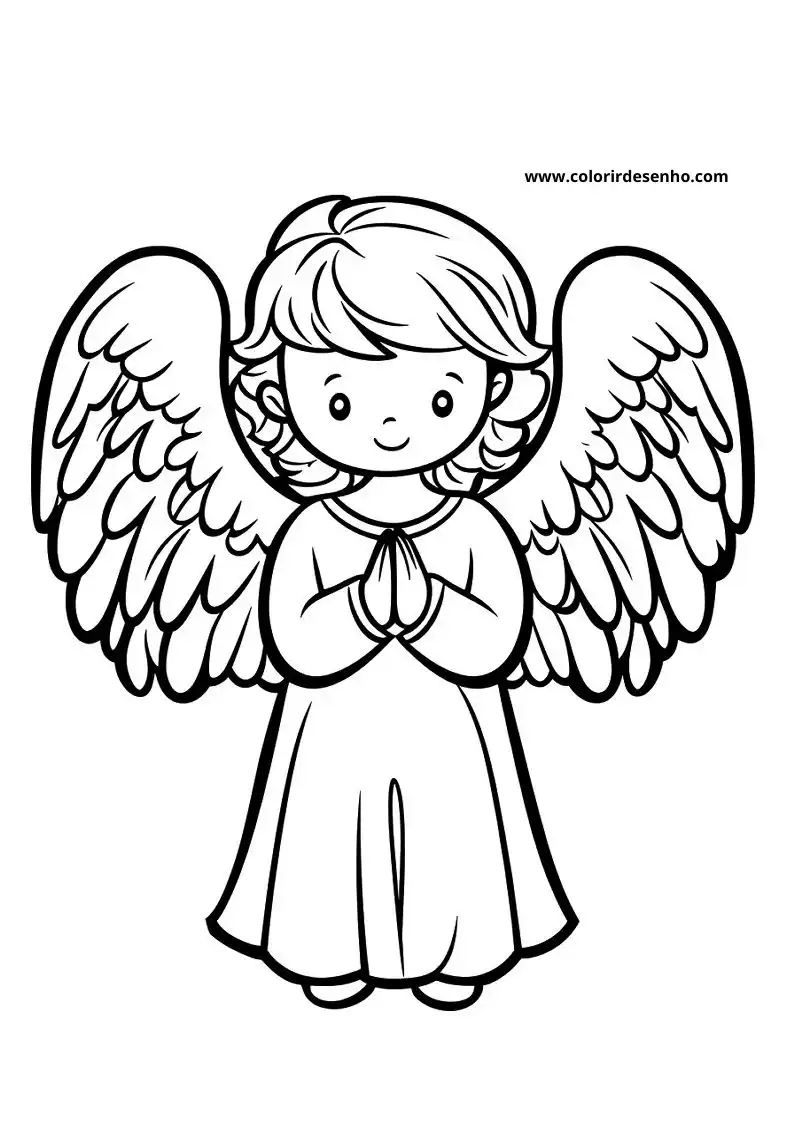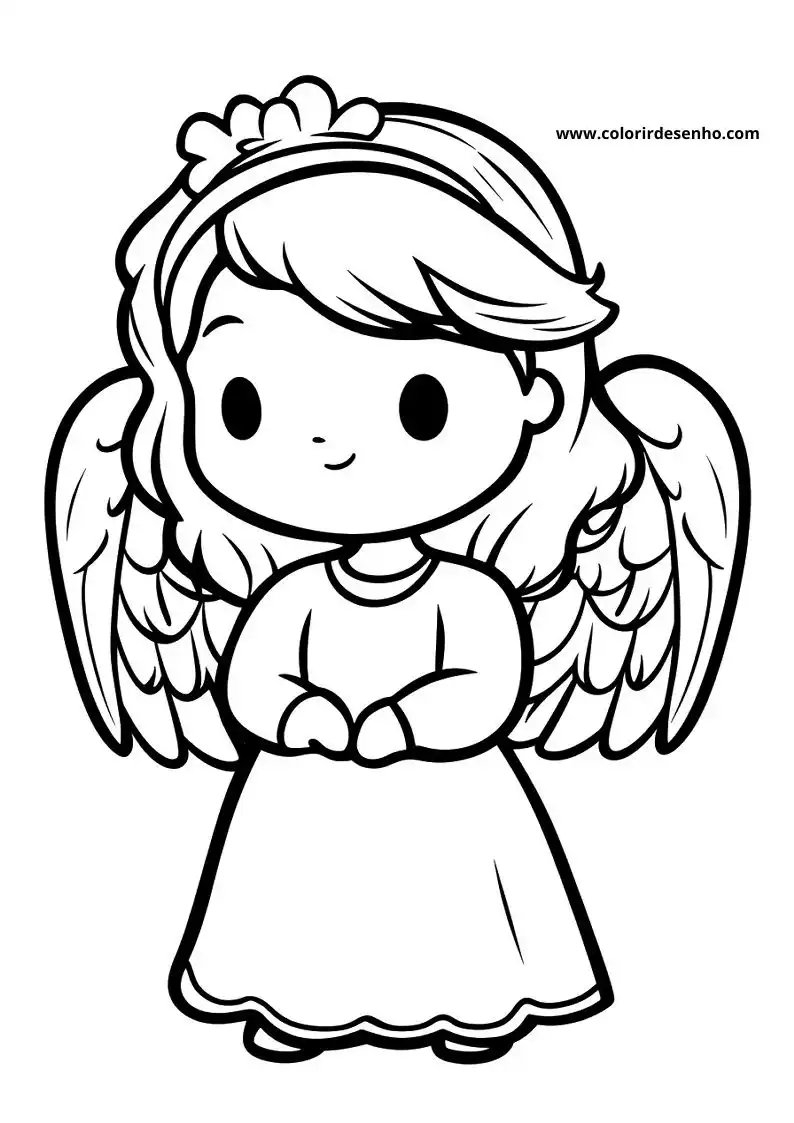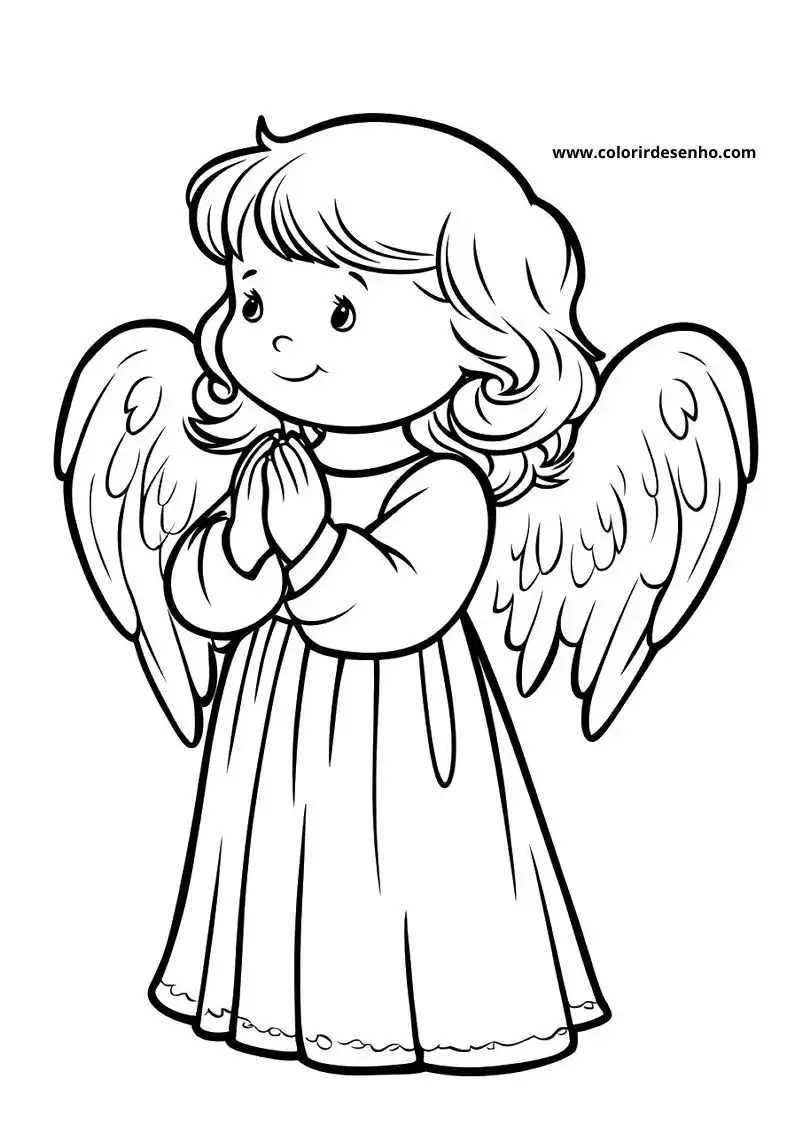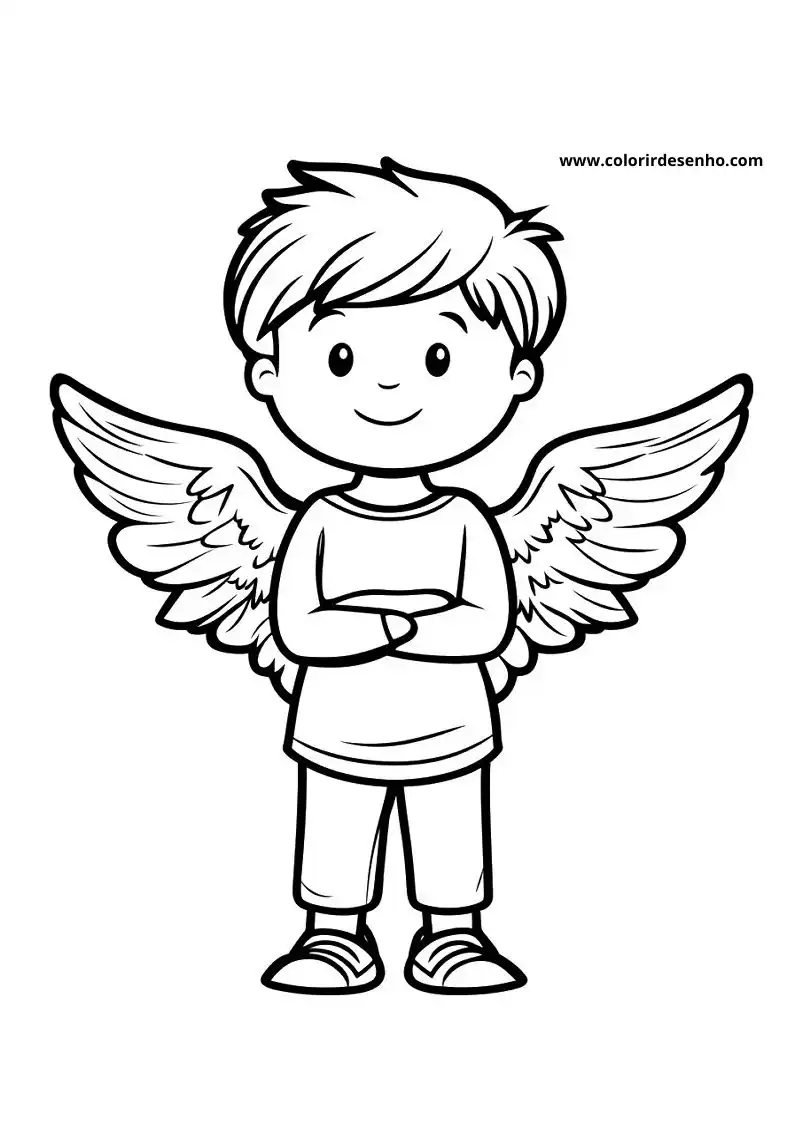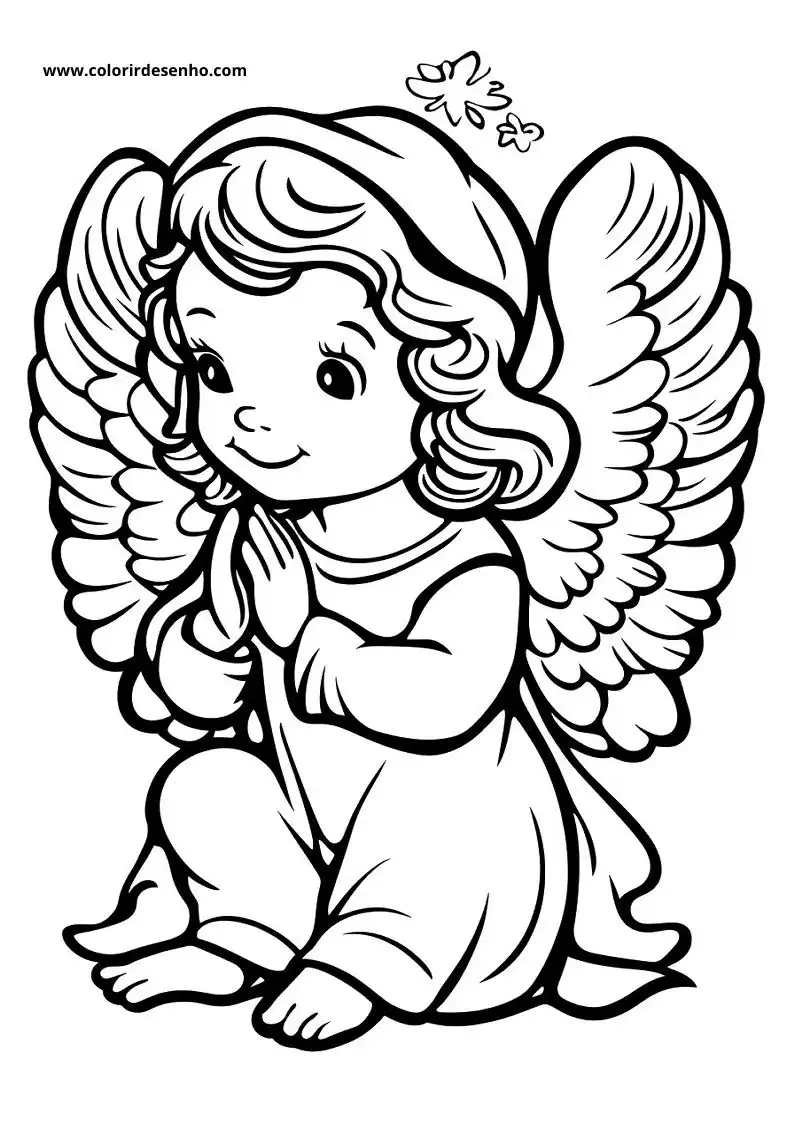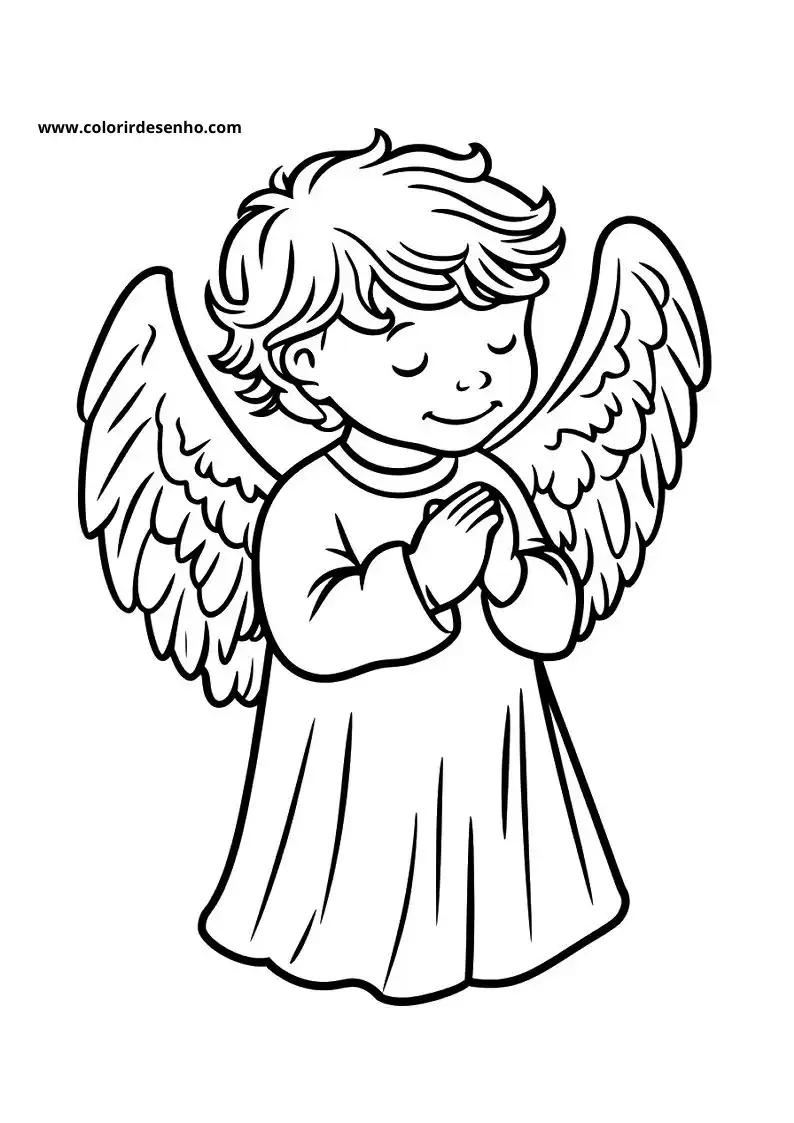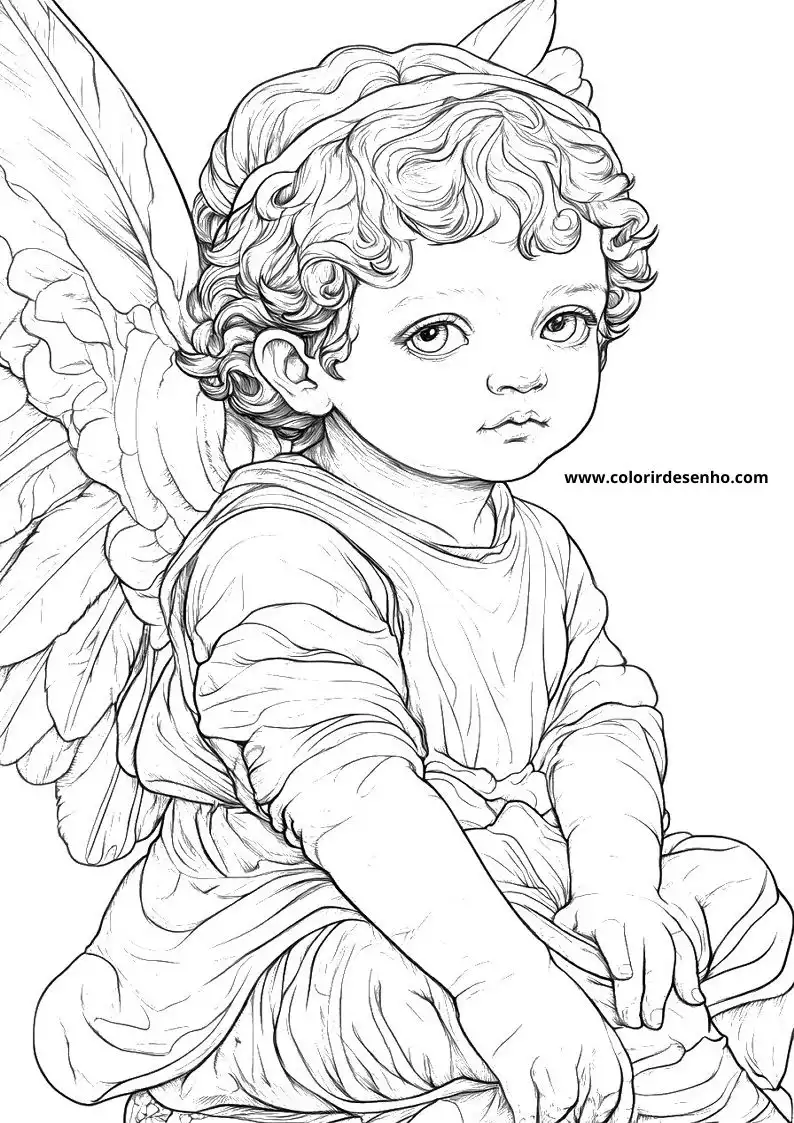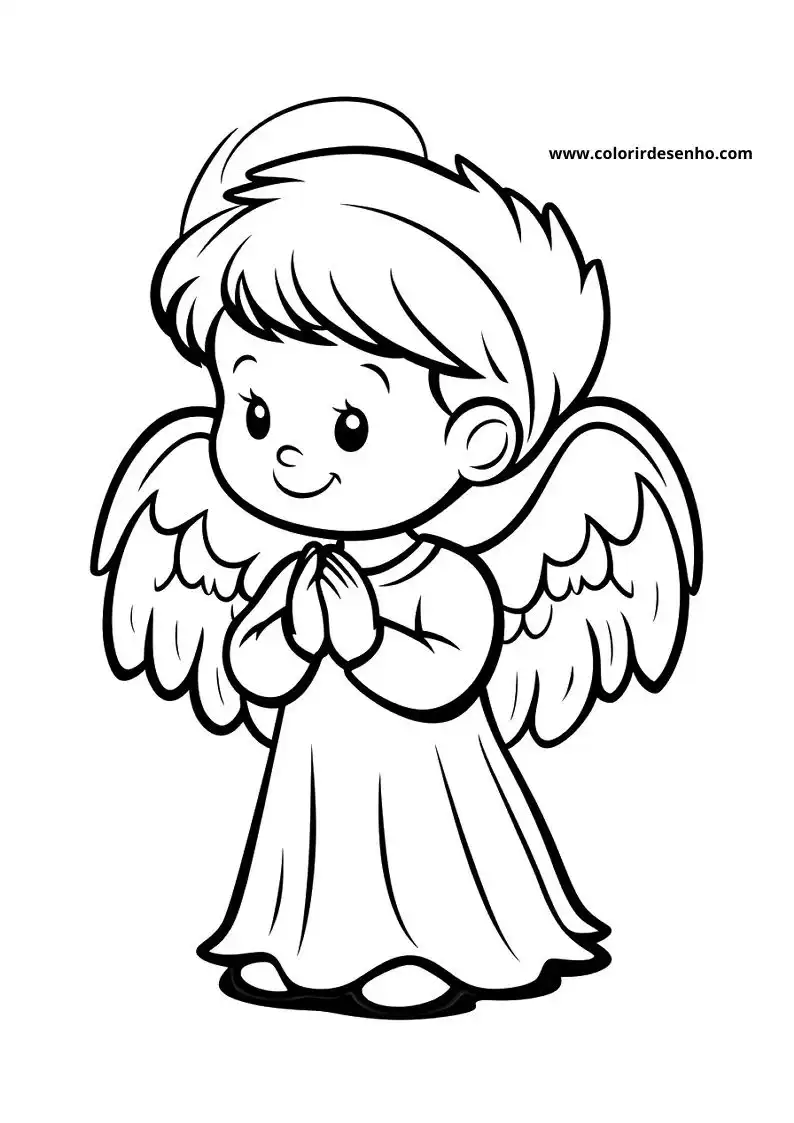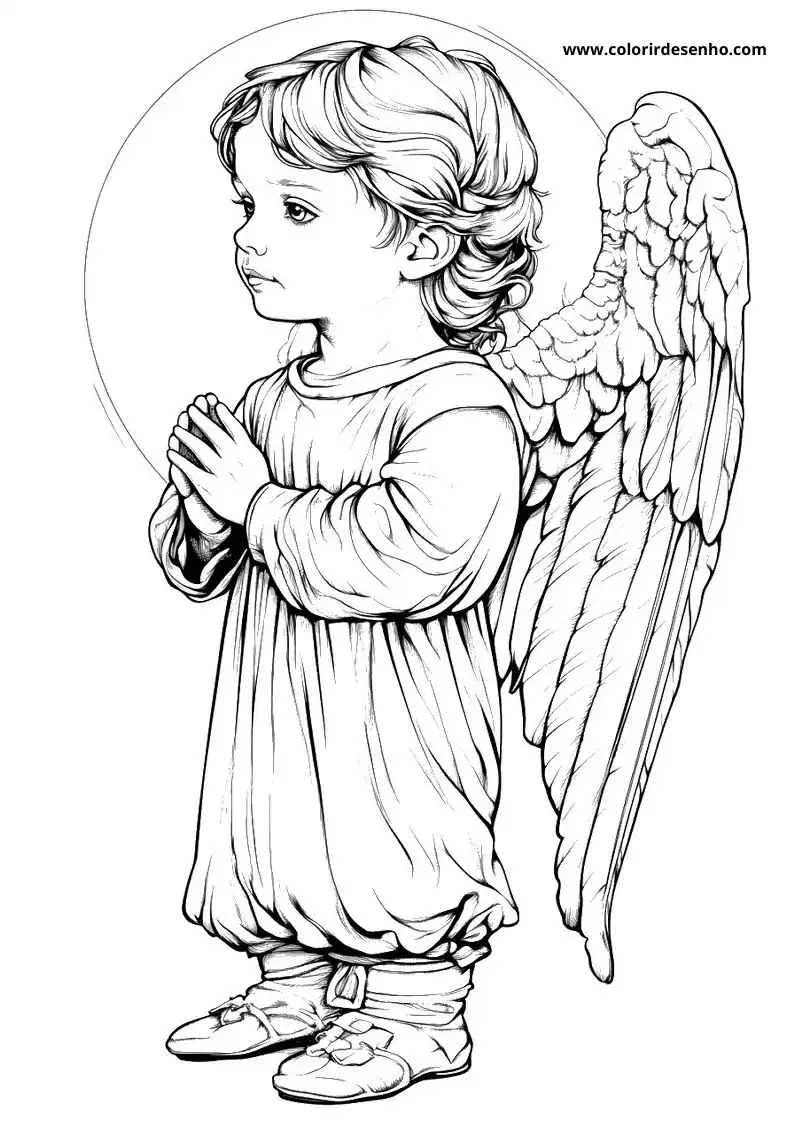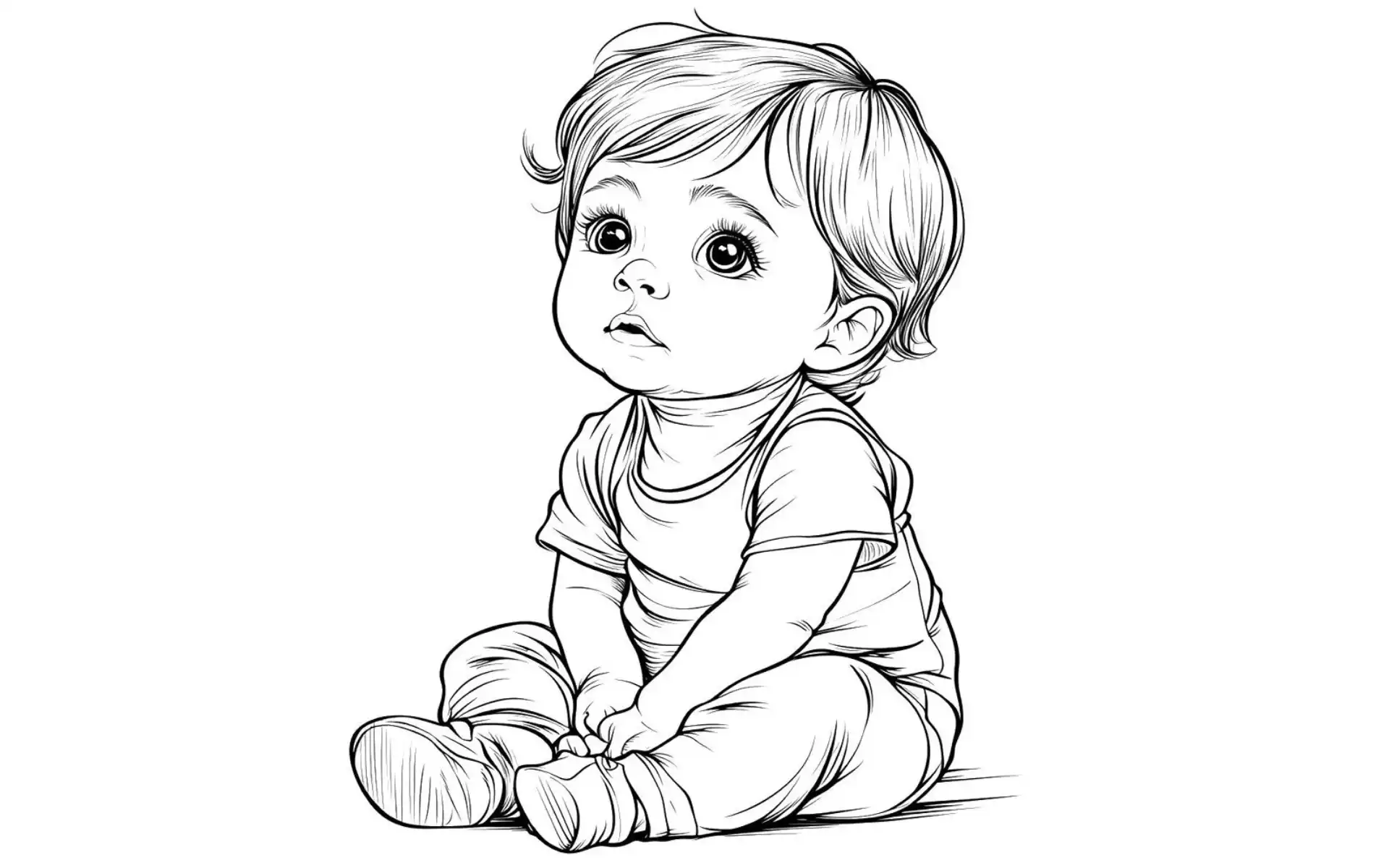Angel Coloring Pages - 221 Angels to Color
Angel Coloring Pages blend spirituality and art in a unique way. Angels, present in various cultures and religions, have always symbolized protection, purity, and peace. The search for angel images to print and color has gained prominence among parents, educators, and artists who want to bring these celestial beings into coloring activities for both kids and adults.
Beyond being inspiring characters, angels carry deep meanings that can be explored in various contexts. In this article, we’ll not only talk about angels to color but also delve into fascinating curiosities about these beings that intrigue humanity—from their roles in the Bible to the classification of their hierarchies.
Free Printable Angel to Color: Exploring Spirituality Through Art
Free Printable Angel to Color pages go beyond simple drawing activities. Angel Coloring Pages connect with the idea of expressing something deeper and spiritual. Creating and coloring angelic figures allows children and adults to enter an atmosphere of tranquility and contemplation, something inherently associated with angels themselves.
However, it’s interesting to understand that these beings aren’t just symbolic representations. They have deep roots in various traditions and beliefs, especially in the Bible. So, when choosing an angel to print and color, it’s a way to get closer to these beings while enjoying a creative activity.

THE COLORING PICTURES ARE AT THE BOTTOM OF THE PAGE, WHEN YOU OPEN THE PICTURE, CLICK ON THE SAVE BUTTON ABOVE THE PICTURE.
Curiosities About the Hierarchy of Angels
Within Christian tradition, angels are divided into distinct hierarchies, each with specific functions and characteristics. This organization is mentioned in various scriptures but is more detailed in apocryphal texts and Judeo-Christian tradition. The hierarchy of angels is composed of three main orders: Seraphim, Cherubim, and Archangels.
The Seraphim are described as the highest-ranking angels, situated directly around God’s throne. Their function is to sing praises and glorify the Creator continually. The Cherubim are known for their role as guardians of sacred places, like the Garden of Eden. They are depicted as powerful beings and are frequently mentioned in the Bible in contexts of protection.
Seraphim: The Highest Angels
Seraphim occupy the highest level of the angelic hierarchy. In Christian tradition, they are described as beings of pure light surrounding God’s throne. The name “Seraphim” comes from the Hebrew word “saraph,” meaning “to burn,” symbolizing their fervent devotion and proximity to the Creator. With their six wings, these angels cover their faces and feet and fly, showing humility and reverence.
The vision of these angels in the Bible is majestic. In the Book of Isaiah, they appear praising God with the chant “Holy, Holy, Holy,” reinforcing their role as divine servants who proclaim the Lord’s holiness. They don’t have a direct mission with humans but are essential in maintaining celestial order and transmitting divine purity.
Cherubim: The Divine Guardians
Cherubim, on the other hand, play a very active role in protecting sacred spaces. They are the angels mentioned as guardians of the Garden of Eden after the expulsion of Adam and Eve. Contrary to the popularized Renaissance art image depicting them as infantile and delicate angels, the Cherubim in the Bible are described as powerful and imposing beings.
These angels also appear on the Ark of the Covenant, where they were sculpted in gold, protecting the sacred space. Their function is to maintain balance and prevent evil from approaching divine areas. The image of Cherubim, therefore, goes far beyond simple figures of winged babies. They are powerful and have a vital mission in the celestial plan.
Archangels: Divine Messengers
Archangels are among the most well-known types of angels due to their direct participation in various biblical stories. They are described as beings of great power and authority, acting as God’s messengers in important events. They often bring messages of great relevance to humanity, both in the Old and New Testaments.
Among the most mentioned archangels are Michael, the defender of divine justice; Gabriel, the bearer of good news; and Raphael, the healer. Each plays a crucial role at specific moments, remembered for their importance in sacred history. Descriptions of these angels vary, but all share the common fact of being intimately linked to fulfilling the divine plan.
Archangel Michael: The Defender of Heaven
Archangel Michael is the great warrior of the celestial army, consistently mentioned as the defender of justice and divine order. His name means “Who is like God?” and he is known for his role in fighting against the forces of evil. In the Bible, Michael is often portrayed in spiritual battles, mainly in passages from Revelation, where he leads the fight against the dragon symbolizing Satan.
Besides being the leader of celestial forces, Michael is considered the protector of the Church and humanity. His image is often associated with a sword, a symbol of his strength and ability to defeat evil. In various cultures, he is invoked in times of danger and adversity, seen as the angel of justice and protection.
Archangel Gabriel: The Messenger of Good News
Gabriel, on the other hand, is known as the great communicator between God and humanity. His name means “God is my strength,” and he is mentioned in the Bible for bringing important divine messages, such as announcing the birth of Jesus to the Virgin Mary. Gabriel is also mentioned in the Book of Daniel, where he explains visions and reveals divine secrets.
His role as a messenger makes him a crucial figure in events that changed the course of biblical history. Gabriel appears not only in Christianity but also in Islam, recognized as the angel who revealed the Quran to the Prophet Muhammad. His importance transcends religious boundaries, making him one of the most known and revered archangels.
Archangel Raphael: The Healer
Raphael is the angel of healing and appears in the Book of Tobit, where he guides Tobias on a journey and helps him find a cure for his blind father. In Catholic tradition, Raphael is considered the protective angel of travelers and the sick, offering guidance and spiritual healing. His name means “God heals,” reflecting his fundamental role in restoring health and protecting those in danger.
Angels in the Bible: Appearances and Interactions with Humans
Angels appear at several important moments in the Bible, whether to protect, warn, or guide humans. From the Old Testament, their appearances are always related to events involving significant changes or divine revelations. The interaction of angels with humans reveals their role as messengers and guardians of God.
One of the most notable appearances occurs in the Book of Genesis when three angels visit Abraham and announce the birth of his son Isaac, as well as alerting him about the destruction of Sodom and Gomorrah. This visit marks one of the most important moments of interaction between the celestial world and humanity, highlighting the power and function of angels in conducting the divine plan.
The Angels and the Annunciation
The Annunciation, when the angel Gabriel appeared to the Virgin Mary, is perhaps the most well-known of all interactions between angels and humans. Gabriel was sent by God to bring the news that Mary would conceive Jesus, the Son of God. This event marks the beginning of Jesus’s life on Earth and is one of the pillars of Christian faith.
This appearance holds great significance not only for Christian tradition but also for art and culture. In countless Renaissance works, the moment of the Annunciation was depicted with rich details, showing Gabriel with a serene appearance, usually holding a lily a symbol of purity as he announces the great mystery of Christ’s incarnation.
Lucifer: The Fallen Angel
Lucifer, whose name means “bearer of light,” was one of the most beautiful and powerful angels before his fall. He was originally a being of light who, due to pride and rebellion against God, was expelled from heaven and transformed into Satan. Lucifer’s fall is one of the most dramatic events in the scriptures, symbolizing the eternal struggle between good and evil.
The story of Lucifer serves as a reminder that even the beings closest to God can fall if they stray from their purposes. His transformation from angel to God’s adversary makes him a central figure in understanding evil and redemption in Christian tradition.
Angels to Print and Color
Artistic Representations of Angels
Art has always played an essential role in how angels are represented over the centuries. From religious paintings of the medieval period to Renaissance works, angels have been depicted in various ways, reflecting the beliefs and cultures of each era. In the Middle Ages, angels were often drawn with severe and formal expressions, emphasizing their authority and proximity to the divine.
During the Renaissance, however, angels gained softer and more human traits, often shown in scenes of compassion and grace. Famous paintings by Michelangelo and Raphael illustrate angels with a celestial aura, enveloped in golden light and surrounded by clouds. In contrast, modern drawings of angels like those we find to print and color tend to be simpler and more accessible, maintaining the idea of kindness and purity.
The Symbolism of Angels' Wings
Angels’ wings are one of the most striking aspects of their representations, symbolizing freedom and spirituality. It’s believed that wings allow angels to move between the spiritual and physical worlds, connecting heaven to earth. In the Bible, angels’ wings are mentioned in various passages, often associated with divine protection.
Moreover, the wings symbolize the angels’ ability to act quickly to fulfill God’s orders, going wherever they are needed. In Renaissance paintings, the wings were often golden or white, representing their pure and celestial nature. In contemporary drawings, the wings are often stylized and exaggerated, reinforcing the grandeur and majesty of these beings.
The Relationship Between Angels and Humans
The relationship between angels and humanity is perhaps one of the most intriguing parts of their history. In Christian tradition, angels are sent by God to protect, guide, and even intercede at moments of great importance. This connection between the celestial and the earthly has been a source of fascination for centuries, inspiring countless stories, prayers, and rituals.
Many believe that every human has a guardian angel—a being that accompanies them from birth and is always present to offer protection and guidance. The figure of the guardian angel is especially significant for many people, as it provides a sense of spiritual security, reinforcing the idea that we are never alone on our journeys.
Guardian Angels in Christian Tradition
In Christian tradition, the idea of guardian angels is widely spread. Every person, from the moment of birth, is assigned a guardian angel to protect and guide them on their path. This angel not only protects from physical dangers but also offers spiritual guidance and comfort in difficult moments. Many Christians believe that their guardian angels are constantly present, interceding for them before God.
This belief is strongly rooted in the idea that God, in His infinite goodness, grants humans not only free will but also divine help to walk the path of righteousness. Guardian angels are thus considered faithful friends and protectors, ready to assist in any situation.
Angels in Art and Popular Culture
The figure of angels has transcended religion and found its way into popular culture. Movies, TV series, books, and even songs often use the image of angels to tell stories of protection, redemption, and transformation. In films, angels are commonly portrayed as beings who descend to Earth to help humans in times of crisis or to guide them through moral dilemmas.
Additionally, modern and contemporary art has embraced the figure of the angel innovatively, often deconstructing their traditional image to explore new meanings. Artists use angels as metaphors for themes like hope, love, and transcendence, keeping alive the aura of mystery and fascination surrounding these beings.
Angels in History and Religions
Beyond Christianity, angels also play important roles in other religions. In Islam, angels are seen as beings of light who serve as intermediaries between God and humans. One of the most important angels in Islam is Jibril (Gabriel), recognized for having revealed the Quran to the Prophet Muhammad.
In Judaism, angels also play significant roles. They are considered God’s messengers, helping to guide the Israelites and protecting them throughout their history. Although their appearances aren’t as frequent as in Christianity, angels in Judaism are deeply respected for their divine function. The idea of celestial beings who guide and protect humanity is a universal theme present in various traditions and beliefs around the world.
Angels and Their Cultural Meanings
Each culture throughout history has its interpretation of angels. In ancient Persian culture, for example, there were figures similar to angels known as “Fravashis,” who protected individuals and guarded souls. These representations show how the belief in celestial protective beings is deeply rooted in human history, transcending time and religion.
In modern art, angels have gained new meanings and symbolism. Many artists portray angels in modern contexts, using them as symbols of resilience, love, and even protest. This reflects the constant evolution of the image of angels, which continues to inspire new generations of creators and thinkers.
In conclusion, Angel Coloring Pages offer more than just an opportunity to color; they provide a gateway to explore deep spiritual and cultural themes. Whether you’re looking for an angel to color or an angel to print, engaging with these images can be a fulfilling and enlightening experience. So grab your coloring tools and let these celestial beings inspire creativity and peace in your life.

